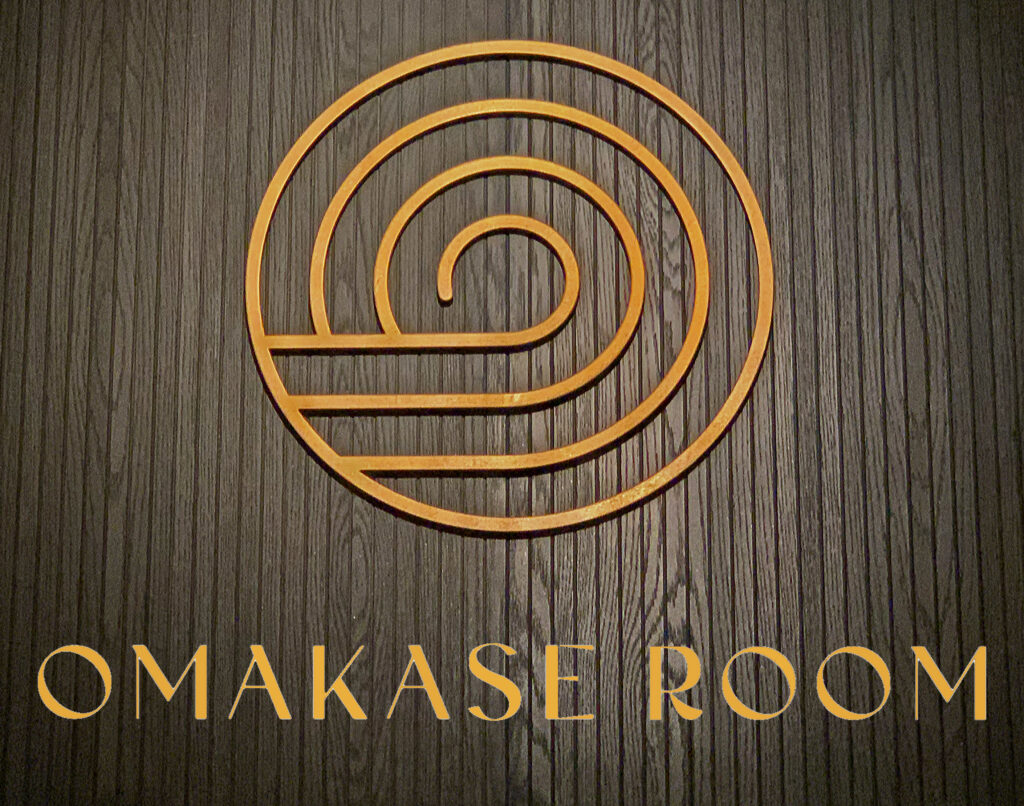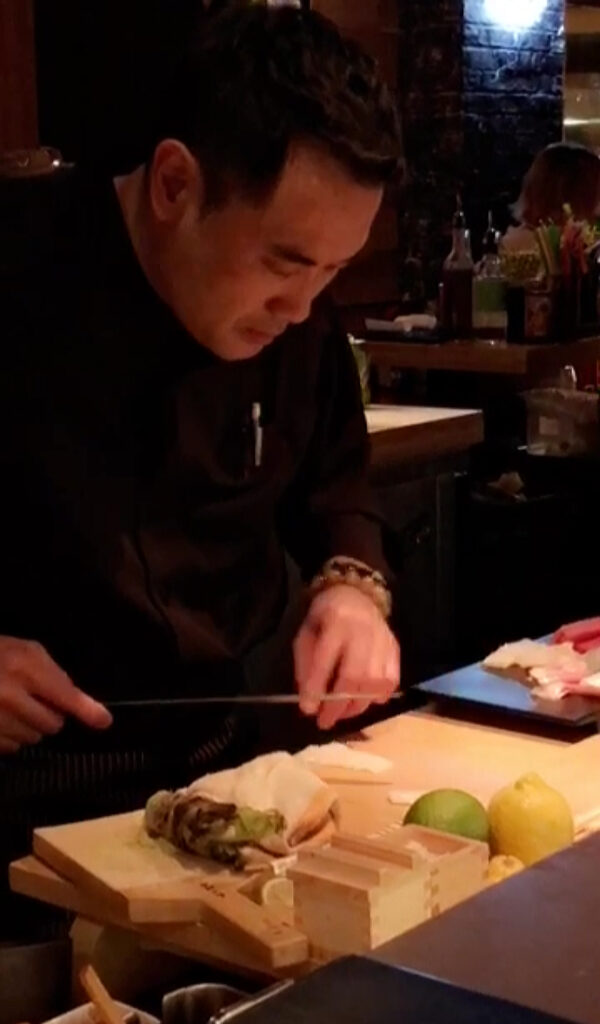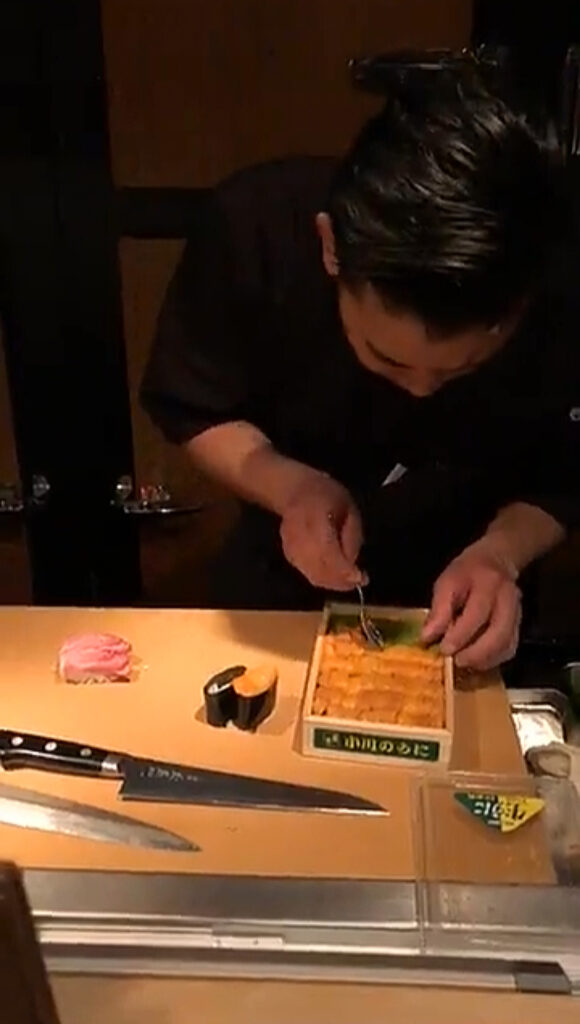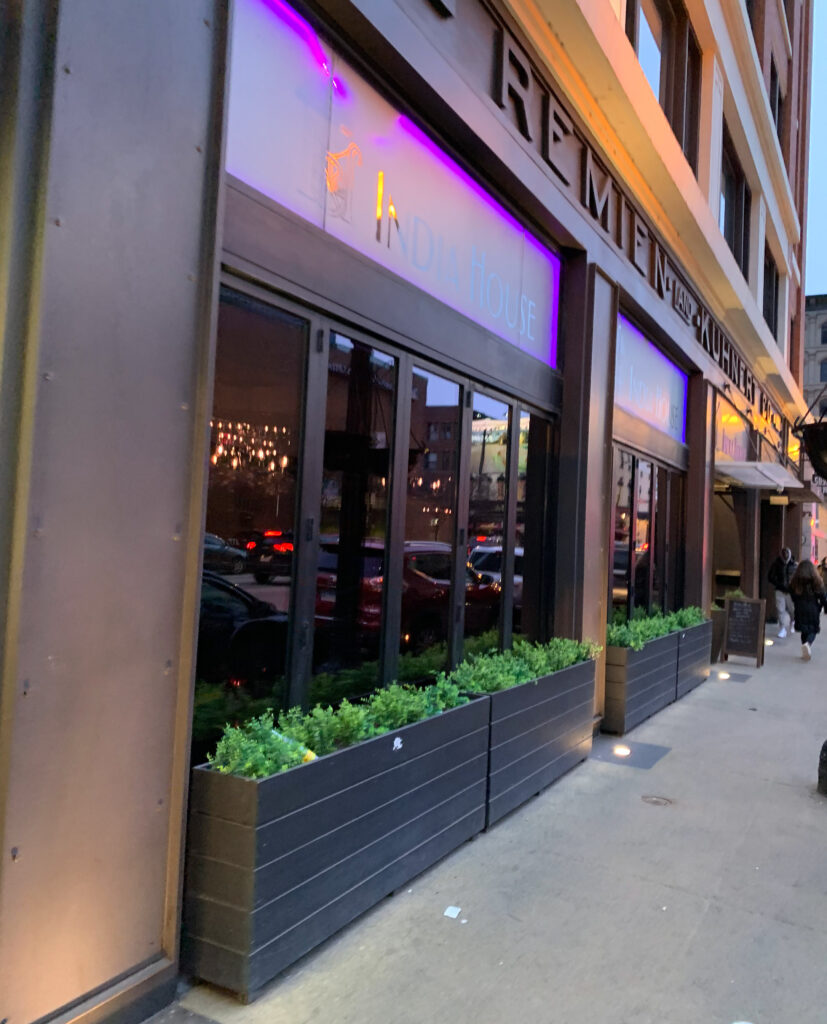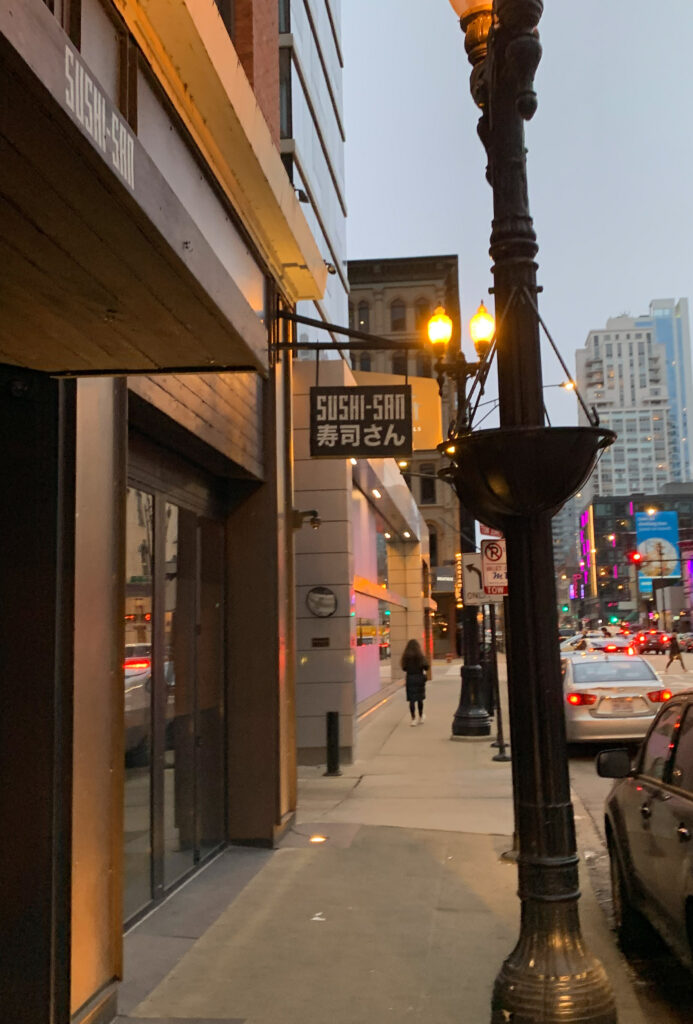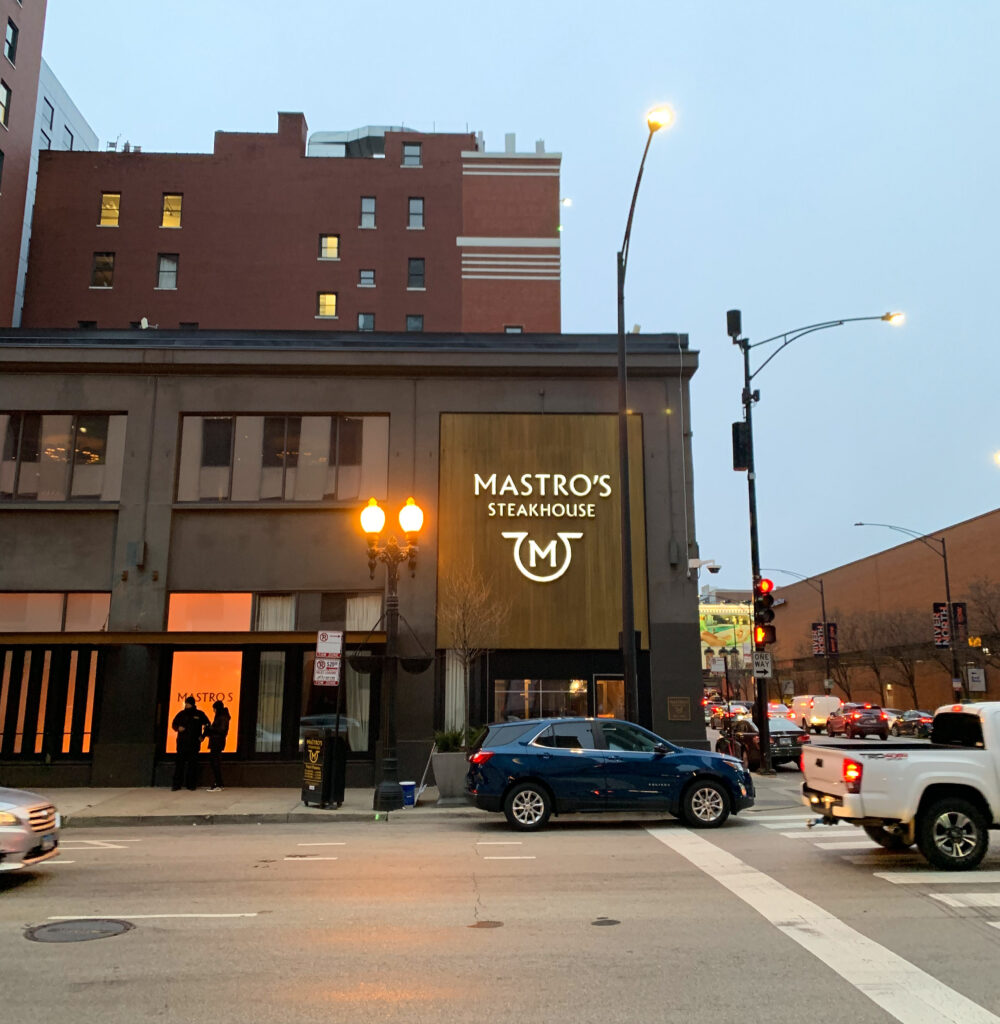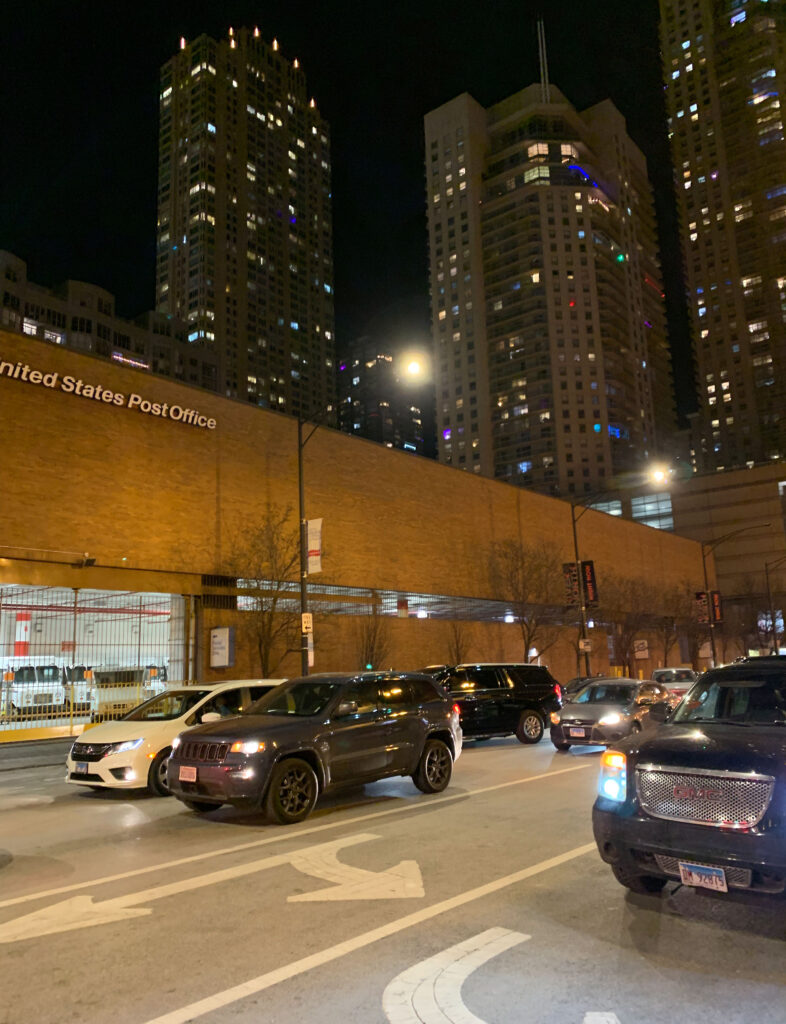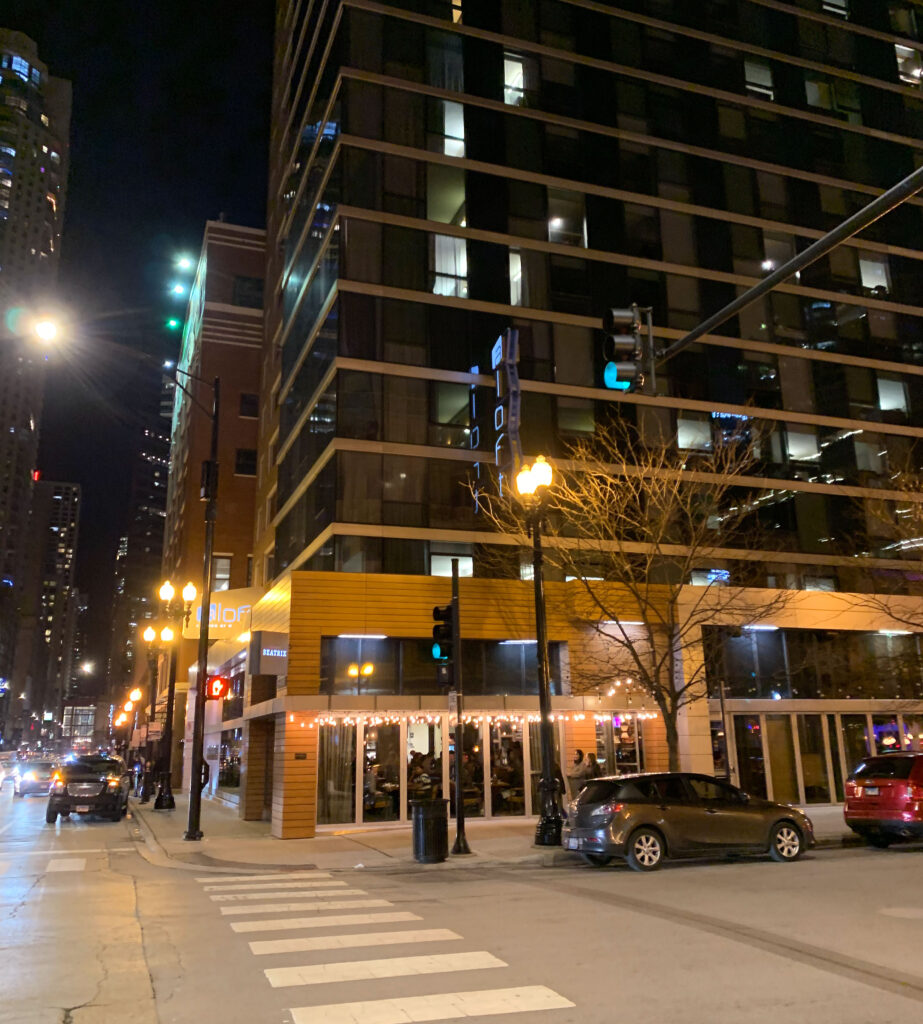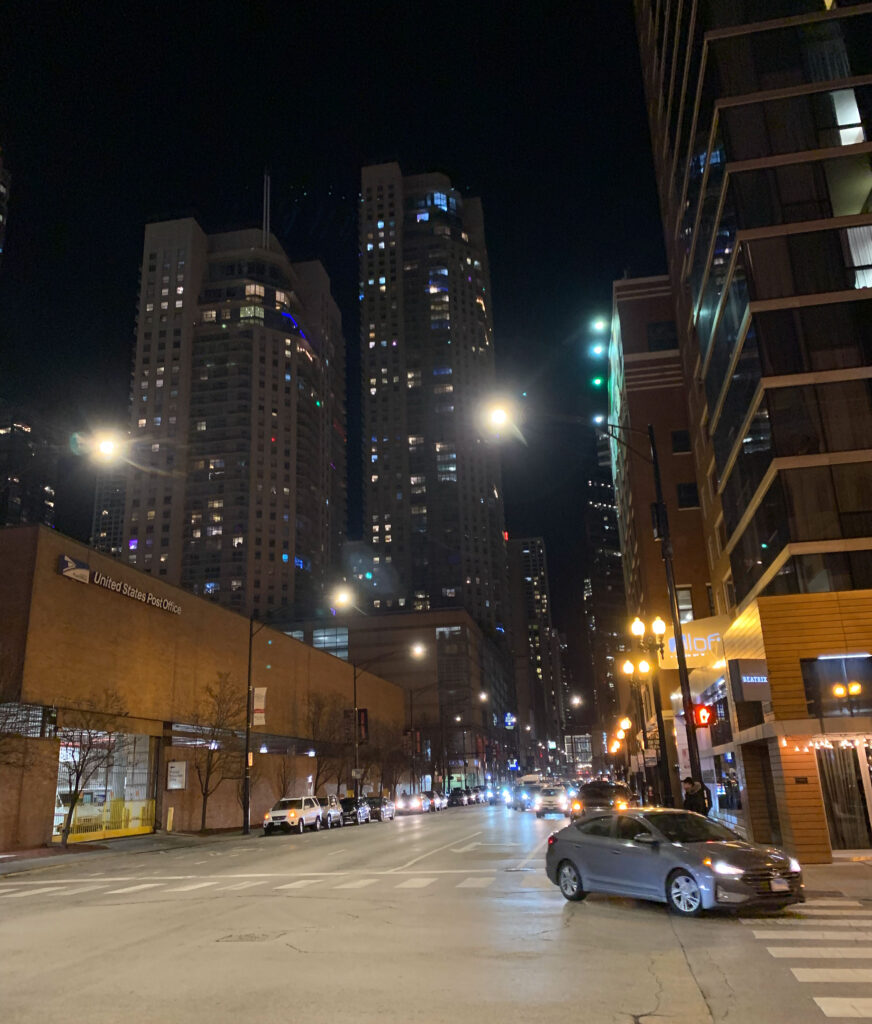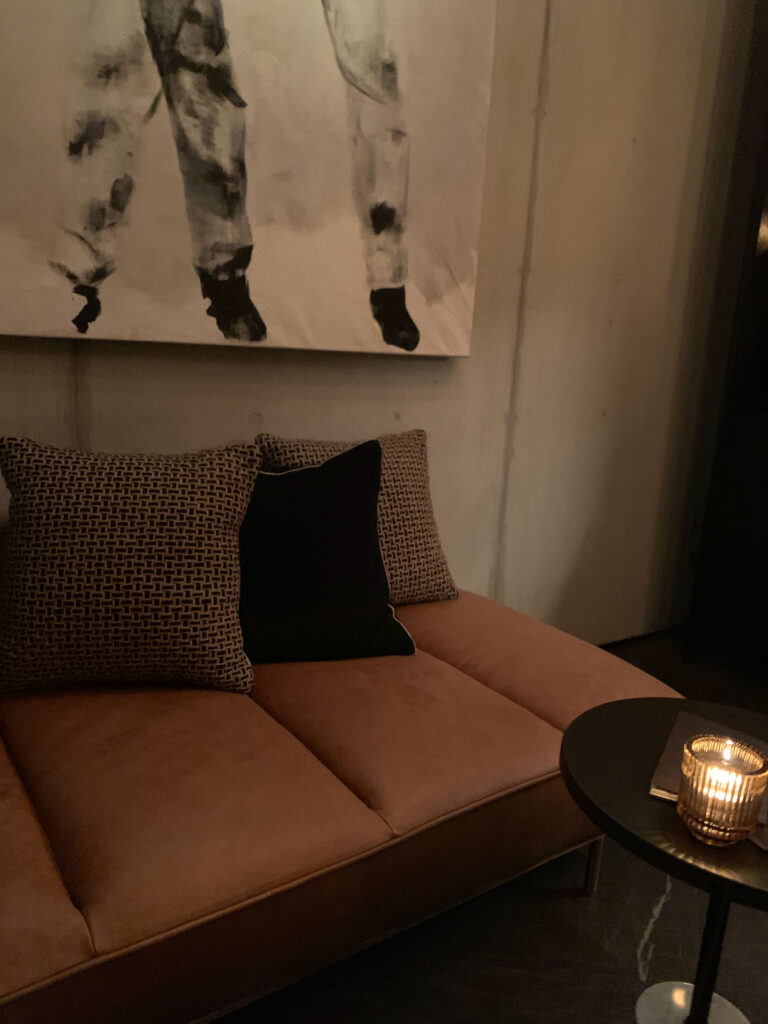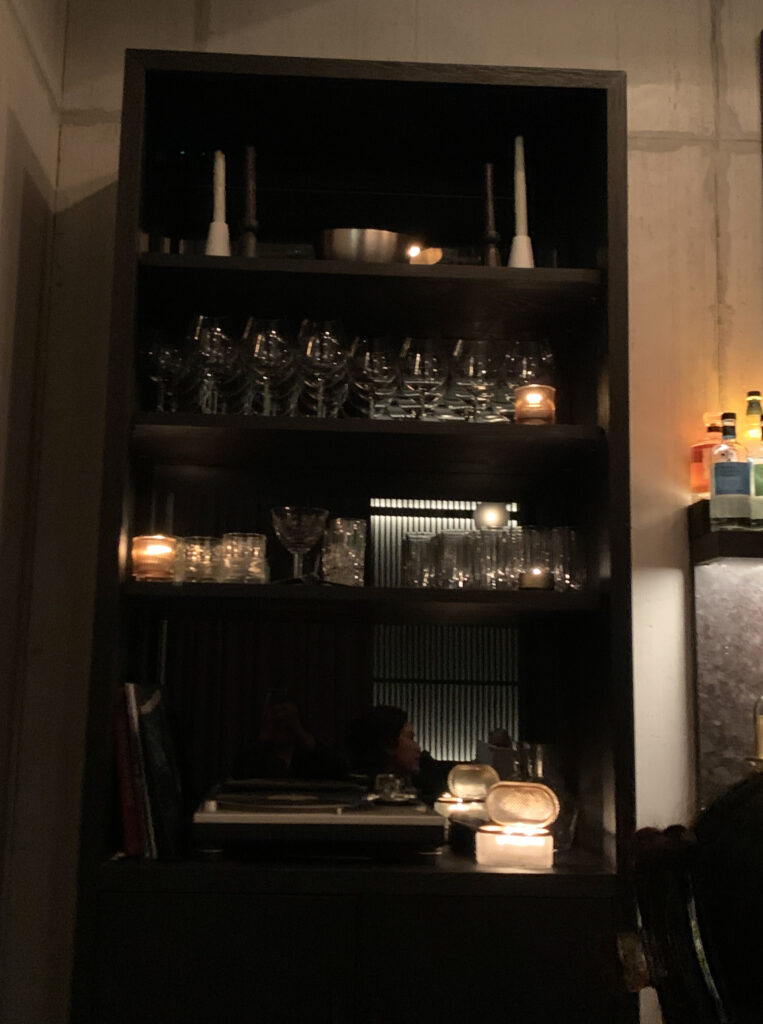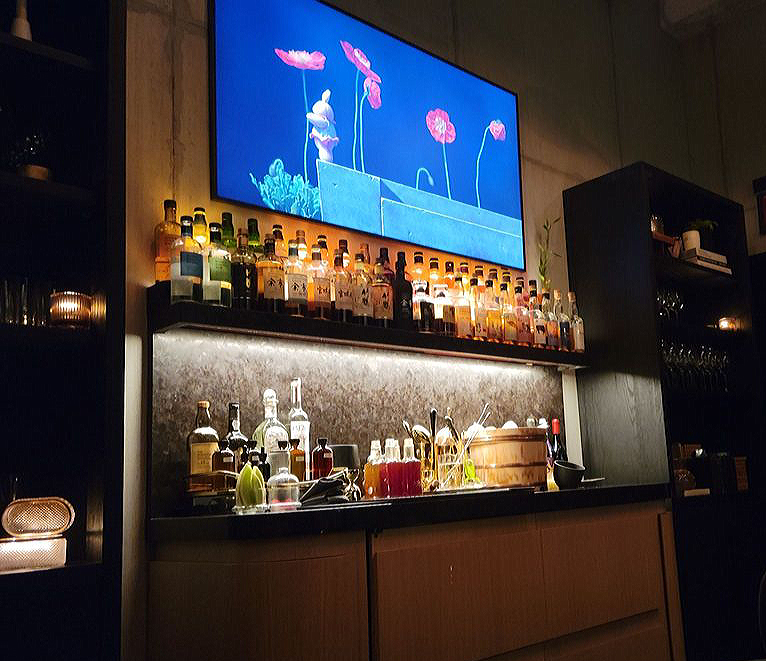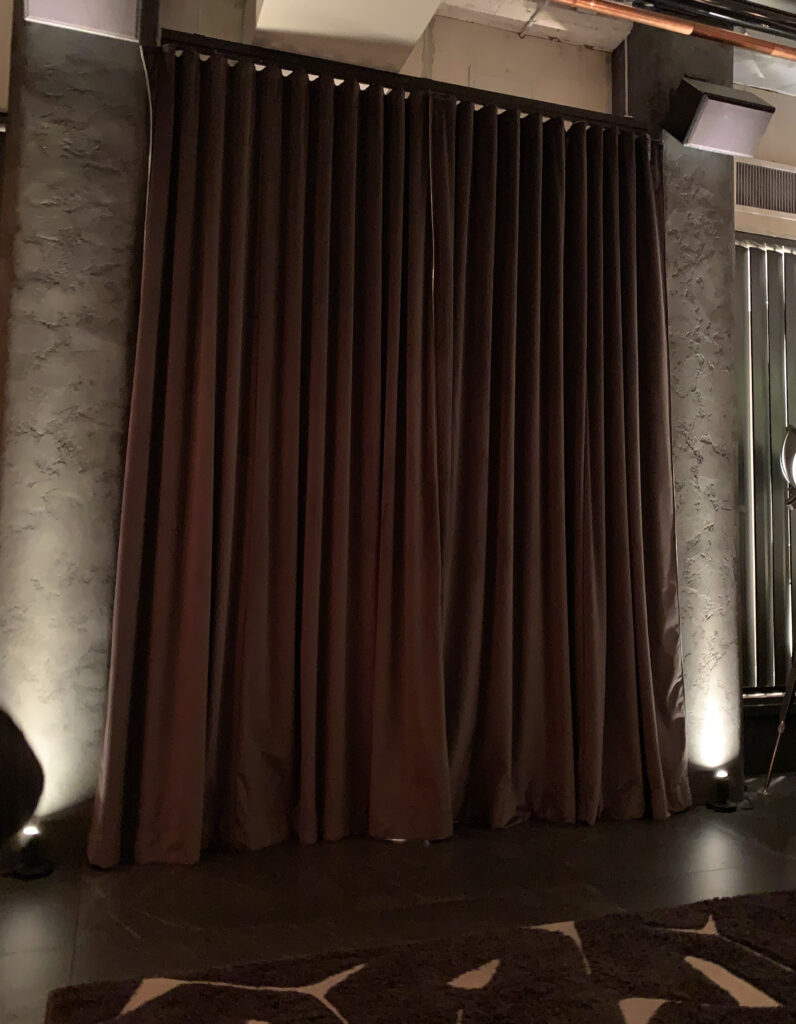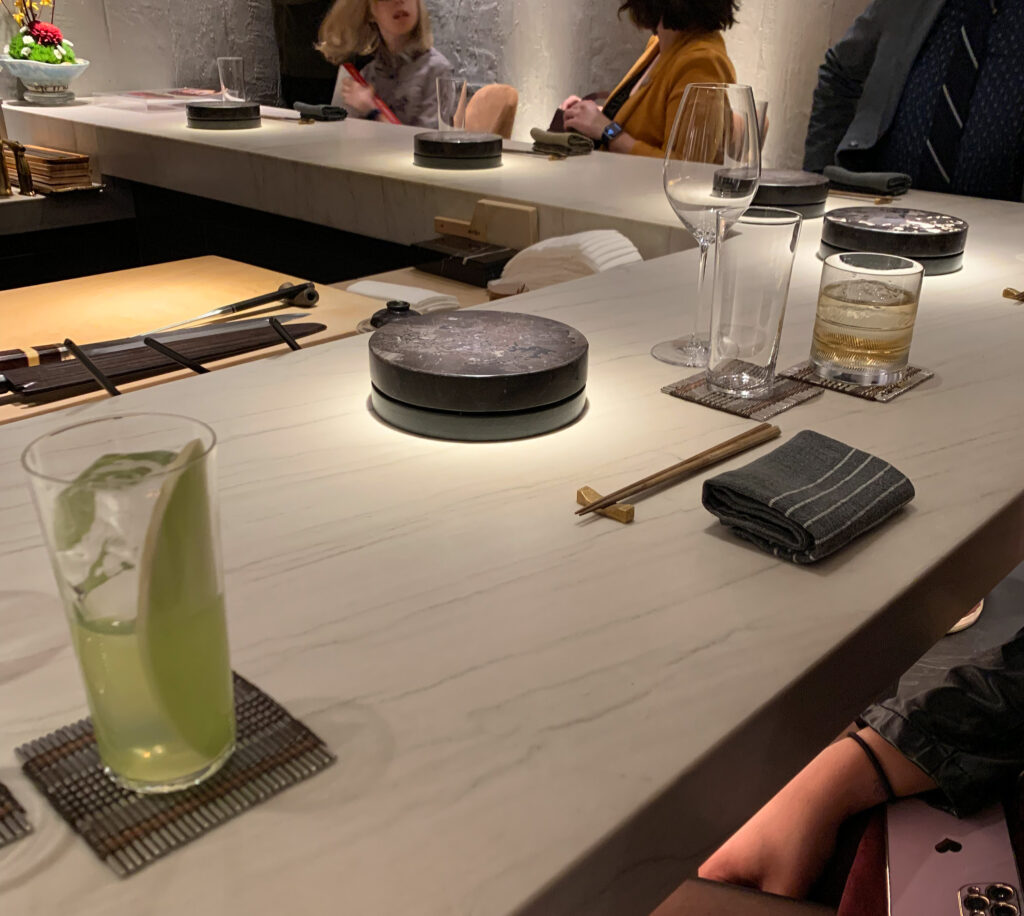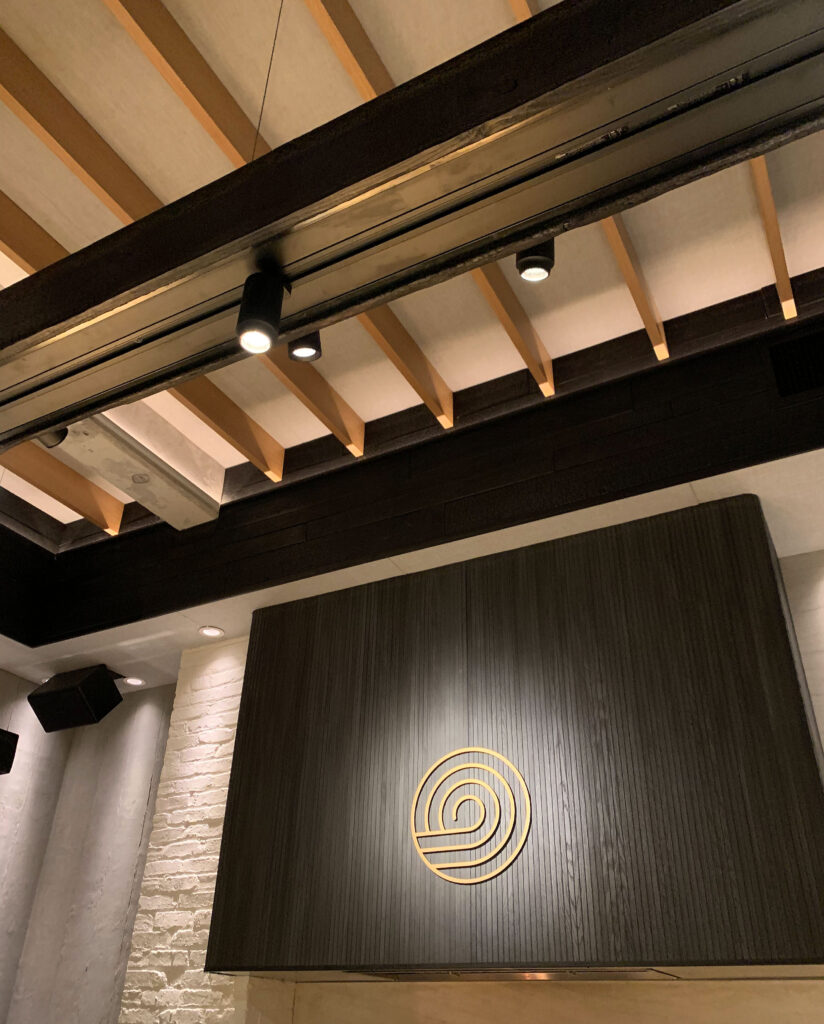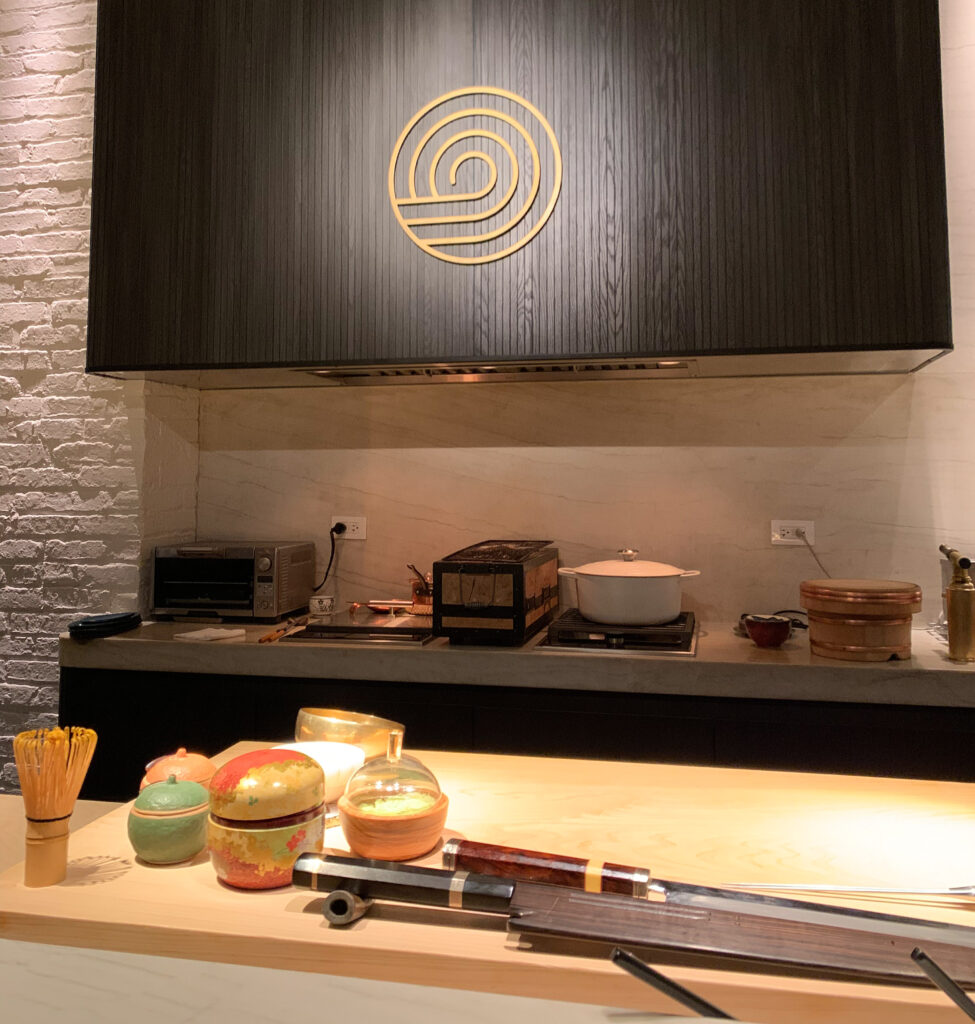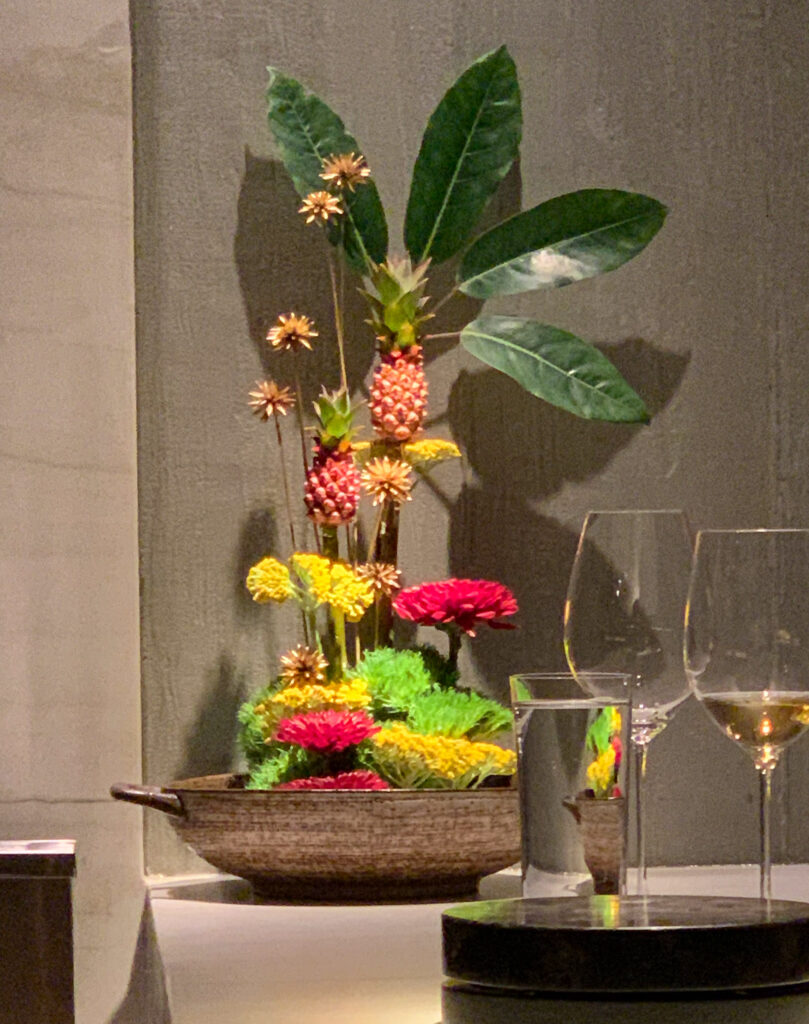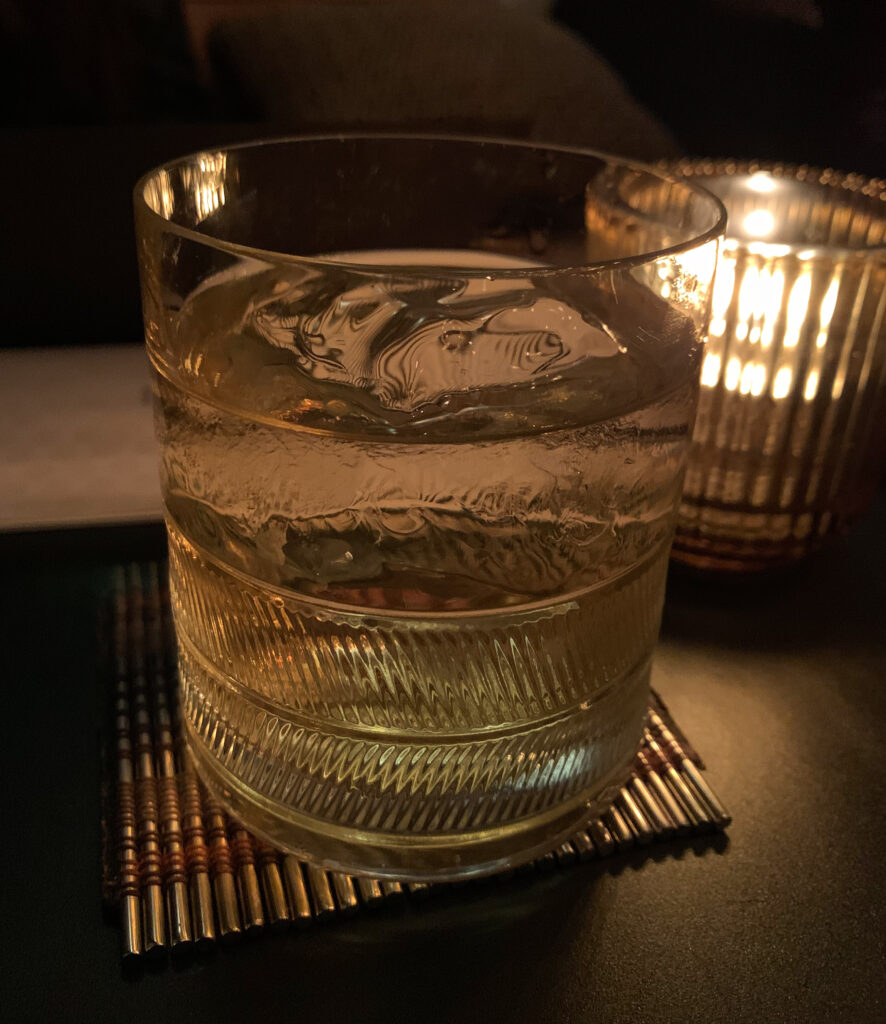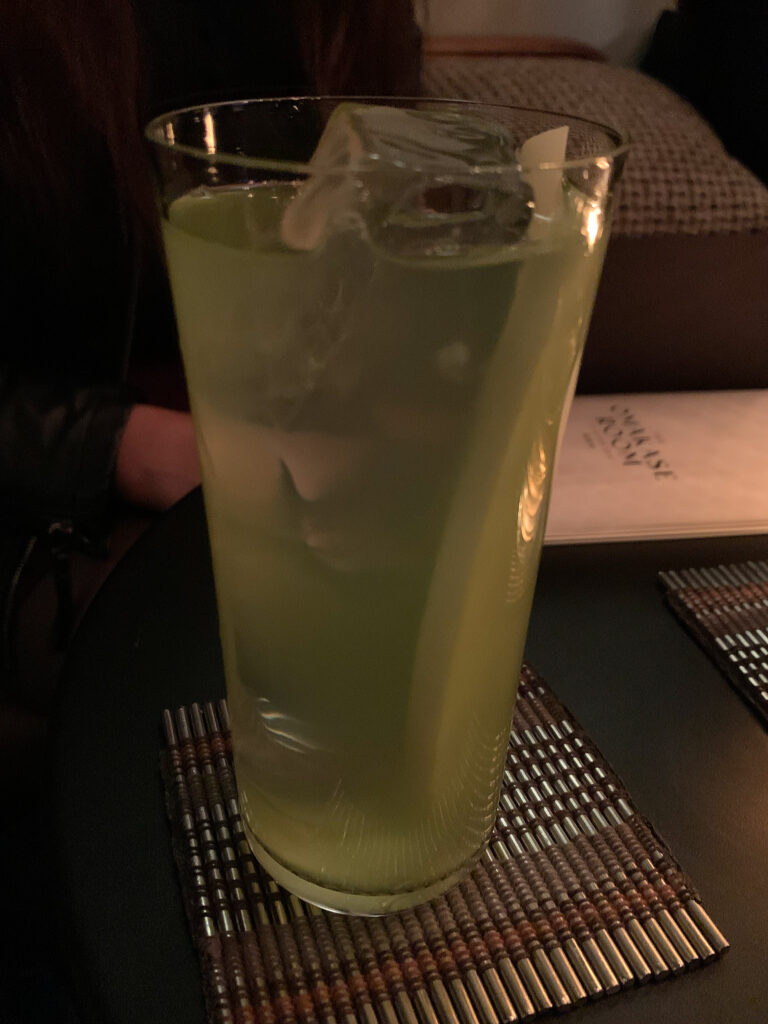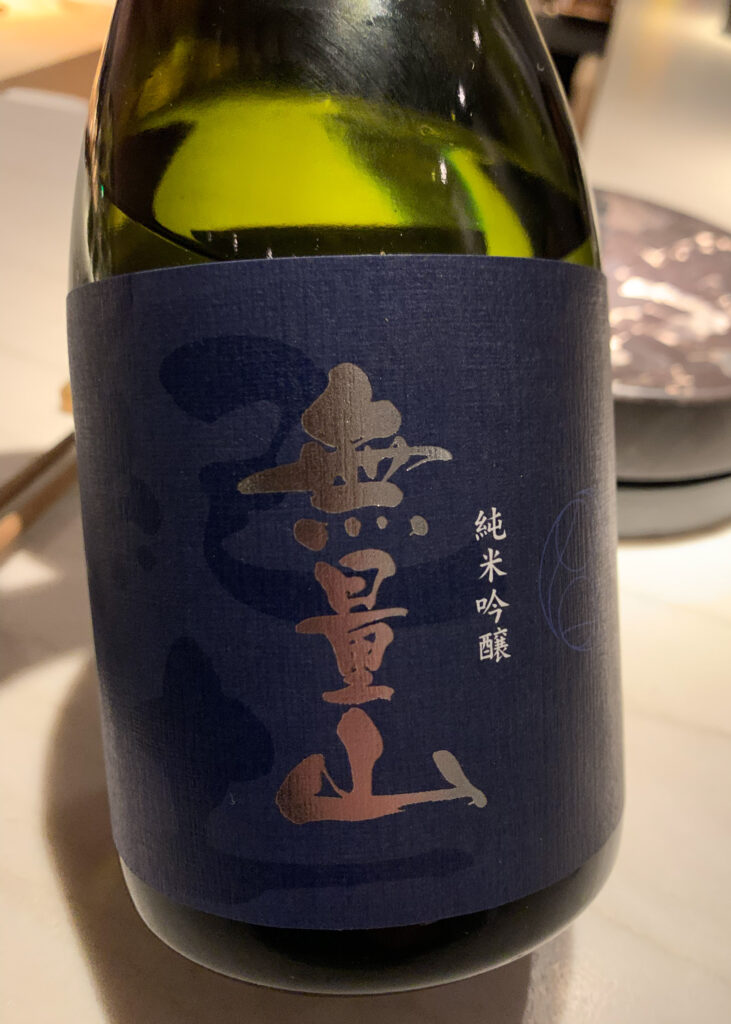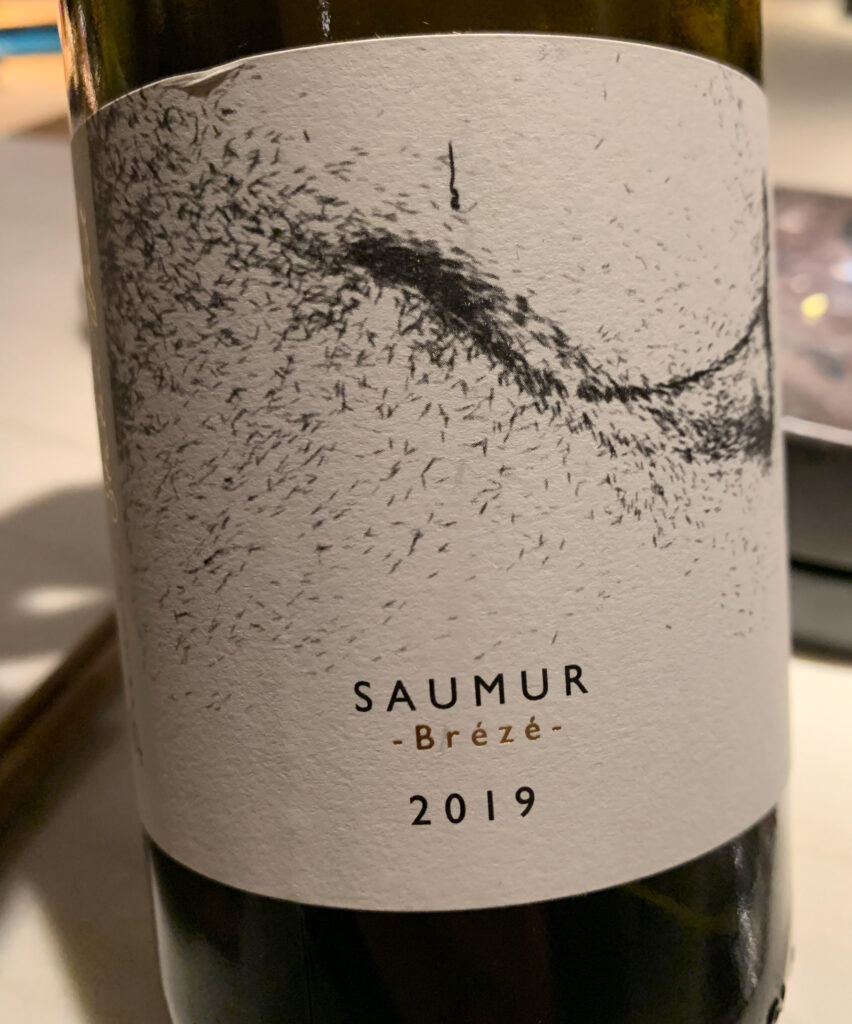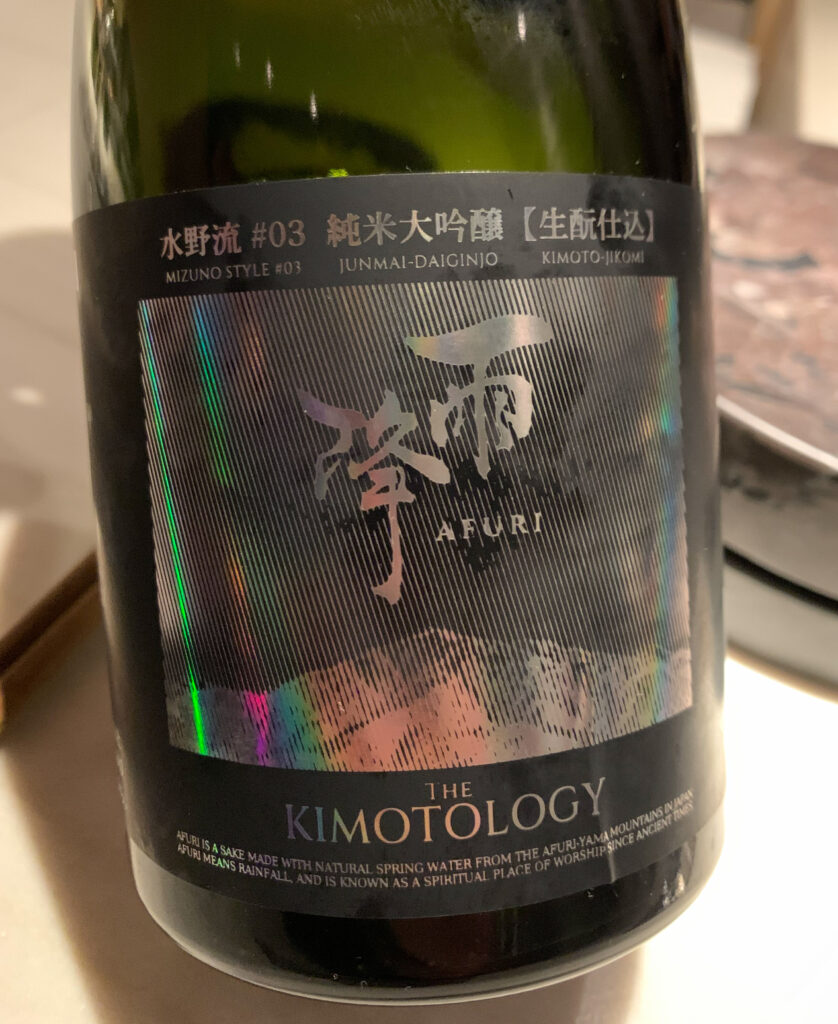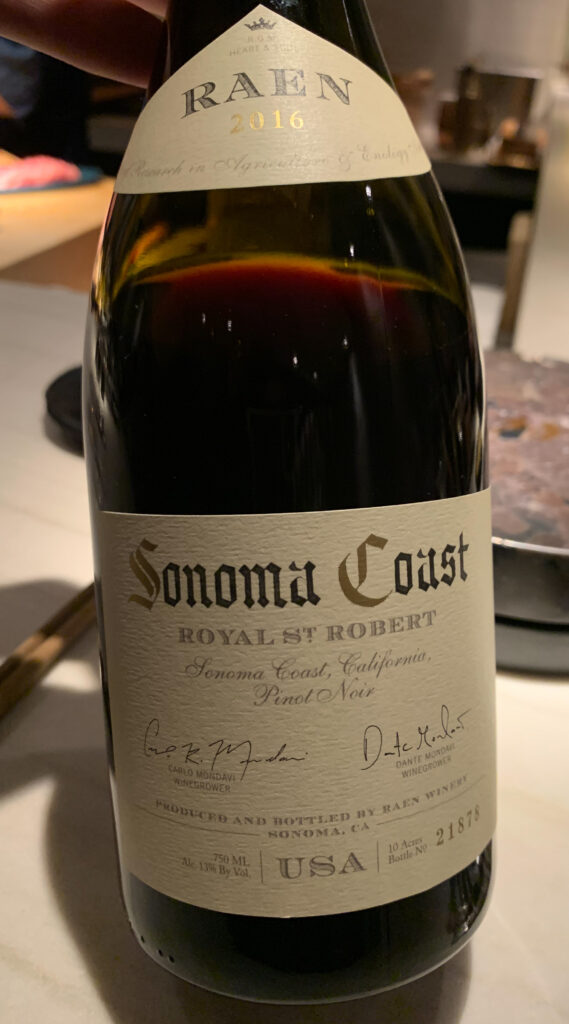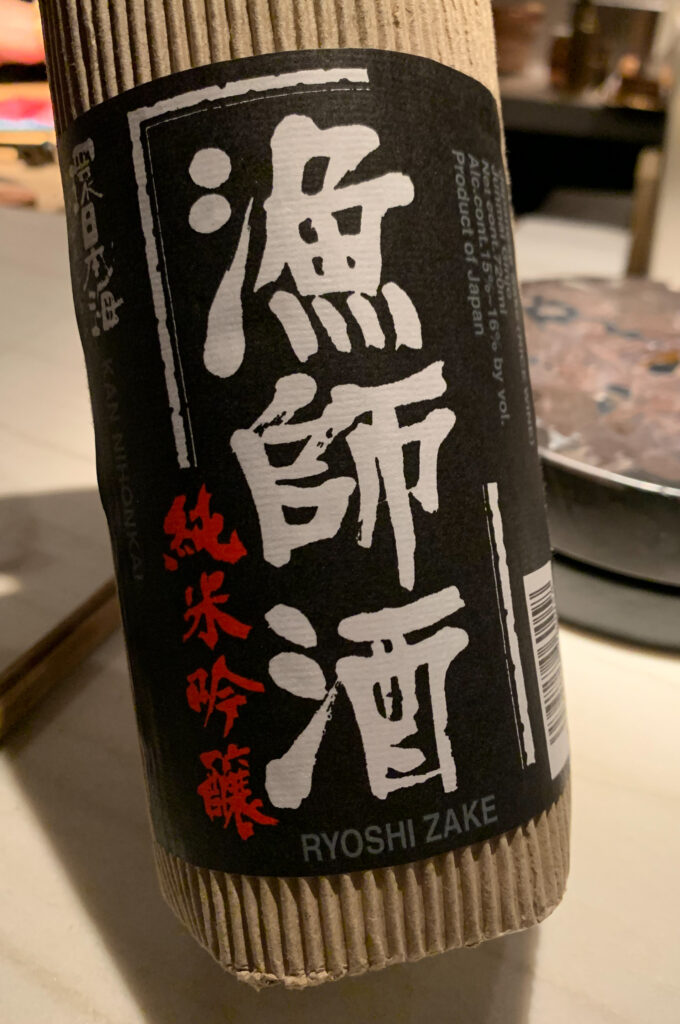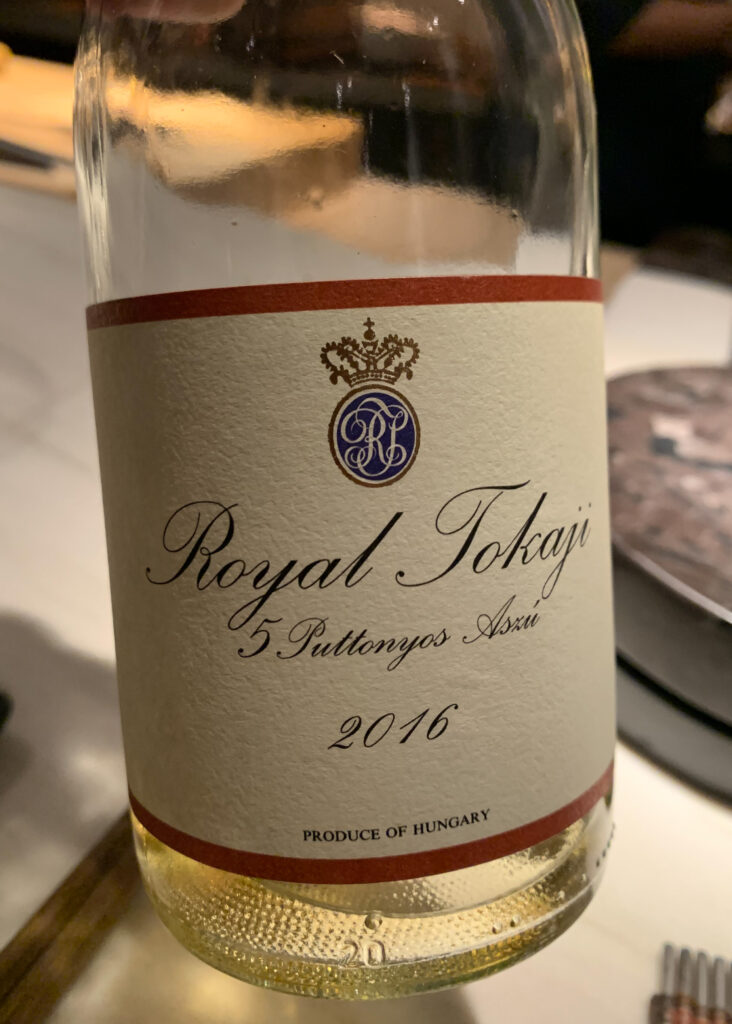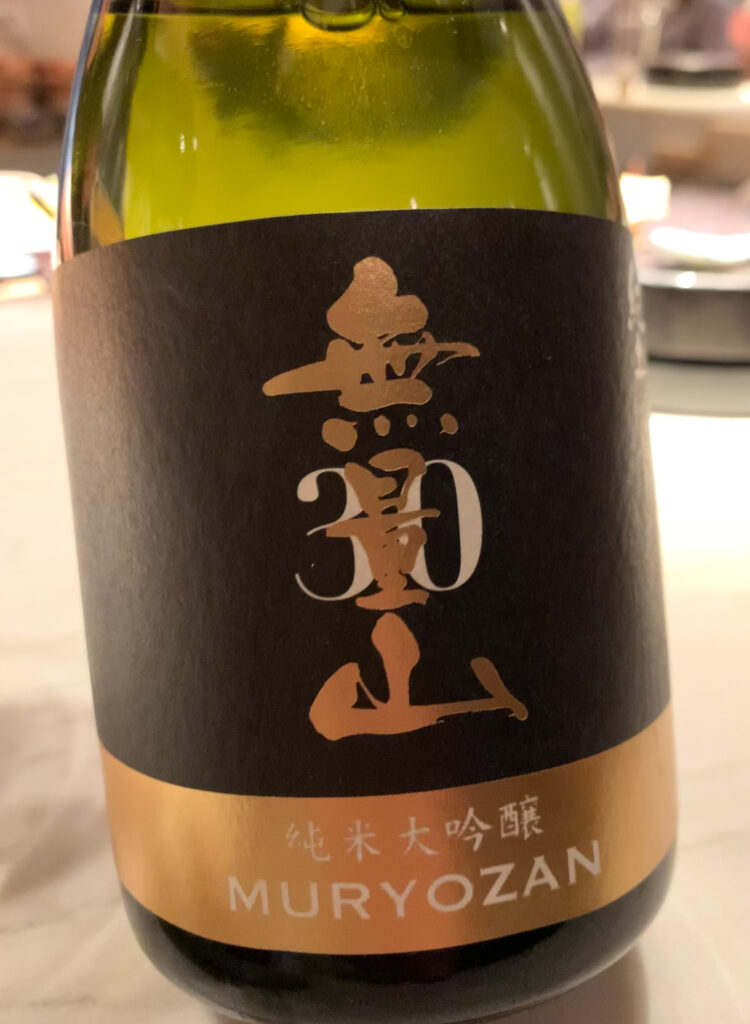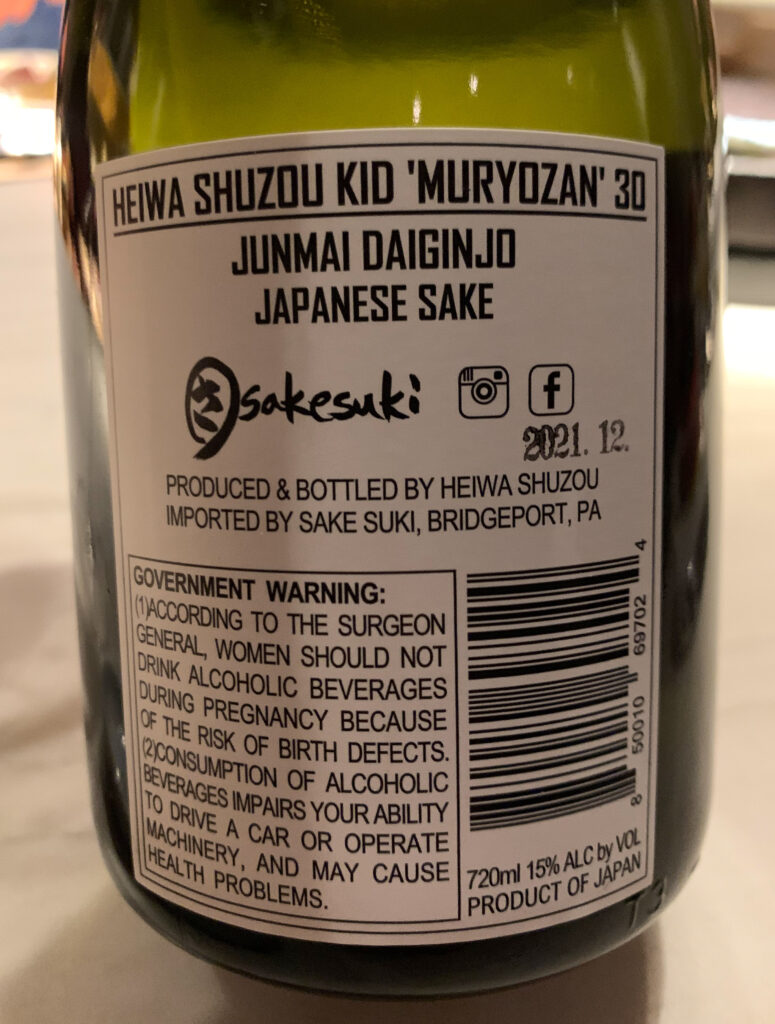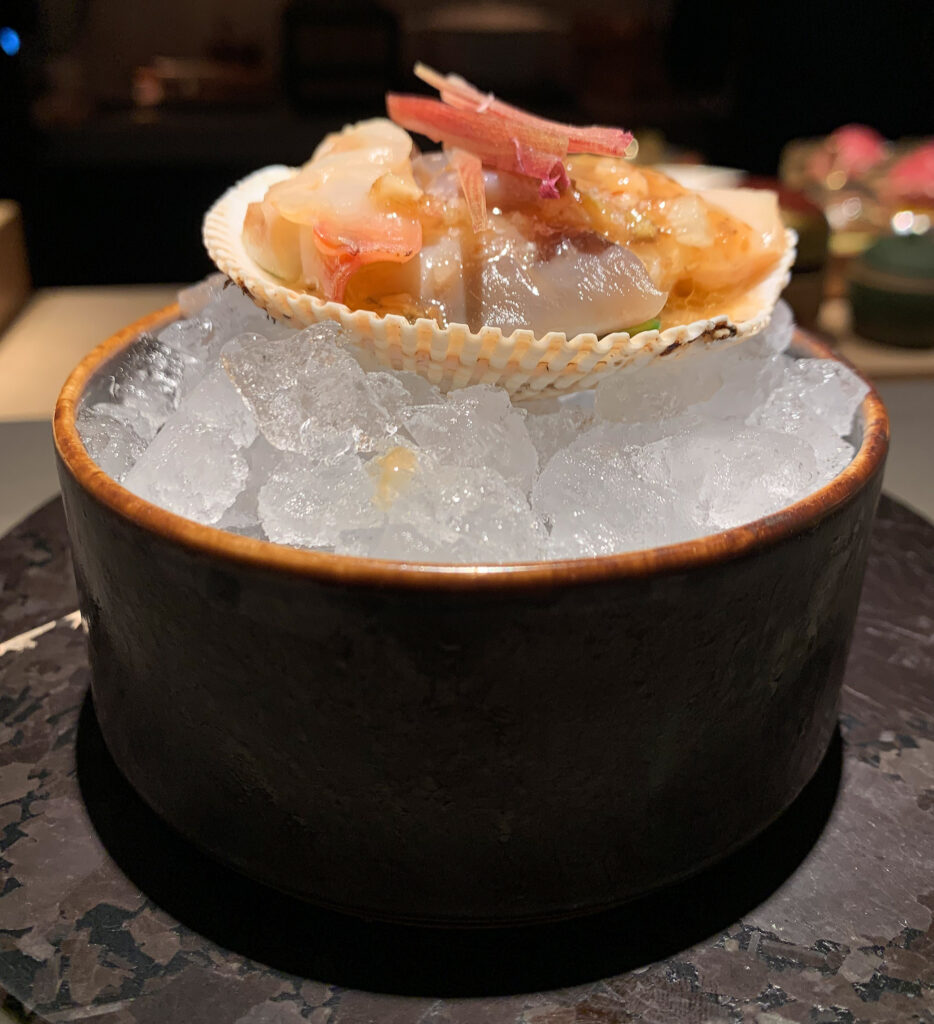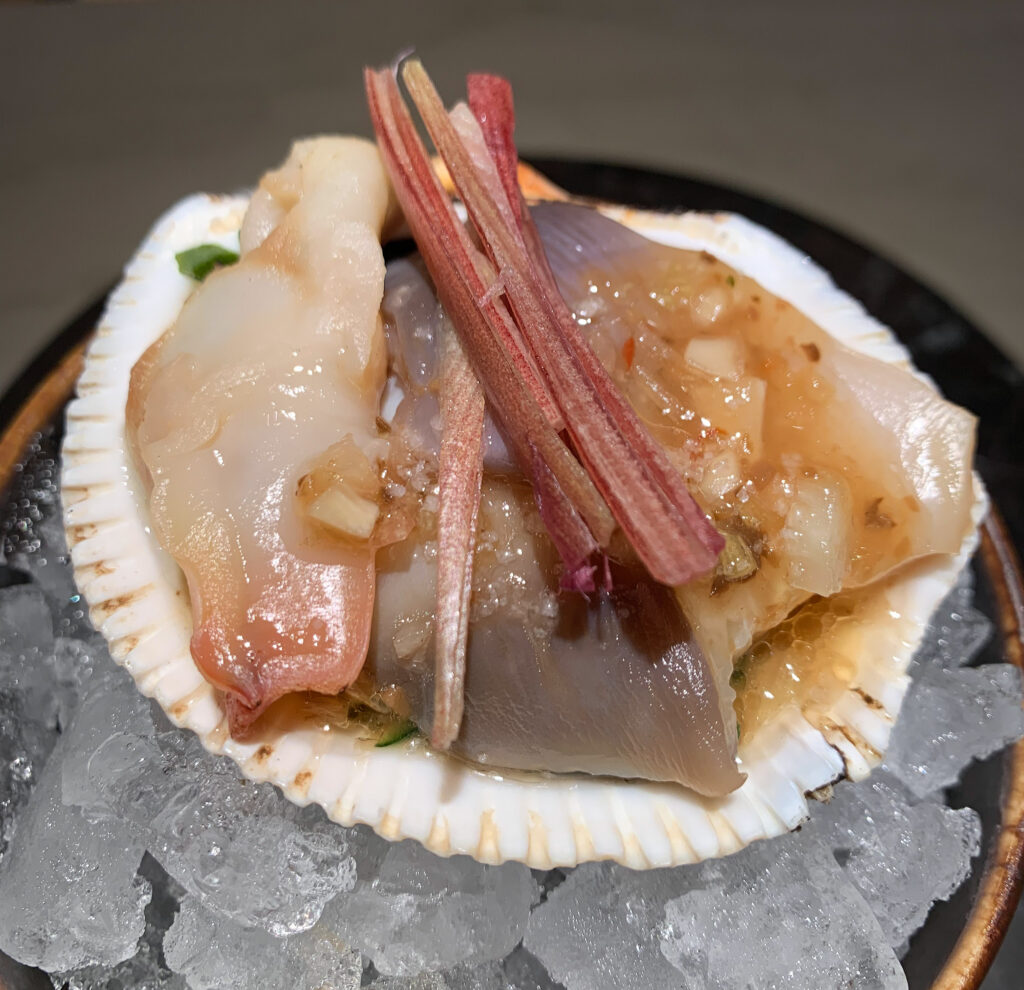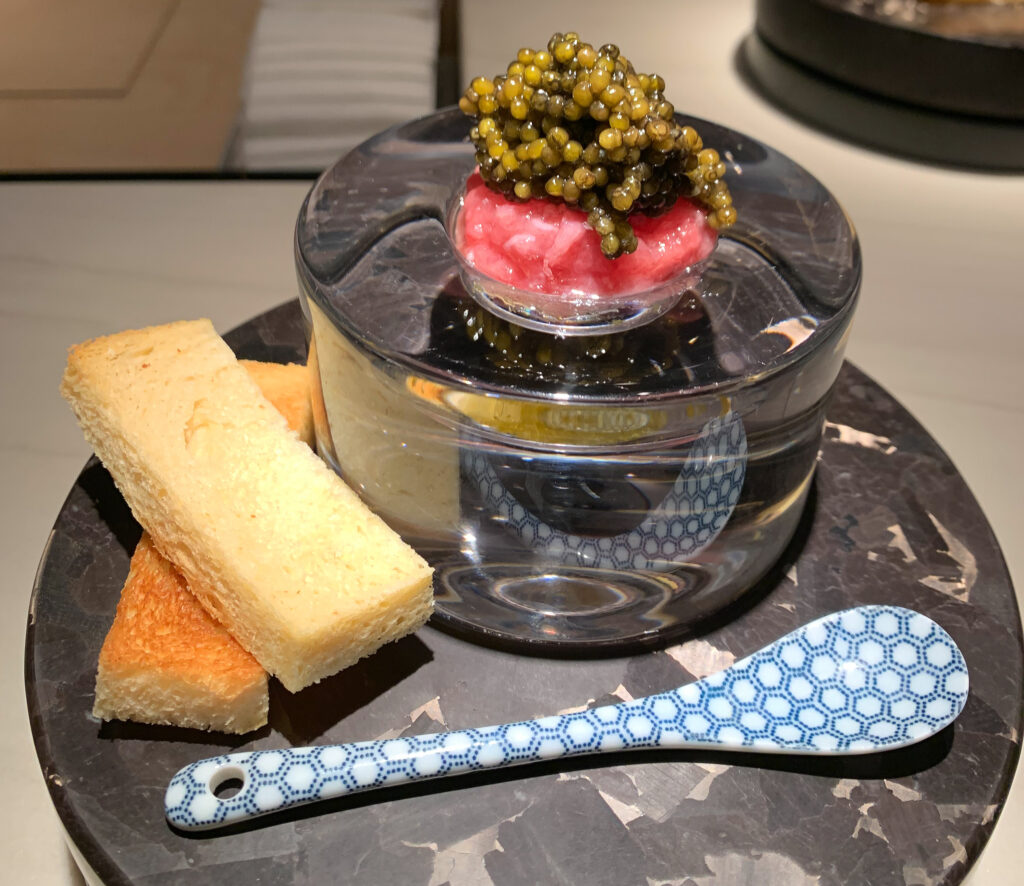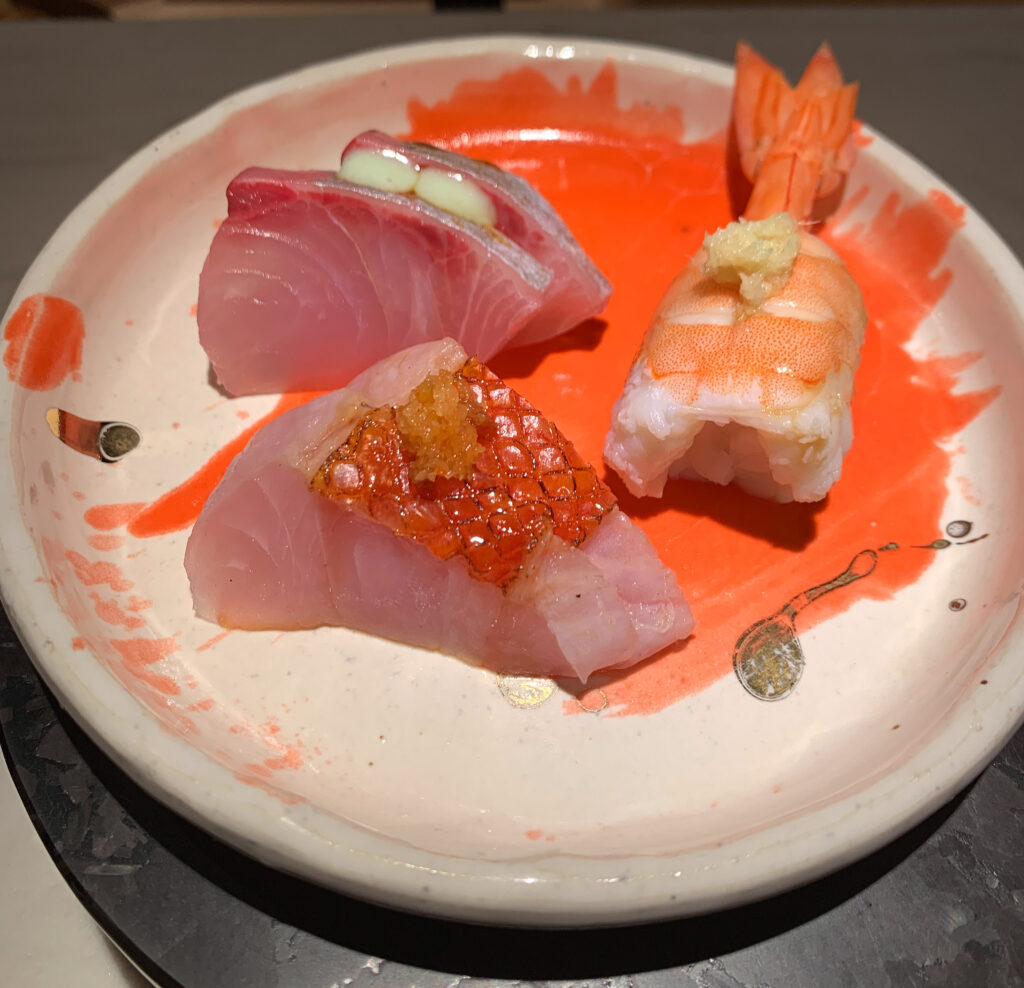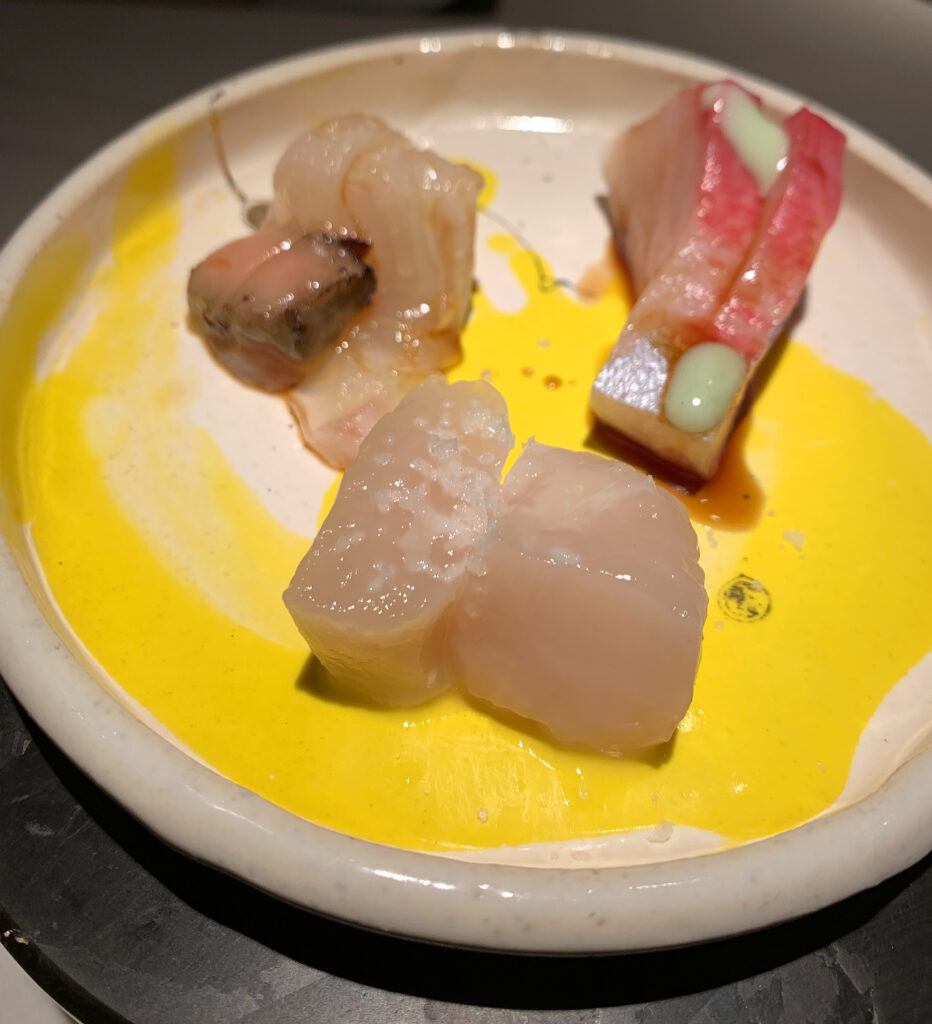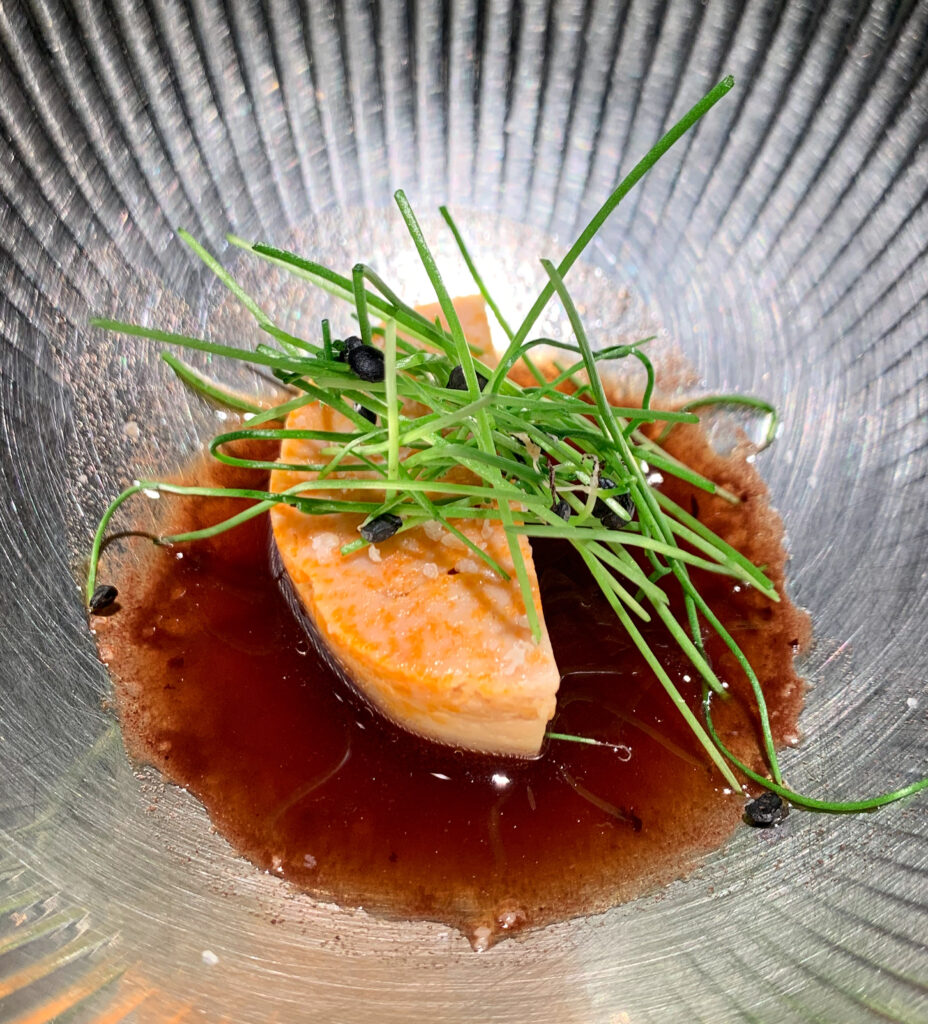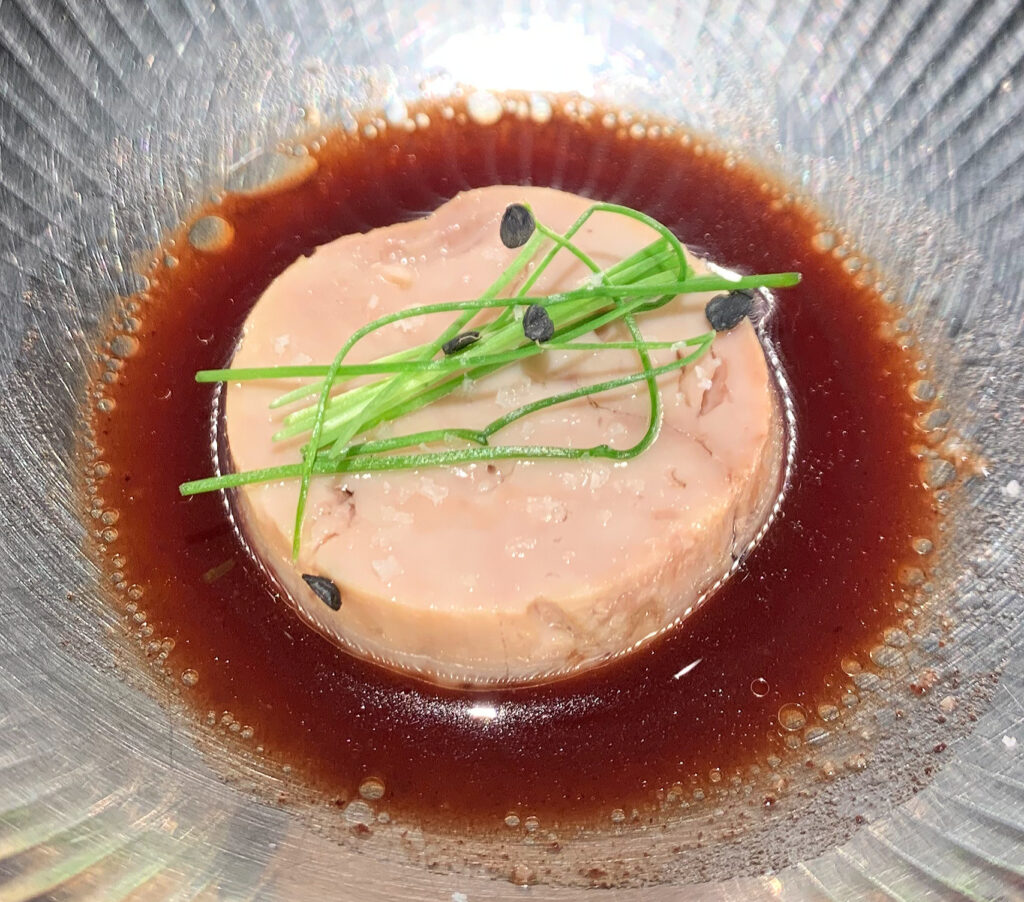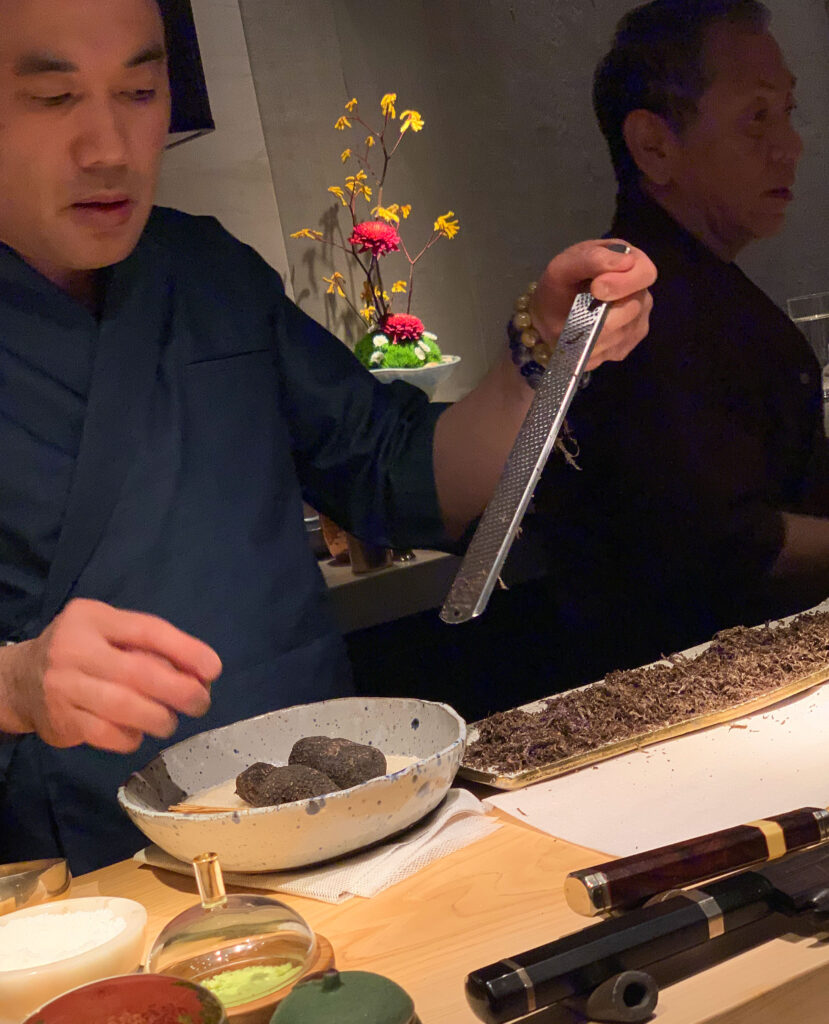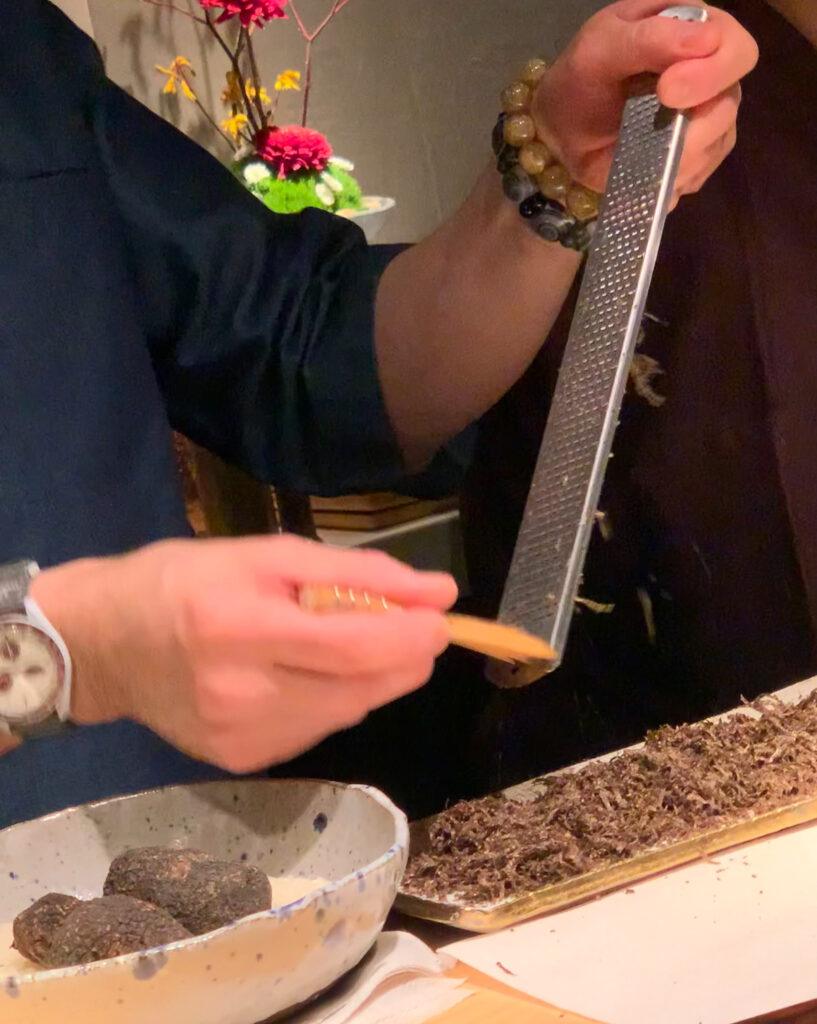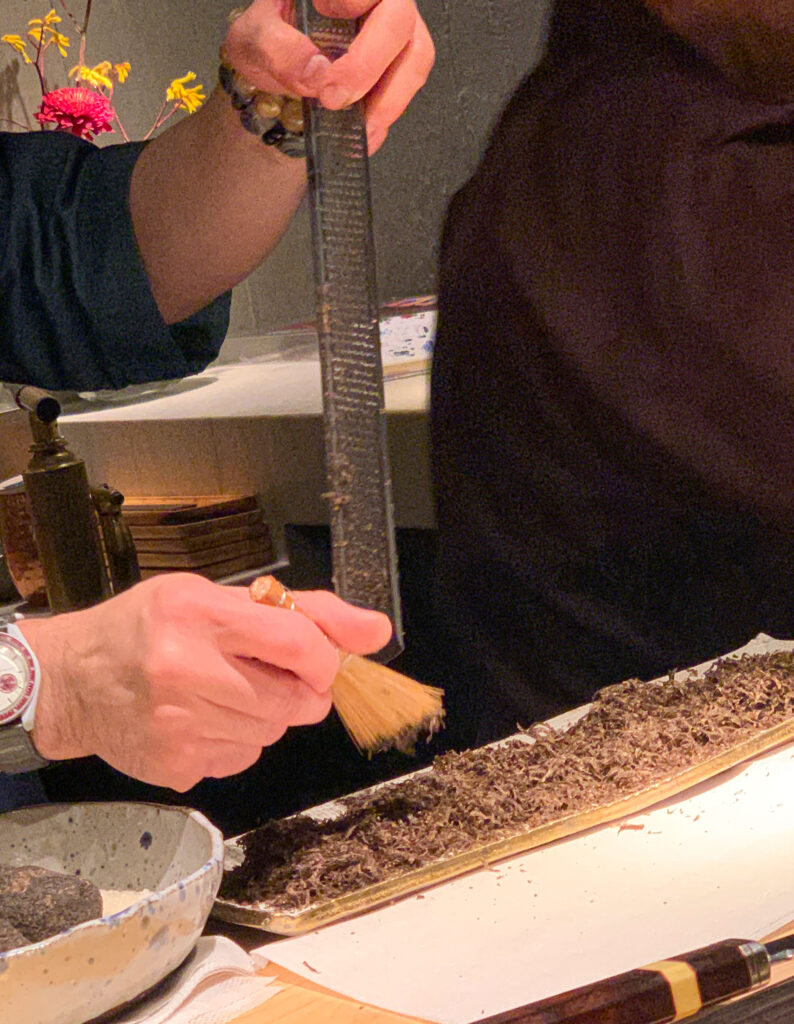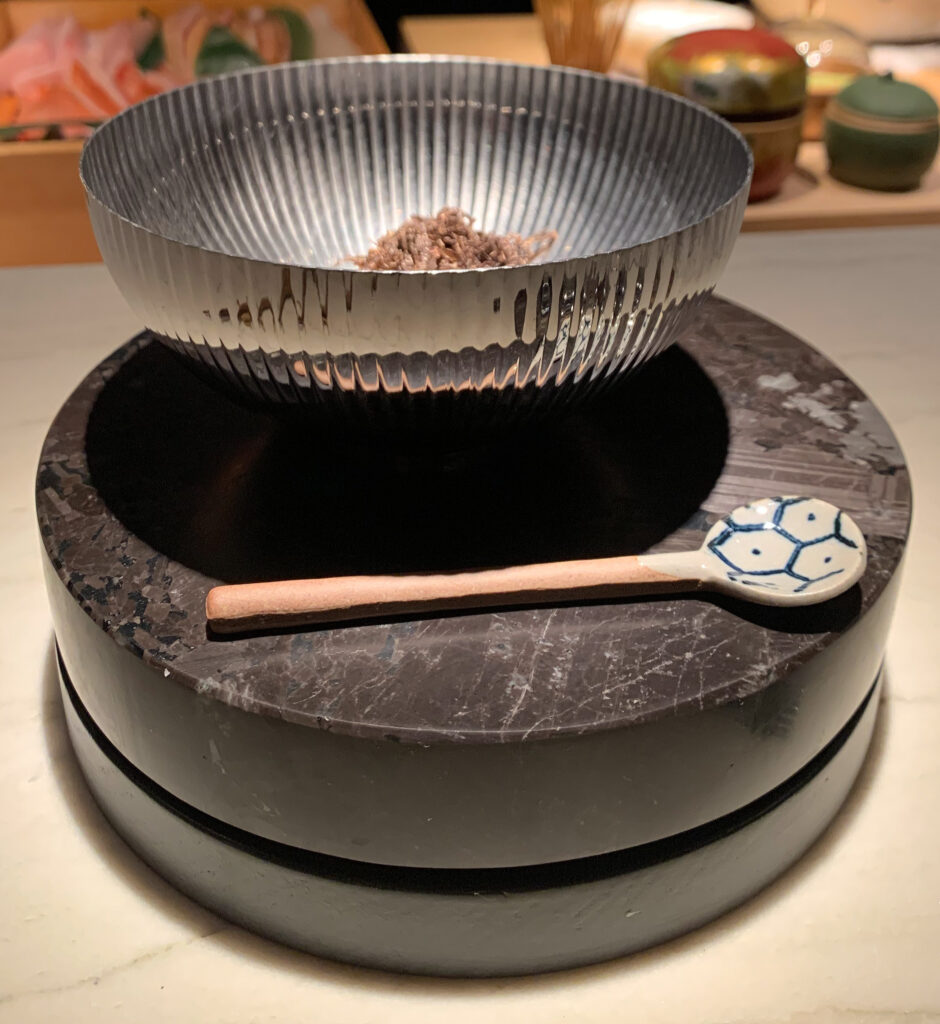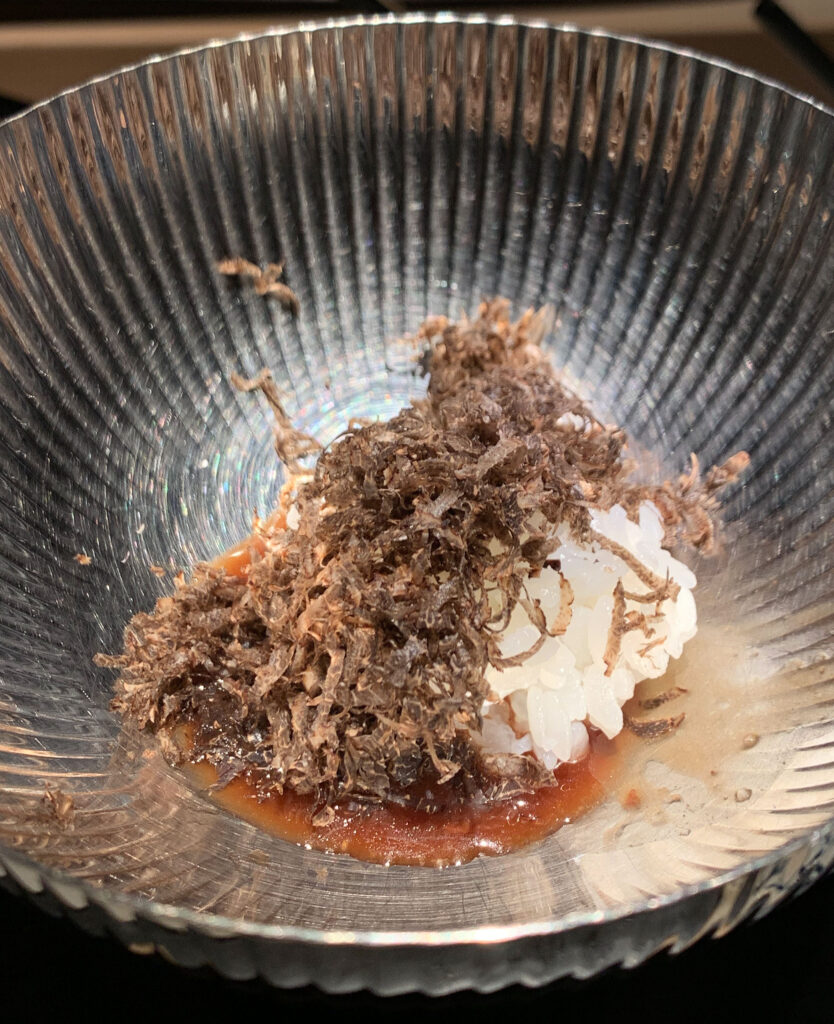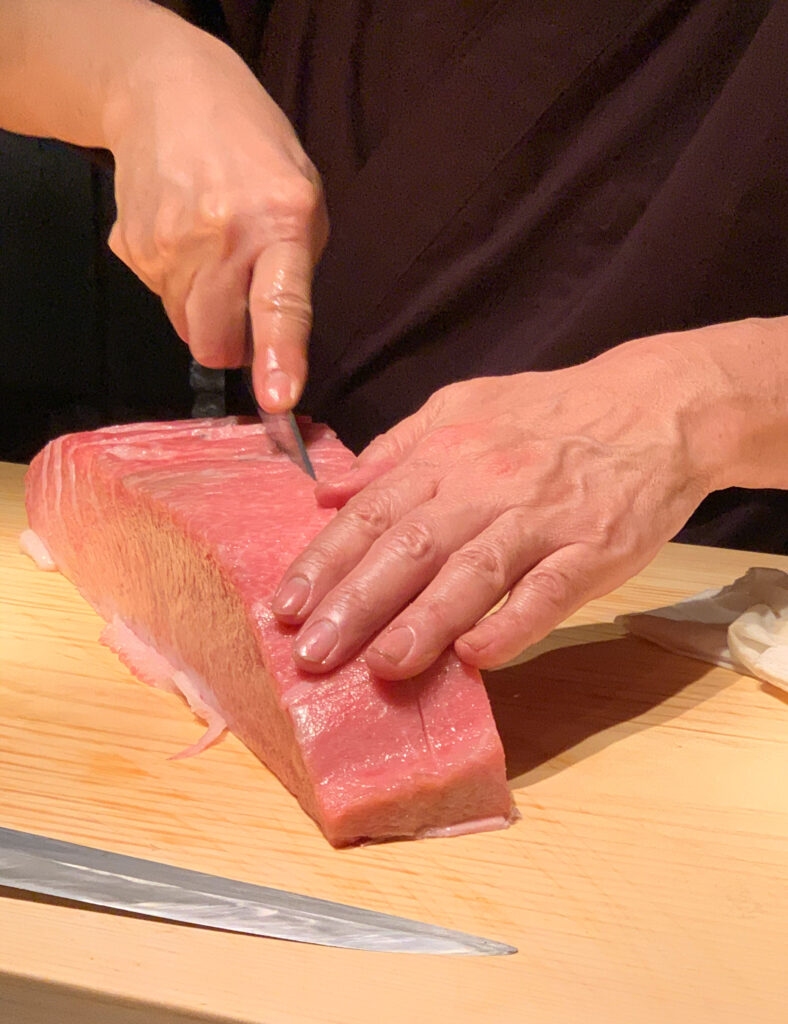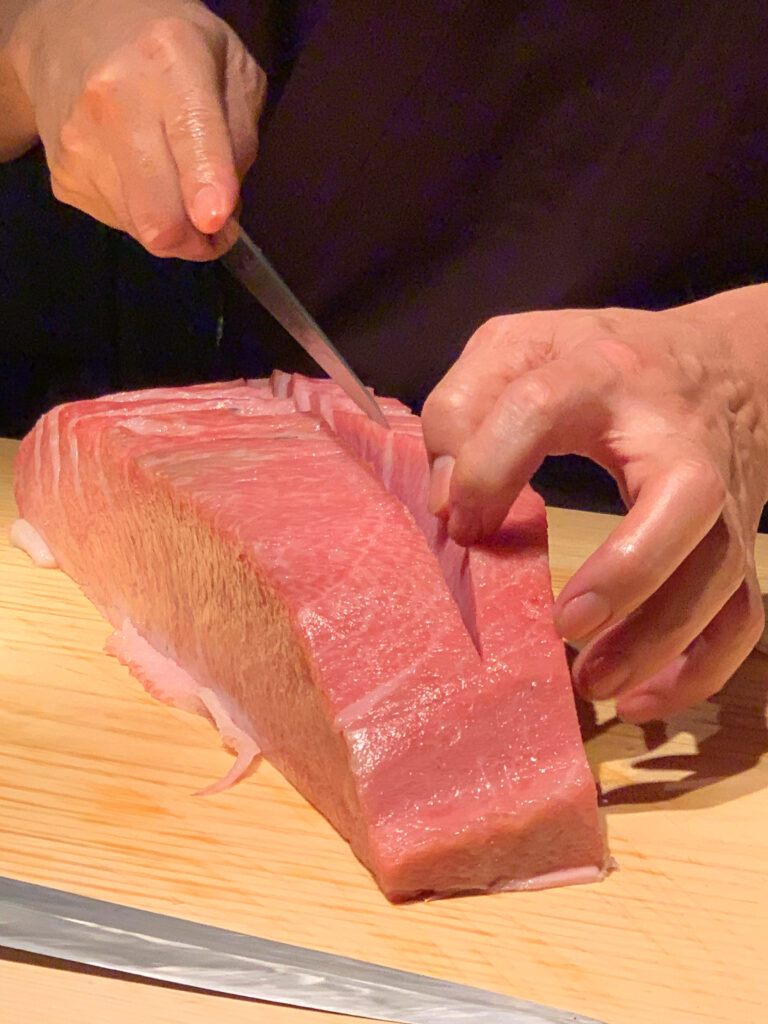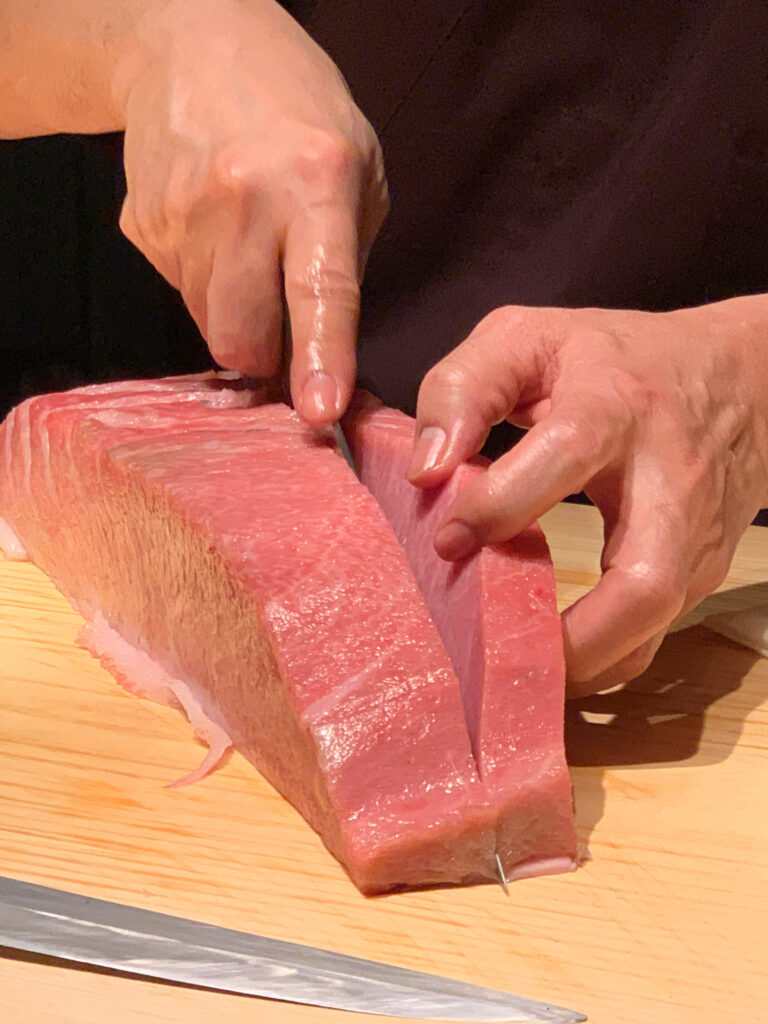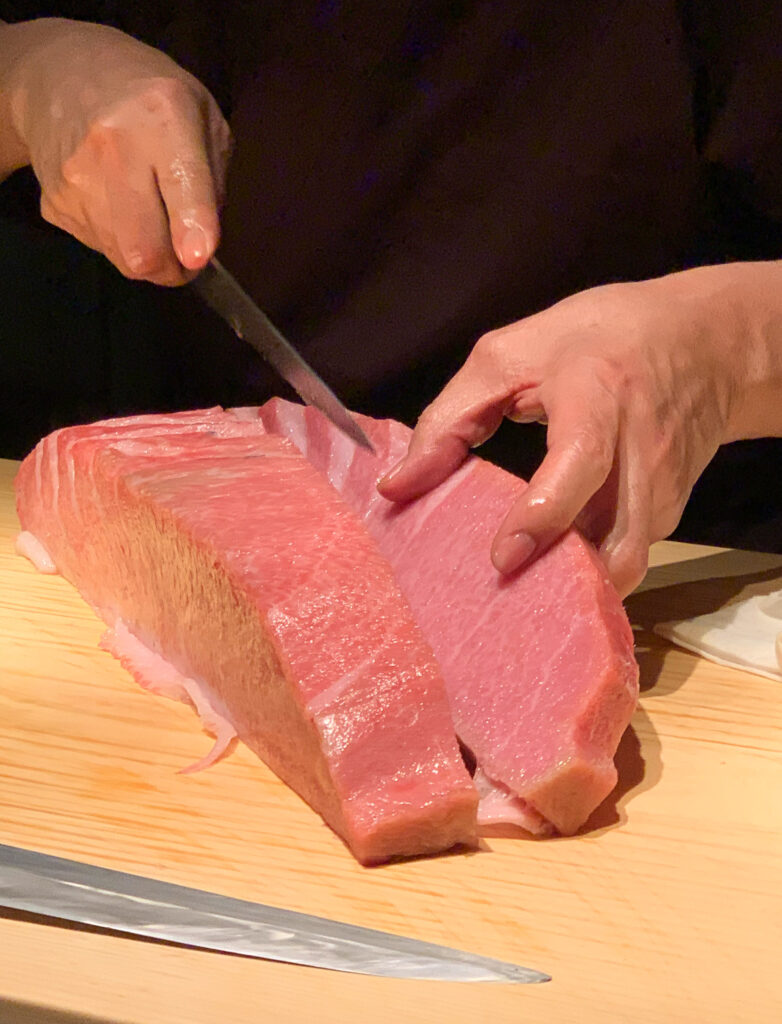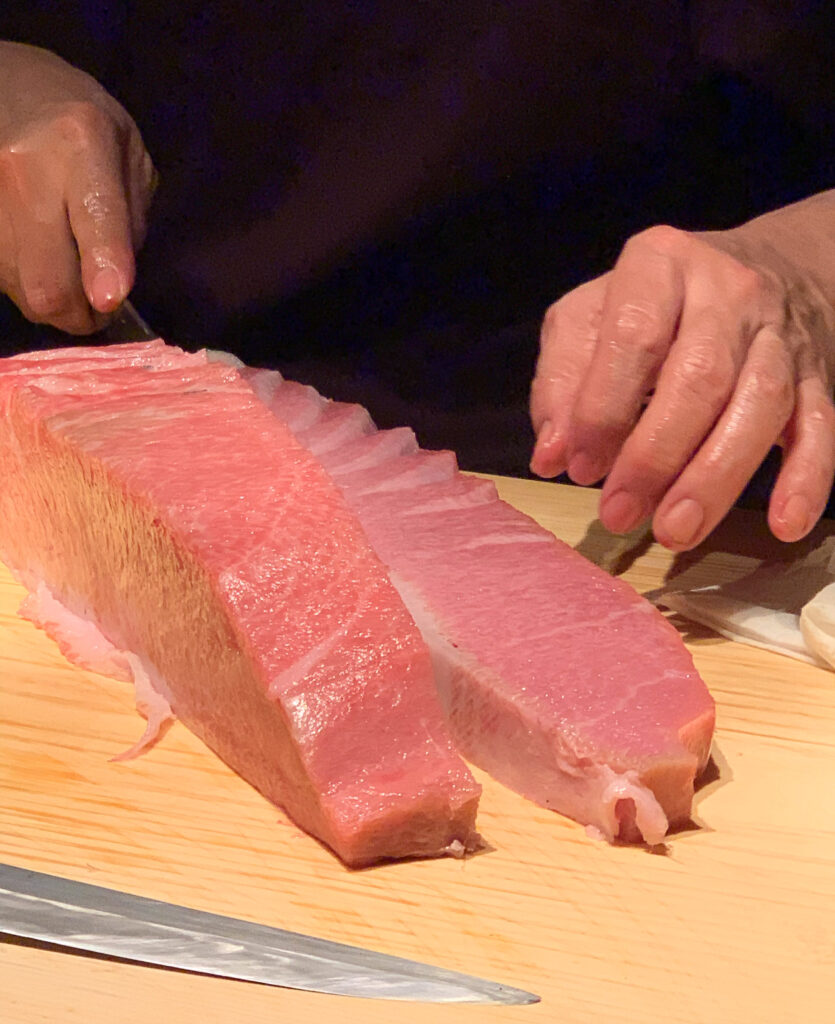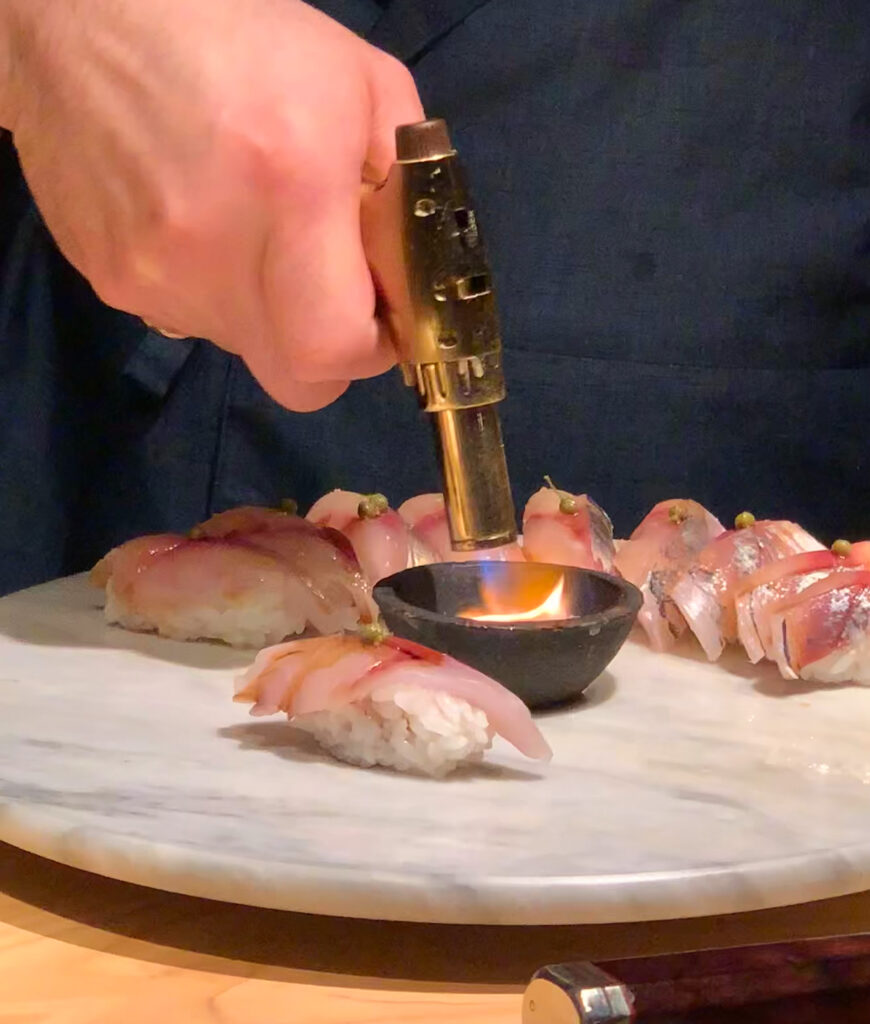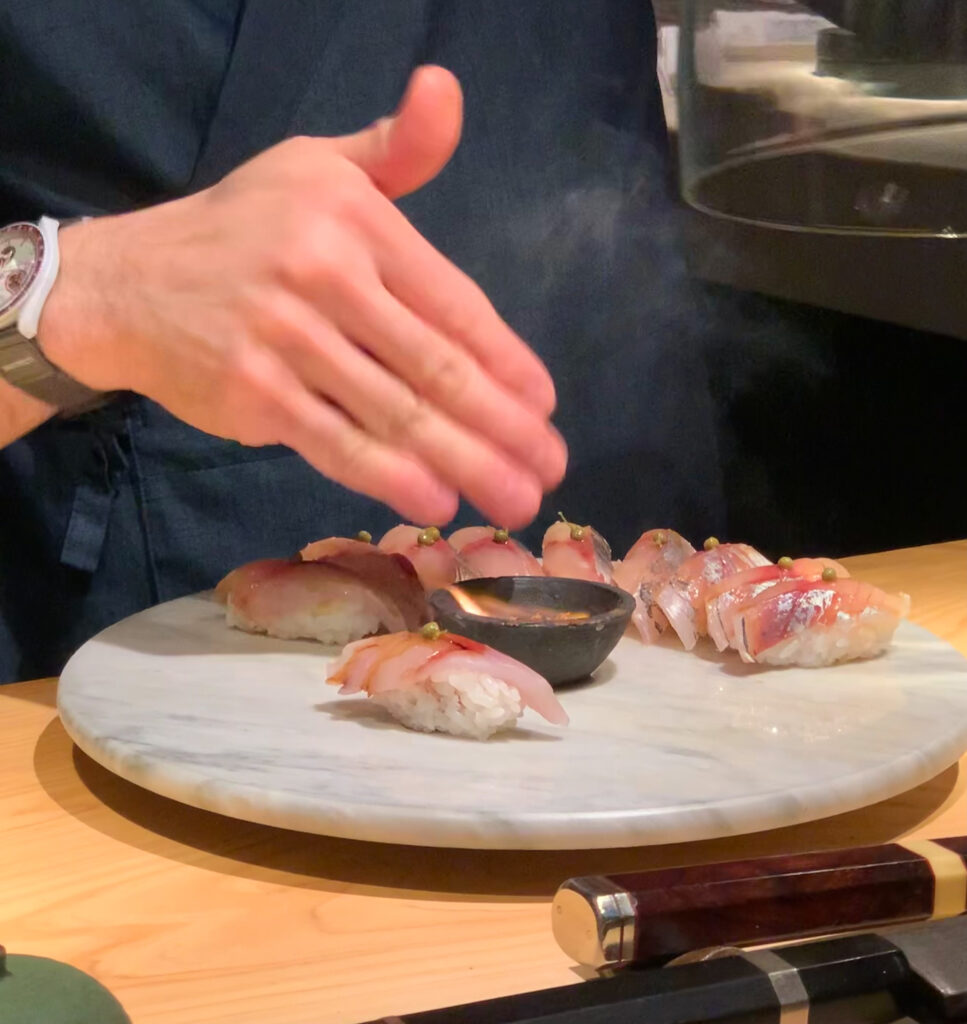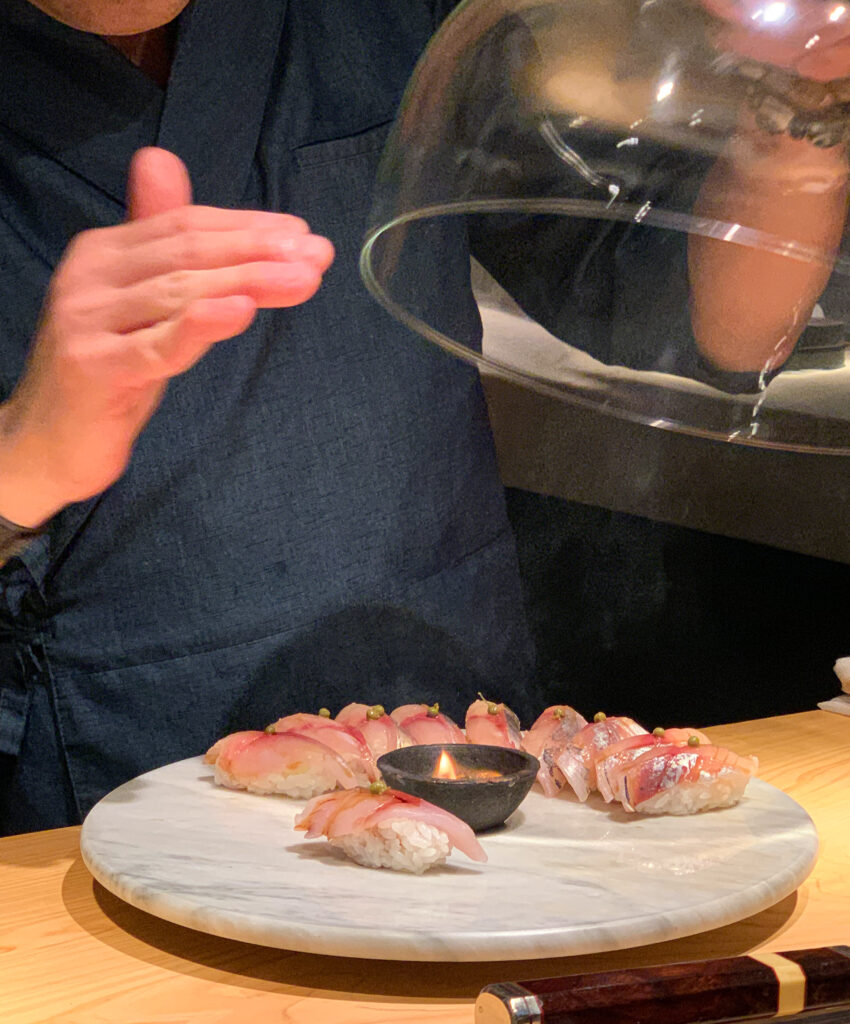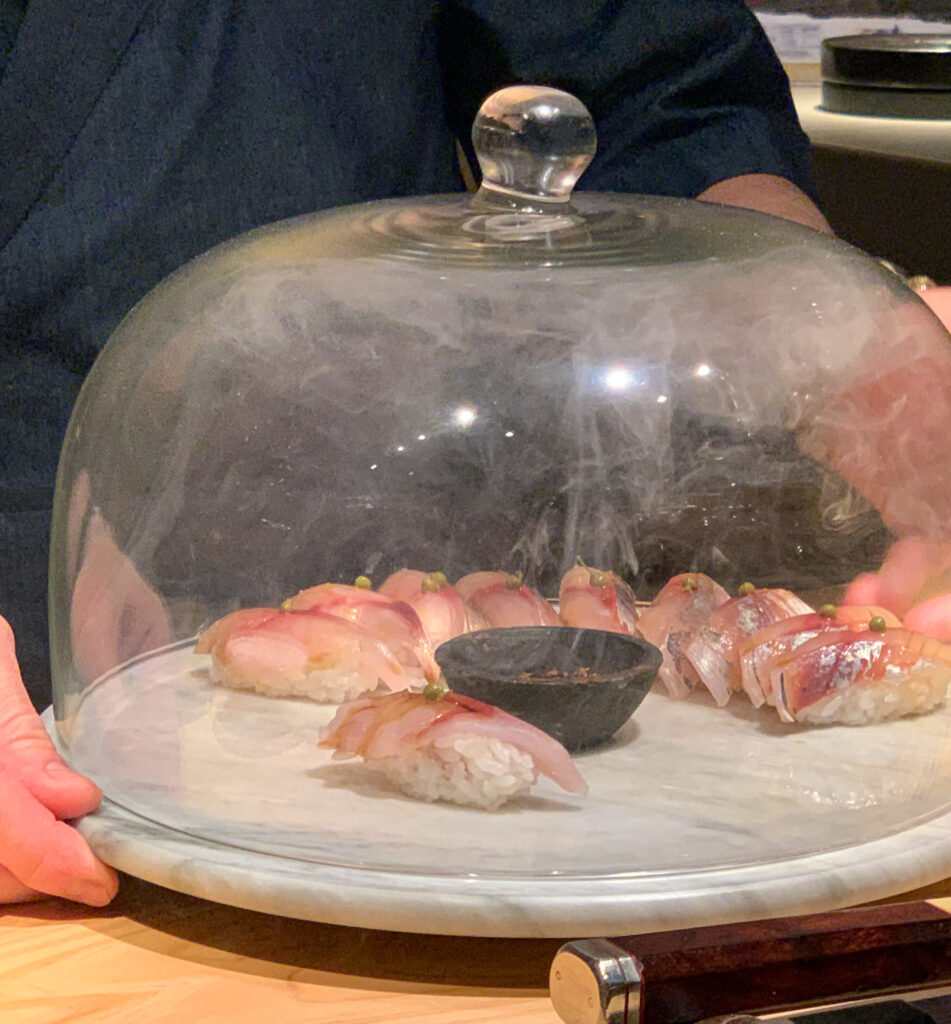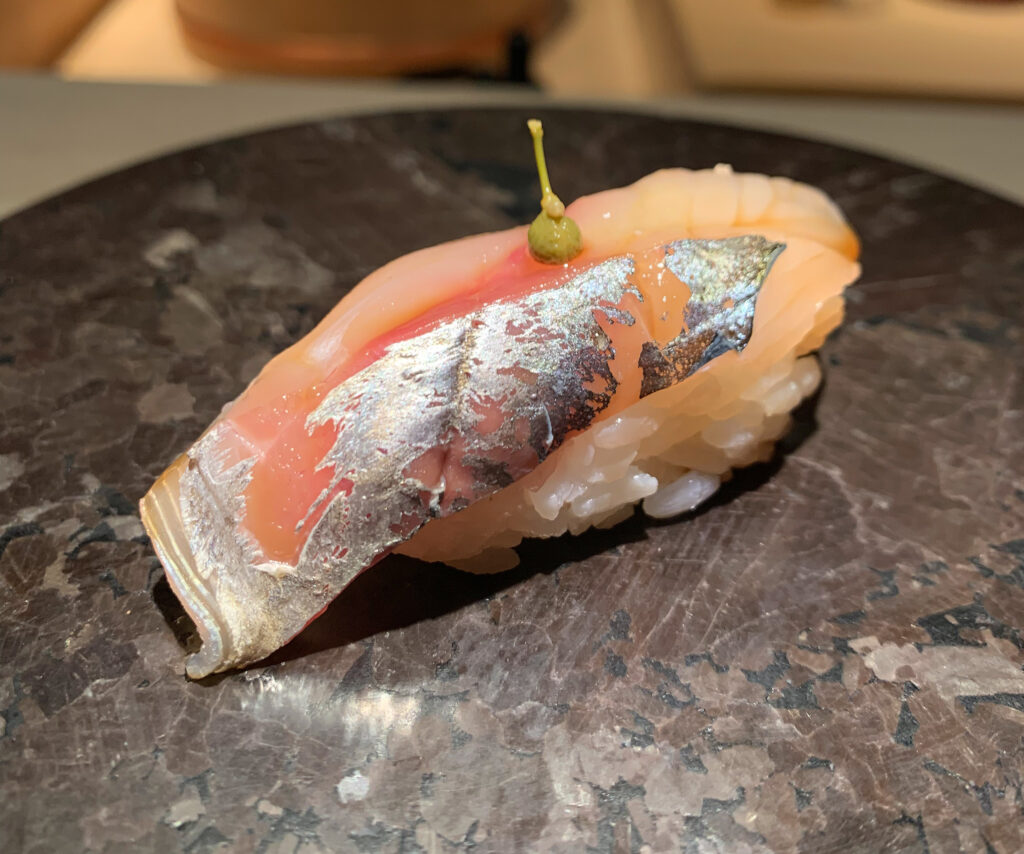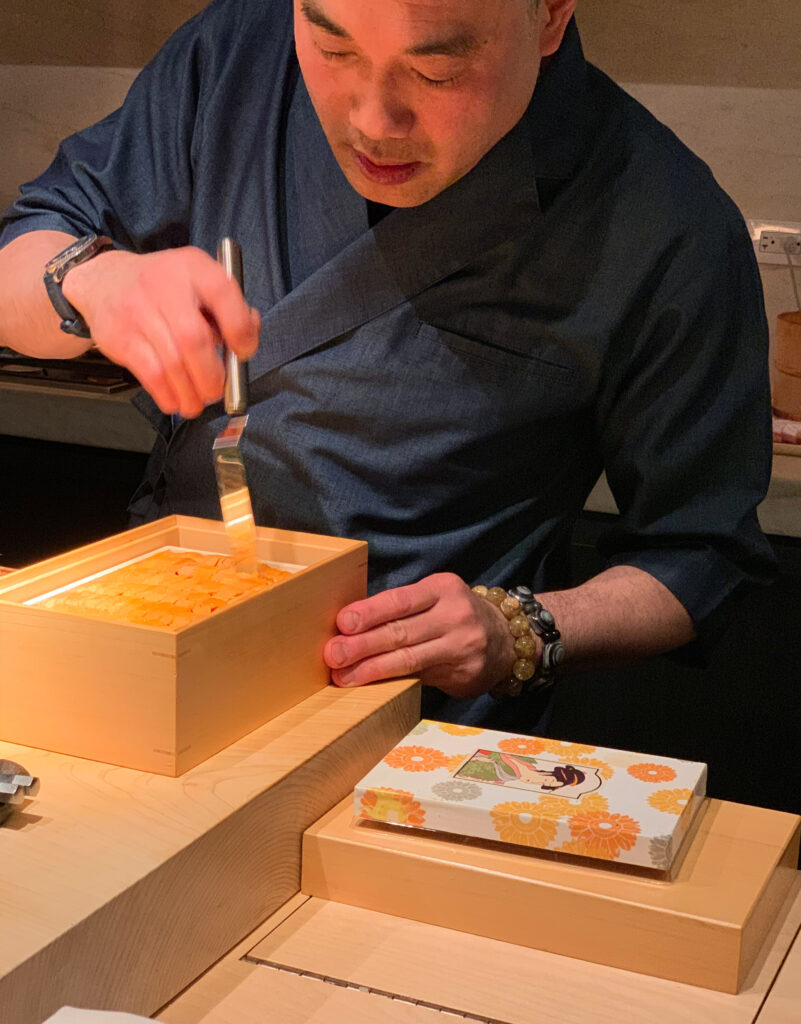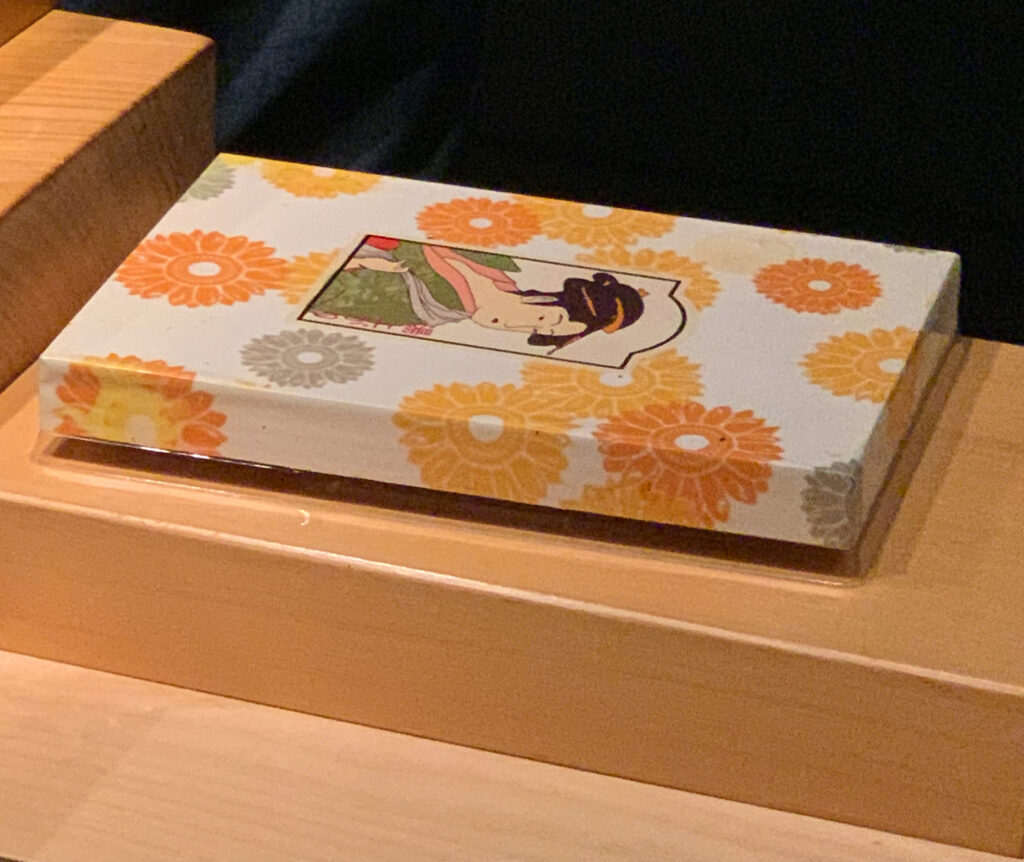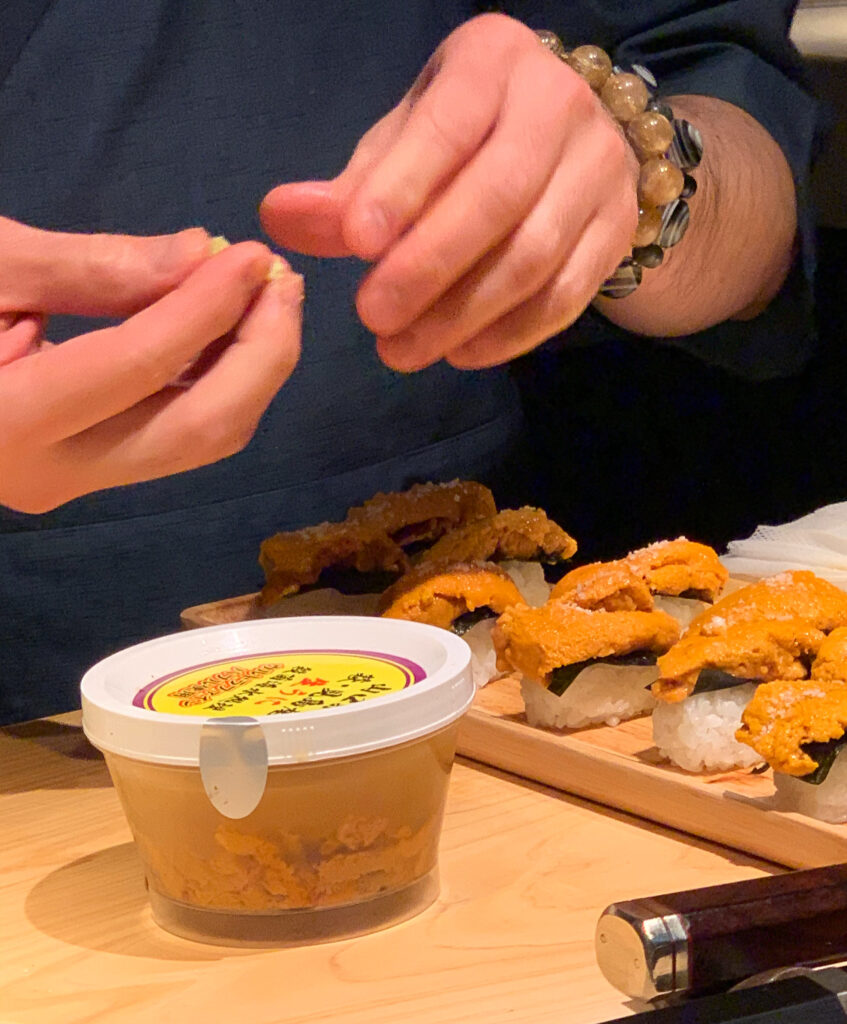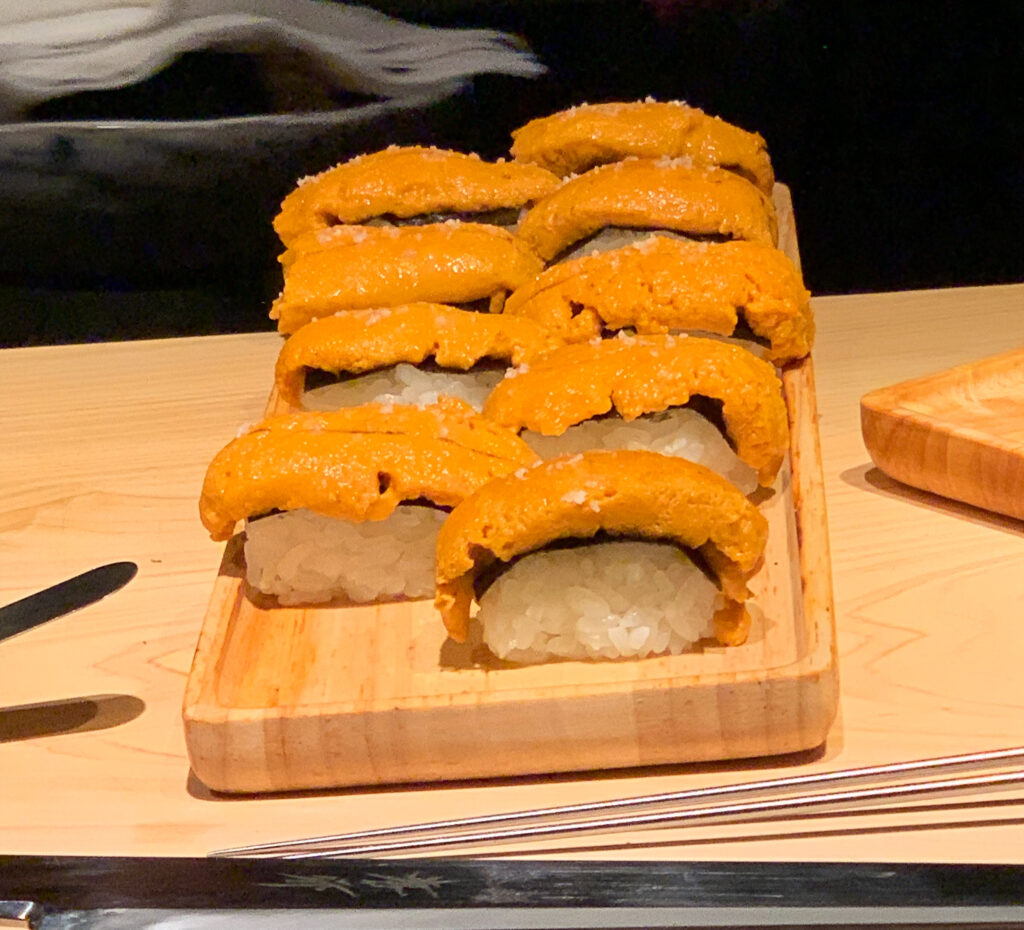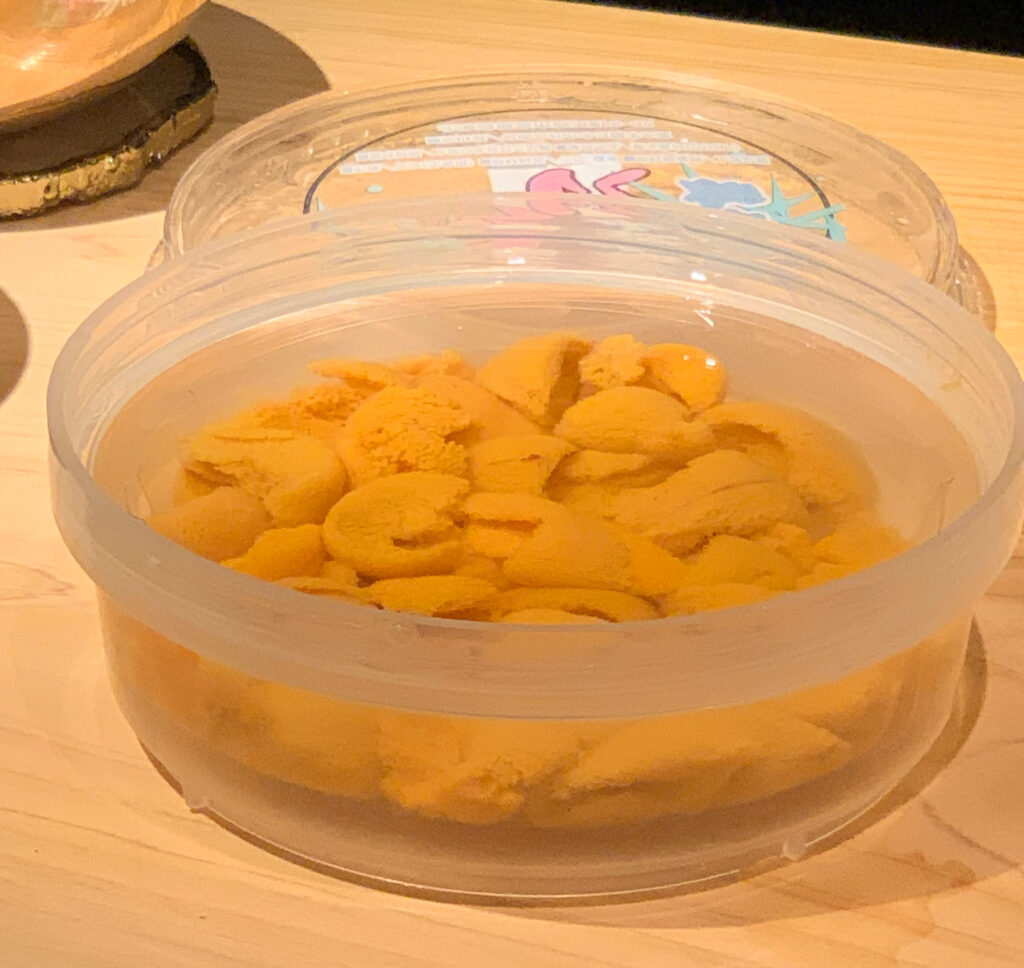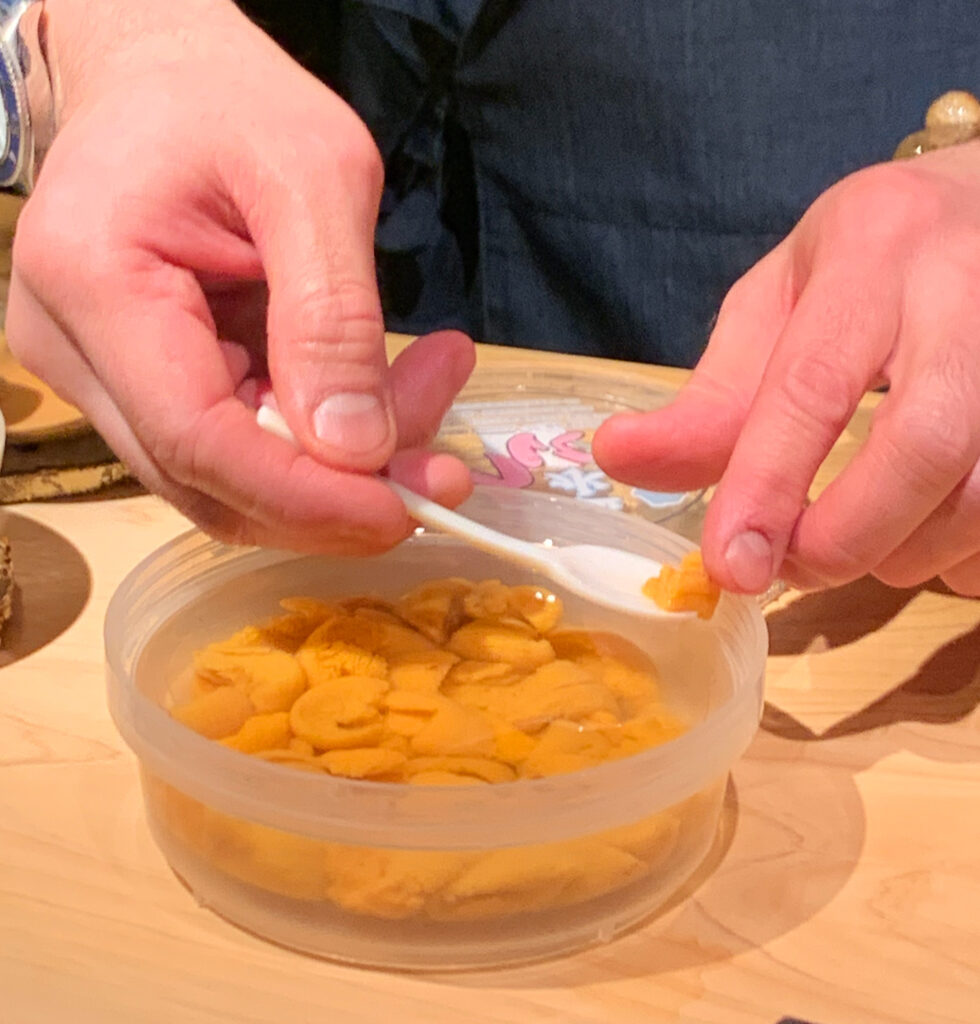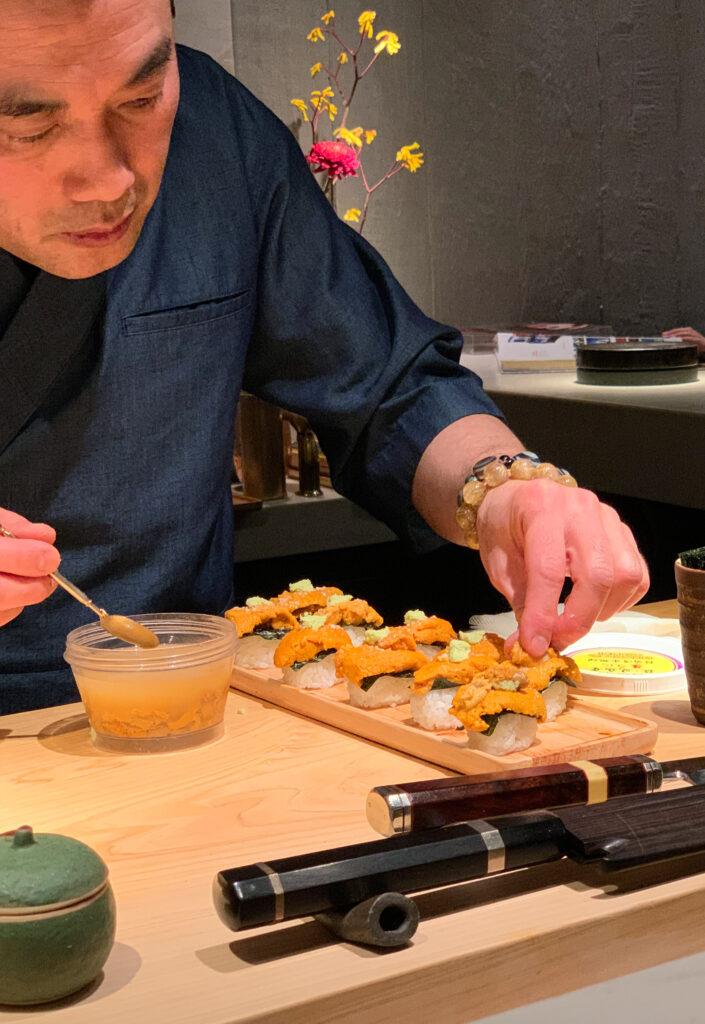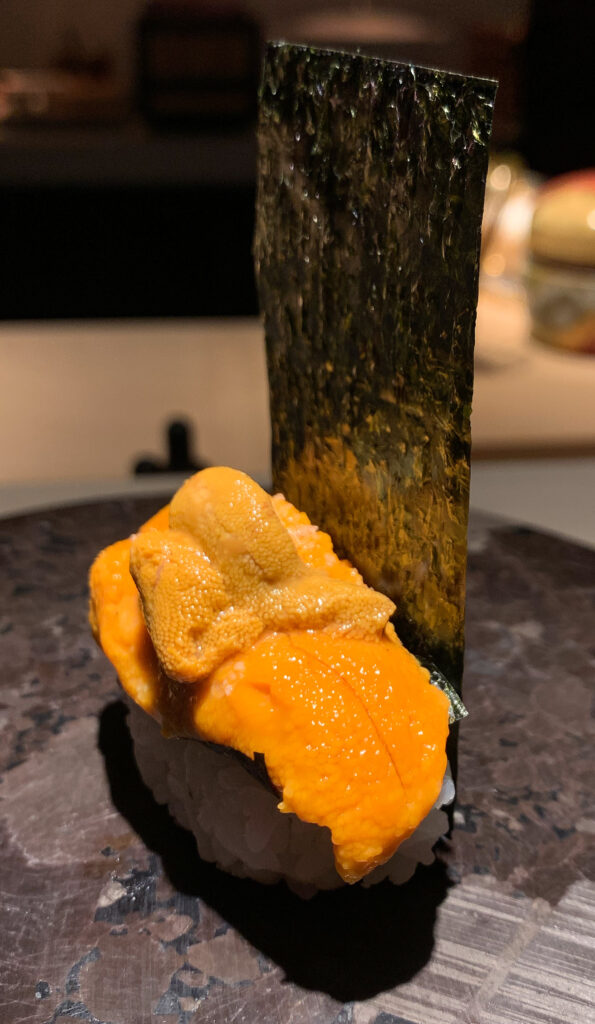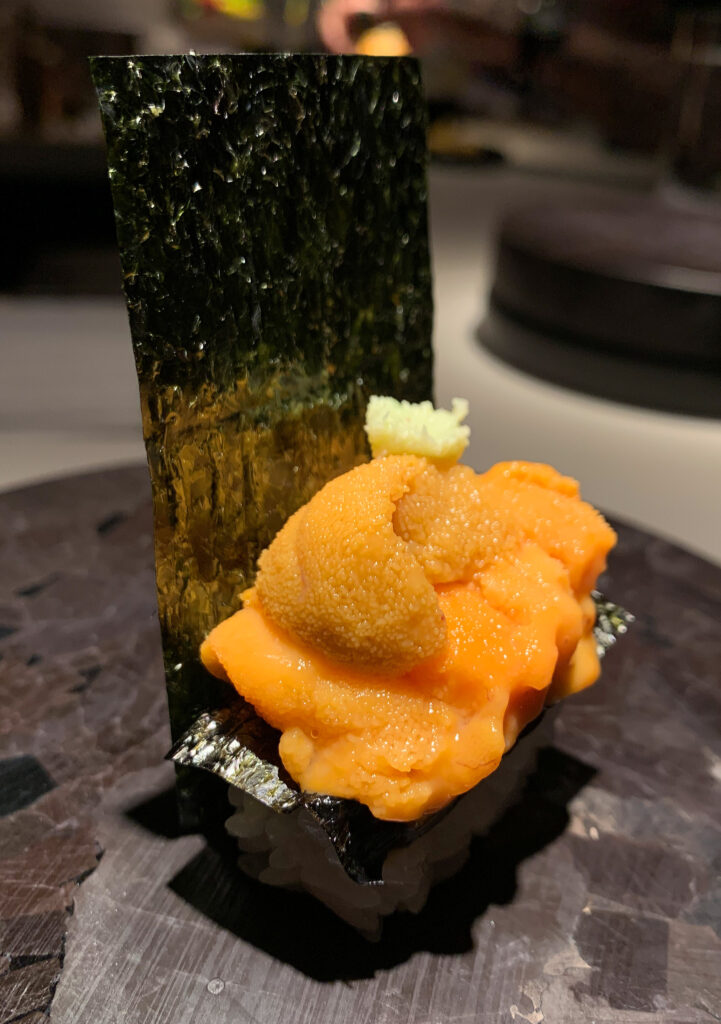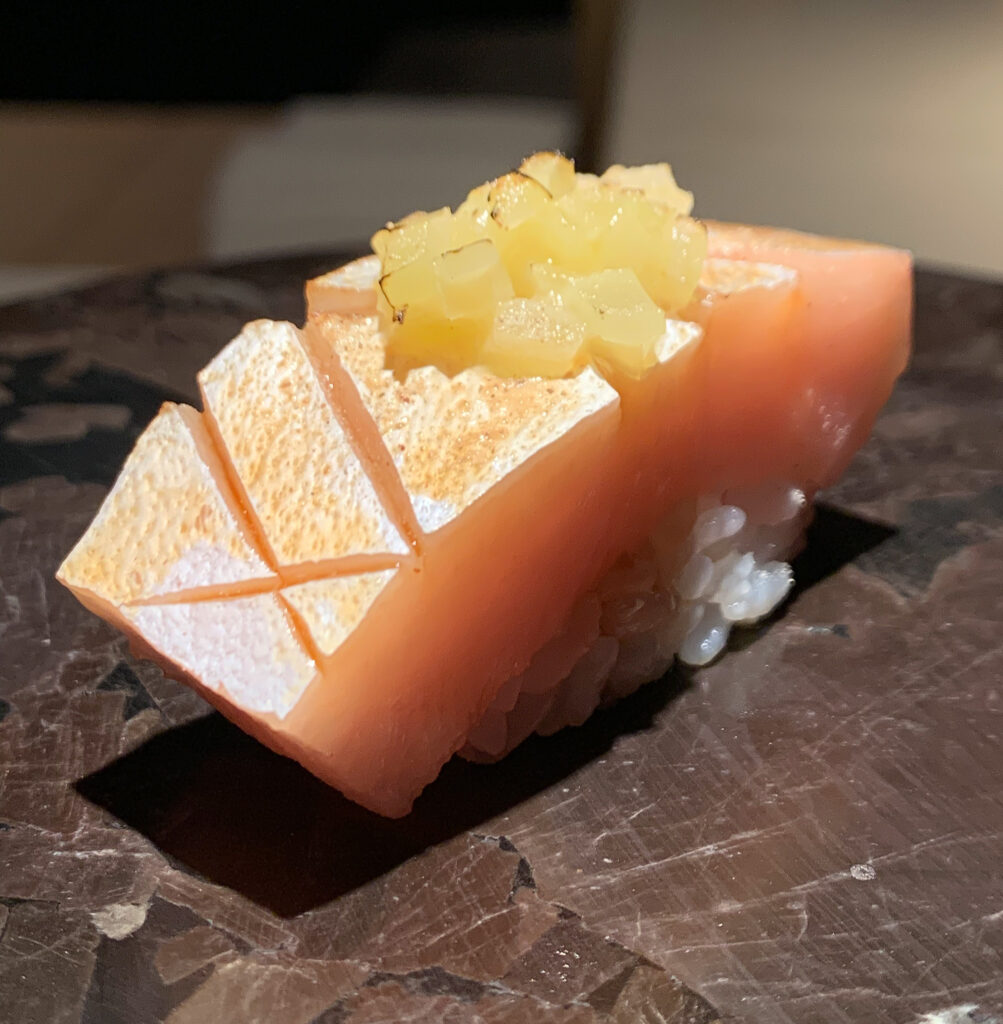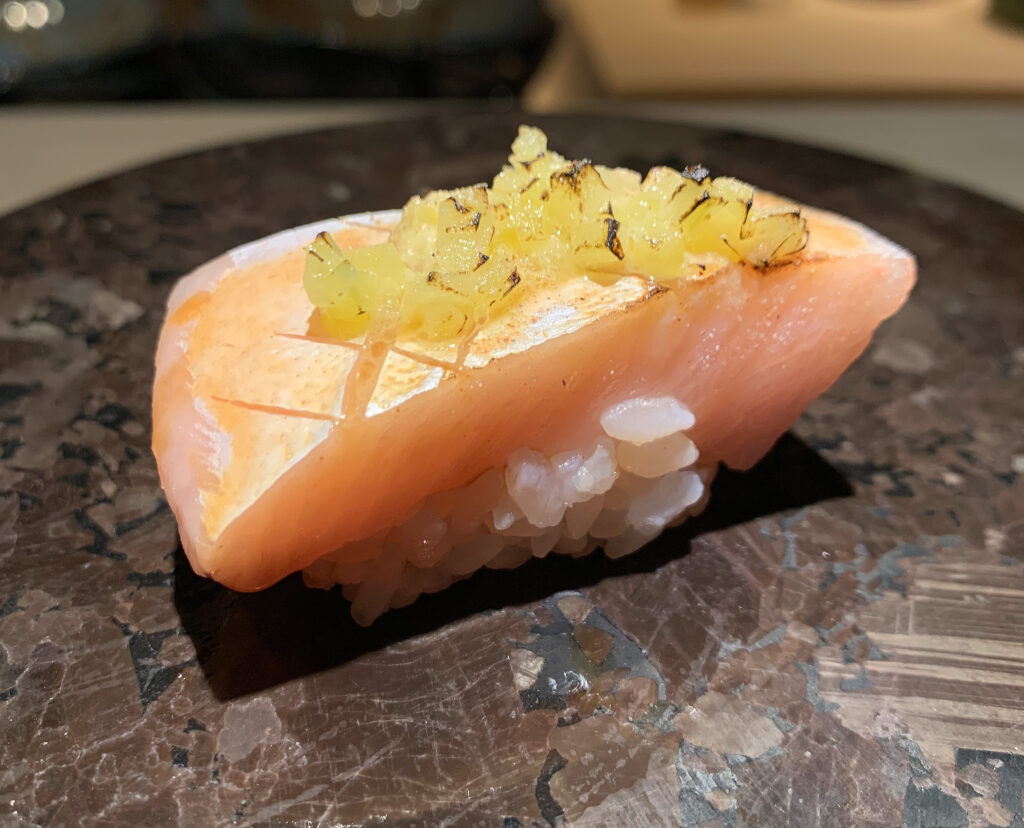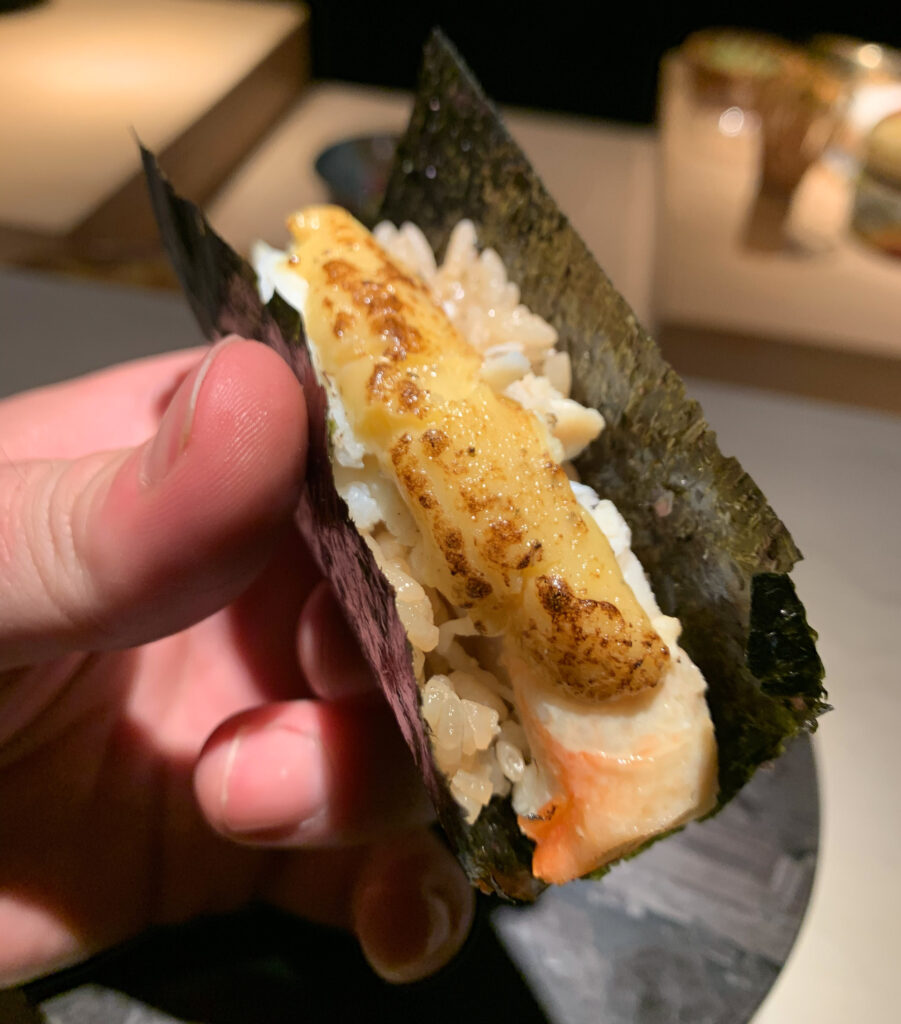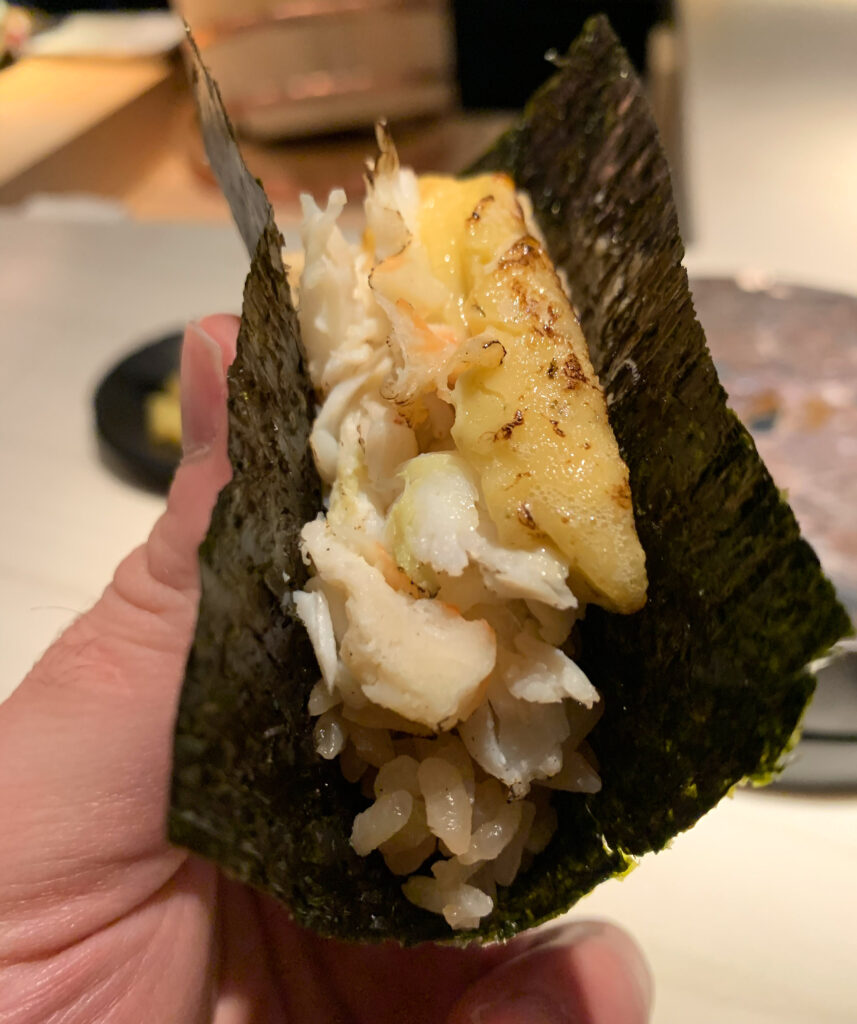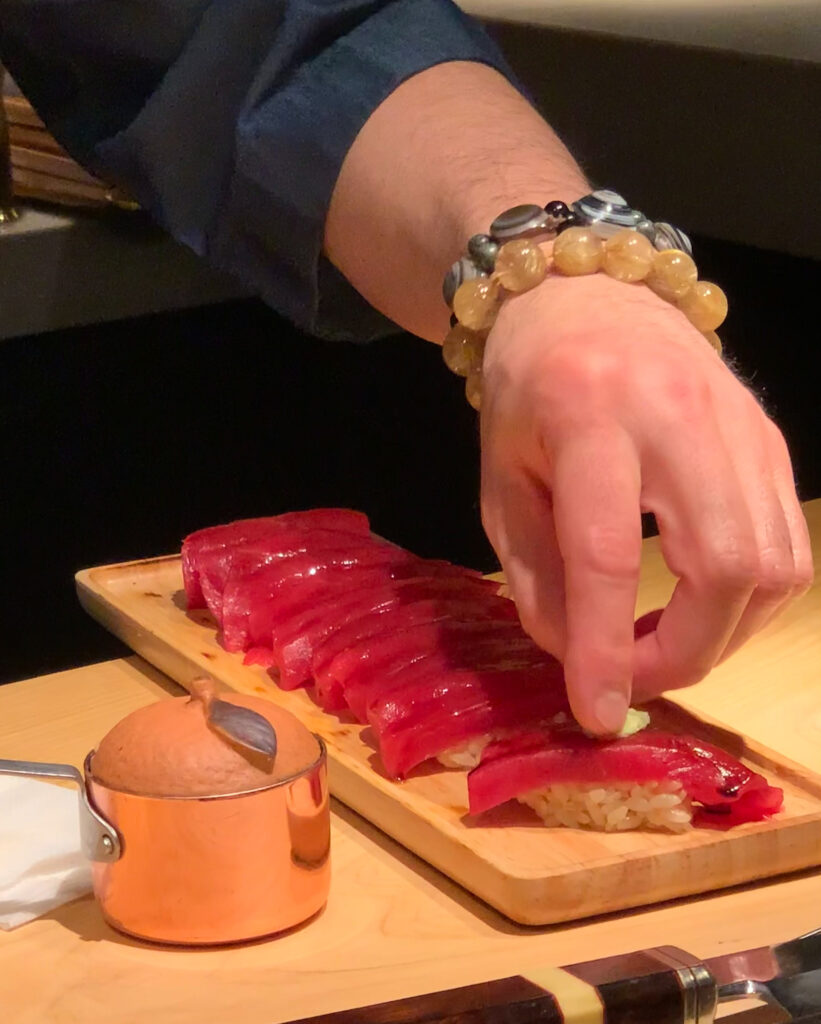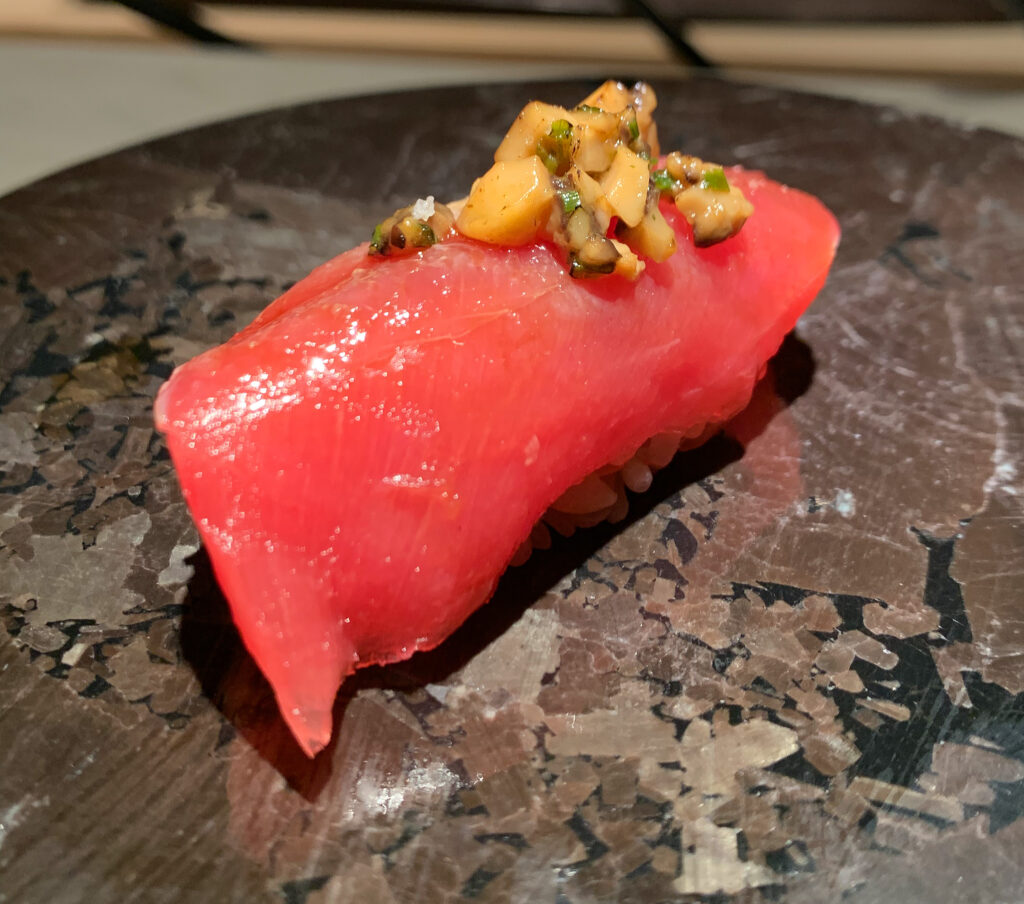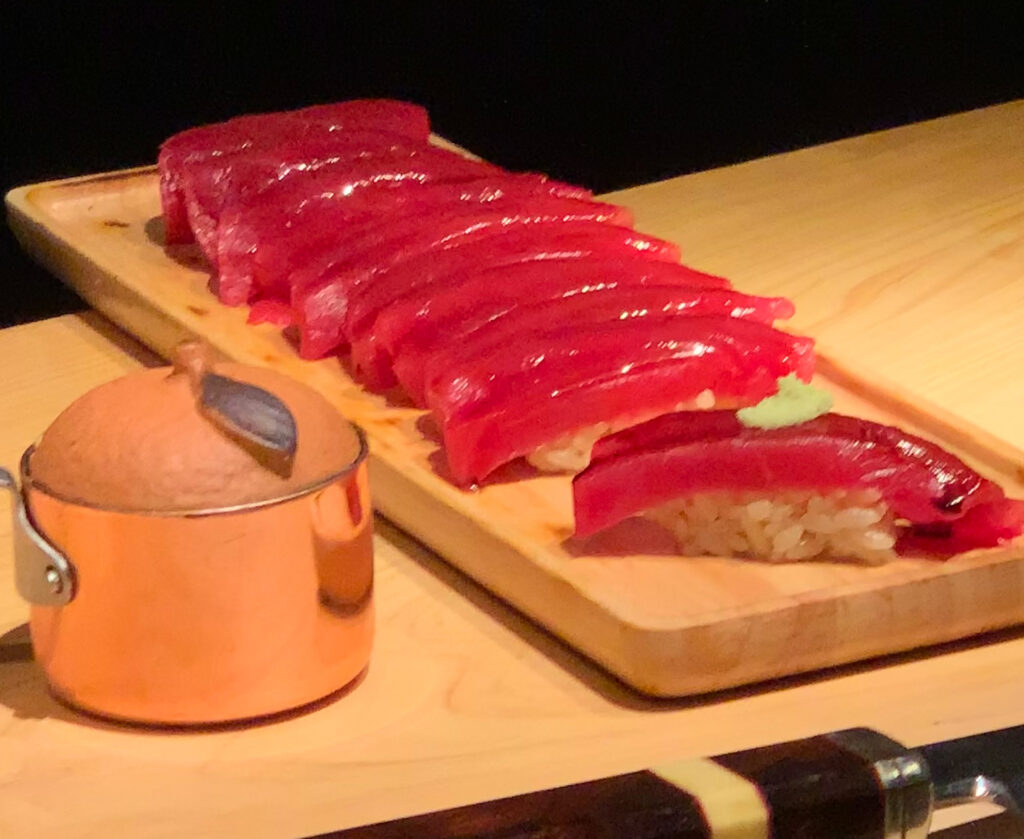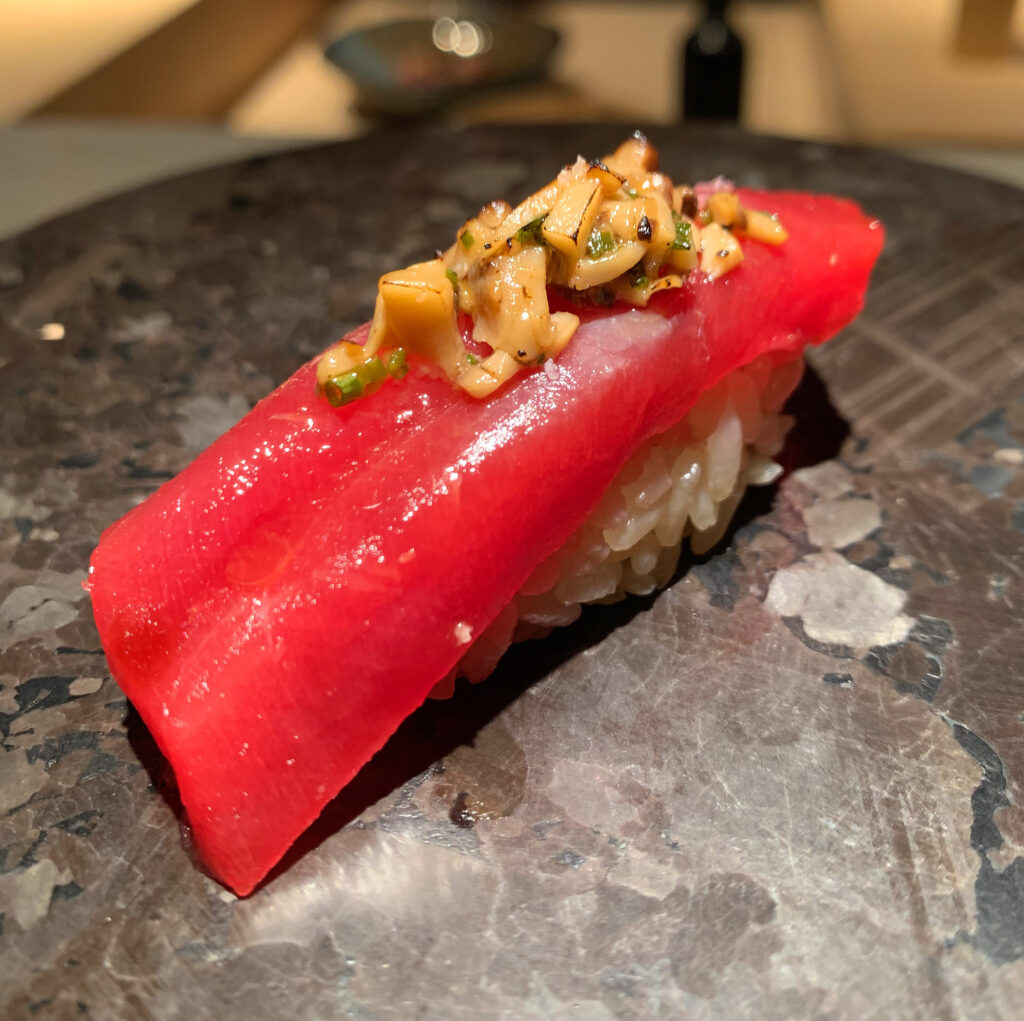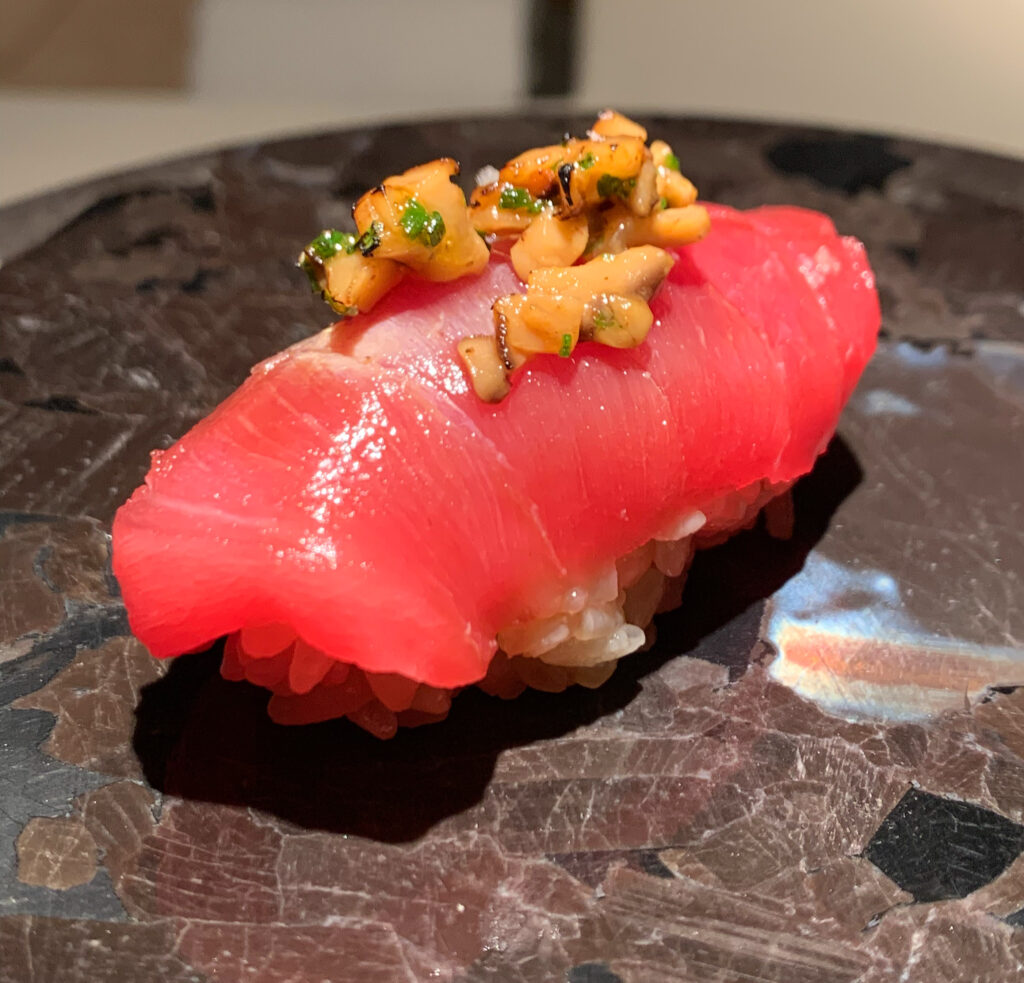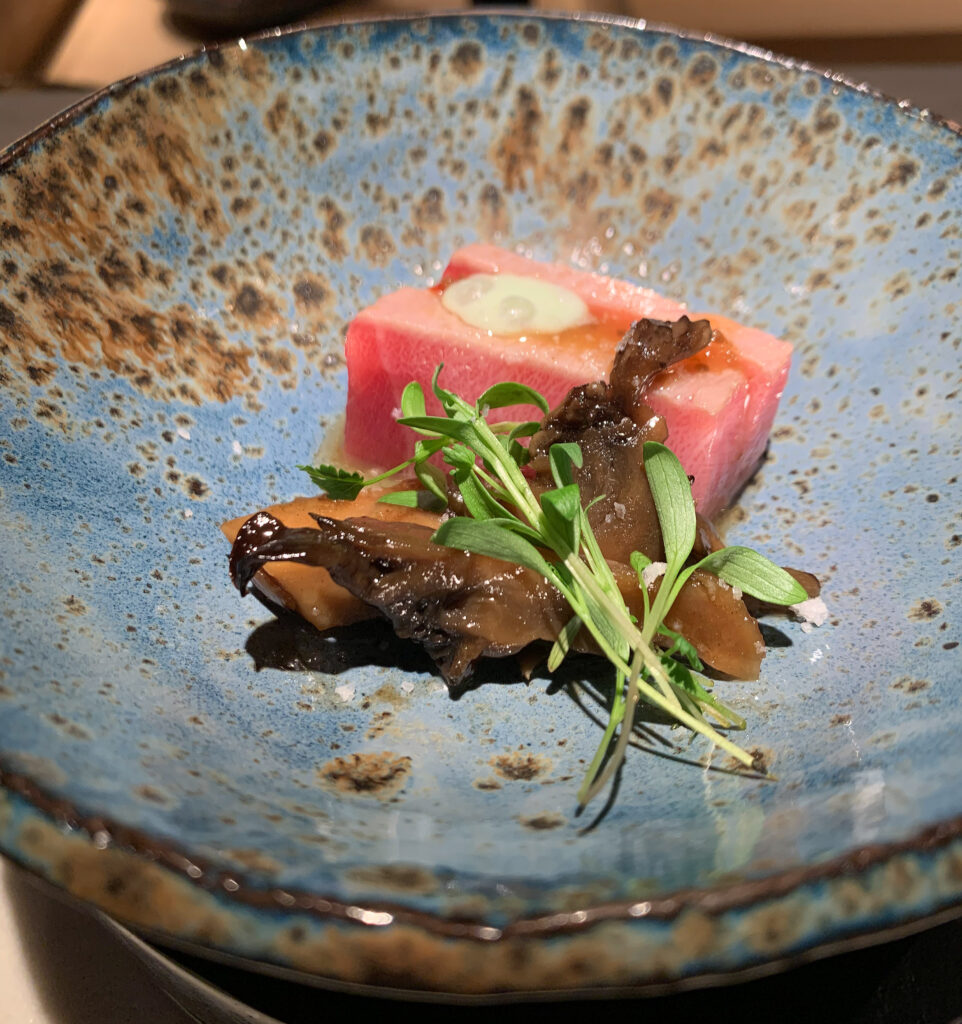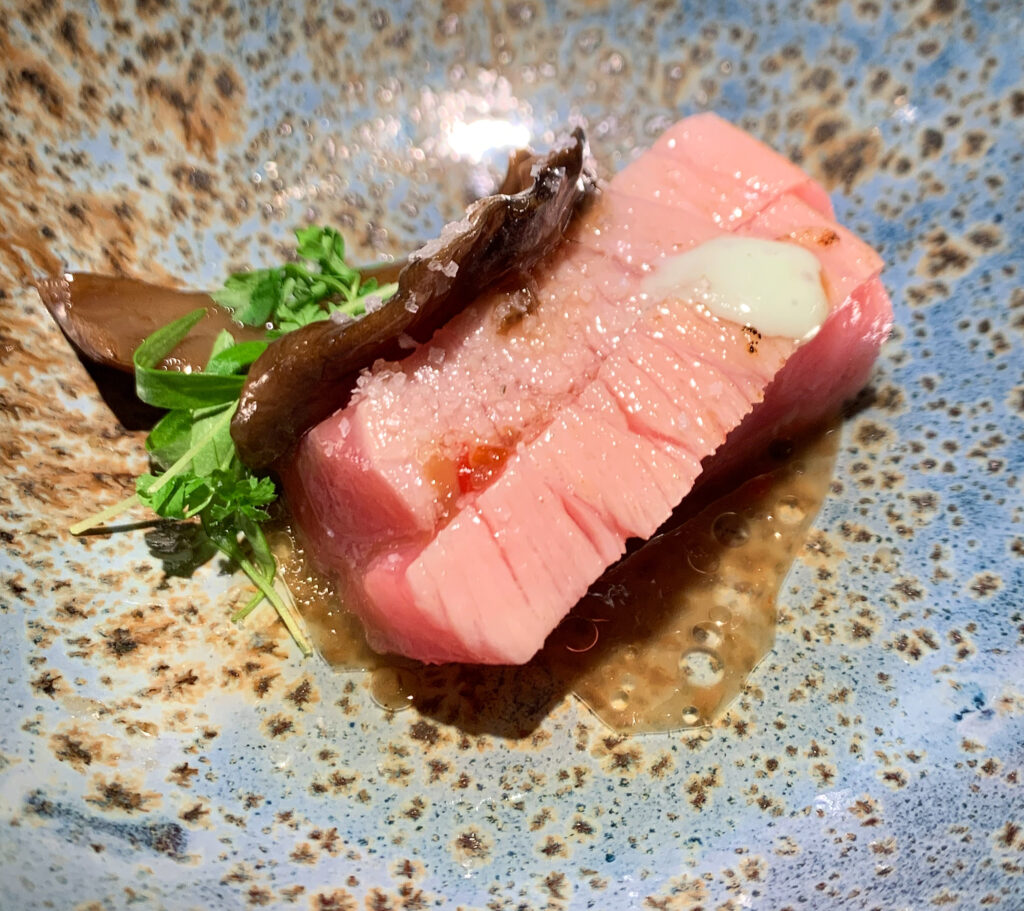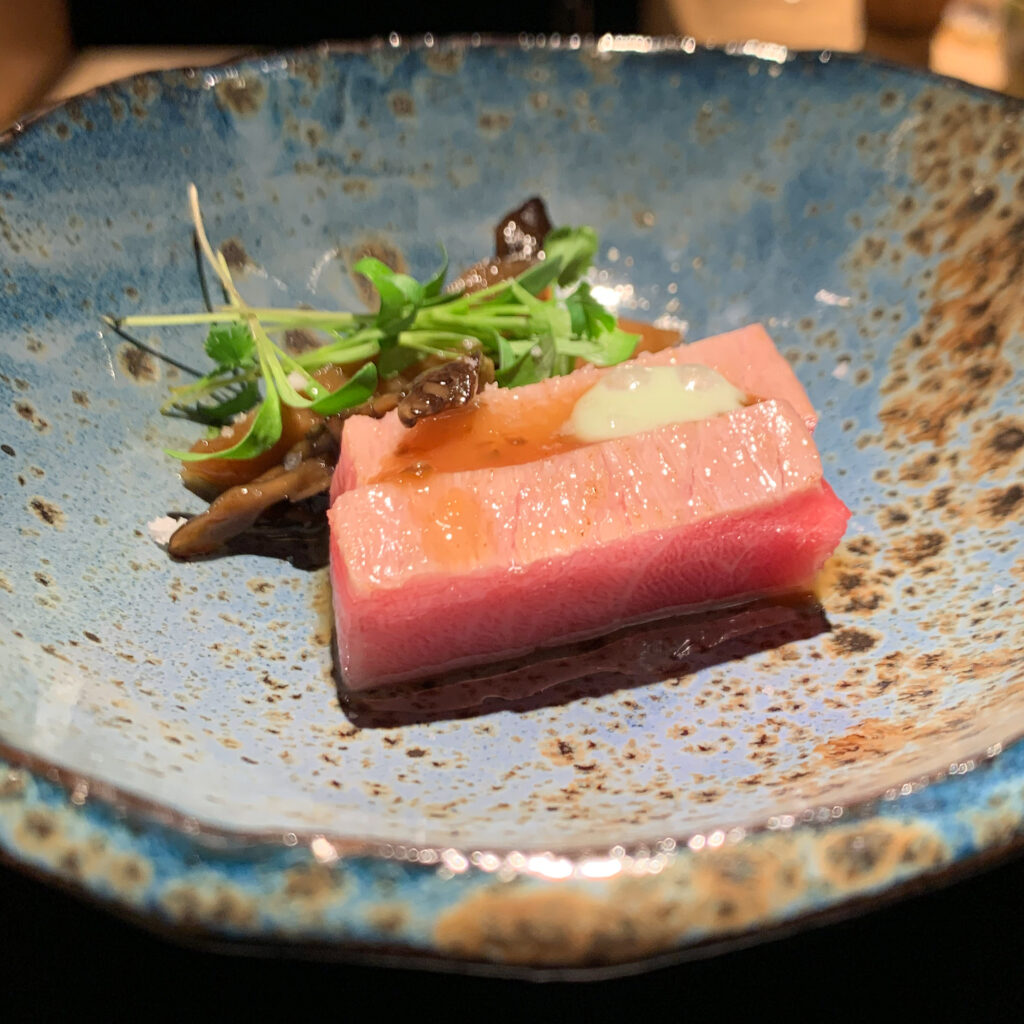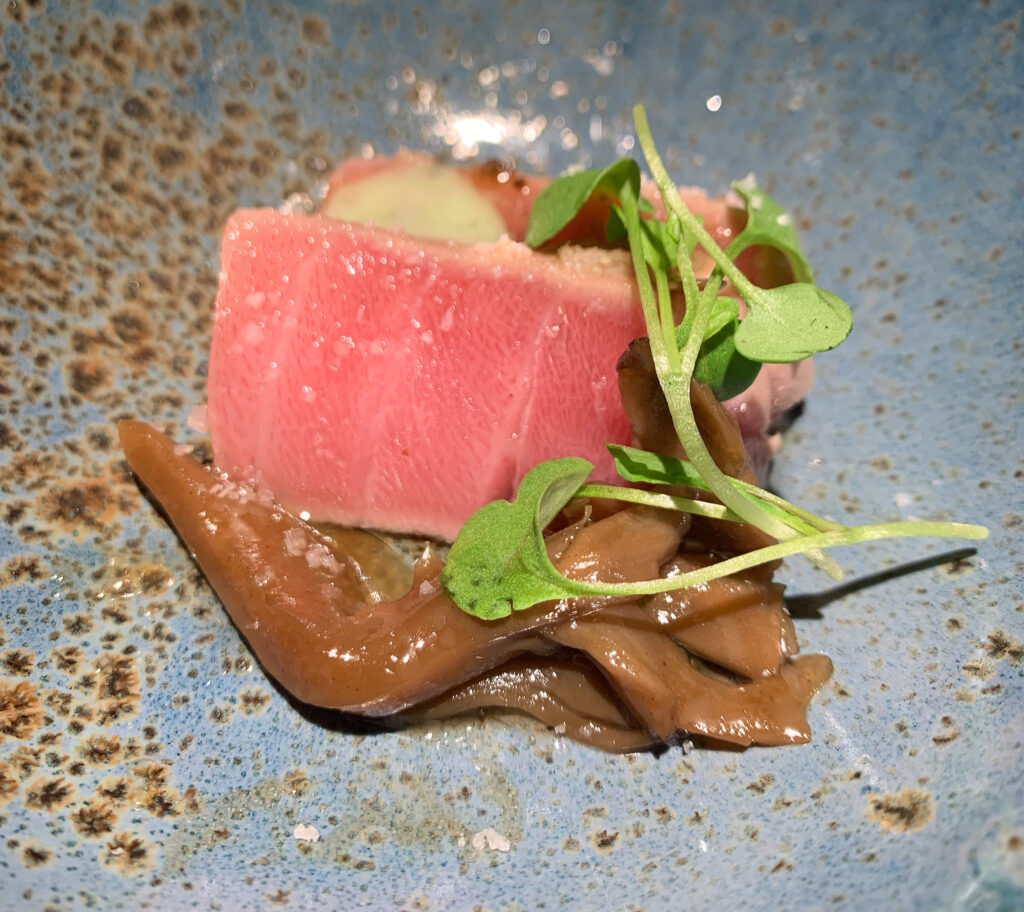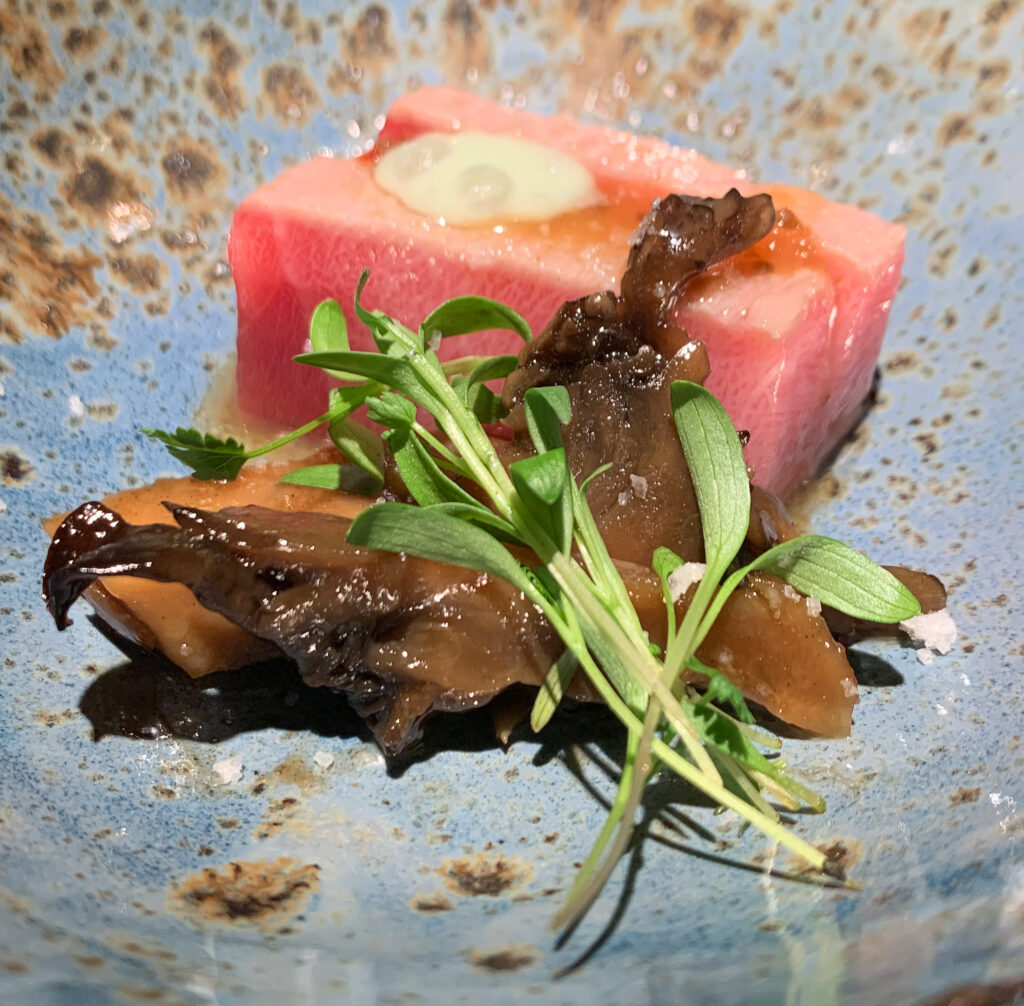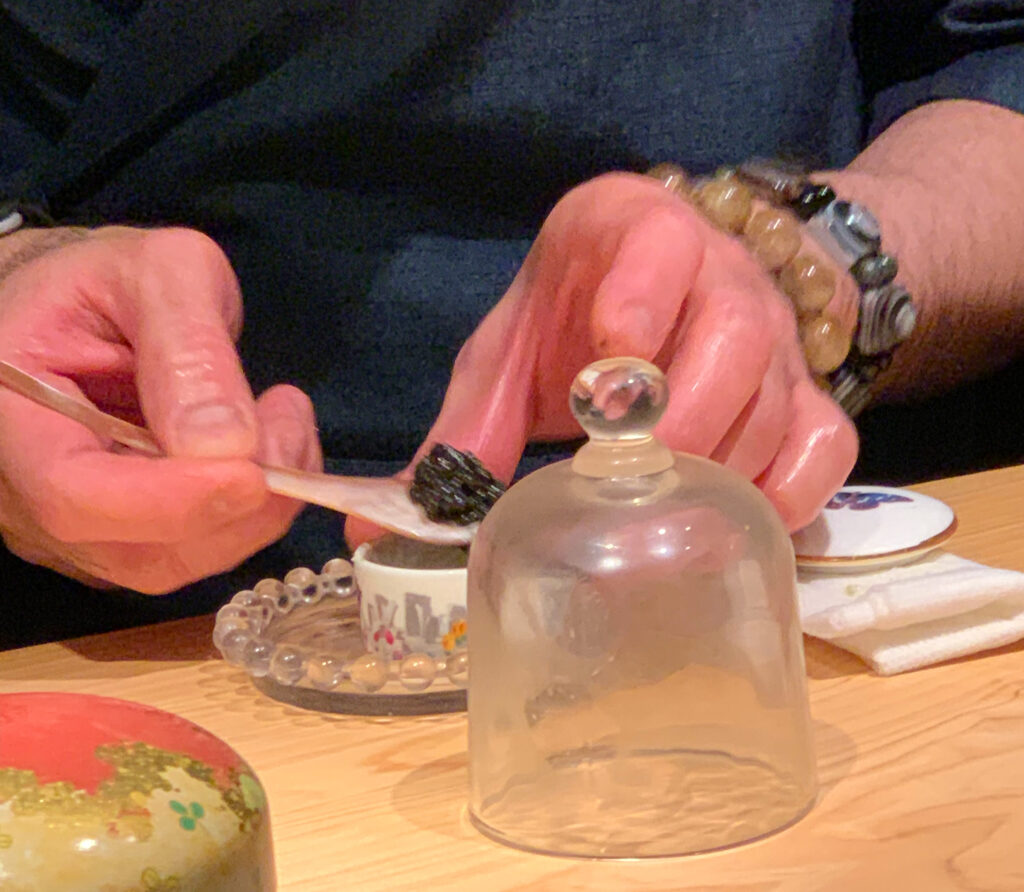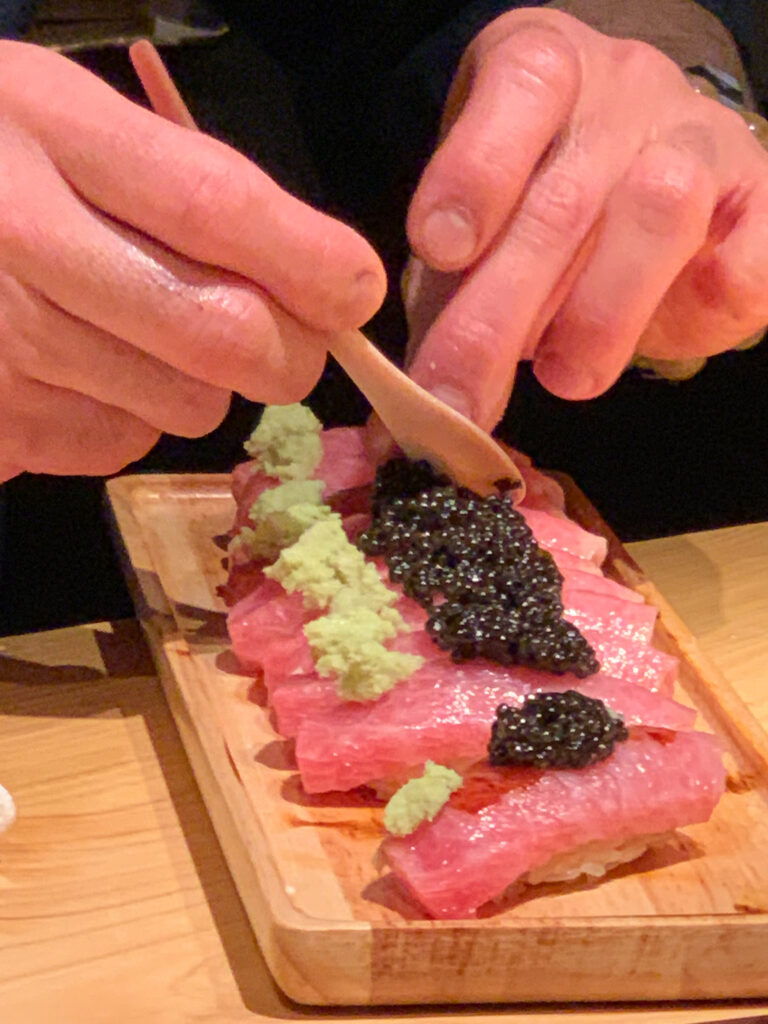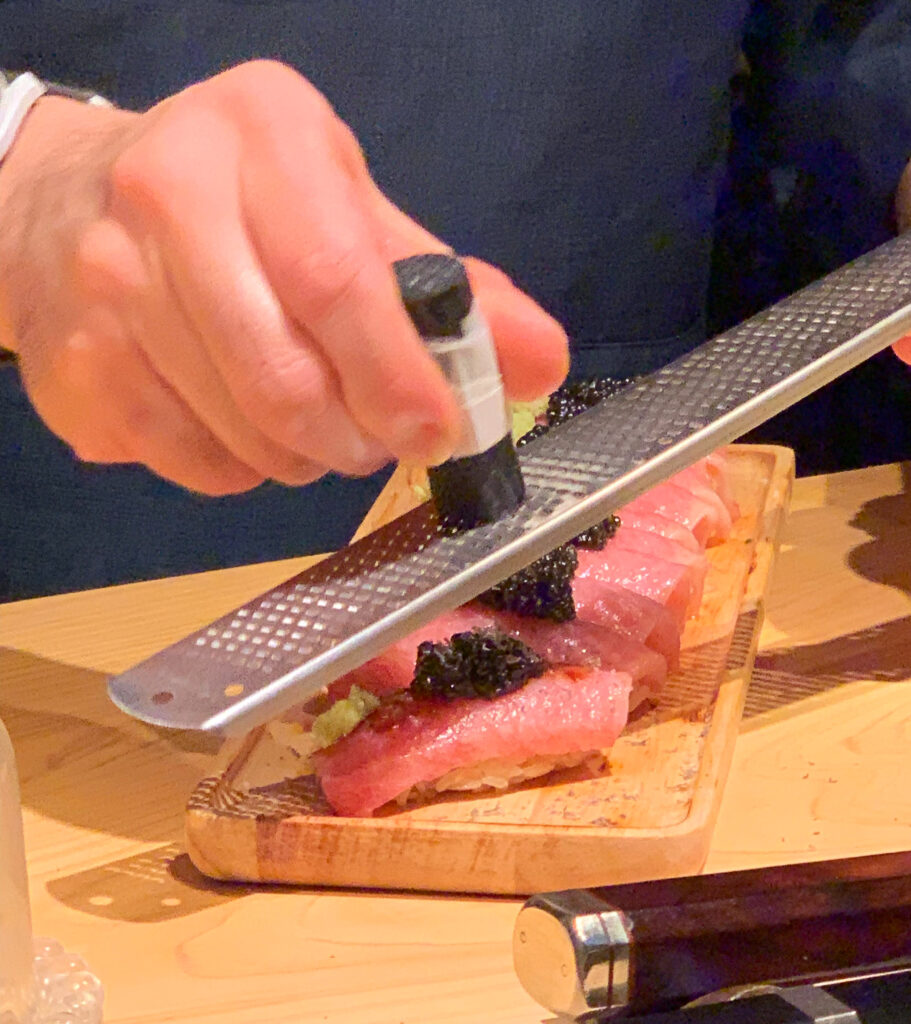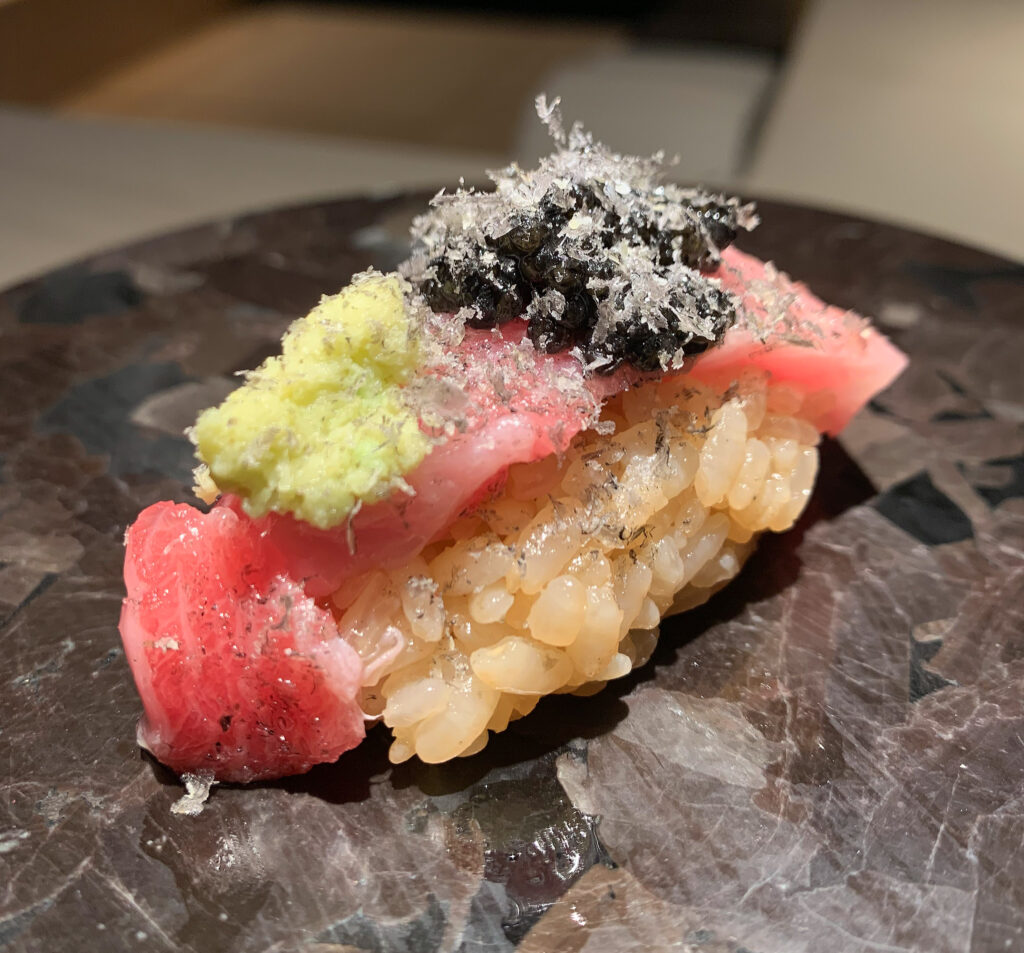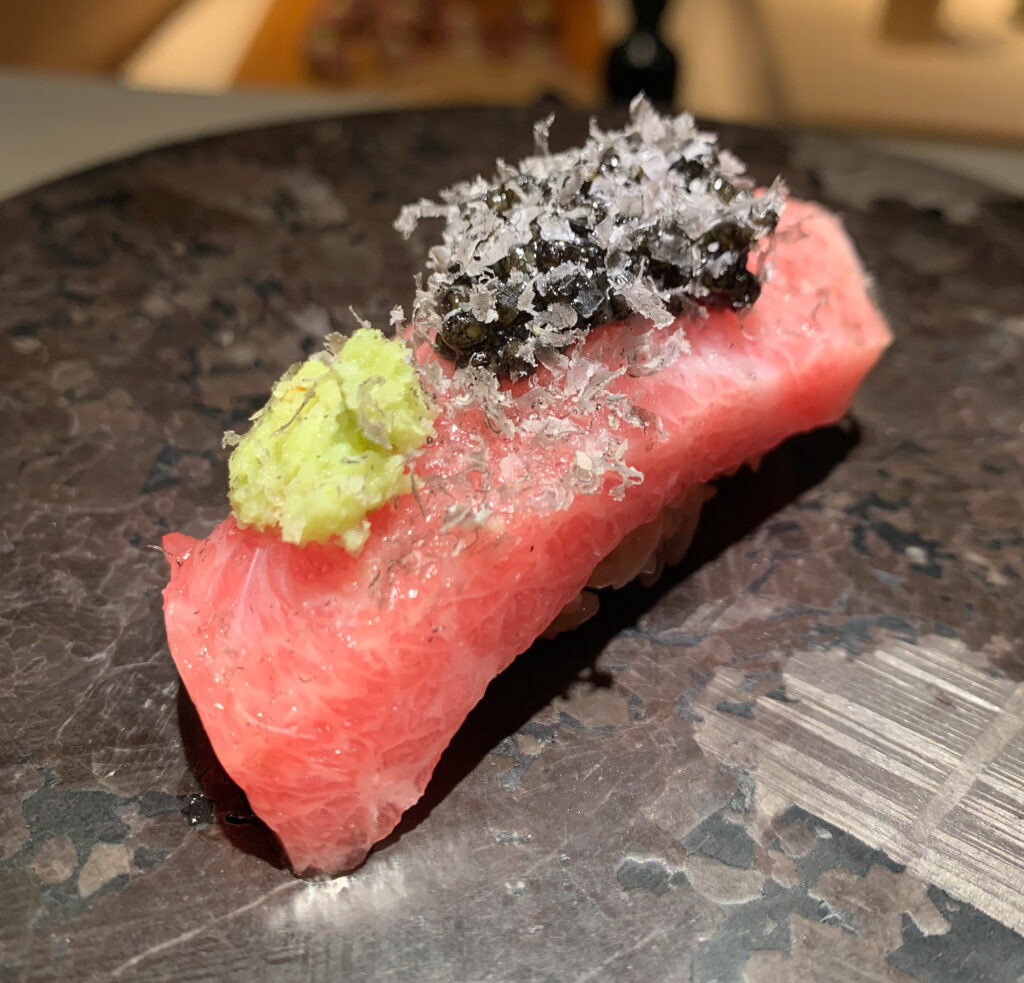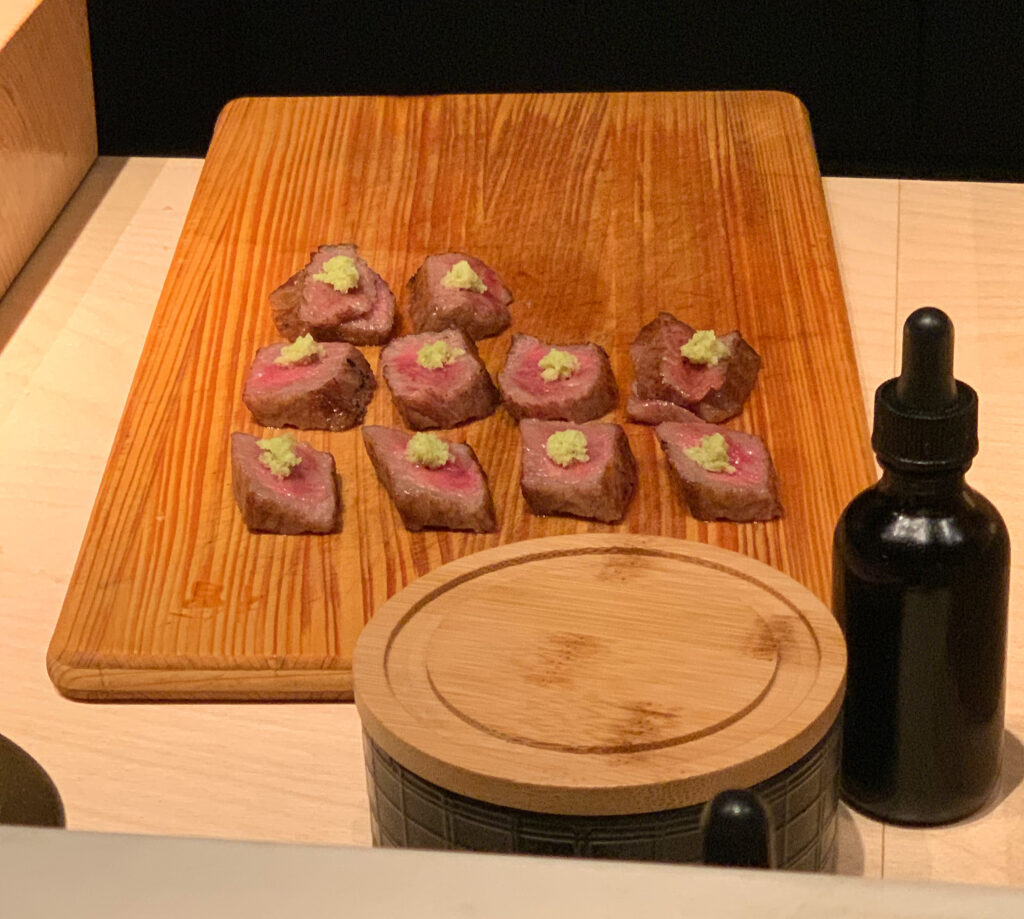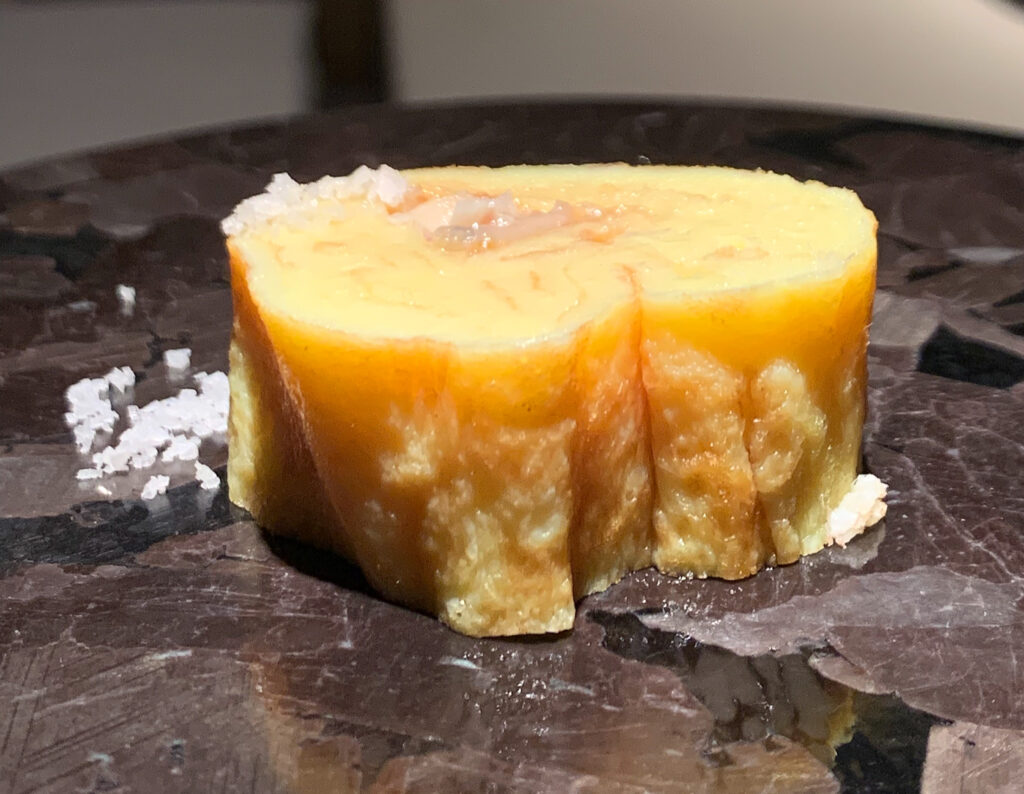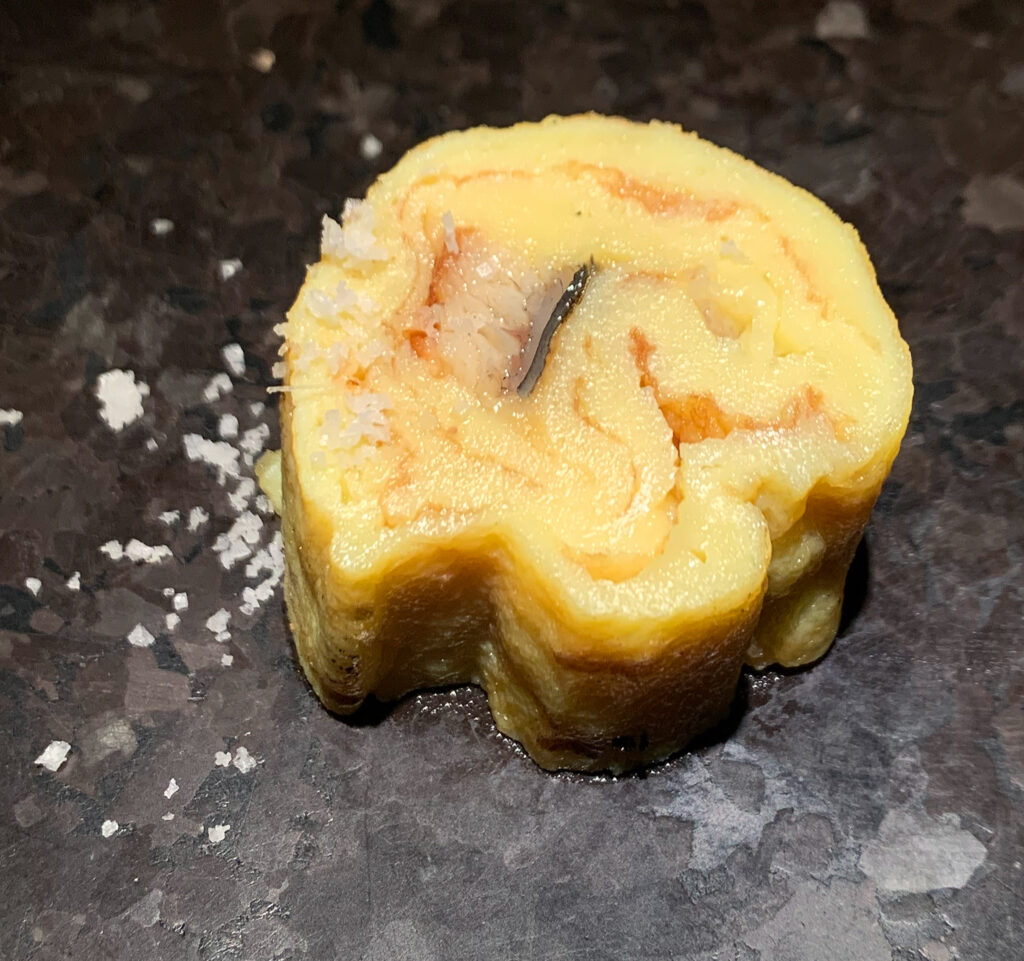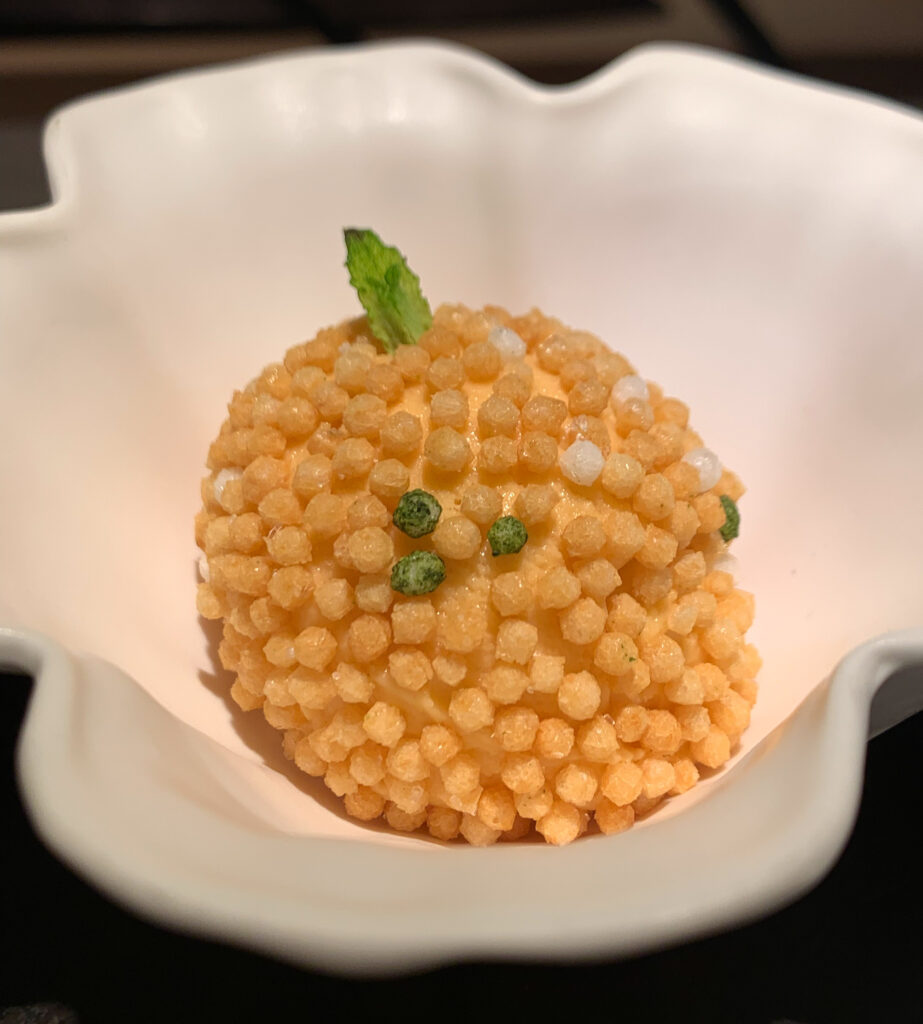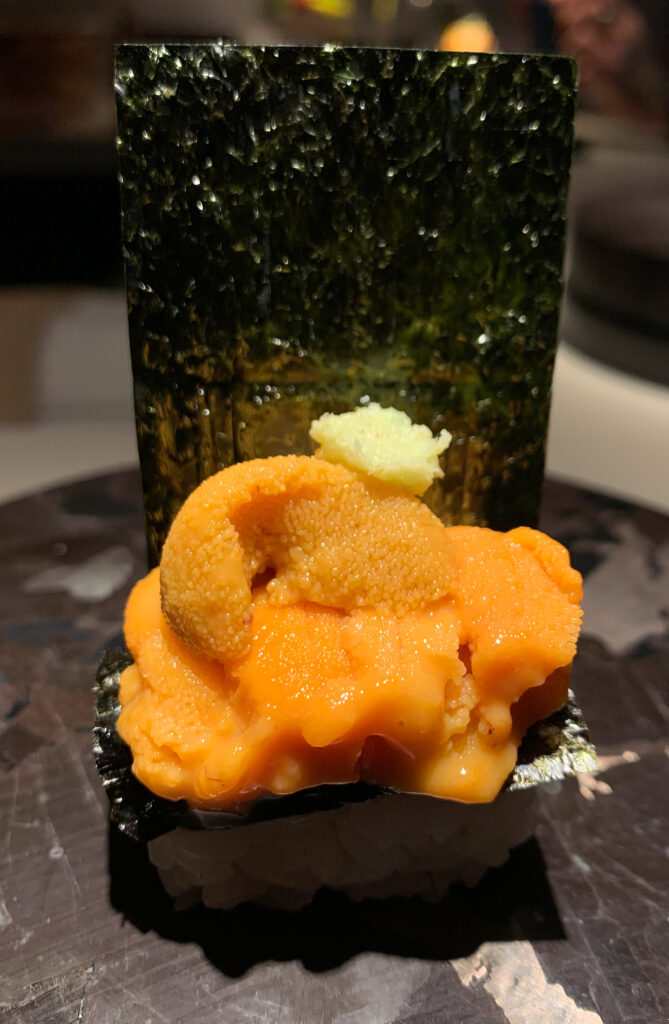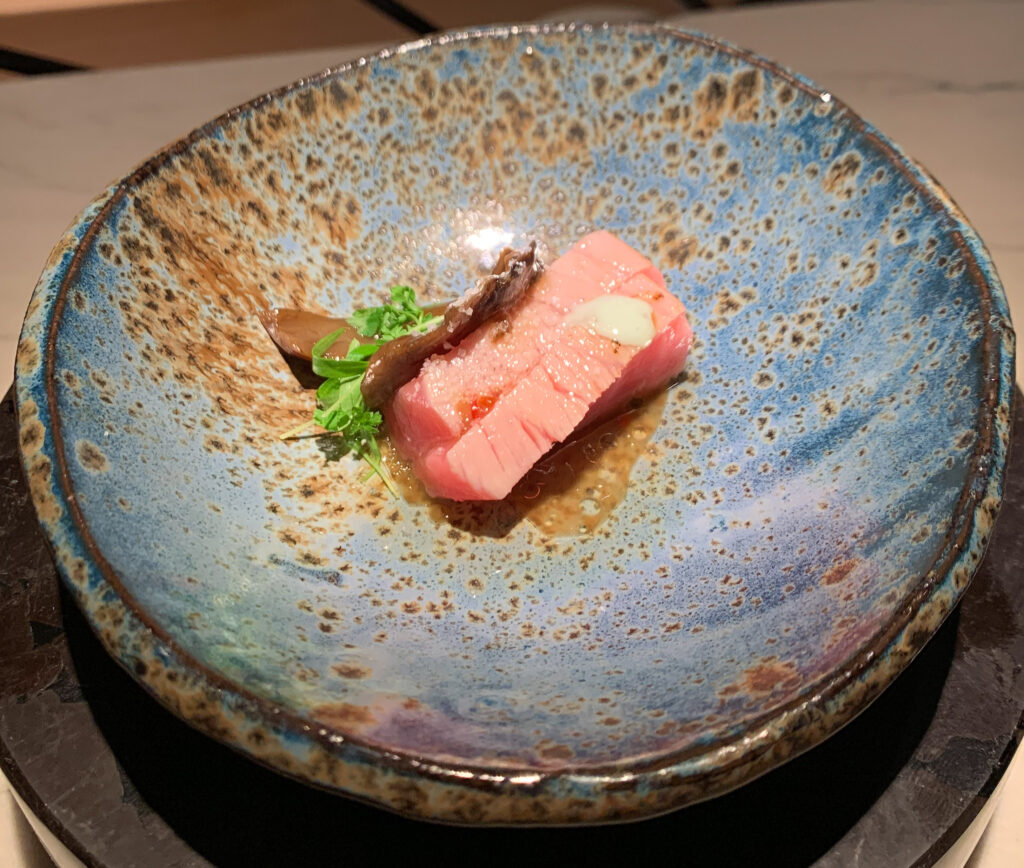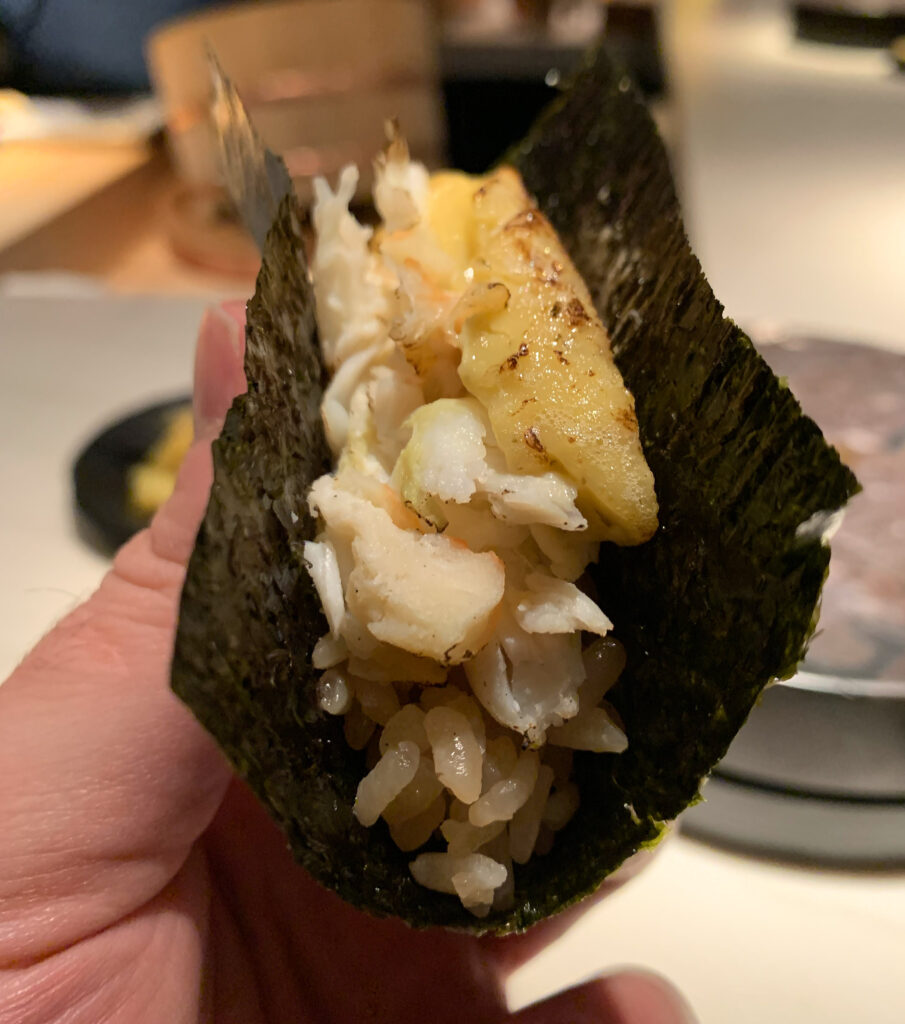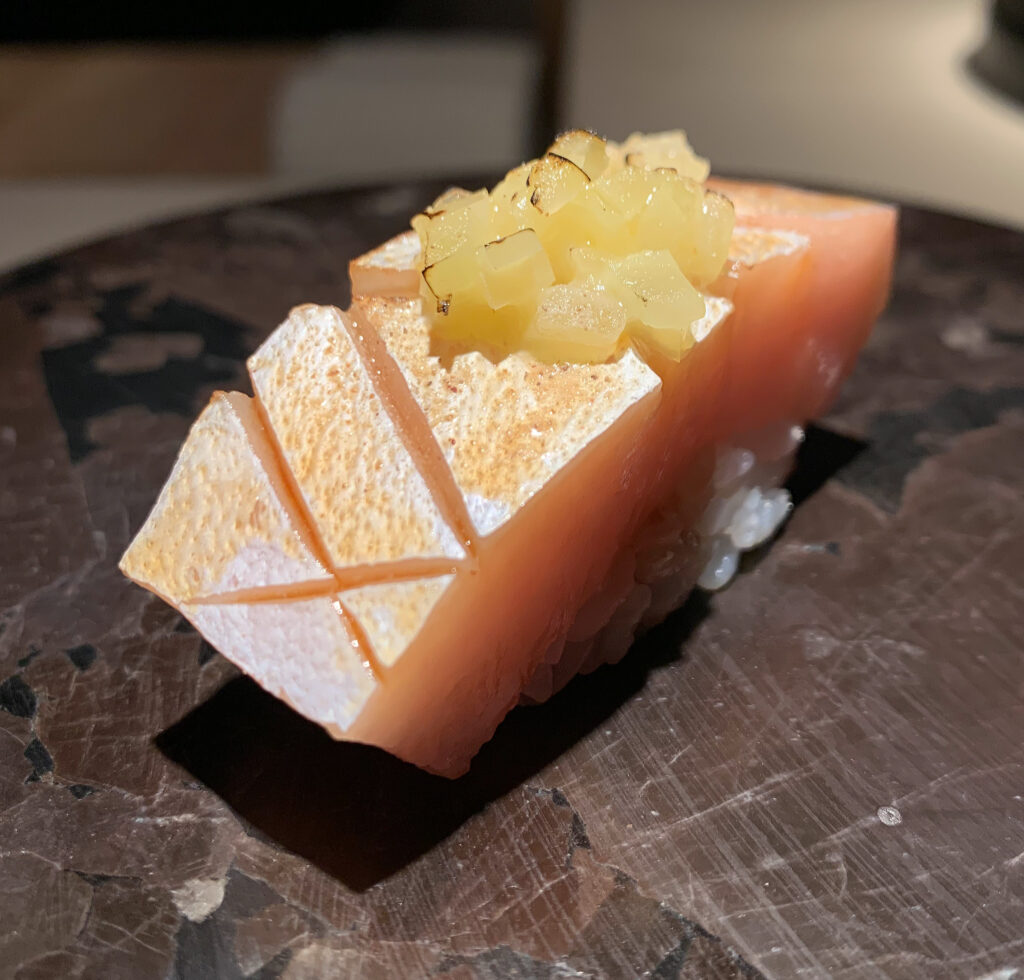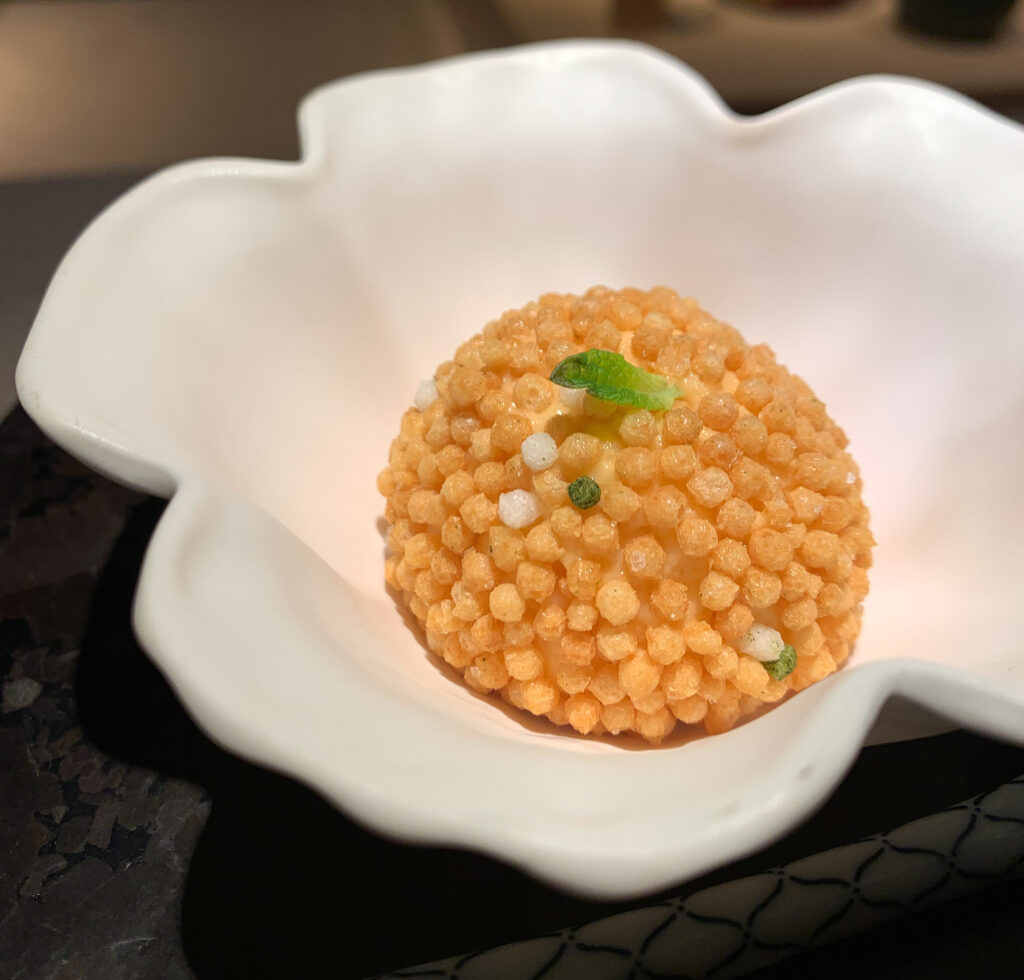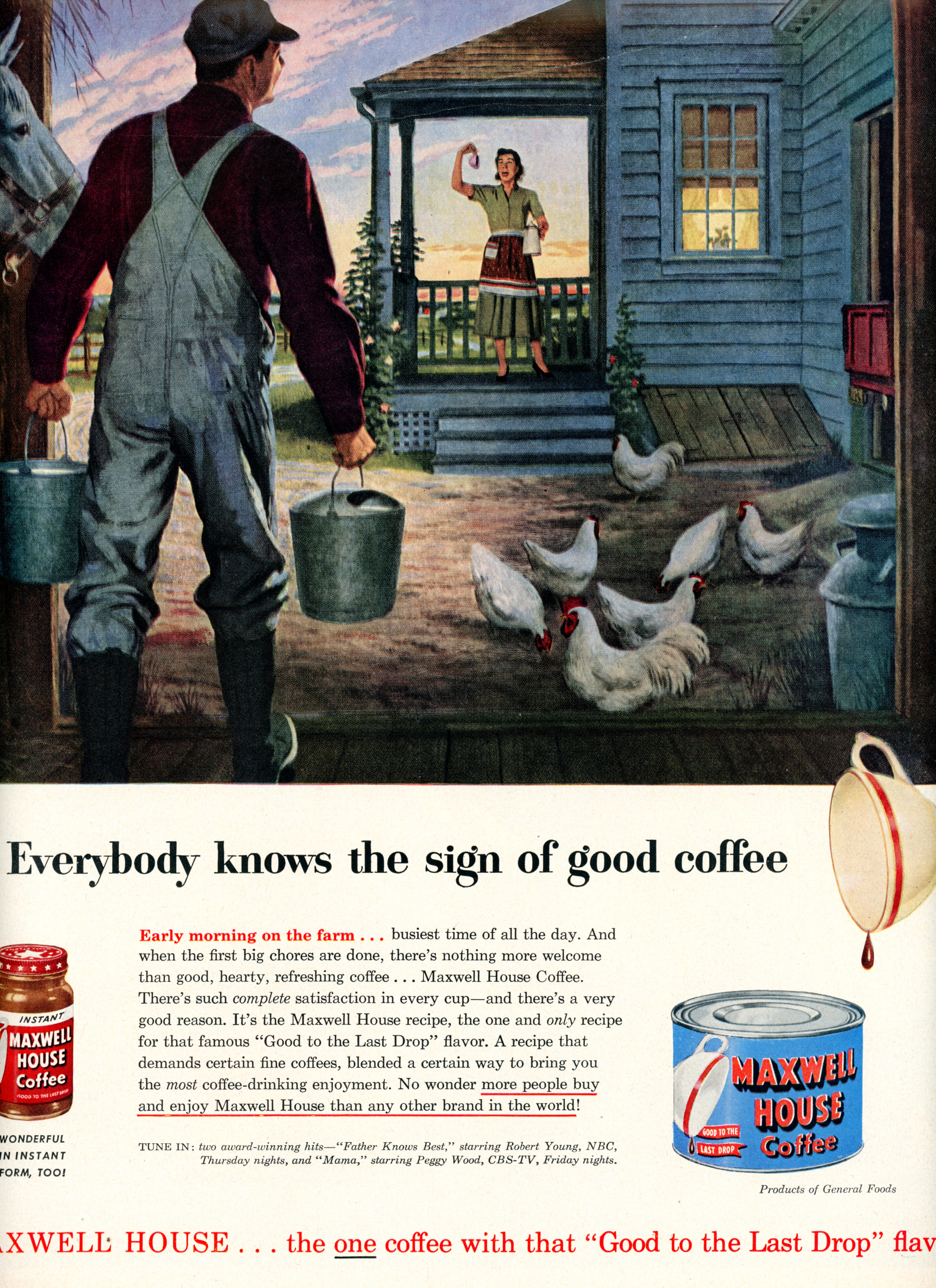You rarely visit Sushi-san anymore, but it will always remain a nostalgic place for you. Though LEYE opened the concept at the tail end of 2017, it was really in 2018 that you took notice.
In the years prior, you had witnessed New York City’s omakase boom. Masa (opened in 2004) and Soto (opened in 2007) had already held their Michelin stars (three and two of them respectively) for quite some time. Kurumazushi, Sushi Azabu, and Sushi of Gari merited single stars during the early years of Bibendum’s guide too (representing some of the city’s more notable concepts alongside then-starless mainstay Sushi Yasuda). Apart from Masa—which, cloistered in the Time Warner Center alongside Per Se, formed a “temple of gastronomy” from the very beginning—these were charming places that catered to a particular niche but did not possess the kind of glamour the omakase genre now entails.
Pete Wells’s four-star review of Sushi Nakazawa for The New York Times in 2013 is generally regarded as the turning point. The critic, one of painfully few whom you respect, reflected on this paradigm shift when demoting the restaurant to three stars in 2020: “I didn’t know it was going to change the sushi landscape…but I knew it was original and unexpected. I also knew that no other omakase meal lobbed out so many thrilling pieces of sushi, or was quite as entertaining. Within a year, its name was a metonym for excellence in the art of raw fish.”
Looking back, the critic deftly describes what made the restaurant so special for its time: “The great inspiration…was to translate an elite Tokyo-style sushi counter in ways suited to an American audience. They didn’t try to make you feel as if you were in a 1,000-year-old Zen temple in Japan…. Mr. Nakazawa put customers who might have felt out of their depth in a hushed, old-school nigiri sanctuary at ease. He was already a minor celebrity from his appearance in the 2011 documentary ‘Jiro Dreams of Sushi’…. Out on his own, he showed an instinct for the spotlight that the movie barely hinted at. His smile was quick. His laugh was quicker, and was heard every time he successfully startled diners by flicking live shrimp on to their plates.”
Though some “traditionalists found Sushi Nakazawa’s mix of American and Japanese sensibilities off-putting,” it “helped introduce Tokyo-style omakase, in which the chef decided what you would eat based on a close reading of the ocean’s seasons and, to some extent, pure whim, to New Yorkers who weren’t necessarily students of Japanese culture. You didn’t need to know that shiny-skinned fish are called hikari-mono, or that kohada come into season in April…. You just sat back and let it happen.”
The ”downside” of this new degree of accessibility was personified by the “rich young men” known as “’bromakase’ patrons” and lampooned on the show Billions in a scene shot at Sushi Nakazawa itself. There, “a sushi connoisseur upbraids a young moron who is sloshing each piece of nigiri in soy sauce as if he were dunking a mop into a bucket of soapy water.” And now, compared to when the restaurant first opened, “Nakazawa’s chefs and servers…warn you at the start of the meal to eat every piece in one bite, and never to top sushi with pickled ginger.”

You will leave Wells with his summation of the restaurant’s effect on the wider genre: “Before Nakazawa, the best omakase meals were typically served inside restaurants that did most of their trade in à la carte sushi; after Nakazawa, one dedicated omakase parlor after another opened up, and like Nakazawa, many of them were inspired less by Japanese customs than by modern New York stagecraft.”
With Masa, Nakazawa, and Soto as foundational experiences, you would sample a succession of increasingly splashy openings like Shuko (November 2014), Kosaka (December 2015), Sushi Zo (December 2015), Sushi Ginza Onodera (May 2016), Ichimura (January 2017), and Sushi Amane (June 2017). After your departure, the city would hit an even higher peak via establishments like Sushi Noz (March 2018), noda (March 2018), Nakaji (March 2020), Shion 69 Leonard Street (May 2021), Yoshino (September 2021), icca (October 2021), and ITO (Februrary 2022). The genre shows no signs of oversaturation (yet) and benefits—nearly a decade after Nakazawa’s opening—from a mature base of consumers that empower a broad range of price differentiation (with top spots costing around $500 per person and Masa charging $750-$950) and a high degree of distinction at the stylistic and aesthetic level.
In 2018, Chicago’s sushi scene (for you struggle to term it an “omakase scene”) could barely be called nascent. Yes, the craft had been practiced in the Windy City for quite some time, with places like Lawrence Fish Market catering trays of maki and sashimi for more than 40 years and Katsu serving straightlaced Japanese fare for nearly 30. However, while these kinds of expressions are, of course, beautiful in their own way, it stands worlds apart from the contemporary framing of sushi as a particularly trendy form of luxury dining and, more specifically, from omakase’s present privileged status within the experience economy. These “uncouth” Chicagoans ate sushi—oh yes they did—but never thought to worship the chef or dick-measure about who has the fattiest tuna.
Japonais, you suppose, had its heyday as “one of Chicago’s most hip dining destinations”: opening under chefs Jun Ichiwaka and Gene Kato in 2003 before bringing on Masaharu Morimoto in 2013 and closing in 2015 amid an eviction lawsuit. While the restaurant’s Las Vegas offshoot would last from 2007-2017, the New York location only survived from 2006-2011 after being branded a “big-box” “Nobu knock-off” and being saddled with a one-star review from The New York Times. In its time, Japonais unabashedly occupied the “fusion” genre that has today become anathema to tastemakers and critics. Slinging spring rolls, burgers, teriyaki, tempura, and filet mignon (cooked on a hot stone) helped comfort skeptics who, otherwise, would never set foot within a dedicated sushi concept. Thus, the restaurant helped introduce locals to forms like nigiri through mere exposure if nothing else. The association between raw fish and a sprawling, sexy venue filled with fashionable people had been constructed. These are the baby steps a dining scene must take to cultivate taste in new categories and eventually support more specialized concepts.
SushiSamba (opened in 2006 and closed in 2014) was very much cut from the same cloth as Japonais and dove, in its time, even more deeply into the fusion model. Sunda (opened in 2009), by comparison, embraces more of a Pan-Asian model while the Chicago branch of Roka Akor (opened in 2011) buffers its raw fish selection with a focus on steak. Arami (opened in 2011) would somewhat buck this trend (like by “discouraging you from using a lot of soy”), but KAI ZAN (opened in 2012), too, still embraces the fusion mold in its own way. But Juno (opened in 2013) seemed to signal a change in mentality. Yes, there were “oyster shooters, grilled king crab, and smoked kampachi” on offer, but the menu was “tempura-free” and emphasized raw fish “flown in from Japan, Korea, Hawaii, and New Zealand” with a “private seven-seat omakase chef’s table where you can go off-menu.” And Momotaro (opened in 2014) would up the ante even more: “Jeff (Ramsey) and Mark (Hellyar) are very offended by that fusion word…. It’s not our style. Kevin and I don’t like mango purees and aioli spread over our nigiri.” BRG would ultimately aim for a blend of “90 percent traditional, 10 percent modern” at the concept that—under former Japonais chef Gene Kato—remains respectable (if not superlative) today.
2016 would see LEYE get in on the act with the opening of Naoki Sushi within the former L2O private dining room at Intro. The small casual restaurant featured crowd-pleasing items like “Edamame ‘Guac’ Dip” and “Kagawa Chicken Teriyaki” but remained surprisingly focused on nigiri, sashimi, temaki, hosomaki, and maki before making way (in 2019) for the aborted reboot of Ambria (in partnership with The Alinea Group). In 2017, Brendan Sodikoff’s Hogsalt Hospitality took aim at the same genre with the announcement of Radio Anago. The spot (where Ciccio Mio currently sits) would open in March of 2018 with a focus on “sushi classics” and a few frills like “Steamed Pork Buns,” “Wagyu Tartare,” and “Houji Fried Chicken” (with edible gold). Radio Anago would close in May 2019 with the frank admission that “it didn’t work.” (Katana, a “glitzy LA import,” would also open near the Marina City Towers in 2017 but eventually close in the aftermath of the pandemic.)
But Sushi-san, perhaps benefitting from its comparably prime location at Grand & Clark, proved more successful. The restaurant expanded on LEYE’s existing Ramen-san concept with “hip-hop references” and a “relaxed vibe” playing home to “nigiri bombs, sashimi sets, tempura, and late-night yakisoba.” It was open until 1 AM on Fridays and Saturdays and, with non-Japanese offerings like “Vietnamese pork and a cocktail made with Chinese five spice,” aimed at a “younger demographic” than Naoki with “a more modern presentation.” It all sounded a bit gimmicky on the surface—like something made in the Sunda mold (but still even more casual)—yet Sushi-san delivered. The restaurant earned two stars from the Tribune, with Phil Vettel singling out diverse items like the “cute and smart beverage program,” “Tako Taco,” “Beef ‘n Bop,” edamame, and “12-seat hand-roll bar” for praise. The critic also paid special compliment to the $88 “Oma-Kaze” (named for Sushi-san chef Kaze Chan), a “reservations-only experience that has exactly four seats.” Vettel admitted the restaurant’s take on omakase was even “worth an extra star.”
Having returned from New York City and sampled the omakases offered at Arami, Juno, KAI ZAN, and Momotaro, you quickly made Kaze’s counter your home. On any given night, the rest of Sushi-san brimmed with energy, but sitting in front of the chef lent you his undivided attention. He was quiet, focused, and precise but still a good deal friendlier than your typical, stoic itamae. Most importantly, the $88 sum ensured that it was always Kaze himself who prepared your nigiri—often with a dose of humor and, after just a few visits, the kind of subtle (though shining) warmth that makes regular patronage so fulfilling.
Originally, it was said that the “omakase selections will rotate monthly,” but the menu—in fact—showed much more dynamism. Kaze served “whatever strikes…[his] fancy that day,” representing “the best of everything” from the totality of his restaurant’s fish sourcing. Of course, certain pieces were destined to repeat, but you were really impressed at how the chef always managed to find a new fish (or a particular segment of a familiar fish) to serve on a week-by-week basis. His toppings too—like “white soy, pickled plum and seaweed”; “lime zest and salt”; or “ponzu jelly and minted salt”—were on the pronounced, flavorful side without ever descending into needless novelty. The 18 bites, at $88, ran the gamut of all the usual suspects (tuna from Tsukiji, uni from Hokkaido) while preserving an immense feeling of value. The accompanying wine selection was not quite up to RPM levels of indulgence, but prices were more than fair and the other beverage options sometimes proved fun.
Overall, the “Oma-Kaze” totally overperformed for its era (vis-à-vis Chicago’s other exemplars of the genre). Sushi-san, to you and those you shared it with, formed a perfect introduction to the craft that ditched some of omakase’s pomp and ceremony while still privileging quality and achieving a kind of accessibility that, today, is even more the rage. You enjoyed the “Oma-Kaze” more than a dozen times from February of 2018 through July of the same year. It formed a thoroughly satisfying, often delightful experience (even in the context of menus that had cost three or four times the price in Manhattan). It was a fixture in your life—until it wasn’t. For the world of omakase amounts to something like an arms race, and, with no hard feelings (though perhaps a tinge of sadness), you followed the flow of Chicago’s rapidly maturing market.
That all began with Omakase Yume’s opening in July of 2018. Sangtae Park started slinging 15 to 17 courses in an eight-seat space entirely devoted to showcasing his craft. Priced at $125 (back then), the restaurant presented a noteworthy upgrade on what Kaze was doing at Sushi-san. Of course, economies of scale may have meant that LEYE’s relative value and quality could not be neatly reduced to what they were charging. But Yume had the intimacy, the stagecraft, and the charm that signaled omakase—untethered to any more casual concept—might finally begin to thrive in earnest. Service from Park’s wife was warm, the BYOB/corkage policy was generous, and the restaurant—even if much of the nigiri selection stayed consistent—always had new delicacies to offer à la carte at the end of the meal. You would patronize Yume six times over its first few months of operation before your eyes began to wander.
First, that took the form of Omakase Takeya (opened in August of 2018): 16 courses for $130 in a calm, underground lair beneath Fulton Market’s bustling Ramen Takeya. Another restaurant had upped the ante in terms of price, and it promised an experience that was also more focused and secluded than Sushi-san. Chef Hiromichi Sasaki didn’t quite offer the same “one man show” as Park—he was helped by two sous chefs but, crucially, formed each piece of nigiri himself. The wine and sake selection wasn’t much to write home about either. But you thought the nigiri was well-made and flavorful in a fairly traditional style. It was also presented in a space that felt carefully curated and pleasingly reverential. More than anything, it was heartening to see another establishment take aim at the genre and help to cement its burgeoning appeal. You visited Takeya some three times after opening before, once more, another omakase caught your eye.
Your admiration for Otto Phan’s work has now been extensively recorded. However, in September of 2018, you visited Kyōten with almost no sense of what to expect. At $220 for “approximately 20 bites,” it was clear that Chicago’s sushi scene was starting to get serious. Though arriving from Austin, Phan confidently occupied an aspirational price point that seemed to have more in common with Manhattan than anything the Windy City had yet seen (and that still holds true today). Of course, the chef had actually worked for Masa before making his name back home in Texas. He brought luxurious touches like caviar and truffles to the table too. But what struck you more was the larger grain of Phan’s sushi rice (now a hallmark of his and his protégé’s approach to the craft) and the corresponding size of his fish. Kyōten, even if the environment back then could not hold a candle to the current remodel, embodied a clear, distinct perspective on omakase from the start. When you made your second visit, Phan did not hesitate to meaningfully change the menu and has continued to do so every meal since. Yes, there were rough edges, but the chef’s potential was astounding. His outsider status, combined with total fidelity to the diners that defined his new home, was totally endearing. You were smitten, and you pretty much never looked back or considered eating sushi anywhere else.
When Mako opened in March of 2019, you put the restaurant through its paces. B.K. Park, described in his own words as “one of the country’s premier sushi chefs,” had worked at Arami and later opened Juno. Those places never really impressed you by the time you tried them—admittedly relatively late in their life as concepts—but the chef was a fixture in the community. Offering “up to 25 courses for $175,” Mako was poised to compete with Yume, Takeya, and Kyōten while offering an attractive value proposition (coming in at the higher end without looking to usurp Phan’s $220 price). The restaurant would be a “culmination” of Park’s “years of expertise seeking out and serving the most pristine fish in the world.” He had (once more in his own words) “done much to teach Chicagoans about sushi” over the last two decades and now felt the city was “educated enough” for an omakase spot to flourish. The chef was even rather emphatic that “so many chefs or owners…don’t know sushi” (“they think they can make money just making a roll, fill it with sauce”) in the Windy City.
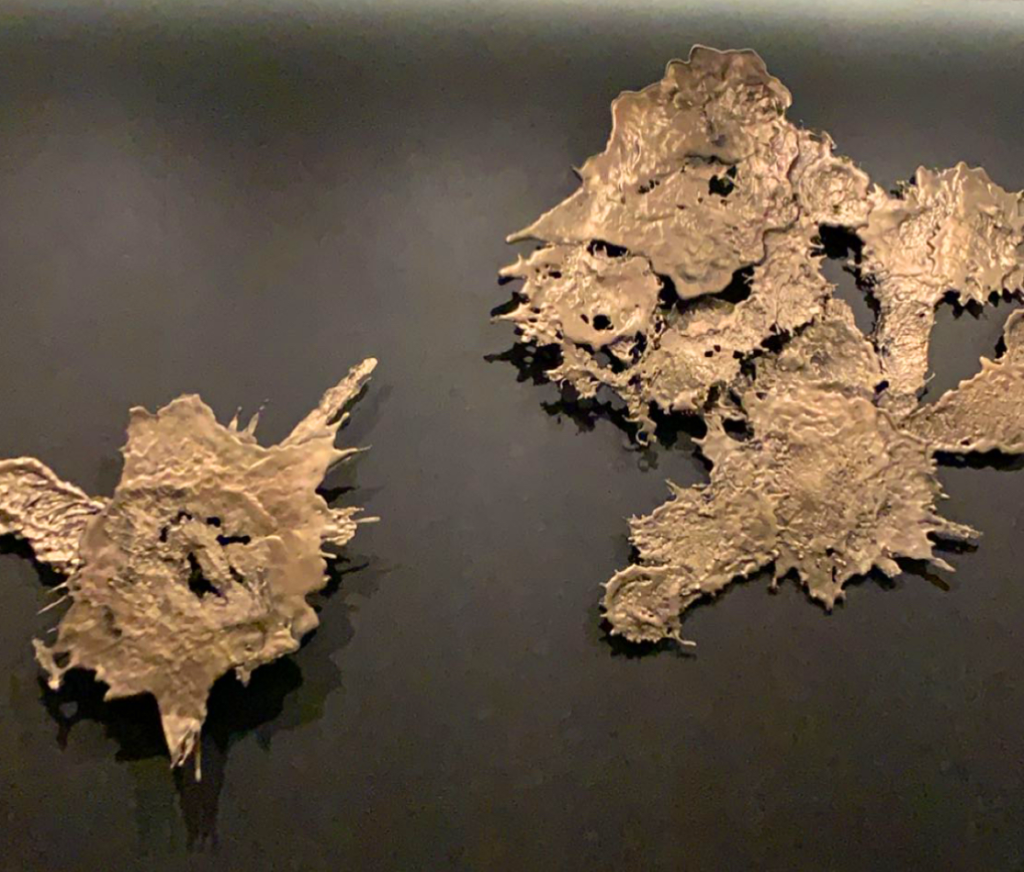
Mako certainly was the glitziest of Chicago’s omakase openings, boasting 22 seats (of which 12 are at a “graphite and walnut wood sushi counter”) in a beautifully lit and outfitted space. The meal’s aesthetic touches—like Park’s favorite cloches and a terrarium-like presentation of sashimi—surpassed the competition. The restaurant even benefitted from the unaccredited work of Tim Flores, who cooked preparations of sea bass and duck behind the scenes that would intersperse the meal’s three separate flights of nigiri. Yes, Mako had a lot going for it, but the concept was fatally flawed. Across four visits, the menu did not only show little development, but, in truth, Park never actually prepared any of your sushi. The chef split his workload with an apprentice, and fair enough you say. But the restaurant made no effort to seat you in Park’s section on subsequent visits, and there was even one occasion when the main man was not there at all and your meal was left in the hands of the apprentice’s apprentice. Compared to Sushi-san, Yume, Takeya, and Kyōten, the price you paid did not guarantee the master would actually touch your food. No, at Mako, you were treated to an assembly line style of nigiri production punctuated by unrelated hot plates in a sexy setting: a perfect way to placate diners being dragged there by their significant others. Ultimately, the restaurant struck you as a clever business concept that glossed over an important truth: Park may like to dress up but has little interest in actually working as a sushi chef anymore.
Next, Kikkō would open underneath Julia Momose’s Kumiko in May of 2019. Mariya Russell, the concept’s chef de cuisine, would become “the first black woman to command a Michelin-starred kitchen” later that fall. Her experience included time at Green Zebra, The Bristol, Nellcôte, Senza, and Oriole (working for her mentor and “big brother” Noah Sandoval at the latter two). On paper, this would not seem to suggest that Russell had any intensive training in the craft of sushi. However, pre-renovation Oriole did typically serve one or two pieces of nigiri as part of its tasting menu, and Kikkō played to the chef’s strengths.
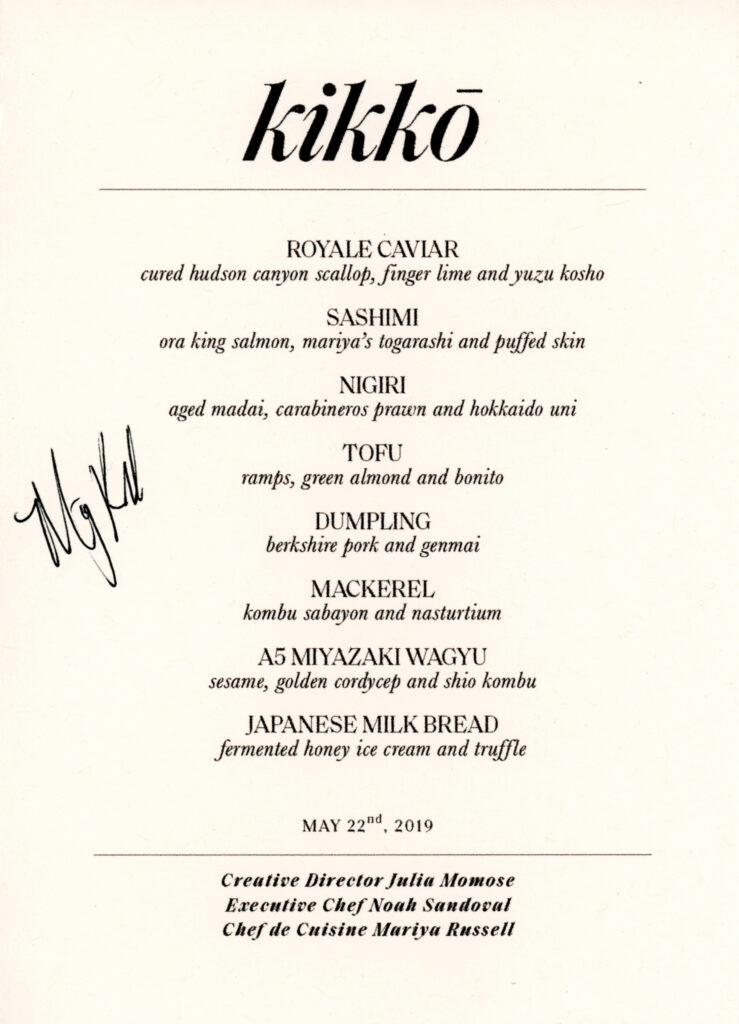
The $130, 10-seat omakase was set within a sleek, moody downstairs lounge and juxtaposed by a range of Momose’s expertly crafted pairings. The menu started with cured scallop and caviar before traversing a serving of sashimi (salmon with housemade togarashi and puffed skin) and a trio of nigiri (madai, prawn, and uni). Then, it shifted toward more substantial fare: tofu (with ramps), a pork dumpling, mackerel (with kombu sabayon), A5 Miyazaki wagyu, and the delectable Japanese milk bread (with fermented honey ice cream and truffle) to finish. You might have been tempted to term this format sacrilegious, yet you think the right word is actually “differentiated.” Compared to B.K. Park at Mako, Russell was not posing as a master sushi chef while simultaneously desecrating the craft and leaving an unseen collaborator in the kitchen to pick up the pieces. Rather, she, husband Garrett, and Momose had created an experience that was singular, competitively priced, and quite satisfying. They put their personality and warmth into each performance and made it feel memorable in a way that the city’s more stoic (or conceited) chefs couldn’t. To you, with Phan’s technical mastery totally transcending anyone else in town, Kikkō excelled by expanding the idea of omakase in Chicago beyond nigiri while still prizing tableside action. More importantly, it cemented the idea that this genre primarily forms a stage for the chef’s imagination and engagement—that it should be judged on the basis of storytelling and sincerity as much as rice, fish, and flash. Thus, it formed a worthy addition to the scene (and was richly rewarded by Bibendum despite being a bit unconventional).
Ultimately, Kikkō would come to an end in the wake of the pandemic—though not unhappily: Russell and her husband were moving to Hawaii. However, Sushi Suite 202, which first opened in February of 2020, would make it to the other side and resume operation in January of 2021. The concept, a spin-off of New York City’s Sushi by Bou, offers a “17-course 60-minute omakase sushi dining extravaganza” at a six-seat bar for $130 per head. Of course, this all took place in a room on the second floor of the Hotel Lincoln, with the restaurant being masterminded by a company that specializes in maximizing the “financial potential” of “underutilized spaces.”
Nobu would finally open its Chicago location (set within a Nobu-branded hotel) in October of 2020, more than seven years after its initial announcement. The menu, filled with Matsuhisa’s blend of classic and contemporary dishes (all rather luxuriously rendered), also features a $225 omakase in what is naturally one of the city’s most fashionable dining rooms (for a certain loathsome sect). KŌMO would open in October of 2021 just a bit further east down Randolph Restaurant Row. The concept, a collaboration between longtime Chicago sushi chef Macku Chan (brother of Kaze) and Nils Westlind, offers an eight-course blend of kaiseki and omakase (nigiri being served at the end of the meal) for $160.
Frankly, you have never visited Sushi Suite 202, Nobu Chicago, or KŌMO and will refrain from speculating as to their quality. Rather, with Yume and Mako cemented as “Michelin-starred” establishments (now priced at $225 and $185 respectively) and Kyōten occupying the super-premium price point of $440-$490 (inclusive of service), none of these concepts seemed (to you) intent on competing at a citywide level within the genre of chef-driven omakase. Instead, they looked more like attempts to capture particular niches (in terms of price and type of customer) within specific neighborhoods. So, you ignored them, and you ignored The Omakase Room for a good year too.
The concept, nonetheless, took shape rather quickly. Or at least it seemed to. Who knows how long LEYE dreamt of better maximizing the Sushi-san space with some kind of premium offering? The company did not tease the idea or look to drum up any hype. It really, with the closure of Everest at the end of 2020, did not even seem interested in pursuing finer expressions of dining anymore. But all the ingredients, surely, were there to get in on the omakase boom. The market had become a bit saturated, but what competitor could boast a prime piece of River North real estate? Who else could count on a successful, casual counterpart (then open for a little over four years) to serve as the foundation for an omakase and mitigate most of the risk? The Omakase Room did not need to justify itself as a splashy opening in an (only recently) post-pandemic era—it just simply appeared.
LEYE, in a manner that has now become standard practice for companies like Hogsalt and The Alinea Group too, ensured its new property was totally finished and tied up in a bow before introducing it to the public. “The Omakase Room at Sushi-san Is Now Open,” read the February 7, 2022 announcement from the official blog. Eater trumpeted this reveal on the very same day: “Lettuce Entertain You’s Fancy New Omakase Spot Swaps Formality for Friendliness in River North.” Meanwhile, Robb Report published its own coverage just a few days later: “This New Chicago Sushi Restaurant Wants to Take the Stuffiness Out of Omakase.” Clearly, a narrative had been set (and happily parroted by “journalists” none too proud to regurgitate a tidy public relations dossier without offering any critical insight). LEYE, it seemed, would be inserting itself at the high end of the genre while simultaneously framing competitors as “formal” or “stuffy.”
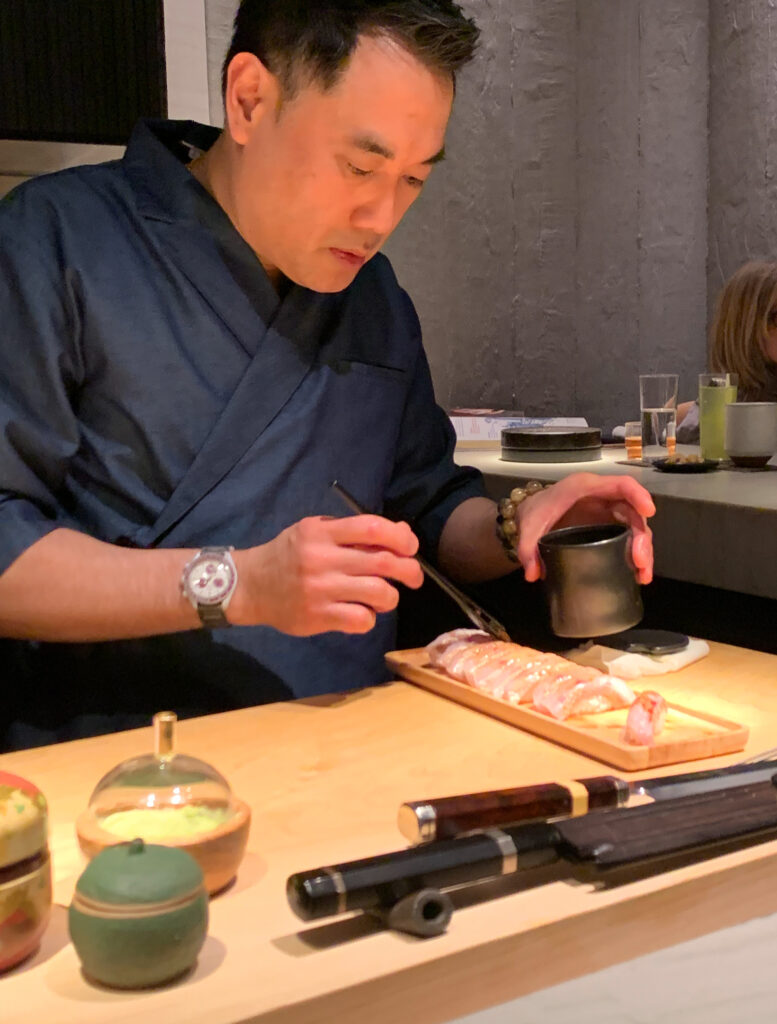
The official announcement confirmed that The Omakase Room would, as with Sushi-san’s “Oma-Kaze” be under the command of “Master Sushi Chef Kaze Chan.” Vettel, writing for the Tribune, would term him “virtually a one-man history of Chicago’s sushi scene.” Born in Vietnam, Chan came to the city in 1995 and worked as “the original chef at Marai, at the time the best sushi destination in the city” when it opened in 1999. (Miae Lim, the restaurant’s owner, would later open Japonais in 2003.) Before that, he apprenticed at Restaurant Suntory in Boston (as an assistant sushi chef) and later “continued his culinary training under official Japanese Sushi Master, Shozu Iwamoto” (information on whom you are unable to find). Beyond Marai, Chan’s reputation was built at places like Heat, SushiSamba, Kaze, Macku, and Momotaro (where, notably, he served as opening head sushi chef).
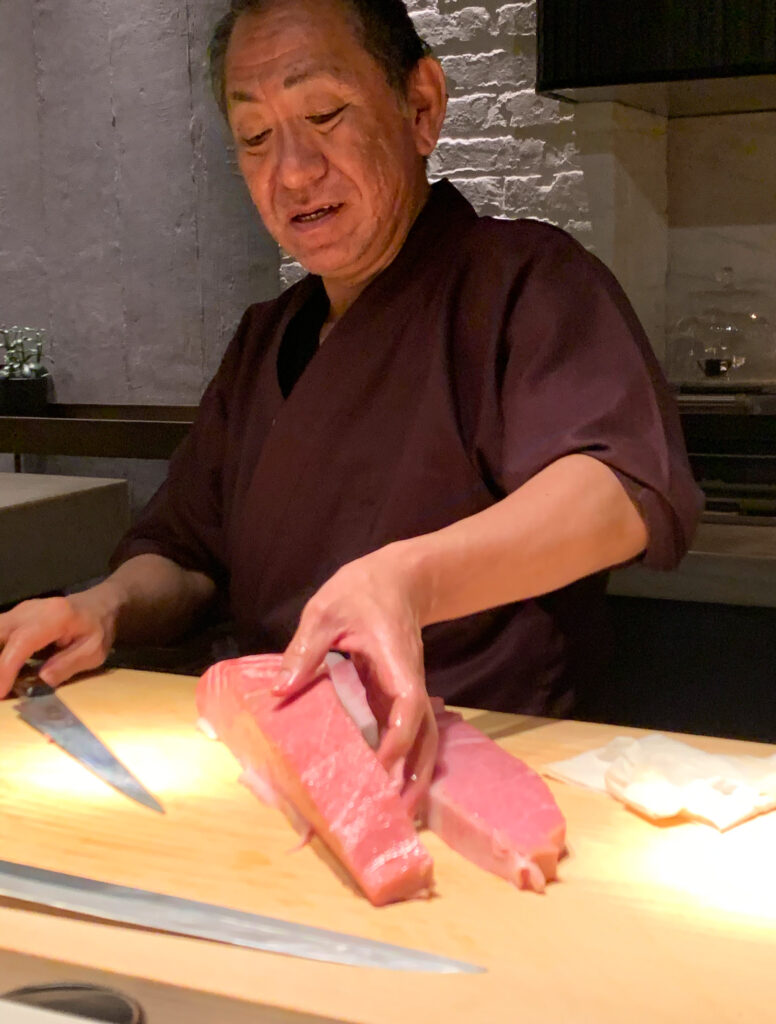
Chan would be joined behind the bar by “Master Sushi Chef Shigeru Kitano,” who was born in Sapporo, Japan. Possessing a childhood love of “the culinary tradition and the bold flavors of the sushi,” he started his career by helping around “at a tiny restaurant owned by a family friend.” However, over a period of six years, Kitano made a place for himself and, upon leaving, went on to work as an apprentice for five different “Sushi Masters” over a span of ten years. “I learned a little bit from each one, and each one had a personal approach to sushi that I could respect,” the chef would say. Upon arriving in Chicago, Kitano would work at Hatsuana and Kamachi “for 13 years” before becoming the executive sushi chef of SushiSamba. “When I started at Hatsuhana, the ingredients were, like, frozen hamachi, and the selection was very limited compared to what I knew in Hokkaido,” he reflected, but now “he and Chan can get anything they want, straight from Japan.” Ultimately, Kitano describes his approach to the craft as “traditional” (something that keeps The Omakase Room “grounded” according to his partner).
The concept was framed by LEYE as being “meant to feel like a dinner party hosted at Chef Kaze’s home.” It would boast “world-class cuisine” built upon “daily fish deliveries, with a focus on wild line caught fish” and “the best ingredients from across the globe” sourced in “partnership with the Yamasaki family at the Toyosu Fish Market.” The space is “reminiscent of a modern loft” with both a “living room” lounge area and a sushi bar defined by “raised Japanese Hinoki cutting boards” meant to “provide unobstructed views” that facilitate interaction with the chefs. The announcement even references “partnerships with local ceramicists and stone masons to create one-of-a-kind service pieces” like the “custom-made Lazy Susans placed at each seat.”
Accompanying the food would be a “highly curated beverage program” that joins together “award-winning Beverage Director Kevin Beary” (of Three Dots and a Dash and The Bamboo Room), “Sake Sommelier Daniel Bennett” (also a long-serving manager at Sushi-san), and “Wine Director Richard Hanauer” (who, in your opinion, has put together some of Chicago’s very finest lists at the various RPM locations). Notable offerings included “more than 100 bottles of whisky celebrating whisky houses throughout Japan,” “an extensive sake list,” and “hand-chipped ice” for drinks “influenced by refined Japanese cocktail bars.”
Via Eater, you would learn that “patrons…shouldn’t expect a traditional rendition of the [omakase] form: instead of a ritualized and generally silent performance, [the] chefs…will provide an entertaining experience with music and conversation alongside the ever-changing 18-course menu.” One of the restaurant’s partners would stress that “everything” about the concept “is designed to break down barriers between chefs and patrons.” The Omakase Room would showcase “items that are luxurious and made with craft and care” while looking to also demonstrate they are “not antithetical to being comfortable or having fun.” Much of that would be drawn from the aforementioned “unobstructed view” while seated at the sushi bar, meant to aid in “demystifying a culinary genre that some Westerners find intimidating.”
At the level of cuisine, Chan revealed he wants “to stay sharp and push the boundaries of the tradition-bound omakase he’s encountered overseas.” The chef, rather boldly, labelled omakase in Japan as “boring” and tasting “the same everywhere.” By contrast, he would weave in “the flavors he grew up with alongside other international influences” at The Omakase Room as part of a menu that will “change often—even daily.” “Combining things to bring out new flavors in the fish is fun for me,” Chan would say. “If I have an Italian or French ingredient—whatever I think is best for each different kind of fish—I’ll use it to bring out another flavor.”
Robb Report would echo many of the same sentiments, describing the “highly respected formality that goes into omakase-style dining” but noting it can “feel stuffy and intimidating to diners new to omakase.” Still, the publication offered a bit of nuance. The Omakase Room would be “hoping to redefine and demystify” the genre, to “make diners feel like they can really take part in the experience, not just be at the receiving end of it.” But this was not only framed as an appeal to sushi novices, forming a kind of remedial education that would bring them up to the standard of more worldly, “authenticity”-seeking connoisseurs. No, all that “pomp” and “reverence” may actually “feel unnecessary to diners accustomed to omakase [emphasis yours] who want a good time served alongside their nigiri.”
Seen this way, The Omakase Room was not just a bastardization of a tradition that had succeeded in snaring coastal, cosmopolitan Americans (ever eager to fetishize opaque imported customs and wield them against one another) but that largely went over the heads of those in flyover country. Instead, it represented—perhaps—the future of the craft. A future for the craft—at least—constructed reflexively in accordance with native tastes and not rooted in quelling status insecurity. In short, LEYE was betting that a more engaging staging of the experience would appeal equally to sushi neophytes as well as those who had scaled the heights of omakase (globally? nationally? locally?) and come to desire something less starkly ritualistic.

One of The Omakase Room’s partners would reveal that “the team traveled around the world, sampling traditional omakase experiences in Japan and some others closer to home like at Masa and Sushi Ginza Onodera in New York” as they prepared to open the concept. “We were blown away by what we saw,” he said, but they all “unanimously” wanted “an experience that was of that quality and of that standard, but that just felt more approachable, a little bit less formal.” The “respect for omakase dining in Japanese culture,” nonetheless, is something the restaurant is “very careful to uphold.” That is actualized through the care Kaze “takes with all of the ingredients, seeing the way he treats his knives, seeing the way he treats all of the items he brings in.” But “being respectful and being thoughtful and intentional shouldn’t be in the way of having fun and feeling comfortable.”
Elements like the “custom-made Lazy Susan” and “Japanese Hinoki cutting boards” would again be invoked. Yet the article also revealed that team “won’t know what a menu is for any given evening until that morning” and that they’re “writing menus almost up until guests sit down with us because fish are landing on our cutting boards that day.” Chan was particularly excited about the sayori (or Japanese halfbeak) because “no one else really carries that fish” due to its small size and many bones. The chef also noted how customers “want to learn a lot of things, about fish, about rice, how you cut the fish this way, how you cut the fish that way, why you serve this one first, why you serve this one last.” Educating them on these points does not only make Chan “happy” and “satisfied” with his work but will lead to greater “confidence” in the guest when they go to other omakases—invoking what they learned at The Omakase Room and “thinking about when they will be back.”
Ultimately, the restaurant wants “to make sure that every single thing that a guest experiences when they’re in the Omakase Room is the best in Chicago that night.” In short, they “want to be the best omakase in Chicago.”
The Omakase Room would open on February 10th, 2022—just three days after the concept’s announcement. It offered two seatings a night (5:30 PM and 8:30 PM) from Thursday through Saturday. That amounts to a maximum of 60 patrons who might enjoy the experience per week. (Kyōten usually can seat a maximum of 40 guests each week while Yume’s cap is 90 and Mako’s is over 150.) The ticket price was $250 (exclusive of 20% service fee and tax), a figure that remains the same today. That clocks in north of Mako ($185, exclusive of 20% service fee and tax) and Yume ($225, exclusive of gratuity and tax) but falls short of Kyōten ($440-$490, inclusive of service but not tax). LEYE, with the weight of all its resources, had clearly taken aim at the top of the omakase market. It leapfrogged the Michelin star holders in terms of entry price, promised a more engaging overall experience, yet could still seem like a relative value compared to the Alinea or Kyōten stratum of dining. And it was also worth asking: would the hospitality group’s economies of scale effectively erase the $140-$190 premium (and corresponding increase in quality) that Phan’s sushi entails?
Chicagoans would have to find out for themselves if The Omakase Room really delivered on everything touted in LEYE’s marketing copy. Steve Dolinsky, the ghoul of local gastronomy, would name the concept one of four “Restaurants for a Special Occasion” in June of 2022 without offering even a shred of insight on what he bizarrely called “Lettuce Entertain You’s homage to Japanese tasting menus.” Next, Chicago referenced The Omakase Room as part of its “Chicago’s New Sushi Wave” feature in August. It did not make it onto the “5 Omakase Spots You Need to Know Now” list (comprising Kyōten, Yume, Mako, Jinsei Motto, and Sushi Suite 202). However, Chan and Kitano would feature in the “Know Your Sushi Chef” article, being praised (relative to Jinsei Motto’s “Up-and-Comers” and Kyōten’s “Sushi Showboat”) as “The Sushi Masters” in town.
In September of 2022, the Chicago Tribune would award The Omakase Room two-and-a-half stars (“between very good and excellent” but short of “outstanding”). Nonetheless, Nick Kindelsperger’s article—”With The Omakase Room at Sushi-San, Lettuce Entertain You swings for the fences again”—cannot be considered professional food criticism due to the admission that “because of the cost, I only dined once for this review.” It is cute to see the “critic” contort himself to offer a meaningful (let alone valid) appraisal of Chan and Kitano’s work without any sense of the experience’s dynamism or consistency. But the piece frankly reads like LEYE propaganda when he references Everest, Tru, and “Anthony Bourdain visibly convulsing with pleasure…while eating at L2O back in 2009.” At face value, the hospitality group has hardly taken any risk in opening The Omakase Room (essentially a premiumization of the existing Sushi-san brand in an unused space). Rather than “swinging for the fences again,” the maneuver suggests something more like getting hit by a pitch (the sudden growth of the omakase genre at the hands of independent chefs) and taking first base (the easy money that comes from any scary new concept offered with the LEYE “seal of approval”). Kindelsperger’s analysis, in its fundamental superficiality and borderline corporate shilling, may be better suited to Yelp.
(The same goes for The Omakase Room’s appearance on the Tribune’s “25 best new restaurants in Chicago” list, where Kindelsperger weaselly terms it “an experience unlike any other in town.” You suppose that is what passes for “expertise” these days.)
In November, CS would highlight The Omakase Room’s sashimi as one of “Editor-in-Chief J.P. Anderson’s 8 Favorite Chicago Dishes Of 2022.” The piece would observe that “sushi is having a major moment in Chicago, with several world-class chefs calling the city home” but claim that Kaze Chan stands as the “best of the best.” He “masterfully executes an 18-course omakase menu in a 10-seat jewel box of a dining room” where “each course is a revelation” (but especially that sashimi trio). Time Out would put forth an almost identical blurb in December, explaining that “omakase-centric restaurants are so en vogue right now” but that few “match up to Lettuce Entertain You’s impressive 10-seat sushi counter hidden inside Sushi-san.” The Omakase Room would be termed “an exquisite, albeit expensive, meal that’s well worth saving your pennies for.”
This stands as just about all Chicago’s food media could muster to help guide consumers within a complicated and expensive genre. Nonetheless, at the time of writing, The Omakase Room can claim a five-star rating (based on 12 customer reviews) on Google and a four-and-a-half-star rating (based on five customer reviews) on Yelp. It also, as of just a couple days ago, can claim the number three spot on Chicago’s “Best New Restaurants” list (though, once more, the associated blurb barely offers any insight and cannot substitute for a valid review).
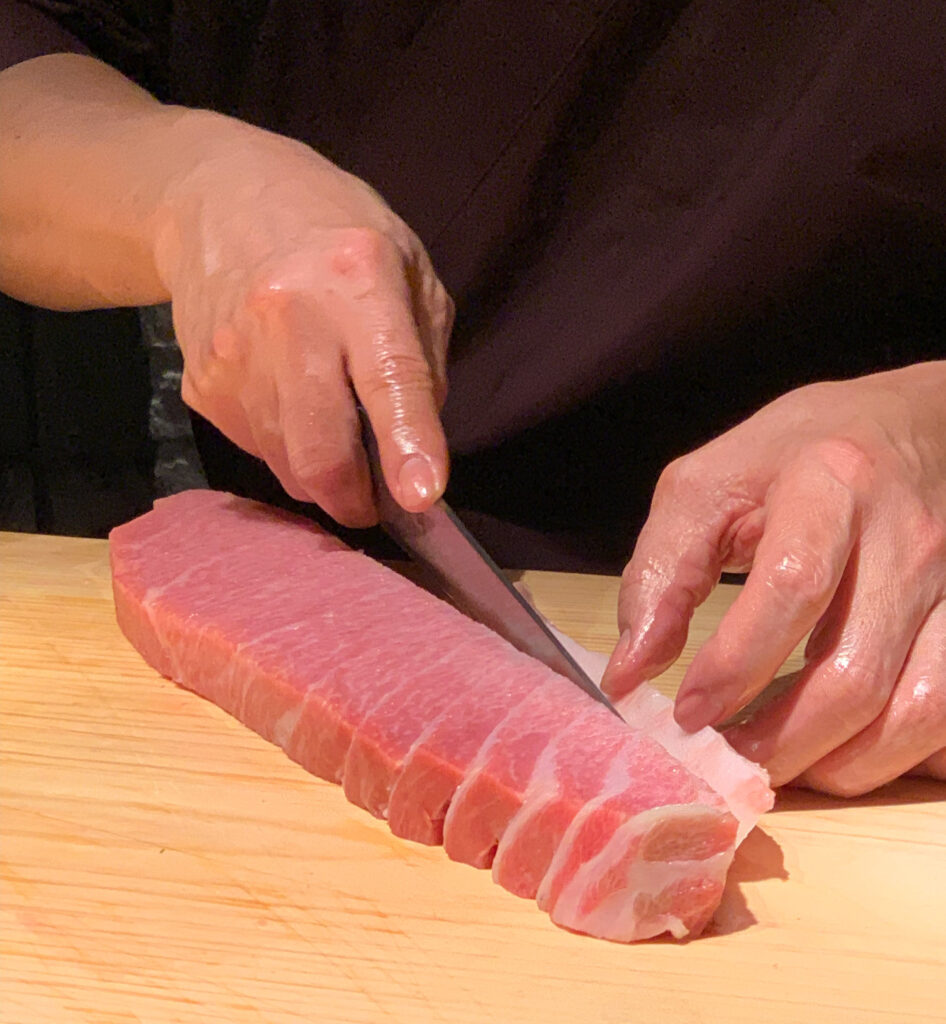
This certainly bodes well for LEYE, but sushi is a craft of fine degrees. Paying more should roughly (or is it hopefully?) correlate to higher quality fish displaying more nuanced texture and greater depth of flavor. Yet that extra lucre could just as easily be spent on totemic luxury ingredients (like caviar and truffles) that may make for enticing photos but often mask the character of the principal ingredients and, in doing so, preclude the kind of purity that should instead be prized. A higher price may also yield additional staff that, equipped with a robust beverage program and other creature comforts, enacts a kind of hospitality that complements (or is it obscures?) the chef’s craft. Consumers must ask themselves if they crave the very best sushi (at the level of sourcing and technique) or the very best “omakase experience” (at the level of presentation, interaction, and comfort). Of course, this is not strictly an either/or proposition, but it forms the basic orientation from which the evening’s expectations are drawn.
Those who prize the actual piece of sushi above all else may be interested in where the chef apprenticed, how often the menu changes, the rice they use, how they season it, where the fish comes from, how it is treated, who made the knives, how they are wielded (scoring etc.), and how all of these elements come together—via that mesmerizing prestidigitation—to produce a cohesive, superlative bite. Even if the itamae executes everything perfectly (a rather big “if”), this consumer must reckon with certain essential subjectivities like genetic differences in salt tolerance and one’s position on the hedonic treadmill. They must deduce if the chef’s palate more or less matches their own—or, perhaps, if the craftsperson would be amenable to adding a little more wasabi or a little less rice. Certain rudiments, like the character of the vinegar being used or the style and type of toppings, cannot really be changed outside of the itamae’s own experimentation. So, this kind of consumer must be able to sense that the chef exhibits a high degree of technique that also aligns with their personal aesthetic priorities. Then, they can ponder whether the premium this hypothetical “100-pt.” sushi entails forms an acceptable value proposition relative to the “95-pt.” or “90-pt.” examples available at a lower price. This is one train of thought that is worth pursuing as you evaluate The Omakase Room.
Those who prize omakase, first and foremost, as an intimate social experience and face-to-face encounter with craft operate in more of an emotional realm (one, no doubt, you are fond of). This does not necessarily make them chumps when it comes to cuisine. Rather, they affirm Marco Pierre White’s dictum that “service is more important than food” and, “if the environment is wrong, customers will not return to a restaurant.” These consumers are not worshipful sushi nerds looking to flex their knowledge but, rather, hosts who are status conscious for other reasons. They may be dining for business or pleasure, but they want to be impressed and to impress those whom they have invited. To this end, trappings and photo-ops are rather important, but these people are not always tasteless. Such a consumer desires warm, gracious service that makes their party feel special as it conducts the evening without a single false beat. They want to enjoy the shared wonder of watching a “master chef” work while still being able to toast and make merry. They want each and every desire to be anticipated so that the meal maintains a flowing rhythm and that the assembled guests can form the desired emotional connection. The difference between “90-pt.,” “95-pt.,” and “100-pt.” sushi is less consequential so long as the other pieces of the experience are in place and the food broadly tastes good. Consistency, rather than constant menu changes, may actually be a boon to those who do not want the evening blemished by experimentation. Omakase, to them, is about feeling confident and cultured as you share in a singular, memorable occasion. Any sense of “value” is constructed in accordance with how the evening feels and how that feeling compares to other restaurants of all stripes and even to concerts, plays, and other events. This is another train of thought that will inform your analysis of The Omakase Room.
With LEYE’s luxe sushi spot recently celebrating its first birthday, the time seems ripe for you to pay it a visit. In doing so, you will test the concept’s intention of making sure “every single thing that a guest experiences…is the best in Chicago that night,” as well as being “the best omakase in Chicago” and ensuring guests feel “it was an incredible value” too.
You have visited The Omakase Room a total of three times, spanning a period of January through March of 2023. As is usual, you will condense the sum of your experiences into one cohesive narrative.
With that said, let us begin.
Sushi-san sits on a relatively quiet corridor in the very heart of River North. But, sandwiched between Clark & Dearborn, the restaurant seems to fit naturally with the wealth of concepts that flow northward from the water. That includes LEYE compatriots like RPM Seafood, Steak, and Italian—to say nothing of Bub City, Beatrix, Three Dots and A Dash, Ema, Il Porcellino, Pizzeria Portofino, Ramen-san, or Lil’ Ba-Ba-Reeba! to boot. Yes, the Melmans have ensured that anyone eating along these particular blocks is likely to do so under their care. Yet Rick Bayless retains his small kingdom (Frontera Grill, Topolobampo, Bar Sótano, XOCO) and Carrie Nahabedian still has some presence there (via Brindille). NAHA, her former Michelin-starred establishment, is now home to José Andrés’s Jaleo outpost. Meanwhile, Tanta, Sunda, and Roka Akor each offer their own takes on sushi in close proximity too.
East of Sushi-san, heading toward Michigan Avenue, you come upon another collection of concepts: places like Yardbird, Eataly, Joe’s, Sugar Factory, Shake Shack, and The Purple Pig each interspersed within a dense mix of luxury hotels, foreign consulates, and shopping. However, north of the restaurant, the scene changes. You find the remodeled Rock N Roll McDonald’s—now the greenwashed “McDonald’s Chicago Flagship”—with its glass, shrubbery, solar panels, and ample parking. Portillo’s (now a shadow of its former self), Hard Rock Café, TAO, and Fogo de Chão also distinguish this area, which seems more geared to vehicular traffic (drawn from the Kennedy Expressway) than the wide range of walkable entertainment seen elsewhere in the neighborhood. West of Sushi-san, too, you hardly find anything worth talking about: salons, furniture showrooms, and a smattering of residential towers fill the space with only a couple restaurants (Le Select, Gene & Georgetti, Coco Pazzo) to speak of.
Close to the Merchandise Mart, of course, you find Hogsalt’s beachhead: Doughnut Vault, Gilt Bar, Ciccio Mio, and Bavette’s. But it is fair to think of Sushi-san as marking the northern boundary of LEYE’s extensive River North holdings. It signals where the concentration of concepts built north of the water—along and a bit above Kinzie—currently ends, where all the action begins to be funneled diagonally up the Magnificent Mile and into the Gold Coast. Apart from the aforementioned Joe’s (a place that, for you, surpasses any of the RPMs) and somewhere like Tzuco, this area holds little appeal for locals until you reach the Oak Street boutiques and Rush Street steakhouses (and, even then, this only attracts a particular demographic). Yes, Sushi-san is sort of the capstone of an entire hospitality district: the prime portion of River North that—loaded with a smaller proportion of national chains and still maintaining a good few superlative spots—can maybe hope to compete with the sprawling options in Fulton Market and on Randolph Restaurant Row.
However, taken in isolation, the stretch of Grand Avenue between Clark & Dearborn looks totally mundane. On the corner to the west, you find a three-star hotel that Marriott operates under its “Aloft” brand name. Beatrix, that most anonymous of all-day eateries, operates out of the ground floor with windows that open up onto the street. On the corner to the east, you find Mastro’s Steakhouse: an Arizona-based chain with a sizable presence across California. There, if guests happen to miss Sushi-san’s entrance and make a wrong turn, they might enjoy “Steak Sashimi” ($27) or a half dozen rolls ($22-$36) “developed exclusively for Mastro’s Steakhouse by Chef Angel Carbajal of Nick-San Cabo San Lucas.”
Smack dab in the center of the block stands the eight-story 57 W Grand building—“designed in 1912 by Huehl & Schmid to house the wholesale division of Remien & Kuhnert, a paint supply and wallpaper firm.” The façade’s red brick and white stone, topped with an attractive pediment, is offset by dark gray window fixtures that are matched by the design of the ground floor. In fact, this part of the building was renovated around 2012 in order to make its storefronts seem more subdued in a manner that matches the darker tones of the adjacent Mastro’s exterior. The work also uncovered the original “Remien and Kuhnert Co” engraving spanning the front of the structure (and that remains visible today).
Sushi-san occupies the former Osteria La Madia space at the western end of 57 W Grand. Its neighbor there is India House, whose original location opened in Schaumburg in 1993 and later expanded into Chicago a few years later. At some point (though when exactly you cannot quite tell), it changed addresses and ended up at the current spot. That was at least 15 years ago, for India House has been there long enough to merit a renovation (concurrent with the updating of the building’s façade) and continues to offer a popular $19.95 lunch buffet. Perhaps this provides some sense of LEYE’s closest competition: an interloping steakhouse, an Indian standby (with “over 250 menu items”), and the group’s own fast casual restaurant on the corner.
Across from Beatrix, Sushi-san, India House, and Mastro’s, the “Fort Dearborn” location of the United States Postal Service totally dominates its side of the block. Clad in brown brick and lined with associated gates, posts, cones, and trees, the building positively looks like a fortress. And, in its plainness, the structure saps most of the street’s energy. It precludes the development of any appealing stores or restaurants, marking the end of Clark Street’s action (unless one ventures further north in search of Ronald or Hard Rock). At the same time, it makes Sushi-San feel snug and, despite the neighborhood’s overall accessibility, just a bit out of the way from the main strip’s pulsating nightlife.
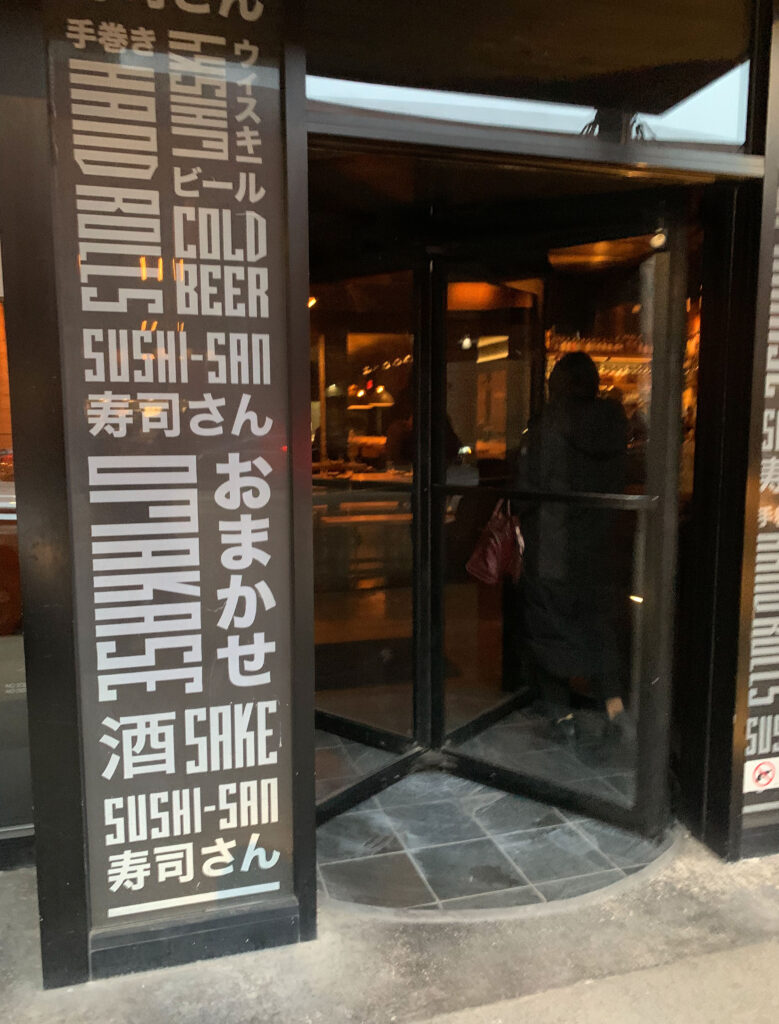
Approaching the restaurant’s revolving door ahead of your 5:30 PM (or 8:30 PM) reservation, the ground floor already looks to be in full swing. In the wake of the pandemic, Sush-san may not stay open until 1 AM anymore, but it does steady business from the start of dinner through closing (now 10 PM on Thursdays and 11 PM on Fridays and Saturdays). Pushing your way inside brings you to a small sliver of space with the host stand lying to your left and the hand roll bar to your right. One of the countless high-top tables that define the central part of the dining room sits directly ahead, so you turn and shimmy to make yourself small and stay out of the way while you wait to check in.
There are about 10 other people filling the same space at present. You maneuver yourself behind a cadre that has lined up to the side of the host stand. The rest huddle in the corner closest to the door—no doubt waiting for takeout orders or tables to become available. This scene can feel a bit overwhelming, particularly when the ingress or egress of other customers ripples through the assembled crowd. Nonetheless, Sushi-sans hosts and hostesses keep things moving. After giving your name, it only takes a moment for you to be whisked away from the door. On other occasions, one of the managers picks you out of the crowd upon arrival and precludes any need to navigate the other patrons altogether.
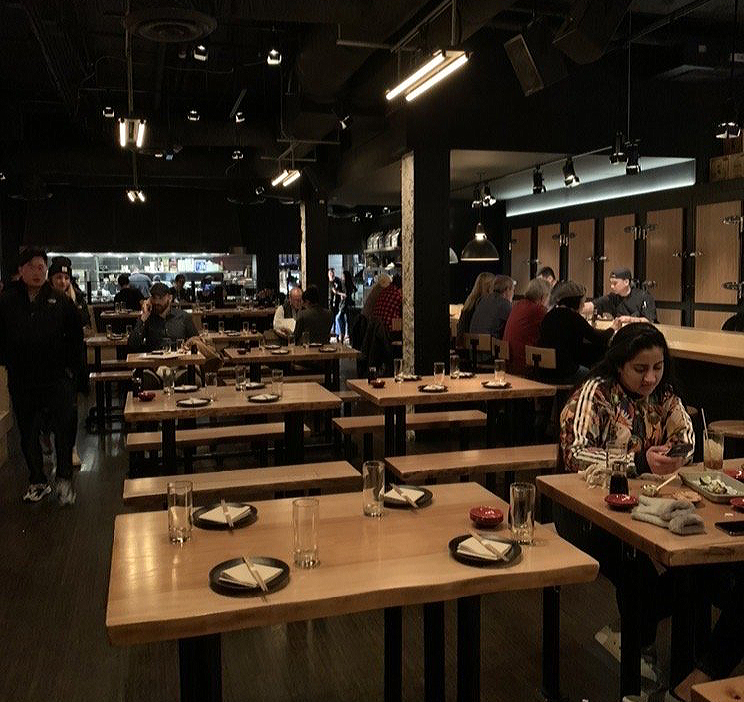
Being led through the restaurant, at this peak point of the evening, feels a bit like having a backstage pass. High-top after high-top, booth by booth, bar stool to bar stool, patrons sit clutching chopsticks and cramming maki down their gobs. Okay, it might not quite be so animalistic. But Sushi-san—with its moodily lit combination of light brown and black tones, its sparseness and maximization of seating—has always sought to be trendy. That is not even to touch on the concept’s “old-school hip-hop” styling (via the soundtrack, the “ice cubes,” or boombox-inspired to-go containers) or its invocation of emojis (via the “E-Mochi” desserts and bathroom signage). Rather, at core, the space is packed with bodies, buzzing with conversation, and awash with sake bombs while the open kitchen and sushi counter crank out a seemingly endlessly assortment of cutesy Japanese fare. It’s Nobu without the power brokers or the pretense, and it’s a thrill to wade through the action knowing you’re destined to slip through the back door.
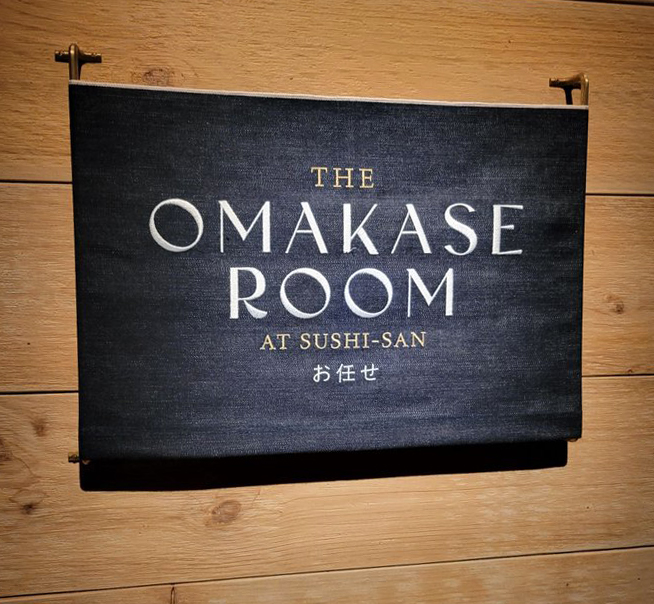
There, in the corner by the kitchen and the sushi counter, you come to a door, then a stairwell, and climb up a few flights until you see a placard: The Omakase Room at Sushi-san. Stepping through yet one more door, you come to the restaurant’s lounge. This is where those who talk about “an experience unlike any other” start to salivate. To your right, you find the first seating area: a mix of exposed white brick, piping, and concrete with hanging glass lanterns, marbled tile, an abstract patterned rug, a wooden screen, and a couple planters (from which one tree nearly reaches the ceiling). There’s a long, low couch set against the back wall with a plush armchair and a cocktail table positioned on either side. This zone is bathed in warm candlelight and can be used to seat parties of up to six guests. More typically, it accommodates two sets of two that are amply spread apart along the couch and the chairs.
To your left, you find another seating area that has the distinction of housing the restaurant’s bar. To that end, the space is a bit less plush and a bit more functional. There’s another concrete wall with some piping and ventilation on display. The lighting comes not from lanterns but by a pair of wrought metal chandeliers each fitted with six bulbs. The bar itself is set against the rear wall; it boasts a wooden base with a gray-and-black top and a textured backsplash that vaguely matches the marbled tile. The surface holds a neat arrangement of mixers, tools, and ice bucket for the crafting of cocktails. The top of the bar features more than 40 bottles of Japanese whisky (only a small fraction of Sushi-san’s full collection) and a TV just above that. On either side stand shelves holding glassware, candlesticks, and other bric-à-brac. One lower level, however, holds a record player that is actually used to pipe music into the space.
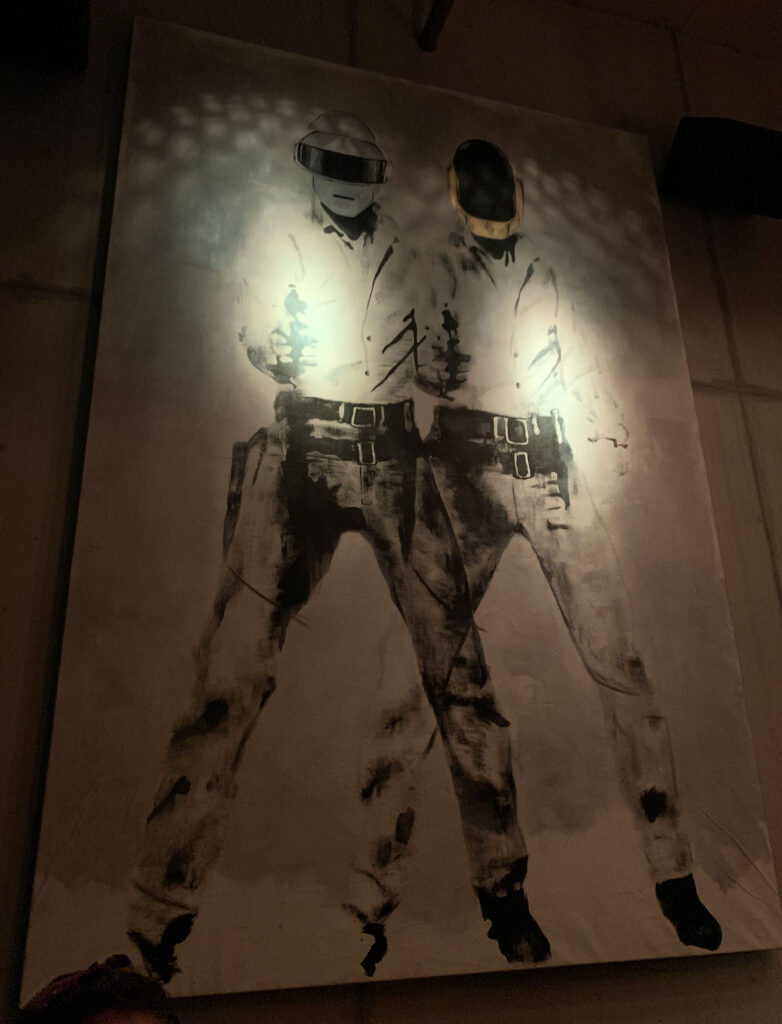
In front of the bar, you find—to one side—a set of armchairs with accompanying cocktail table. To the other side, you find one additional low couch flanked by another set of chairs and tables. Candlelight, once more, ensures the setting feels intimate (if not downright romantic). But the most dramatic touch comes by way of a canvas replicating Andy Warhol’s Double Elvis [Ferus Type] but replacing The King’s head(s) with those of Daft Punk. The work sits above the low couch, meaning that those seated in the armchairs enjoy the best view. This helps prevent the composite from seeming too tacky or out of left field (for the French electronic duo has no obvious connection to the “old-school hip-hop” theme downstairs). Rather, this burst of pop reminds guests that LEYE wants this experience—even if it is on the luxurious side compared to the group’s other offerings—to be playful.
Overall, at an aesthetic level, you think The Omakase Room’s lounge is successful. The space is somewhat guilty of following in the next-gen Melman tradition of throwing a wide range of materials at the wall and seeing what sticks. It also constructs a kind of contemporary luxury that offers little to no sense of place. However, the design is smart in its avoidance of tacky Orientalism (that would only serve to invoke the sense of otherness LEYE is looking to avoid). Instead, it offers layers of detail that, even if they are somewhat senseless, serve to attract the eye. The furniture, likewise, is comfortable to sit in and spaced in a way that maintains privacy, allowing you to confer with your guests before the meal while maintaining the sense of a singular, shared encounter. The room, in short, really feels like a haven and cements a memorable transition from all the activity you witnessed downstairs. Its utility, nonetheless, is really demonstrated through your interactions with the staff.
Stepping into the lounge, you are warmly welcomed and relieved of your belongings. Given the modest number of diners at each seating, as well as the brief bottleneck that occurs when checking in downstairs at Sushi-san, LEYE manages the flow of patrons perfectly. Other parties may already be present—tucked away in their chairs with cocktails in hand—but the space, upon entry, feels entirely your own. This might have something to do with the profusion of candlelight, which allows you to get a sweeping view of the room without attracting anyone else’s eye. You may also peek through the curtain leading to the sushi counter—the promised land—that benefits from a more comprehensive lighting scheme. But a subdued mood certainly reigns: this is your carefully curated evening that just happens to be shared with a handful of mysterious strangers. You are not their entertainment, and they are not yours. Friendliness can certainly be abided, but intimacy—untainted by any contrived “dinner party” character—remains the order of the day.
The spatial contrast between the darkened lounge (backstage) and bright counter (front stage) is echoed by the service. Being led to your place on one of the couches or in one of the armchairs, you are offered a welcome drink: a delectably sweet nip of green tea and sushi rice horchata to meditate on for a moment. Shortly after, the server returns clutching the beverage menu. They are sure to note, when applicable, that you have already selected (and paid for) a pairing. They also warn that your stay in the lounge will be a brief one, and that you should feel no pressure to order anything during your stay. Just the same, the server springs into action should you desire a libation. Depending on your view, it might be mixed before your very eyes at the aforementioned bar. It arrives in short order and, should you not have a chance to drain it before dinner, will be transported to your spot at the counter on a silver tray.
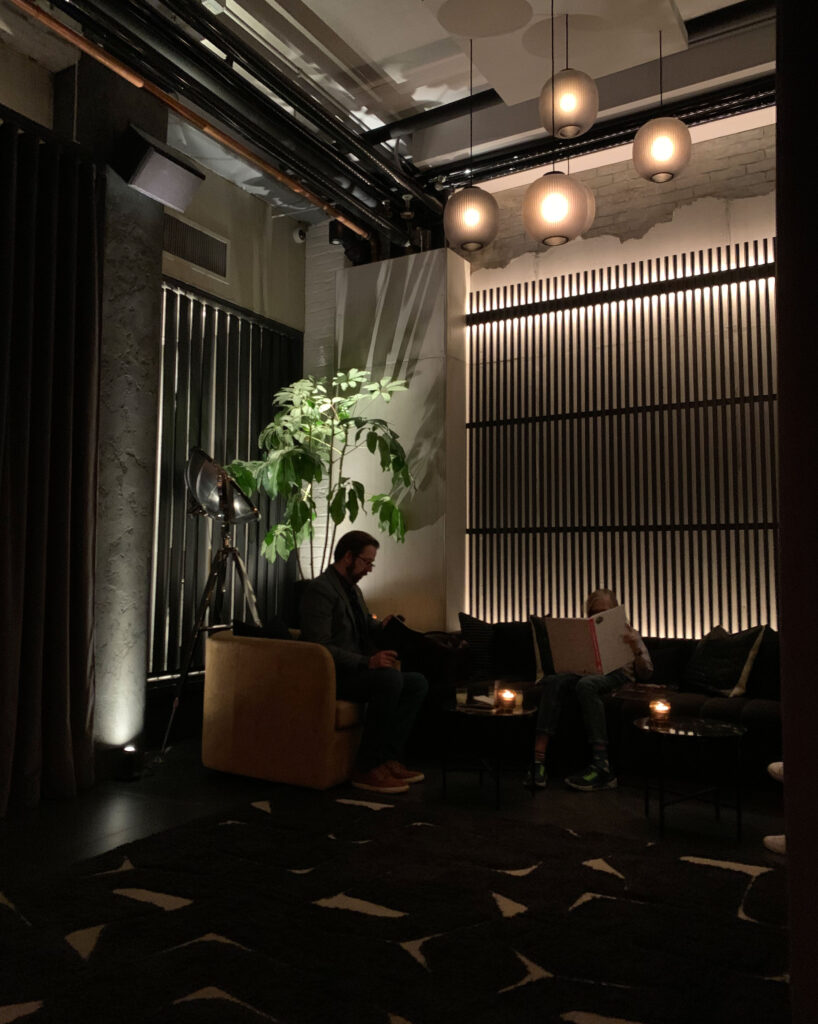
By your measure, The Omakase Room’s lounge succeeds in adding to the dining experience on account of its restraint. Yes, everyone is offered that welcome drink, but it’s not nearly enough booze to really affect the palate. Rather, it’s a nicety—a frill—whose lilliputian size reinforces that this is only a waiting room. The staff does not ply you with any small bites, a gesture that you welcome in certain concepts but that, within the omakase genre, feels underhanded. (That is to say, mediocre chefs may try to frontload the menu with a few luxurious morsels in the lounge in order to get the hooch flowing, hit an early “peak,” and distract from the ultimate quality of their nigiri.) No, the sense of anticipation that builds with the ticket price, the walk through the downstairs dining room, and the first glance at the sushi counter is totally preserved. Not one grain of rice touches your lips until you are face to face with the chefs, and that superlative, magical moment is not spoiled by any heavy-handed attempt to make the lounge anything more than it is. This is worth appreciating, for it demonstrates how LEYE may enrich part of the experience (i.e., waiting for the meal to begin) while honoring the emotional underpinnings of the meal. Once again, the evening does not devolve into a frivolous “party” but strikes a careful balance between total comfort and a more considered (you would say rewarding) atmosphere of connoisseurship.
The front-of-house team, though programmed in the reliable LEYE fashion, certainly plays its part. The Omakase Room maintains a ratio of roughly one staff member for every two to two-and-a-half guests (not counting the chefs). That includes the sake sommelier you previously mentioned (also a manager) and one of the hospitality group’s partners, who oversees Sushi-san more broadly but leads its crown jewel from the front. (This partner also personally calls to confirm reservations, something that vexed you at first but—in this era of Tock text confirmations—is actually charming.) The remainder of the staff may not technically be management, but they bring the same sort of bearing and polish to their work. Snappily dressed (though not uniformed in any noticeable way), the servers have all the time and space they need to sense your particular energy and cater to it with some degree of sincerity. Of course, when dealing with the group’s frequent diners, the team will also have plenty of notes to draw on. But the interactions all feel natural (and, thus, canny).
At the same time, there is little question that Chan and Kitano are the stars, so the front of house knows how to be sharp and informative without (when you are later seated at the counter) ever stealing the spotlight. Instead, they ensure you do not go one moment with an empty glass or plate before you. They may even—as a reward for repeat patronage or upon ordering of a particularly exorbitant bottle of sake—share a pour or two from one of the pairings with you. In this manner, The Omakase Room’s team is equipped to be proactive, generous, patient, and pleasing in a way that blows many of Chicago’s other omakases out of the water. Certainly, LEYE possesses enviable resources to make this a reality, and the connection you feel is not quite the same as when you are hosted by the chef’s partner (or, perhaps, when they operate as something close to a one-man band). However, the restaurant is exploiting an advantage that its larger hospitality group has earned, and it is hard to deny the excellence of service that supremacy ultimately yields. The concept’s target audience (those who are not as inclined to fetishize an omakase free of any corporate imprint) is sure to be delighted by every interaction. You, yourself, cannot find any complaint, and it stands to reason that Bibendum will be quite a big fan of this staffing ratio too.
After spending what feels like only a few minutes in the lounge, you are invited to take your place at the sushi counter. Once again, there is no mad scramble or need to maneuver around the other patrons. Instead, the staff calmy approaches each party and guides them past the curtain and up a couple steps to their particular seats in a carefully synchronized process. You may, upon settling in, choose to greet your neighbors. However, while you have found the crowd to be friendly (particularly when couples are seated next to each other), most patrons default to a kind of performance mentality at first. That is understandable, for Chan and Kitano man their posts and greet each grouping upon entry. The chefs busy themselves with some final prep work, but the crowd waits on tenterhooks for all their anticipation to come to some delectable resolution. Making the transition from the warm glow of the waiting area into the bright light of the dining room proper drives the point home: you are on stage, and it is finally showtime. But what about the set dressing?
For its luxe omakase, LEYE has designed a space that is totally singular in Chicago. First, it is rather vertical, with high ceilings that draw the eye upward and prevent you from feeling cloistered. (Mako and especially Yume are guilty of this while Kyōten and even Sushi by Scratch cleverly avoid it.) Thus, while you might still be seated as close to the chef as anywhere else—while they might remain the center of attention—it feels like there is a bit more breathing room. Your eyes can wander. You can disengage. It still feels like you are out on the town and not stuffed inside a jewel box that leaves no other option but to observe the sushi ceremony reverently.
More specifically, The Omakase Room’s counter is defined by a ribbed, wooden base whose dark brown tone and texture matches the housing of the range hood that hangs on the wall behind the chefs. The functional nature of this installation is well hidden, for it also displays the restaurant’s logo (a sleek spiral pattern) at the dead center point of the dining room. Above the hood, the room’s ceiling is cut out—providing another touch of darkened wood. Down from it hangs a track of lighting, done in the same color, that traces a path around the U-shaped bar. Likewise, the black marbled tiling (seen throughout the lounge) remains. However, the wooden surface of the counter, the room’s walls, and the portion of the ceiling that is not indented are all rendered in whitish (sometimes bordering on light gray) tones. This contrast sounds stark, but it actually helps to frame your field of vision while accentuating the chefs, their tools, and the many enticing hues of their fish.
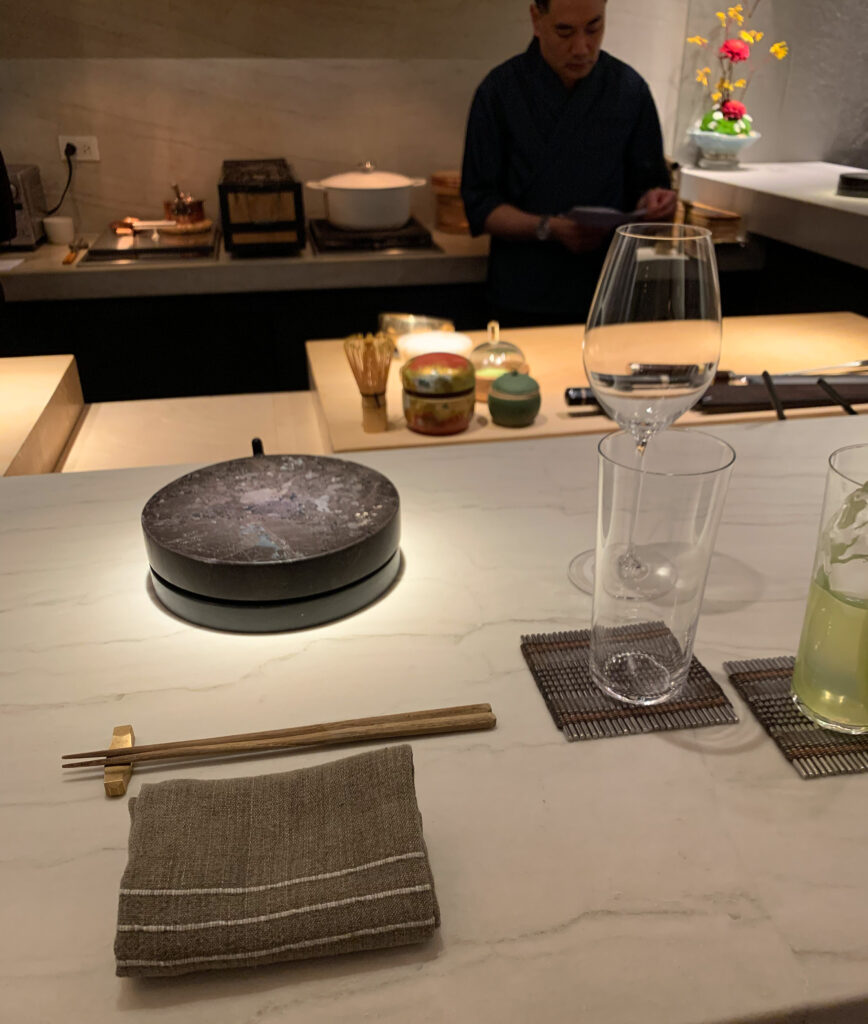
Honing in on some of the finer details, you might start with the chairs: barrel-shaped with a tannish color (perhaps meant to match the cutting boards) and velvety upholstery that all swivels on a stainless-steel base. This makes for solid, adaptable, and totally refined seating that easily surpasses the comparably humble furniture at The Omakase Room’s competitors. Facing forward, you may also note the attractively worn wood of the chopsticks, their gilded holder, and the ribbed metal coasters used to hold water or cocktails. The restaurant’s glassware, on that note, is slender and minimalist (so as not to get in the chef’s way) but feels pleasing in the hand and suits its purpose well (like the stemmed, tulip shape used for sake). The much-touted “custom-made Lazy Susan” lies toward the far end of the counter, its finish vaguely matching the style of the restaurant’s tiling.
Just beyond the edge of the surface, Chan and Kitano’s work area sits a few inches beneath the sushi bar. It comprises the aforementioned cutting boards along with accompanying knives (with gilded handles), chopsticks, graters, and a variety of painted ceramic vessels containing various garnishes. Each of these latter items is daintily arranged and serves to offer an additional burst of color when set against the grayscale backdrop. Behind the work area, underneath the range hood, you find a couple stovetops, a konro grill, a toaster oven, and a torch that are wielded when necessary in the preparation of certain nigiri. Adjacent to this station—at the end of the U-shaped counter that touches the wall—you find a small flower arrangement whose yellow, green, and red tones outshine anything else in the space. Its effect, nonetheless, is carefully managed by placing the composition somewhat out of the way.
Overall, The Omakase Room’s sushi counter is successful, like the lounge, on account of its restraint. Kyōten may feel a bit more luxurious (though whether other aspects of the experience live up to that veneer is a fair question) and a place like Sushi by Scratch more memorable (in a hidden underground lair kind of way). However, Chan and Kitano preside over a room that feels sleeker than Mako (probably its closest match at an aesthetic level) and more comfortable than Yume. LEYE’s choice of fairly bland contemporary styling fits with the design scheme they have popularized at places like the RPMs. It matches a desire to transcend omakase’s stereotypical association with wood (and lots of it) to please patrons that are not inclined to wholeheartedly worship tradition. At the same time, the space features plenty of little touches that show a glimpse of the concept’s (or is it the chefs’?) personality. Most importantly, lighting, color, and sightlines combine to ensure the counter really feels like a stage. This empowers patrons to take in every aspect of the performance and indulge in the kind of interaction LEYE felt was missing from the genre.
As you acclimate yourself to the sushi counter, one of the servers offers to bring a stand for any purses in search of a hook. They ask your choice of water and, should you not have already selected a pairing through Tock, inquire if you would like something else to drink. (On one occasion, a lone diner seated next to you elected to stick with water. The reaction of the staff—though this should be expected—was totally gracious and affirms that LEYE does not view the space, however luxe, as a “hard sell” environment. You cannot say the same for Masa.)
The preface to The Omakase Room’s beverage list defines the program using the words “care” and “delight.” They reflect “what you can expect” from the offerings, “all carefully curated to guide you through your omakase experience” and comprising everything from “pours of Japanese whisky and cocktails with hand-crafted ice” to “adventurous and novel sake pairings.” The introduction ends on its own reverential note: “we are honored to share what we love with you. We hope you enjoy them as much as we do.”
The selection starts off with a set of four cocktails from Kevin Beary of Three Dots and a Dash/The Bamboo Room. There’s the “Borrowed Brass” ($19), made with Blanco Tequila, Espadin Mezcal, White Port, and Pandan; the “Japanese Old Fashioned” ($24), made with Yamazaki 12, fresh banana, and Okinawa sugar; the “Guilty By Association” ($16), made with Pineapple-steeped Armagnac Blanche and cold-pressed honeydew melon; and the “Strawberry Highball” ($16), made with Junmai Daiginjo sake and the titular fruit. The pricing on these drinks may seem high at first glance, but it actually accords with Mako (its three cocktails running from $17 to $25) and Jinsei Motto (where all 14 of its options cost $17). Neither of these restaurants, however, can count on the talent of a beverage director like Beary—whose concept The Bamboo Room earned the “Campari One To Watch Award” at North America’s 50 Best Bars 2022.
While the “Borrowed Brass” tastes a bit too rich and boozy for a tequila/mezcal cocktail that occupies the top spot on the menu (especially when an old fashioned is already offered), the “Guilty By Association” is a delight. It displays the kind of pure, refreshing, fruity quality that you most enjoy along with ample acidity and a ripe, rounded finish. This allows the drink to function perfectly as an apéritif without blowing out your palate and detracting from the delicate seafood to come. You count it among the best cocktails you have sampled this year, and one that really lives up to Beary’s estimable work in the tiki world.
Moving on, you find a pair of spirit-free cocktails that also appear as part of the restaurant’s “Spirit Free” pairing ($65). The latter offering features the following blurb: “our premium, zero-proof craft cocktails maintain their complexity and depth from tea-derived infusions—a sophisticated beverage experience delivered in partnership with Rare Tea Cellar.” À la carte, the drinks are titled “Freak Flag Flying” ($14), made with Freak of Nature Oolong, melon, and pandan, and “Strawberry Lapsang Old Fashioned” ($13), made with Lapsang Souchong and a strawberry cordial. You have sampled both of these as part of the aforementioned pairing and think they are nicely made, offering an appealing weight and texture on the palate while nicely balancing sweetness and complexity. Rounding out this section, you find four additional loose leaf teas: the “Sakura Dream” ($15), “Emperor’s Dattan Sobacha” ($7), “Freak of Nature Oolong” ($11), and “Emperor’s Gyokuro” ($9).
While these libations are fine and dandy, wine—for you—always forms the main event, and sake, too, should be given due consideration within this genre. Patrons are first met by a page featuring the various pairings. Apart from the “Spirit Free” option you just discussed, these include “Sake” ($95), described as offering “refinement and subtlety”; “Wine” ($150), described as a “bolder pairing”; and “Wine & Sake” ($175), which offers “the delicacy of sake alongside the richness of our wines” and “meet[s] the meal with power and poise.” At a structural level, you really like this pricing scheme. It ensures that those seeking the cheapest turnkey solution will likely opt for the “Sake,” which—for an audience that might not have much experience with the beverage—brings a sense of novelty to the experience. By pricing the dedicated “Wine” pairing a bit higher, LEYE ensures they can offer “world-class wines from a variety of terroirs” rather than cost-effective bottles guests might recognize from elsewhere. The “Wine & Sake,” meanwhile, does not look to occupy a super-premium price point but simply allows the restaurant to offer the “best of both worlds.” This idea particularly rings true when you are served both a wine and a sake to alternate between upon reaching the meal’s tuna- and wagyu-fueled crescendo. Overall, in their degree of specialization, these four options compare favorably to the lone pairings offered at places like Mako ($95) and Kyoten ($140).
Personally, you have only sampled the “Wine & Sake” pairing. On that occasion it comprised:
- 2017 Moussé Fils “Spécial Club” (Les Fortes Terres) Champagne (Pinot Meunier)
- Heiwa Shuzou KID “Muryozan” Junmai Ginjo
- 2019 Brendan Stater-West “Brézé” Saumur Blanc (Chenin Blanc)
- Afuri “The Kimotology” Junmai Daiginjo Kimoto-Jikomi
- 2016 RAEN “Royal St. Robert” (Pinot Noir)
- Kan Nihonkai “Ryoshi Zake” Junmai Ginjo
- 2017 Royal Tokaji 5 Puttonyos Tokaji Aszú
While you lack extensive reference points when it comes to sake, you left feeling impressed by what you were served. Moussé Fils, Brendan Stater-West, RAEN, and Royal Tokaji are each noteworthy producers, and grapes like Pinot Meunier and Chenin Blanc deliver exceptional value while still feeling familiar (compared to a Pinot Noir-based Champagne or a still wine made from Chardonnay respectively). Lovers of Burgundy may turn their noses up at Carlo and Dante Mondavi’s RAEN project, but you enjoyed the 2016 Royal St. Robert’s purity of fruit and overall elegance. Its substantial acidity paired nicely with the fatty tuna without obscuring one bit of the fish’s character. You would also say that the first two sakes, as best as you can describe them, each featured refreshing acidity, supple texture, and a mild sweetness that made them rather easy to drink. Even the bolder “Ryoshi Zake” served (alongside the RAEN) with the tuna and beef offered greater weight and complexity without seeming jarring or alcoholic.
Ultimately, the bottles that make up the “Wine & Sake” pairing land in the $50-$100 range with an average price of around $70 retail (though you are excluding “The Kimotology” since you cannot find it listed domestically). Considering these bottles would cost double or even triple with a standard restaurant mark-up, you think seven pours of wine and sake of this caliber at a price of $175 feels fair. The front of house team, to their credit, is also empowered to offer a refill or two when necessary.
Moving over to the next page, you come to the “Sake by the Glass” selection:
- Wakatake “Demon Slayer” Junmai Daiginjo ($15)
- Eiko Fuji “Glorious Mt. Fuji” Junmai Ginjo ($20)
- Sohomare “Tuxedo” Junmai Daiginjo ($30)
- Heiwa Shuzou “Tsuru-Ume Suppai” Umeshu ($15)
- This is followed by the “Wine by the Glass” section:
- 2017 Moussé Fils “Spécial Club” (Les Fortes Terres) Champagne ($35)
- 2020 J.M. Brocard Chablis “Fourchaume” 1er Cru ($19)
- 2020 Shea “Shea Vineyard” Willamette Valley Pinot Noir ($19)
While the entry price for a single glass of sake or wine seems high, these options compare favorably to Jinsei Motto (where sake ranges from $10-$22 and wine from $16-$26), Mako (where sake ranges from $12-$18 and wine from $15-$25), and Yume (where carafes of sake range from $45-$69 and glasses of wine from $21-$22). Still, it is worth mentioning that Jinsei Motto (21 sakes, 12 wines), Mako (7 sakes, 9 wines), and Yume (6 sake carafes, 2 wines) generally offer a broader by-the-glass selection than The Omakase Room (significantly so in the case of the first two).
In terms of direct price comparison, the “Demon Slayer” that costs $15 a glass from LEYE is listed for $17 at Jinsei Motto. There is no other overlap you can find between the by-the-glass beverages offered at The Omakase Room and those found at the city’s other restaurants (and this sole difference of just a couple dollars means little when diners at Jinsei Motto are so spoiled for choice). Instead, what’s important is that LEYE, despite occupying the upper price stratum within this particular genre, does not squeeze its customers for every cent. You can get a totally serviceable glass of Junmai Ginjo, Junmai Daiginjo, Chablis, or Pinot Noir for only $15-$20 and, say you enjoy two or three of those throughout the meal, get out the door spending less than you would on the cheapest alcoholic pairing ($95). This also holds true when ordering the J.M. Brocard or Shea by the bottle ($76), ensuring diners who might shy away from trying sake can enjoy a large serving of a familiar and accessible grape variety without feeling punished.
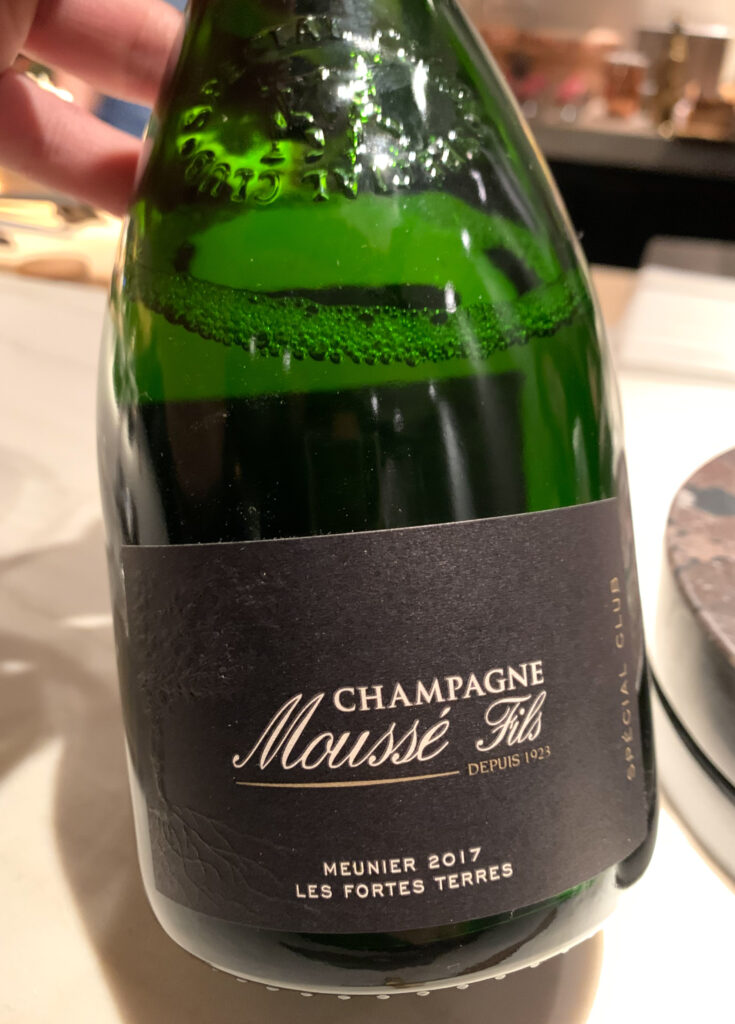
Only the $35 Moussé Fils “Spécial Club” Champagne seems priced in a predatory range (given the pride of place that sparkling wine maintains as a celebratory beverage). However, The Omakase Room’s choice of producer outclasses the bottles offered by its competitors: the Canard-Duchêne ($23) and Charles Heidsieck Reserve ($25) listed at Jinsei Motto; the Moutard “Rosé de Cuvaison” ($18) and Vadin-Plateau “Intuition” ($25) listed at Mako; and the Delamotte half bottle ($65) listed at Yume. At The Omakase Room, for that extra $10 sum, you get a vintage wine (2017) from a well-known grower-producer (Moussé Fils), that also qualifies for the prestigious “Spécial Club” designation (meaning the bottle represents the house’s tête de cuvée). In this manner, rather than serving just any old Champagne that would fit the bill, LEYE has chosen something superlative to offer by the glass. That demands guests pay a bit extra to get in the door, but they will be treated to a wine that does far more than meet the mere expectation of being bubbly. Perhaps that is why the Moussé Fils was included as part of the $175 “Wine & Sake” pairing too.
Compared to the by-the-glass sections, where a restaurant must privilege the tastes and spending habits of entry-level consumers, the bottle list offers an opportunity to really demonstrate what the beverage program is about. In LEYE’s case, expectations are particularly high: the group already manages several of the city’s most extensive wine programs and touts the presence of a “sake sommelier” here at The Omakase Room to boot. Thus, you expect to find the same depth and quality of choices (as, say, an RPM property) whether you are seeking something made from fermented rice or fermented grapes. And, at the same time, you expect a group of LEYE’s size and resources to pass a certain degree of value on to consumers (especially when compared to its relatively “mom-and-pop” rivals). Exploiting these intrinsic advantages would form a huge feather in the restaurant’s cap when it comes to attracting connoisseurs (while falling short, likewise, would make you wonder why they entered the genre to begin with).
You will start by looking at the “Sake by the Bottle” selection:
- Taka “Noble Arrow” Junmai ($95)
- Tamagawa “Heart of Gold” Daiginjo ($135)
- Shindo “Reception” Junmai Daiginjo Muroka Nama ($155)
- Heiwa Shuzou KID “Muryozan” Junmai Ginjo ($180)
- Hakkaisan “Awa” Sparkling Daiginjo ($190)
- Sawanoi “Hojo 35” Daiginjo ($275)
- Okunomatsu “Ihei” Shizuku Daiginjo ($350)
- Kuheji “Kurodasho Tako” Junmai Daiginjo Genshu ($350)
- Yuki no Bosha “Morning Flower, Evening Moon” Daiginjo Genshu ($450)
- Yuki no Bosha “The Sound of Snow” Junmai Daiginjo Genshu ($800)
- Heiwa Shuzou KID “Muryozan 30” Junmai Daiginjo ($895)
It is easy to feel a bit of sticker shock when you realize that more than half of the options come in at over $275. Chicago restaurants have not traditionally sold sake of this caliber, and even wines approaching $1,000 are sure to raise a few eyebrows when they mingle with more humble libations on such a short list. Jinsei Motto, for reference, sells 16 sakes by the bottle (ranging from $45-$130 and averaging $92.69), and Yume sells 9 of them (ranging from $60-$265 and averaging $144.78).
Mako, actually, offers the best point of comparison. B.K. Park sells 10 sakes by the bottle (ranging from $95-$850 and averaging $283), which comes quite close to The Omakase Room’s average of $297.33 (that includes the four bottles offered in the by-the-glass section for $115-$220). Even more interestingly, Mako sells the Yuki no Bosha “The Sound of Snow” for significantly less ($625) than the $800 charged by LEYE. So, does this signal that The Omakase Room’s list is just a needless money sink?
Jinsei Motto, as best as you can tell, consistently marks its sake up to 2.5 times the retail price. Yume, likewise, maintains markups that are generally between 2.4 to 3 times the retail price. Mako’s markups range from 1.5 times retail (for the most expensive bottles) to 2.3 times (for the less expensive). And The Omakase Room clocks in between a 1.5 times retail markup (for the most expensive bottles) and a 2.4 times retail markup (for the less expensive). With this in mind, it is fair to say that LEYE’s pricing scheme keeps pace with that of its closest rival.
Further, while Mako may beat The Omakase Room when it comes to that particular Yuki no Bosha bottle, both restaurants generally possess a unique range of selections. Consumers are unlikely to pick up on the $175 difference between venues if only because LEYE offers a greater quantity of sakes over $275 to choose from. In this respect, you may say that The Omakase Room offers a more premium selection of bottles than Mako while generally maintaining the same markups. However, you would not say that LEYE has blown its competition out of the water. Rather, with sake, the group has just about met expectations while bringing some interesting options to market. The program forms a valuable addition to the overall sushi scene by allowing patrons to splurge on a new (to them) beverage without taking advantage of that inexperience by grossly overcharging. You also like the fact that several of The Omakase Room’s bottles cannot be found in English online (suggesting, perhaps, some special method of sourcing). Thus, while the sake list is arguably (though not obviously) the best in Chicago at present, you see even more value in LEYE’s ability to grow and refine the selection over time.
(For what it’s worth, you purchased the Heiwa Shuzou KID “Muryozan 30”—The Omakase Room’s finest bottle—on one occasion and rank it as the best sake you can remember tasting: a smooth, honeyed brew of tremendous depth and textural appeal. Your server, who revealed the team had tasted this prized drink together ahead of the restaurant’s opening, handled the bottle with total confidence and stoked your enthusiasm without the slickness or puffery that characterizes how some establishments treat “big spenders.” If LEYE’s staff is being educated to this degree on even the concept’s most coveted bottles, The Omakase Room may form one of the city’s most important venues for cultivating a new generation of sake professionals.)
Moving on, you come to the “Wine by the Bottle” selection starting with sparkling:
- Paul Bara Rosé Champagne ($175)
- Krug Grande Cuvée Champagne ($500)
This is followed by white wine:
- 2015 Malat “Ried Gottschelle 1ÖTW” Grüner Veltliner ($85)
- 2020 Brendan Stater-West Saumur ($70)
- 2009 Etienne Defaix “Côte de Léchet” Chablis 1er Cru ($160)
- 2018 Alain Voge “Fleur de Crussol” Saint-Péray ($140)
- 2015 Remelluri “Labastida” Rioja ($170)
- 2021 Kilikanoon “Mort’s Block” Riesling ($55)
- 2019 Keller “Abst E®” Riesling Großes Gewächs ($550)
- 2019 Ceritas “Charles Heintz” Chardonnay ($150)
- 2018 Comtes Lafon “Clos de la Barre” Meursault ($400)
- 2018 Guy Amiot “Les Demoiselles” Puligny-Montrachet 1er Cru ($650)
And capped off by red wine:
- 2017 Pierre Guillemot Savigny-lès-Beaune “Vieilles Vignes” ($105)
- 2008 Lucie & Auguste Lignier “Cuvée Romain Lignier” Morey St. Denis 1er Cru ($220)
- 2017 Rhys “Horseshoe Vineyard” Pinot Noir ($325)
- 2015 Georges Lignier Bonnes-Mares Grand Cru ($600)
- 2015 Clos Rougeard “Le Clos” Saumur-Champigny ($275)
- 2019 Brendan Stater-West “La Ripaille” Saumur ($110)
- 2018 JL Chave “Offerus” St. Joseph ($75)
- 2019 Denner “Dirt Worshipper” Paso Robles ($200)
These 20 bottles, which are organized from lighter to heavier in style, totally trounce anything offered at Jinsei Motto (12 bottles), Mako (9 bottles), or Yume (6 bottles). Those restaurants may stock a couple recognizable names (like Guillemot, Jermann, Lucien Crochet, and Rhys) but fall short of offering aged, allocated, or otherwise exemplary wines. Instead, it is only worth noting that the bottles listed at Jinsei Motto (ranging $60-$180 and averaging $84.92), Mako (ranging $70-$110 and averaging $88.33), and Yume (ranging $65-$129 and averaging $87.83) are all offered at close to a 2 times retail markup.
The Omakase Room, by comparison, sells bottles of wine ranging from $55-$650 and averaging $230.74, figures that come far closer to the sake programs (here and at Mako) you just discussed. Only Kyōten, with nearly 50 selections ranging $70-$15,000 (and an average price of $756.89 or $447.26 if you remove the Domaine Leroy outlier), presents any real competition. However, while Phan styles his extended wine list as being “curated by Chef, who simply collects delicious wines that he loves,” LEYE’s offerings are intended to be both representative and concise.
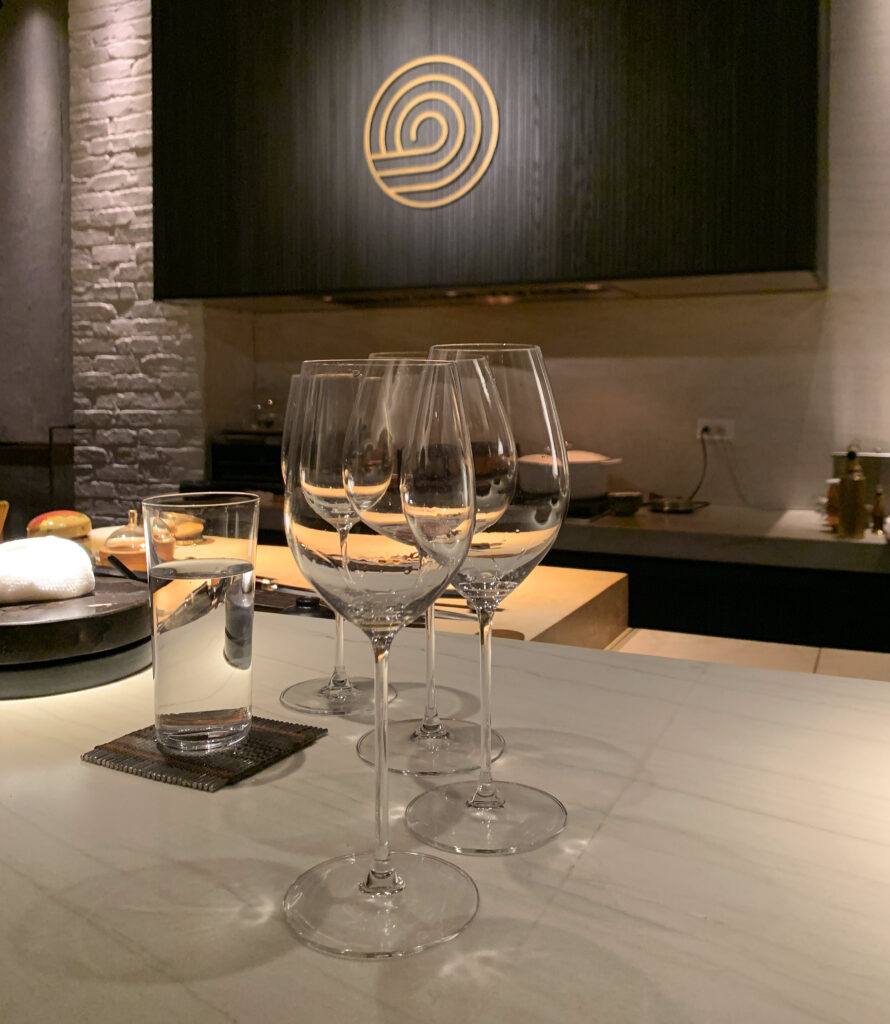
Personally, you think only offering two Champagnes (three if you include the Moussé offered by the glass) is a bit weak. But the range of white wines—comprising everything from Grüner to Chenin to Marsanne, Rioja, Riesling, and plenty of white Burgundy—is quite impressive. And the same goes for the reds, which feature Pinot Noir (both domestic and from Burgundy) alongside a bit of Cabernet Franc and Syrah too. These latter two grapes do not seem like they would match an omakase, but it should be considered that Chan and Kitano reliably serve wagyu at the end of the meal. Also, you believe that the presence of these more robust varieties forms a concession to the Cabernet Sauvignon crowd (who, nonetheless, may not immediately recognize them as such). Clos Rougeard, Brendan Stater-West, and JL Chave are each capable of crafting wines of uncommon elegance for their regions. And producers like Krug, Keller, and Lafon are simply superlative.
Kyōten may delve a bit deeper into categories like Champagne, Riesling (both dry and sweet), and Burgundy (both white and red), but The Omakase Room’s selection shows more balance and is more easily parsed before dinner begins. Both restaurants maintain markups that are firmly 1.5 to 2 times retail pricing while allowing corkage for $40-$50 (the same range occupied by Mako and Yume). LEYE has even ensured that bottles like the Krug Grande Cuvée ($500), Keller “Abst E®” ($550), and Rhys “Horseshoe Vineyard” ($325) cost less than at the RPMs ($603, $616, and $361 respectively). Clearly, the hospitality group does not view its premium omakase diners as a captive audience to prey on but, rather, an adventurous demographic who should be rewarded relative to those seeking more familiar steak, seafood, or Italian fare.
Overall, just as The Omakase Room’s sake program matches (and arguably surpasses) that of strongest competitor Mako, its wine program roughly matches that of Kyōten: offering fewer bottles but providing greater breadth and similar quality while retaining the same low markups. Chan and Kitano may not provide the personal dimension that makes Phan’s beverage service so special. However, at a technical level (and benefitting from such an impressive staffing ratio), LEYE is better equipped to open bottles, pour glasses, and explain what guests are drinking without ever interrupting the flow of the meal. With this advantage, you think a case can be made that The Omakase Room’s wine program (in its approachability and polish) might surpass Kyōten’s for all but the most dedicated of oenophiles. Still, if you are in the habit of sharing pours with your chef and bonding over a common love of wine, Phan may have the edge.
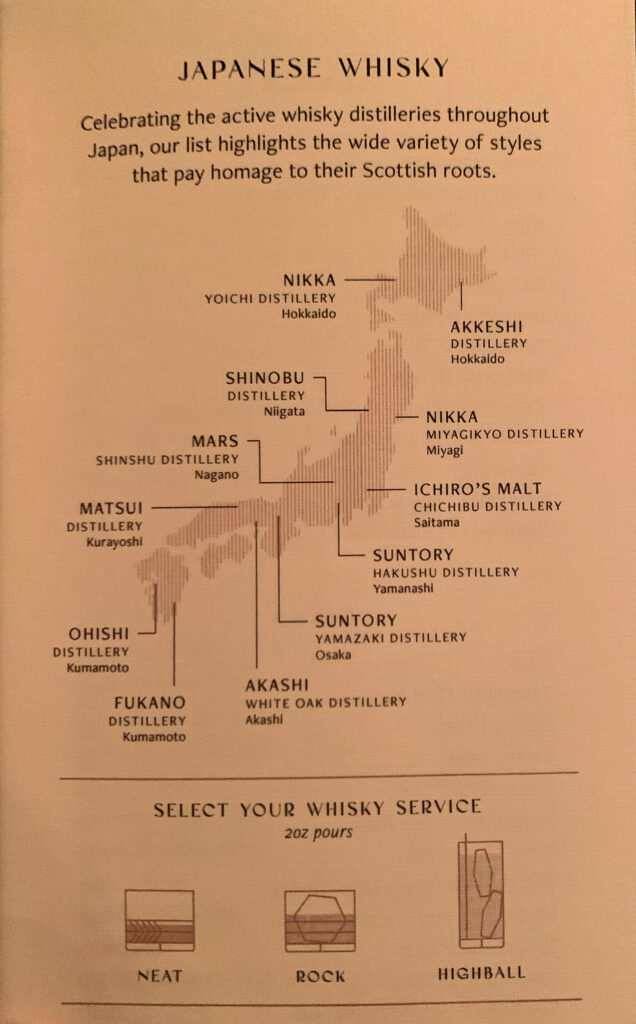
Based on the strength of its cocktails, non-alcoholic options, varied pairings, and both wine and sake—all undergirded by friendly pricing—The Omakase Room’s beverage program is clearly the best within its genre. That is before you even consider the restaurant’s “Whisky Service” (available “neat,” with a “rock,” or in a “highball”) that comprises well over 100 selections from more than 20 different producers. Some of these, like the Ichiro’s Malt range, are quite rare. So, while you do not quite see where these fit into the experience (other than as a post-sushi tipple), they are sure to make the day of guests who have long sought to try these coveted bottlings.
Ultimately, for your personal taste, you find The Omakase Room’s pairings to be a pleasant accompaniment to the meal when supplemented by one of your own bottles via corkage. This is because, as you have already noted, the restaurant’s Champagne selection is a bit slim and bottles like the Keller and Lafon—despite begin exceptional producers that are minimally marked up—remain a bit on the young side and do not quite offer any screaming value (where the menu price, for example, remains below the secondary market). Still, just seeing these bottles represented on such a concise list signals that the beverage team knows what it’s doing.
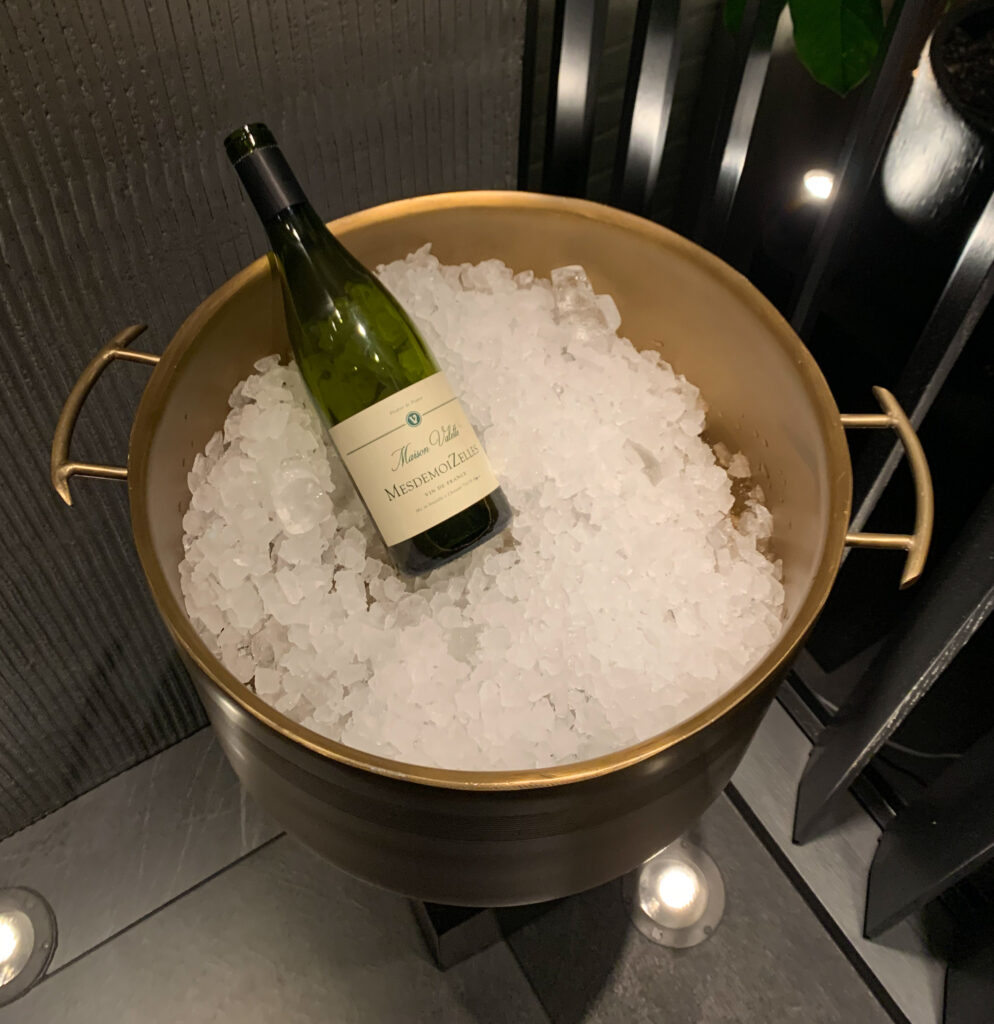
You hope that wine director Richard Hanauer continues to cherry pick exceptional selections for this venue and price them more competitively than his RPM properties as this practice is immensely rewarding for wine lovers (especially those being dragged to go eat sushi against their wishes). You would, perhaps, love to see top-value offerings like village-level Dauvissat or Raveneau replace something like the Etienne Defaix. You also think there is probably room for another, cheaper German Riesling from a great producer or maybe a high-quality rosé. But this just amounts to splitting hairs. Beary, with his cocktails; Bennett, with the sakes; and the wide range of whiskies listed offer plenty of other, worthwhile diversions. And The Omakase Room really feels like a place that has spared no expense in ensuring your dinner is amply lubricated in accordance with any possible preference.
With your beverage order settled, and the sushi bar now seated, Chef Kaze takes center stage and the show begins. (It starts about 20 minutes after that 5:30 PM start time whether or not all the patrons have arrived. This occasion, nonetheless, is handled with total good humor by the chef—something that cannot be taken for granted.) The chef welcomes the assembled diners (with a pause to make note of any special occasions or repeat customers) to The Omakase Room and introduces his partner. Kitano playfully hides his face behind a menu before revealing a broad smile and offering his own guttural greeting. Kaze stokes enthusiasm for the menu that lies ahead, referencing the daily fish deliveries and wild line-caught fish from which the omakase is constructed.
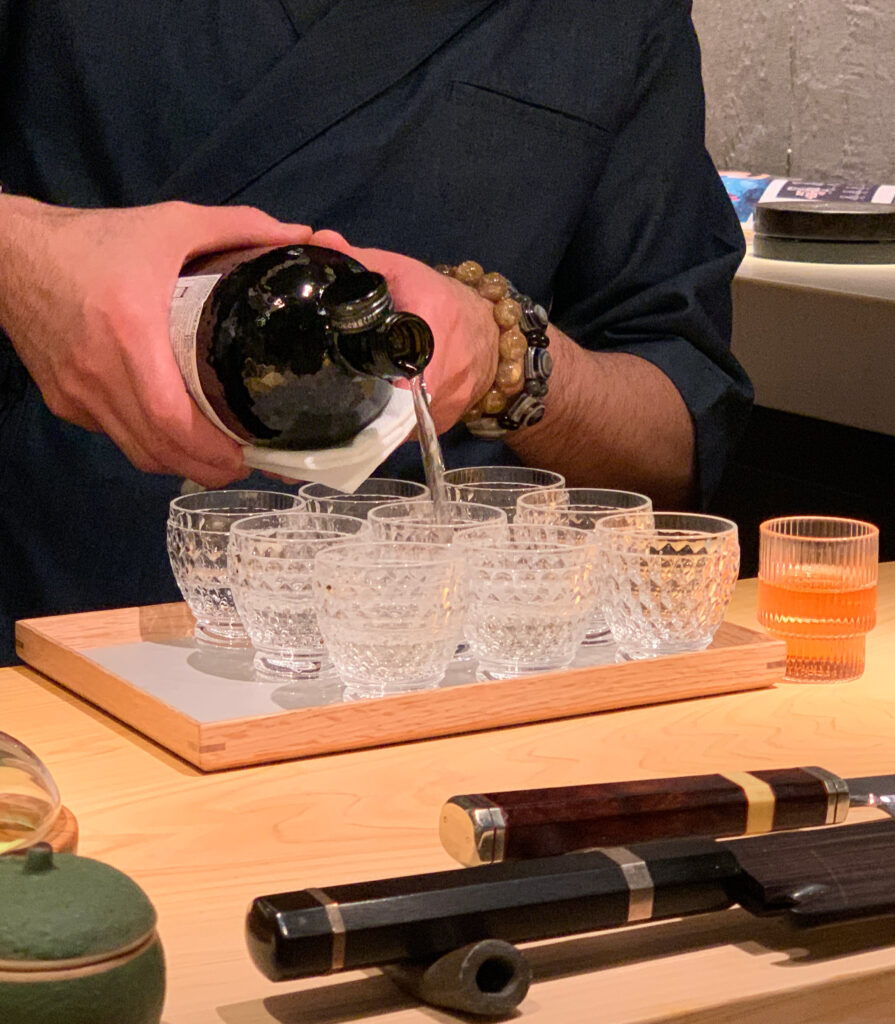
Upon finishing his introduction and securing the room’s attention, Kaze defuses any hint of seriousness by inviting his diners to share in a toast. The chef unveils a tray holding several rows of etched crystal glasses, into which he pours a couple ounces of sake. (Guests who are not enjoying alcohol are kindly given a substitute.) He and Kitano distribute the drinks along the sushi bar and invite everyone to clink their shots together with alternating cries of “cheers” and “kanpai.” While it is not a given that the other customers will indulge in this ceremony with you (some preferring, as you do, to stay in their own bubble), the chefs make a point of toasting each member of the audience individually. Given the stoic, inaccessible demeanor that characterizes many itamae (to say nothing of potential language barriers), this gesture goes a long way in ensuring that everyone present forges some small connection with each of the craftsmen. It makes what is about to unfold feel personal and reflexive rather than robotic, setting the kind of tone LEYE signaled it was after from the start.
After this ceremony has concluded, the glasses are removed, the lights are dimmed, and the meal itself begins. Since Kaze and Kitano have been busying themselves from the moment of your arrival, dinner commences immediately with a preparation of “Hokkigai” (or surf clam) served on the half shell. As the former chef deposits the dish on each of the Lazy Susans and offers a description, the latter perpetually prepares fish so that there is never that long of a lapse between courses.
Turning your attention to the “Hokkigai,” you find a few large chunks of the mollusk that are dressed with sweet vinegar and topped with thin strands of dried, reddish kelp. Underneath the clams, at the bottom of the shell, lies a “sunomono” (or salad—typically made with cucumbers) comprising long, thin strands of seaweed. With your chopsticks, you pluck a piece of the bivalve and place it on your tongue. Biting down, the surf clam offers a slight crunch and a bit of chewiness before yielding to a juicy finish. Its flavor, while mild, shows hints of sweetness and brine that are nicely accentuated by the vinegar. When you introduce some of the seaweed salad into the equation, it matches the texture of the mollusk (offering a finer crunch with a slick finish) while augmenting the preparation’s sense of umami.
Overall, the “Hokkigai” may present a bit of a challenge for diners who are not used to its firm, then chewy, then soft mouthfeel. However, you enjoy the ingredient quite a bit and respect Kaze’s decision to serve it at the start of omakase. Each bite, as it lasts on the palate, proves a bit meditative: it induces you to slow down and consider the intricacies of the clam’s texture. Then, with a tangy, salty finish, the dish leaves your mouth watering in anticipation of the next course—which happens to be one of The Omakase Room’s most decadent.
Yes, the “Hokkigai” forms something of a teaser: a more challenging morsel that can be immediately contrasted by something unabashedly hedonistic. Kaze and his team, you might remember, dined at Masa as part of the research that would inform their luxe concept. Thus, it comes as no surprise that the “Otoro Tartare” represents The Omakase Room’s rendition of one of Takayama’s absolute classic preparations.
Masa’s “Masa Toro Caviar” (as it is titled) costs $98 à la carte at BarMasa and comprises “fatty toro” (sourced from the tuna’s belly) that is “chopped very finely until it becomes a smooth tartare” and then topped with “a generous amount of Osetra caviar.” The dish is finished with a squeeze of lime “to add some brightness in flavour” and “finely diced chives to add color.” The finishing touch comes from “grilled milk bread, which gives the dish some crunch and texture.”
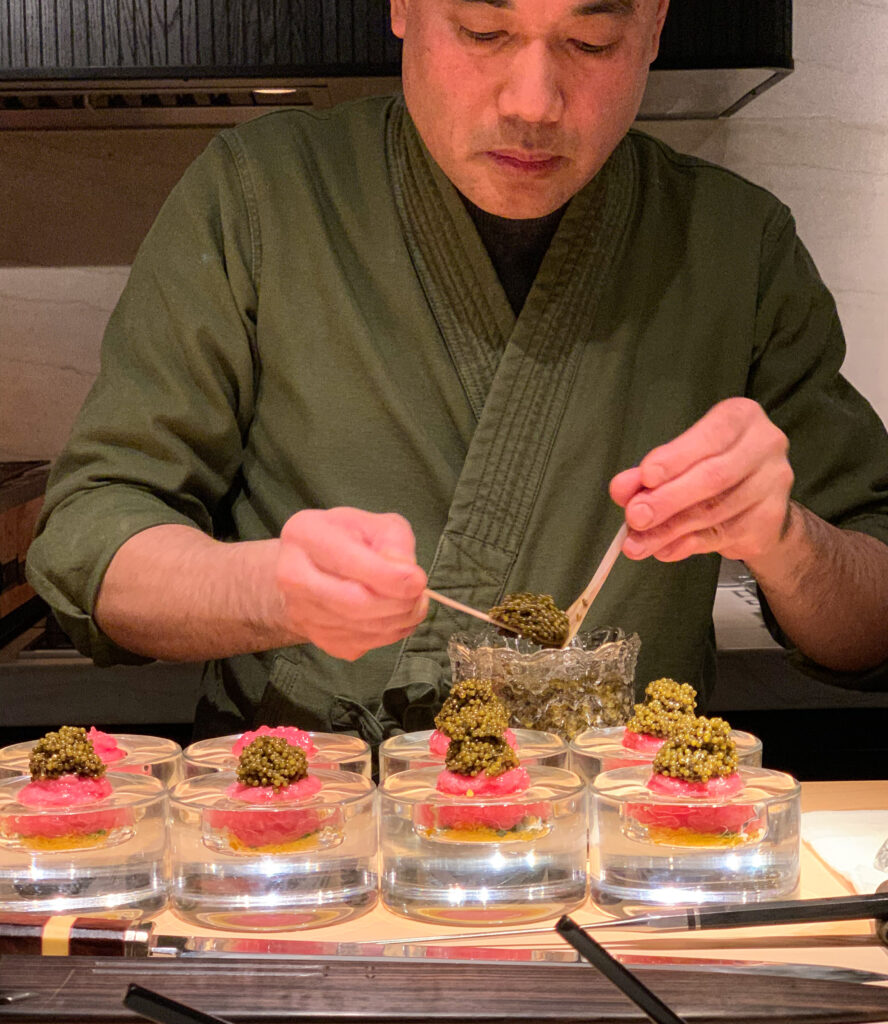
The Omakase Room’s version utilizes otoro (specifying the fattiest segment from the underside of the belly) drawn from the Spanish bluefin. The tartare sits atop a layer of finely diced chives (à la Masa), but, under that, you find an even more substantial base made from the yolk of a duck egg that has been cured and shredded. The tuna is topped with a hearty dollop of Golden Kaluga caviar and served, once more, with soldiers of toasted milk bread. Upon depositing the “Otoro Tartare” in front of the assembled guests, Kaze instructs you to take your spoon and plunge it all the way to the bottom of the translucent bowl in order form a complete bite. The chef is also quick to offer additional milk bread should you need it (either for the dish itself or just because you wanted something to snack on), but he otherwise leaves each diner to indulge in the layered composition at their own pace.
Visually, the “Otoro Tartare” is beautifully constructed and totally transfixing from the moment the chef starts piling caviar on top. You struggle to even puncture the dome when it finally arrives before you. Yet, inserting your spoon into the bowl and scooping the contents up along the side, you extract a perfect cross section of the four layers. Grasping one of the pieces of milk bread, you slide the caviar, tartare, chives, and egg yolk across its surface and lick your lips in anticipation of the first bite. Hitting the palate, the toast crunches then collapses under the weight of melting fatty tuna and bursting roe. The shreds of chive and yolk meld seamlessly into the mix, with the whole mouthful disappearing much too soon.
Texturally, this dish is very good but does not quite live up to its inspiration. The tartare is entirely smooth and forms an ample cushion, along with the duck egg, for the caviar. The milk bread, too, does a good job of holding everything together though you think it is just a bit too brittle. That is because the Golden Kaluga, while more or less the best type of sturgeon roe you see used by Chicago’s fine dining restaurants, lacks a bit of the firmness and intricacy of Osetra. Utilized in such a pure, luxurious preparation, the former caviar lacks enough of an assertive pop to distinguish itself from the other elements. Rather, the orbs are more easily smushed together and burst as a unit (rather than dancing across your fat-coated palate). The dish’s flavor, too, seems a bit muted—something you might blame, once more, on the quality of the caviar or perhaps on the omission of the citrus element utilized by Masa.
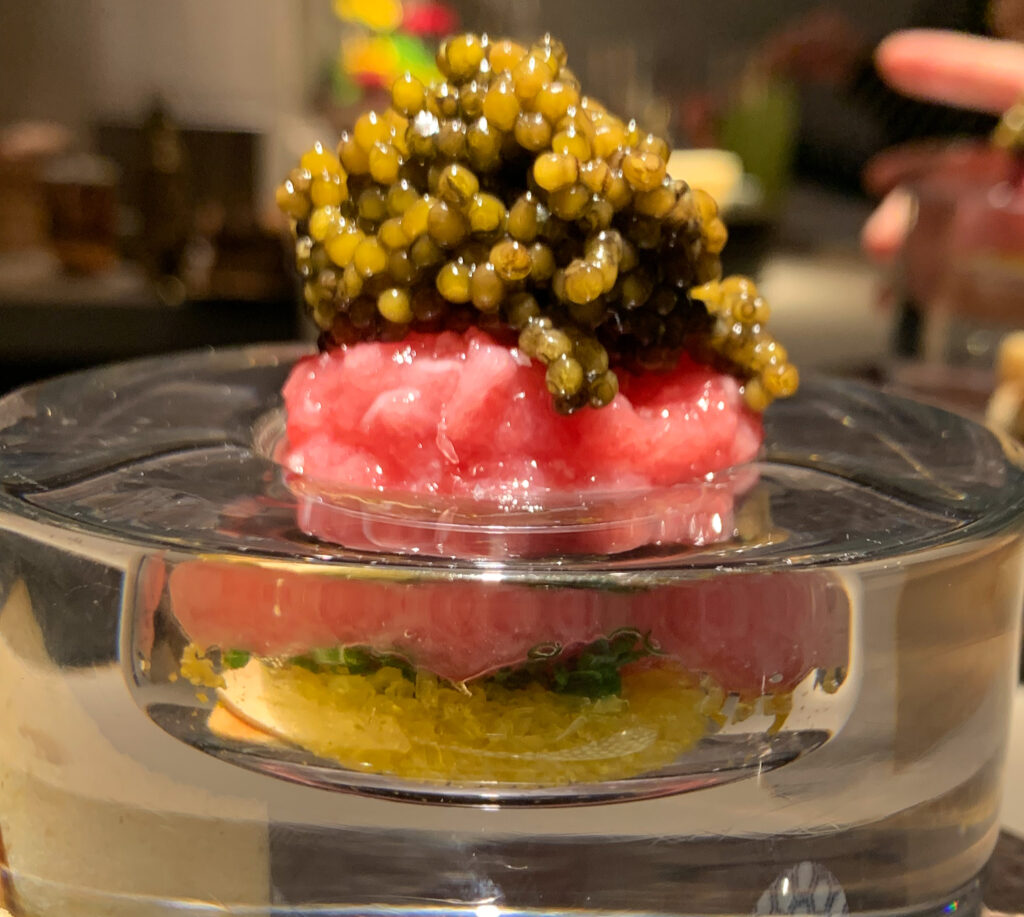
Ultimately, it is a bit obnoxious to hold The Omakase Room’s “Otoro Tartare” up to the Masa standard considering the latter venue charges almost four times the price for its omakase. You also think it would be obnoxious to turn your nose up at Chicago’s rendition of such a classic (and maybe—in the broader sense of cultivating sushi appreciation—important) dish because it does not measure up to “how they do it in New York.” Your small critique aside, you think the “Otoro Tartare” is almost certain to surprise and delight local diners. The feeling of generosity it embodies also stands as the perfect antidote for those who might view the omakase form as stiff or stingy.
However, it is worth mentioning that Otto Phan actually worked for Masa (rather than just dining there) and has never sought to imitate such a signature dish. You respect his restraint, for preparations of this sort essentially devolve into an “arms race” of who can serve (or charge for) the finest of the finest ingredients. Chicago, outside of Kyōten, will always lose that game, and The Omakase Room is signaling that it is content to serve some lesser derivative of Masa’s recipe in an attempt to trade on the same sense of luxury. This city, in your mind, deserves better than that (even if it just means finding a creative and distinctive way to repackage the dish’s constituents). But you suppose its denizens—at least those lacking the requisite reference point—will have plenty of fun with the “Otoro Tartare” until they learn to seek something more.
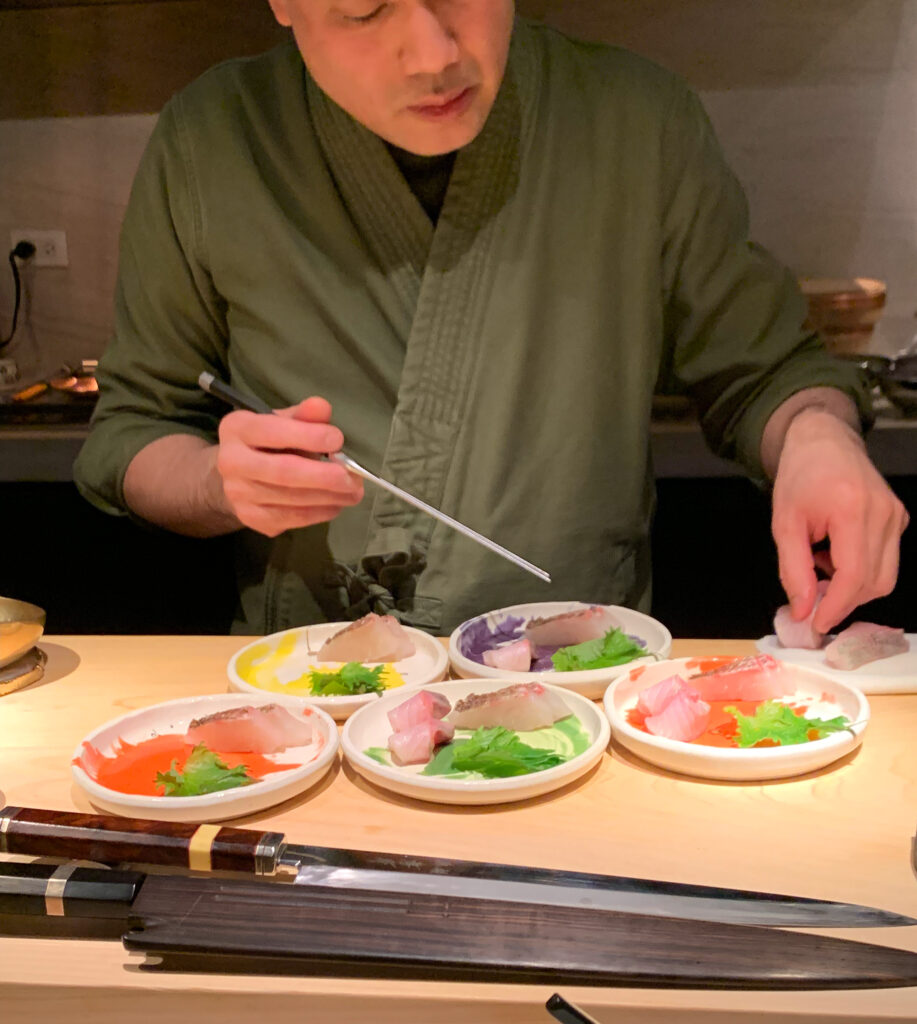
On the back of such a luxurious few bites, Kaze pivots toward something a bit more orthodox: “Sashimi.” Though this course typically comprises three different kinds of fish (or shellfish), the chef assures his guests that they do not each count as part of the 18-course total. While you find this admission to be a bit funny when offered unprovoked, it does suggest that The Omakase Room has anticipated some diners’ fears that they will leave the meal (on account of some preconceived notion about the entire genre) hungry. By addressing this concern in a subtle way, the restaurant helps these somewhat skeptical customers relax and savor the thought of how much food is still to come.
The “Sashimi” course also stands as the first instance where you may note the menu’s dynamism, being composed of sawara (Spanish mackerel), madai (Japanese snapper), and kanpachi (amberjack) during your first meal; kinmedai (golden eye snapper), ebi (shrimp), and kanpachi during your second meal; and hirame (fluke), hotate (scallop), and kanpachi during your third meal. Guests receive two hearty slices of each fish (along with two chunks of the scallop and one whole, butterflied shrimp) that are all lightly garnished with alternating touches like yuzu koshō, wasabi, salt, shiso, or even a bit of foie gras. Kaze prescribes the exact order he intends the bites to be eaten (that is, enjoying both pieces of an item before moving on to the next) but will teasingly remind you if necessary.
In the wake of the “Otoro Tartare,” this “Sashimi” sequence (much like the “Hokkigai” opener) represents a return to more challenging and interesting textures. To your palate, the ebi (with its plumpness), the hotate (with its softness), and the kanpachi (with its clean, meaty quality) are the most familiar and approachable. The sawara, madai, kinmedai, and hirame, by comparison, display a bit more firmness and chew. With regard to flavor, each of the various fish and shellfish possess a pristine quality that almost borders on blandness. The toppings help to distinguish their respective characters, but each bite remains fairly subtle. Even the foie gras—paired with the hirame—only adds a tinge of richness (while, you will admit, melding perfectly into the flesh of the fluke).
Overall, you like The Omakase Room’s “Sashimi” course and think it will appeal to purists while, at the same time, offering a gentle introduction to the form for newbies. The way Mako presents its own “seasonal selection” of sliced fish might make for a better photo (hell, it’s the first thing you see on their website), yet Park’s portions are about half the size of Kaze’s and arrive completely unadorned (save for a small side of wasabi). Ultimately, neither preparation offers flavors or textures that are all that exciting or memorable, but The Omakase Room’s version is clearly superior on account of its generosity, creativity, and dynamism.
The last of the plated courses served before the start of the nigiri sequence has featured one of Japan’s greatest winter delicacies juxtaposed by one of the most pervasive totemic luxury ingredients in the West. “Ankimo,” or monkfish liver, is often referred to as the “foie gras of the sea” (a moniker that makes the preceding pairing of hirame and duck liver even more thought-provoking). The ingredient, to that point, is prepared somewhat like a torchon: it is rubbed with salt, rinsed with sake, deveined, rolled, and steamed to yield a neat disc shape upon being sliced. Kaze serves this liver in a fairly traditional fashion but incorporates his own twists. Instead of ponzu, it is steeped in a bit of Asian pear and red wine reduction with a topping of garlic chives (rather than scallions) and the added touch of some flaky salt.
Seeing ankimo served at The Omakase Room assures you that LEYE is not looking to shy away from some of omakase’s most singular bites even if its audience has limited experience with them. And Kaze’s rendition, it must be said, is a good one. The monkfish liver is smooth and, importantly, totally homogenous in texture—a testament to the chef’s care in deveining and gently steaming it. Served slightly warm, the ankimo melts and unfolds across the palate, exhibiting a delicate flavor that is very slightly sweet and just a bit metallic (so little as to remain appealing). Nonetheless, this ingredient benefits, without a doubt, from the bright, tangy, and slightly umami pear and wine reduction that tilts the dish more toward the decadent side. The sauce contrasts the liver’s natural richness and allows, along with the salt and slightly sharp garlic chives, a balanced sweet and savory character to come to the fore. The ankimo served at Kyōten, it should be mentioned, is noticeably creamier and is paired with a sauce of far greater vibrance and intensity. Phan’s recipe, thus, is more attuned to Western palates (as well as anyone who craves a hedonic thrill), but Kaze’s is still an admirable effort and a worthwhile addition to the menu.
While enjoying your “Ankimo” course, you might notice the chef aggressively microplaning black truffle onto a long platter. The mass of shredded Tuber melanosporum—brushed off the grater’s teeth with a nice bit of panache—is a real sight to behold. You wonder just where the totemic luxury ingredient is going to show up until Kaze requests that each diner return their empty bowl to the Lazy Susan. If necessary, he pours a bit more pear and red wine reduction back into the vessel (for you, at least, are sure to slurp up every drop). Then the chef adds a clump of sushi rice to the mix and tops it off with an avalanche of the shaved truffle. The sum effect is quite striking: a coveted ingredient being doled out in such a profligate way to do little more than soak up the remnants of what came before. This demystification of luxury, you think, strikes at the very core of what The Omakase Room is about.
In practice, the sushi rice sticks together fairly well, meaning that you can break off smaller chunks and engineer several distinct bites that feature a bit of sauce and a lot of truffle. On the tongue, the grains display a bit of stickiness that ensures each mouthful has some staying power. In terms of flavor, the vinegar in the rice joins nicely with the sweet-tangy sauce and ends on an earthy note via the truffle. This is nice but not revelatory, and you do not think it would impress anyone if it was not served as a kind of “bonus.” The rice needs to be much hotter in order to properly temper the truffles, for the dish—at present—only amounts to an exercise in pairing sweetened rice with an eye-catching topping. Still, this preparation is not at all unpleasant and remains preferable to pairing the Tuber (as Sushi by Scratch does) with raw fish. (Kyōten’s occasional use of truffle to top its tamago is, thanks to that bite’s concentration of custardy corn notes, more successful.)
With the first four courses out of the way, Kaze goes about grating some fresh wasabi—a touch that is sure to thrill those new to the high-end omakase genre and one that the chef is more than happy to explain (without making anybody feel stupid about eating dyed horseradish for so long). Each patron, at this point, is also given a small dish filled with chunks of pickled ginger. Kitano, though not commanding nearly as much attention, quietly mans his cutting board so that his partner (and the guests) may receive a steady stream of cut fish. However, when the Japanese chef retrieves a sizable slab of tuna belly from below and goes about breaking it down with effortless precision, he undoubtedly—for those few moments—becomes the star. The customers speculate as to which fish he is handling, and one even thinks it might be wagyu, before Kitano gleefully declares “toro.” Otherwise, the chef lets his technique do the talking, striking a nice balance with Kaze’s more talkative, master of ceremonies kind of role. In this manner, The Omakase Room indulges patrons in a bit of the fetishized, ritualized aspect of the craft without letting it dominate the evenings proceedings.
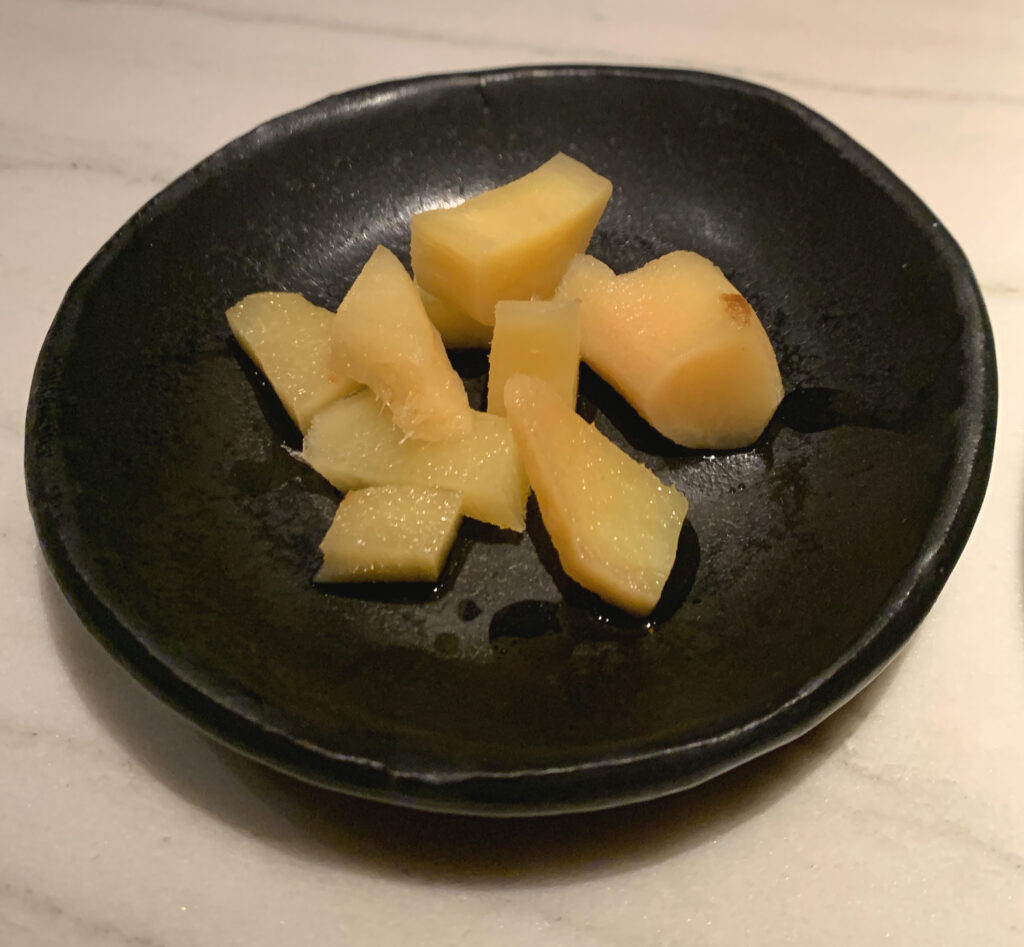
With wasabi and fish at the ready, Kaze addresses the audience and prepares them for the main event: nigiri. His rice, the chef advises, is “very soft,” so you should not utilize chopsticks to pick up the pieces. Likewise, you should not wait on your neighbor to take a bite—a whole bite (and not just a nibble). The ginger, Kaze clarifies, is meant to cleanse the palate between courses (rather than forming an additional toppings). Otherwise, the chef notes that he will go in order around the bar when serving each piece but will also alternate which side he starts on. This is a nice touch, for it engages whoever may be seated at the “wrong end” at first by allowing them, in turn, to enjoy certain other nigiri before everyone else. You might think that would lead to guests getting two bites in quick succession, but now you must reveal a pretty consequential stylistic note.
The Omakase Room, across all its marketing copy, is careful never to use the word edomae—a term that literally refers to sushi made with fresh seafood from Tokyo Bay but, in practice, has come to describe methods of preserving (or “aging”) fish developed during a period before refrigeration. This practice forms the cornerstone of Kyōten’s approach to the craft and represents one of the frontiers through which American chefs, lacking the ingredient sourcing advantage of their Japanese counterparts, can put a distinctive, delicious stamp on omakase. (Yume also places itself in the edomae tradition, but Park does far less to push the boundaries of these techniques.) By comparison, The Omakase Room’s professed focus is on “wild line caught fish” and serving “the freshest seafood available for you to enjoy.” This fits with the mass of product flowing into Sushi-san each day, and Kaze is sure to tout how he is able to bring the cream of the crop of these ingredients upstairs.
In reality, it seems likely that some of The Omakase Room’s most prized fish are being “preserved” to last the duration of its weekly Thursday to Saturday operation while other offerings are, indeed, drawn from daily deliveries. However, “aged” fish is by no means a selling point or something that is even mentioned (perhaps because LEYE feels these techniques may put off customers who only feel comfortable eating raw fish that is “fresh”). Kaze does not, like Phan, show off the delectable brown tinge that distinguishes 14-day-aged yellowtail or 30-day-aged tuna. Instead, The Omakase Room champions the buying power of its hospitality group and the degree of freshness its thriving downstairs business empowers. The nigiri, to that point, is distinguished more by varied and interesting toppings than it is by the latent umami of preserved fish. Yet Kaze, to his credit, never goes so far as to obscure his star ingredients. Delivering purity of flavor—with just a hint of ingenuity—seems to be his goal.
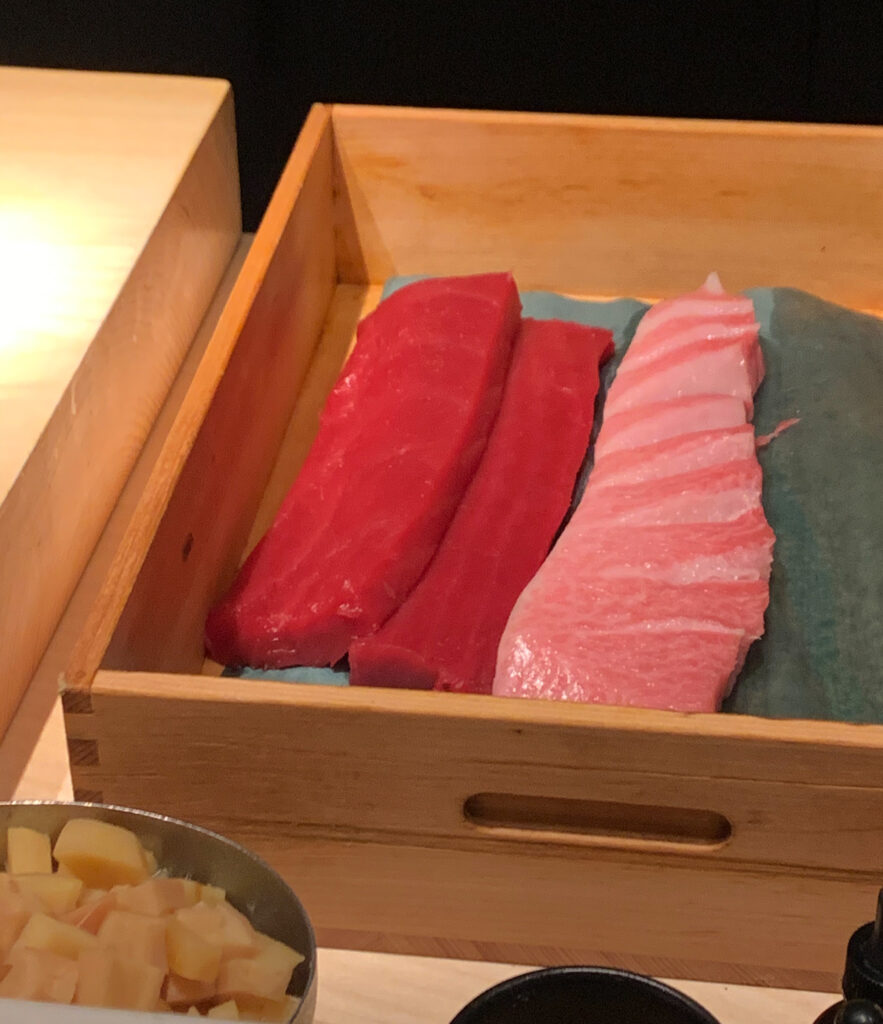
While you think Kyōten’s umami-forward style forms a natural fit for a city marked by, if not steakhouse culture alone, a certain high tolerance for salt, The Omakase Room cannot be faulted for taking a different tack (especially one that exploits the restaurant’s unique advantages). Kaze must simply endeavor to construct a balanced bite using more relatively pristine starting material and the right accents. Nuance of texture, you think, could be an area where his methods shine (though Phan’s aged fish actually shows an incomparably soft, melting quality). But The Omakase Room is guilty—like Mako, Sushi by Scratch, Takeya, Yume, and just about every other example of the genre in Chicago—of mass-producing its nigiri.
Yes, while Phan shapes each piece of sushi one at a time before handing it to a guest, Kaze forms his rice and fish 10 at a time before topping the assembled bites and distributing them across the bar. Factoring in Kitano’s ceaseless work slicing fish and readying other ingredients, this system allows The Omakase Room to operate with an uncommon efficiency. However, it also negatively impacts the ultimate quality of the rice, whose grains should be soft and somewhat loose (nearly falling apart as you grab it) and whose temperature should match the body heat of the chef. Given that each piece at The Omakase Room must sit out for an extended period of time in an assembly line fashion, the rice must necessarily be more tightly clumped together while, likewise, cooling closer to room temperature. Moving into the nigiri sequence of the meal, you will try not to harp on these points unnecessarily. However, they must be considered when a concept claims to want to offer “the best in Chicago.”
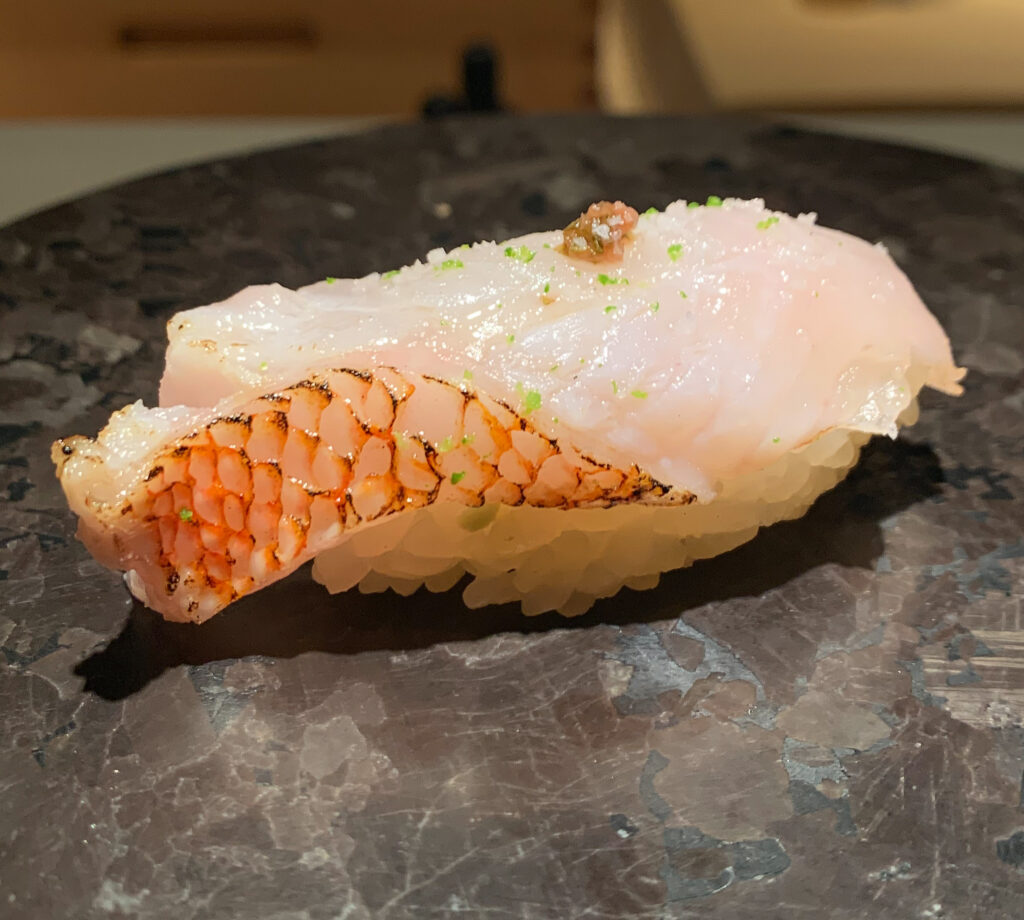
The first piece of nigiri Kaze serves—at least on the occasion of your first and second meals—has been “Kinki” (or red rockfish). The chef tops the fatty, white-fleshed fish with a small speck of umeboshi (pickled plums) and a few flecks of shiso. This piece, distinguished by an attractive strip of scales running along its side, displays a beautifully oily, smooth quality on the palate. This leads to a clean, mildly sweet flavor with just a bit of the shiso’s brightness on the finish. You would, perhaps, like a bit more of the umeboshi (for its salt content as much as anything), but this is a good start.
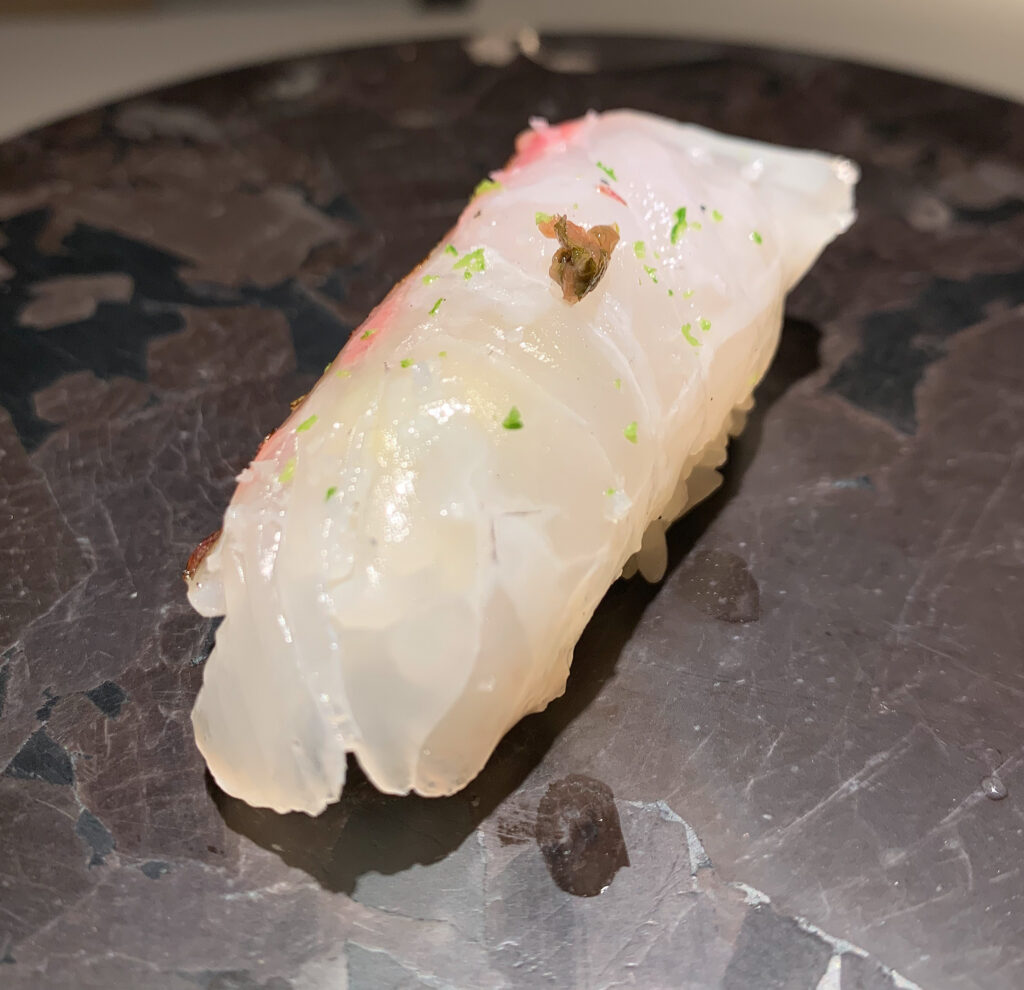
More recently, “Madai” (Japanese snapper) has started off the meal. Kaze notes that it is a wild-caught variety sourced from Chiba Prefecture (just east of Tokyo). The piece is topped in the same manner as the “Kinki” (with bits of umeboshi and shiso) but is less fatty. This lends the fish a firmer starting texture that, upon being chewed, becomes more tender but still feels substantial. The flavor here is, once more, clean and mildly sweet. However, you pick up a bit more sourness from the pickled plum that you find appealing. Once again, this is a good bite to start the sequence but one that falls short of transcendence.
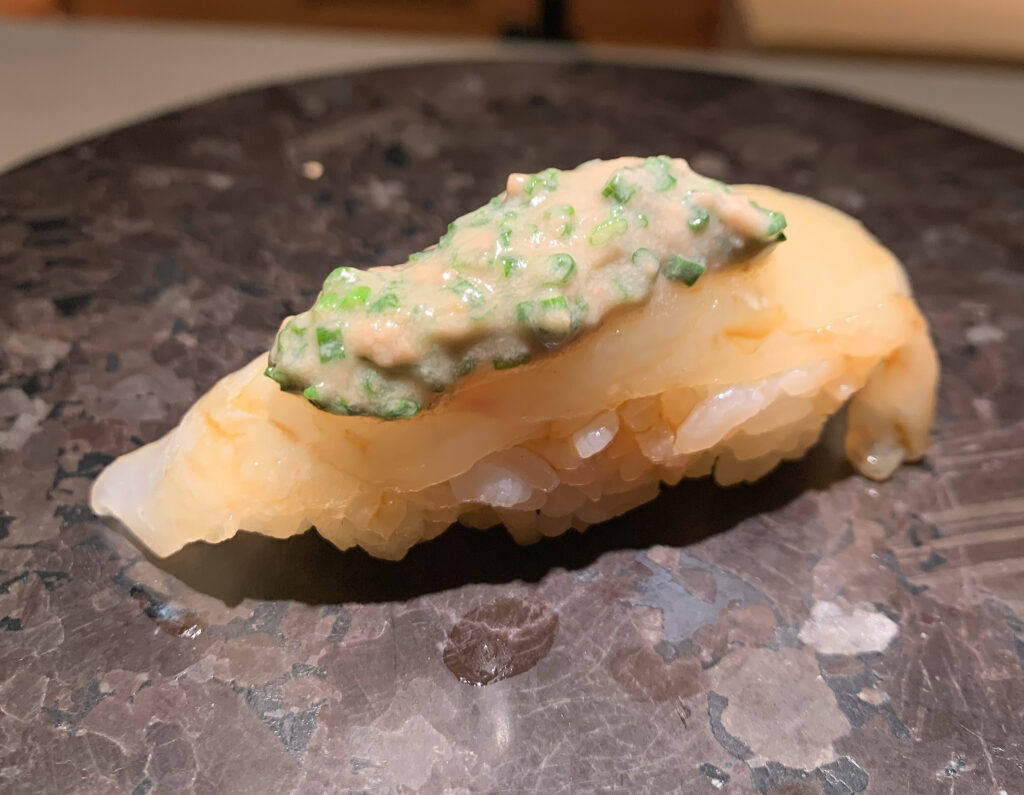
Next, Kaze serves “Kawahagi” (or filefish): a flat, sand-dwelling specimen (with skin tough enough to “file” or finish the hull of wooden boats) long considered a “throwaway” but now a high-end seasonal item. The chef tops the piece with a brush of soy sauce and, as is traditionally done, the fish’s own liver. However, unlike the “Ankimo” from before, this ingredient is executed as more of a loose paste that is studded with small slices of chive. Thus, when you slide the kawahagi into your mouth, its plump, pliant flesh quickly yields to a mouthfilling coating of liver. The fish’s mild flavor is, in this manner, supercharged with a deep savory flavor and hint of onion that is simply stunning. This is one of the restaurant’s best pieces.
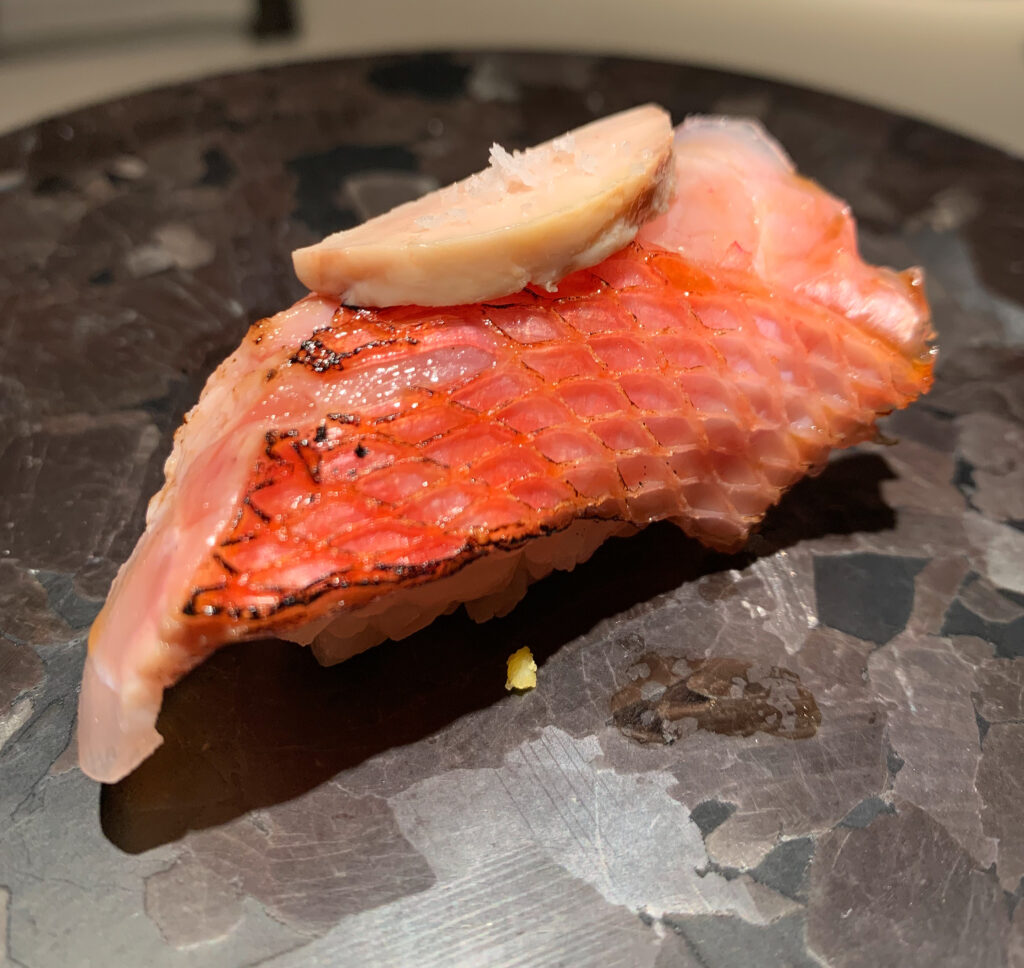
The “Kinmedai” (or golden eye snapper), when it is served, follows along the same lines. However, rather than reducing the fish’s liver into a paste, Kaze treats it more like the aforementioned “Ankimo.” The offal is formed into a solid disc, a sliver of which—sprinkled with flaky salt—is balanced on top of the piece. The kinmedai itself is sliced somewhat thickly and retains a reddish, interlaced segment of lightly seared skin running along its side. In the mouth, the golden eye snapper displays tender flesh with a slight bit of chew and a moderate amount of fattiness. The liver element breaks down easily but does not surround the fish as effortlessly or completely as that of the “Kawahagi.” Further, the kinmedai’s mild flavor is blemished by a tinge of bitterness. This makes for a bite of average quality that cannot quite live up to the filefish.
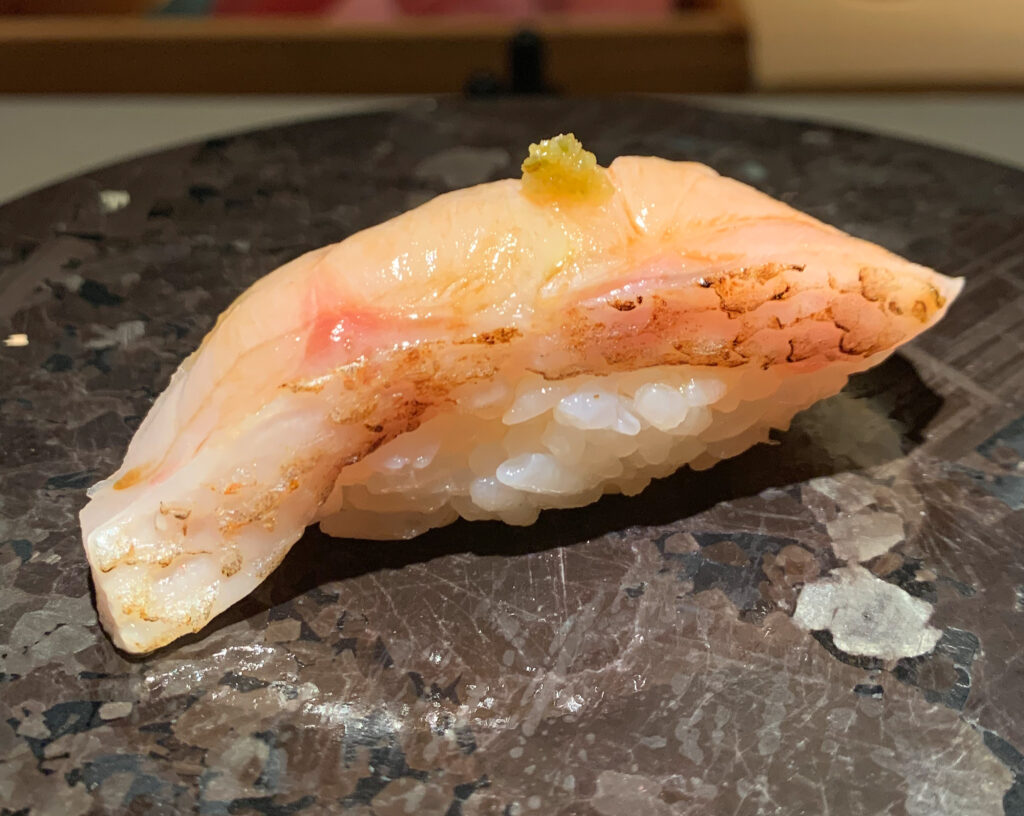
The “Nodoguro” (blackthroat seaperch), thankfully, is more successful. It is also, as Kaze reveals, Kitano’s favorite fish and one that the restaurant must pay ahead of time to reserve at the market. The piece, once again, benefits from a strip of skin running along the side that receives a light sear. However, there is no liver to be found here—just a brush of soy and a bit of yuzu koshō (a salty, zesty fermented chili condiment). This relative restraint allows the fish’s own character to shine: a smooth, superbly fatty texture married with a richly sweet flavor that, accented by the tangy-spicy topping, lasts well through the finish. The “Nodoguro” is, like the ”Kawahagi,” one of The Omakase Room’s best pieces.
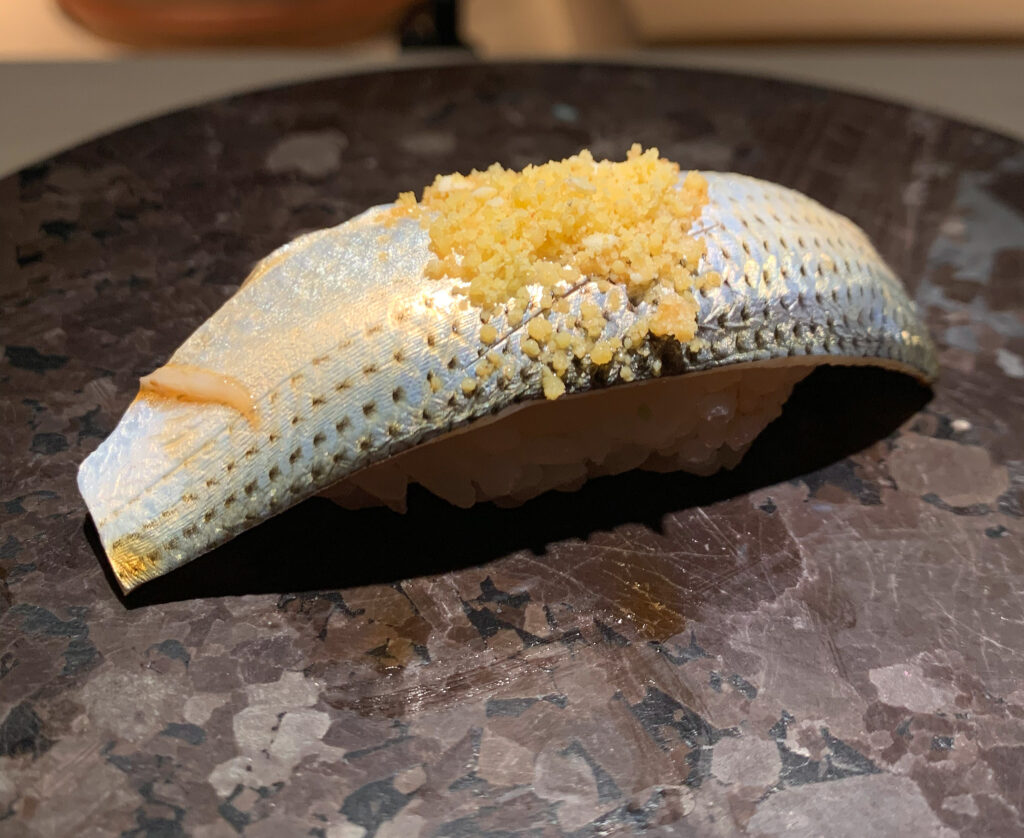
Another one of the menu’s staples is “Kohada” (or gizzard shad). Phan, at Kyōten, always speaks of how customers in Japan will sit down at a sushi bar, order this particular piece, and judge whether or not the chef’s skill merits staying for a full meal. To that point, the fish itself is considered “one of the most traditional” varieties in the edomae genre, with the ingredient typically being lightly salted and marinated before receiving a topping of crumpled shrimp paste. Kaze follows the first part of this process, curing the kohada so that its silvery flesh displays a bit more firmness. However, rather than topping the fish with the shrimp paste (oboro), the chef makes use of a tamago soboro made from crumbled pieces of the Japanese omelet he serves at the end of the meal. On the palate, this piece usually offers a robust mouthfeel with a bewitching combination of umami, acidity, and sweetness; however, on at least one occasion, the gizzard shad’s texture has been pasty, clumpy, and totally unappealing. That is a shame, for the tamago soboro would actually be a fun twist otherwise. However, this piece is one to forget.
The ”Aji” (or horse mackerel) encompasses one of The Omakase Room’s most eye-catching presentations. After forming the fish against the rice, brushing it with soy sauce, and garnishing each piece with a bit of sanshō pepper, Kaze places the nigiri on a large Lazy Susan behind the bar. In the center of the vessel sits a small bowl filled with a couple pieces of yakusugi, “1,000-year cedar” wood that is cultivated on the island of Yakushima. Using his torch, the chef sets the contents of the bowl ablaze before covering the Lazy Susan with a cloche and giving the pieces a spin. Once the smoke has had a chance to gather, he ceases the rotation, raises the lid, and allows the aroma of the ancient cedar to permeate the dining room. The overall effect is mesmerizing (though Chicagoans have seen similar tricks before at places like Juno), and Kaze utilizes the same technique when serving “Sawara” (Spanish mackerel) as well. However, both pieces—while displaying a soft, juicy texture—are just a bit boring when it comes to flavor. Neither the citric, slightly numbing quality of the sanshō or the aromatic effect of the cedar does much to amp up the savory quality of the fish or achieve some higher degree of pleasure. This amounts to a piece that is not bad but also not memorable beyond its accompanying parlor trick.
At this point in meal—right around the midpoint of the nigiri sequence—Kaze moves away from the more interesting (albeit a bit hit-or-miss) seasonal fish and wholeheartedly embraces what you might term the classics: those totemic luxury bites that totally define the craft of sushi for many consumers, inviting a kind of fetishization that perpetually seeks greater and greater peaks of pleasure. With each course, you must ask if LEYE, drawing on such largesse, really sources better product than its local competitors. Because, if they do, The Omakase Room may spoil patrons to such an extent that the city’s other examples of the form will forever fall short.
Starting off, you would say that few ingredients, even outside of the sushi genre, are as coveted today as “Uni” (sea urchin roe). It seems like every chef, no matter the cuisine they nominally serve, tries to shoehorn the bright orange tongues into this or that dish as a mark of refinement. The result, more often than not, is totally uninspiring, but conspicuous consumptive diners, much like trained seals, still applaud the uni’s mere presence. It photographs well and allows one to impress the uninitiated (even if the roe’s flavor falls somewhere between total blandness and the thrill of sucking on a dirty coin). Ideally, sea urchin should display a smooth, creamy texture with a pristinely sweet flavor that can, sometimes, be backed by a kiss of that irony, oceanic quality. Rather than raw intensity, subtlety and a long, haunting finish tend to be the hallmarks of superlative quality.
Depending on the night, Kaze sources his uni from Santa Barbara or Hokkaido. In the case of the latter, you may catch a glimpse of the tray’s cover, which features a floral pattern and a painted rendering of a geisha that acts as a kind of trademark for this particular (though unnamed) purveyor. The base of the tray, nonetheless, is set within a larger, lidded wooden box that the chef hoists onto the table and unveils like a treasure chest. This housing makes the ingredient feel more dignified and less disposable than its usual trappings (a cosmetic decision that might increase its luxury appeal with diners who find the orange tongues disgusting at first glance).
To serve the sea urchin, Kaze tops a small clump of rice with a strip of toasted seaweed. Using an offset spatula, he then carefully positions a whole lobe of the roe on top. He adds a garnish—a few shavings of black truffle in this case—then tucks another strip of seaweed under the rice so that, when the piece is placed on the Lazy Susan, its length rises well above the nigiri. The chef invites guests to grab the item from the bottom and fold the wrapper around like a taco. Compared to the usual, cylindrical manner in which uni is served, this method makes for a larger, more horizontally oriented bite comprising a layer of seaweed on top, the sea urchin beneath it, another layer of seaweed in the middle, the rice, and a final layer of seaweed on the bottom.
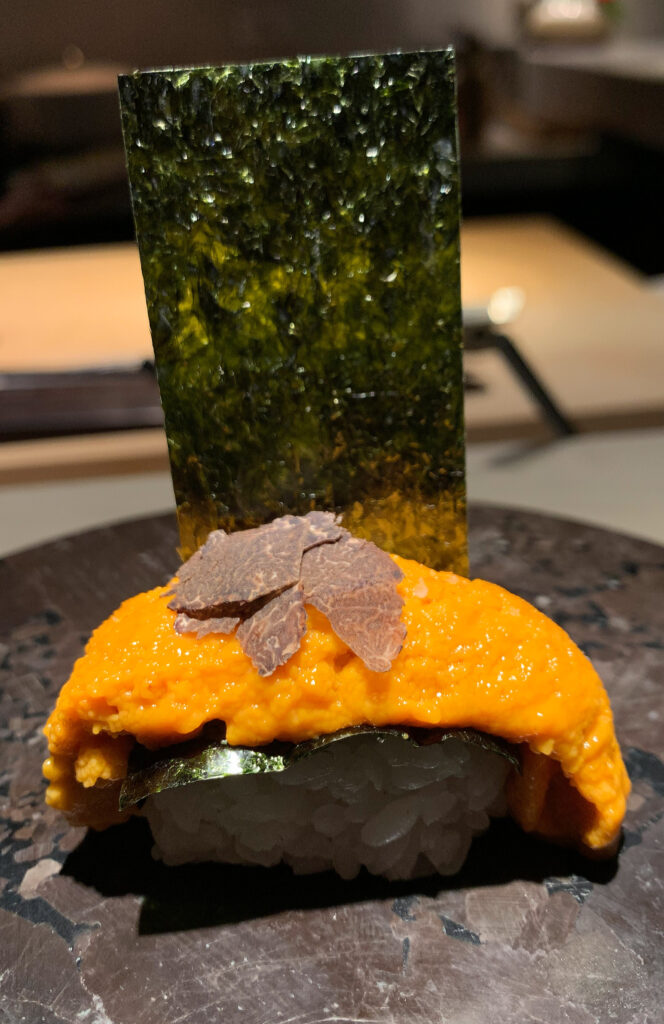
When this piece reaches your palate, your teeth shatter the brittle wrapper from both ends and allow the contents of the “taco” to mix on the tongue. The melting roe slowly seeps into the rice and lends it a slick coating. At the same time, the middle layer of seaweed finally comes through to offer the creamy grains one last contrasting crunch. Before you know it, the uni disappears down your throat and exhibits a flavor that is mildly sweet with an irony tinge and a bit of earthy backing drawn from the black truffle. This is good—as far as Santa Barbara sea urchin goes—but perhaps not to the level of “best ever.” The bite’s textural interplay is probably its greatest virtue while the truffle, which you loathe seeing used here, actually works well enough since the roe’s oceanic flavor is more robust.
On other occasions, Kaze has utilized the Hokkaido uni in a bite that mimics the same “taco” structure as before but benefits from an important addition. Rather than topping the piece with black truffle, the chef utilizes smaller lobes of ensui sea urchin that come packed in salt water and, thus, do not contain the preservatives used to prevent the ingredient from melting when arranged on the wooden trays. This “wet” roe is placed over a lobe of the “dry” roe and receives a finishing touch of fresh wasabi. Once you bite through the seaweed wrapper, the rice and uni mix on the palate in a familiar fashion; however, the Hokkaido variety is fundamentally creamier and far cleaner in flavor. You also note an appealing custardy texture, almost serving as a sauce, drawn from the ensui uni.
The sea urchin’s subtle sweetness is untainted by quite so much of that irony quality. Rather, it slowly builds against a backdrop of seaweed and vinegar. When it arrives, the ensui element brings a burst of pure uni concentration (richly sweet with a measured oceanic touch) to the table. The wasabi, in turn, drives the intensity even higher (its heat being neutralized) and helps to unleash an extra dimension of umami depth. Thanks to the “taco” form, the uni piece feels like a real mouthful and, benefitting now from a double dose of its star ingredient, leaves you licking your lips through its wondrous finish. This is certainly one of the best expressions of the ingredient that can be found in Chicago.
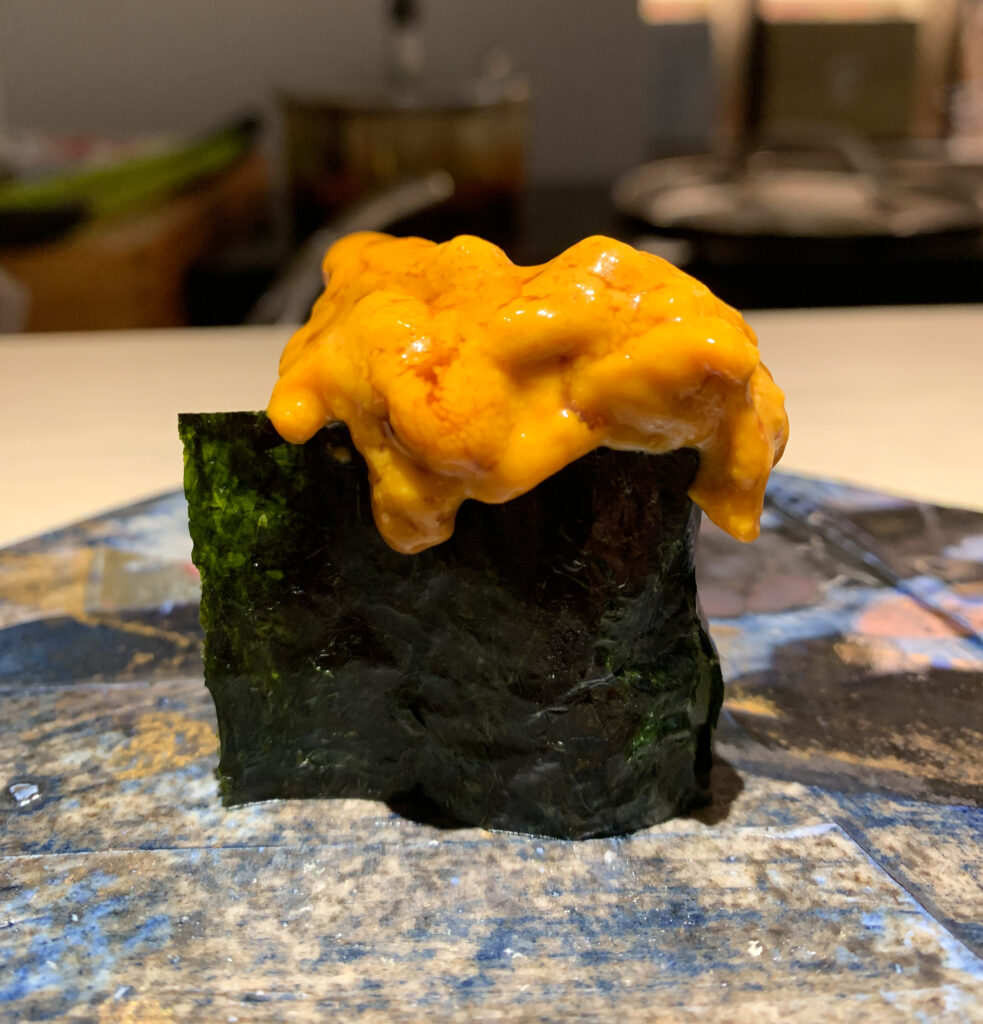
(However, you think it is worth mentioning that Kyōten, as of late, serves solely the ensui uni in what amounts to a smaller but more concentrated and wholly custardy bite. You think this expression of the roe, which comes closer to the texture sea urchin possesses when eaten straight out of the water, is the superior one. The Omakase Room reduces it to just a topping, but how much—or little—do you value the “dry” tray version of the ingredient? Your preference, based on the combination of moistness, juxtaposed by seaweed and rice, and flavor concentration, rests with the Kyōten.)
Kaze’s next course, “Hamachi Toro” (yellowtail belly), is also the chef’s signature. He pairs the fish, undoubtedly one of the most prized (and, here, the primest of cuts), with charred, diced banana peppers. This mild chili element forms a tiny topping on what is a hulking, exceptionally fatty piece of yellowtail. It almost seems too big to manage, but the fish is entirely smooth on the palate. Its flesh—lightly scored—breaks apart into glistening chunks that melt into the rice and crunch against the bits of pepper. Their sweet, tangy flavor sets the hamachi’s surfeit of fat alight and achieves an extraordinary feeling of decadence. This is an incredible signature dish and one of the very best bites of the night.
Next, the chef takes aim at a crustacean that LEYE trades extensively in (but, alas, one that has become more precious as of late). His “Kani Temaki” (king crab handroll) takes the form of a seaweed “taco” with a bottom layer of rice, a segment of leg meat in the center, and a top coating of “motoyaki sauce,” which references a mayonnaise-based sauce typically served with baked seafood. This latter element is impressively, delectably thick and is distinguished by a bit of torching. Taking a bite, the seaweed breaks cleanly and yields to the sticky grains of rice and tender chunks of crab. The crustacean is rich and sweet in the mouth, becoming even more hedonistic with a coating of the brûléed motoyaki. The sauce calls your favorite steakhouse king crab and mayo dish to mind while weaving together several satisfying textures in what amounts to a generous, comforting serving. This is another one of the evening’s best bites.
While the “Otoro Tartare” imbued the beginning of the meal with a good dose of luxury, it takes more than 10 courses for tuna to rear its head again. Now, as part of the nigiri sequence, the fish is free to reveal its fully glory across a set of three bites. The first of these is “Akami” (or lean bluefin tuna) that Kaze serves with a topping of shiitake butter. This piece is nicely portioned, comprising a long slice of the glistening red fish that hangs well over the side of its rice. The mushrooms are rendered as small, slick bits perched in the middle. Thus, when placing the akami on your palate, you can appreciate the chew of its supple, meaty flesh for a moment before the tuna yields to the concentrated umami of the shiitake butter. This latter element offers a bit of the fat that the leaner cut of fish naturally lacks, but you think its inclusion is a bit misguided. A piece of akami should celebrate its pronounced texture and flavor (relative to other cuts) rather than looking to emulate chūtoro or otoro via needless accessories. As it stands, this course is pleasant enough but pretty undistinguished as far as tuna goes.
Nonetheless, the “Chutoro Tataki” (medium fatty bluefin tuna) is much more successful. This course, rather than being served as nigiri, actually takes the form of sashimi. Two large slices of the fish are given a brief sear (in the tataki manner) then lightly marinated in black vinegar. The chūtoro is then topped with a bit of abalone sauce and a bit of flaky salt before being joined on the plate by a salad of maitake mushrooms and arugula dressed with a truffle vinaigrette. Diving in, the medium fatty tuna simply looks sublime, displaying intricate interior marbling capped off by a gently rendered, glistening exterior. Grasped with your chopsticks, the piece nearly falls apart. However, you are able to shuffle it—along with a bit of the greens and mushroom—into your mouth, upon which the fish immediately collapses and unleashes a wave of pristine fat. While you found the shiitake butter served with the akami to be heavy-handed, the combination of black vinegar, abalone sauce, salt, maitake, and truffle vinaigrette amounts to something like the quintessence of umami. It contrasts, along with that cleansing bit of arugula, the overflowing richness of the chūtoro and amounts to deep, seemingly endless savory flavor that is totally sublime. Totally stunning, this ranks as the best of the best of all The Omakase Room’s bites.
Though the “Chutoro Tataki” is a tough act to follow, Kaze looks to up the ante one more time with another serving of “Otoro.” Rather than being served as a tartare (or sashimi), the fatty bluefin tuna takes the form of nigiri. The chef tops the piece with a large dab of fresh wasabi and follows that up with an even larger spoonful of White Sturgeon caviar. The finishing touch comes from a grating of pressed caviar sourced from France—a product that compresses the roe to “around one-seventh of its original volume” and packs quite a punch when it comes to flavor. Guests are instructed to pick up the nigiri and eat it so that the wasabi-topped end is facing away from them. This ensures the otoro’s melting fat joins with the caviar (both types) first before yielding to a sharp (but balanced and not overly pungent) finish. Overall, this piece displays a rather impressive softness on the palate with a lip-smacking savory finish. It falls a bit short of the chūtoro’s total hedonism but still stands as a very good bite.
On the back of three largely exceptional servings of tuna, the last savory course of the meal turns toward beef. That makes sense, for—just as with the king crab—LEYE is slinging plenty of Japanese steak at its RPM restaurants each night. Why not bring a bit of it over to The Omakase Room to help satiate more carnivorously inclined guests? Kaze’s “Wagyu” comprises a small slice of Hokkaido Snow Beef—named thusly because the meat ages for 30 days in a “yukimoro” (or “storehouse covered with snow”) that offers a “pristine, humid” environment for tenderization. The steak, which looks like a cut of striploin, is seared over a konro (Japanese charcoal) grill to develop a slight crust. Its interior, nonetheless, remains a blushing medium rare and receives a topping of fresh wasabi and flaky salt. On the palate, the wagyu feels more substantial than the chūtoro and otoro at first but comes to melt, with a bit of mastication, in a similar fashion. The meat’s flavor, benefitting from the sprinkling of salt, is delicately sweet. The brunt of the wasabi, as with its last few appearances, is largely absorbed by all the fat. This makes for a balanced bite with some notable novelty appeal, but you ultimately think this interloping totemic luxury ingredient is not really a necessary addition having seen it offered at LEYE’s other establishments for so many years.
Kaze’s menu, nonetheless, winds down on a more traditional note with the “Tamago” (or Japanese omelette). This course’s crumbs already featured as a topping on the “Kohada.” However, here, you get a much better sense of the chef’s technique. Rather than taking the usual cuboid shape, Kaze’s tamago has more of a vaguely circular (though clearly misshapen) folded form. This falls short of examples such as Kyōten’s at an aesthetic level, but the piece does display an inner vein of unagi (or freshwater eel). This filling, along with a healthy garnish of flaky salt, distinguishes the egg’s own mild flavor with a savory, roasted quality that ends on a wonderfully sweet note. Overall, the tamago is a great bite (one of the evening’s best) even if it cannot keep pace with the homogenous, custardy texture and corn-fueled decadence of the Kyōten version.
To end the meal, Kaze returns to that most eye-catching of totemic omakase ingredients: sea urchin. His “Uni Ice Cream” comes covered in a layer of arare (“snow pellet” rice crackers) and topped with a sprig of mint. The presentation almost looks like a piece of fruit (and, indeed, the dessert will eventually be switched out for more of a “summery sorbet” soon enough). At its best, the “Uni Ice Cream” feels smooth against your spoon and melts easily on the tongue, offering a pleasing rice cracker crunch and a long, deep sweetness distinguished by a bit of the sea urchin’s oceanic character. However, on at least one occasion, the frozen treat has been much too cold and hard to scoop. It still tasted fine, but the textural nuance was gone. Thus, while you would not normally judge the dish too harshly for being gimmicky, it must be executed more consistently to avoid seeming contrived and a bit pandering.
Just as the diners dig into dessert, Kaze and Kitano bid their goodbyes and slip out of sight (a maneuver that ensures the chefs get a moment of rest before their next seating). Though the former itamae asks, after the “Tamago” course, if everyone has had “enough food,” this is typically construed as more of a joke by the audience. You imagine that someone, at this point, could force the issue and secure another morsel of this or that fish. But, like so many Chicago omakases (save for Yume with its extensive à la carte selection), the expectation is that guests will not think to ask for the kind of supplementary bites that are actually quite standard even at the highest expressions of the craft. Fair enough, you say, for Otto Phan rather painfully has to deny people when they ask (and LEYE, with a whole other restaurant downstairs, can surely scrounge something up if necessary). Plus, after some 18 courses (including a little bit of red meat), you actually feel pleasantly full.
As the lights are, yet again, raised and the staged cleared, The Omakase Room’s front-of-house team takes over from the departing chefs. They bring you your check (minus the Tock deposit and plus the 20% service charge), which features a line for additional tip. The paid receipt is returned to you in little more than a minute. Standing up from the counter, you are met back in the lounge by your jackets and an ornate printed menu—signed by Kaze and Kitano—to take home. The staff offers their own goodbye, hoping to see you again, before one of the managers leads you back down the staircase and through a Sushi-san dining room that is now, some two hours later, pulsating with energy. The two spaces feel different—of course—but not starkly so. The patrons gobble up sushi with the same carefree enthusiasm, totally unspoiled by the thought that fish, rice, and vinegar must be treated as serious business.
Some segment of this crowd may one day find themselves taking a journey upstairs, where LEYE will make them feel special but in no way unworthy. The Omakase Room is not a solemn temple fueled by personal obsession, but a space and a place where your trusted friends (the Melmans) may teach you how to take the next step in your sushi education. As you step back through the revolving door onto Grand Avenue, you reflect on your own early days eating nigiri under Kaze’s care. It was good then—and it is very good now—even if little else about the genre, here within Chicago, seems the same.
In the final analysis, The Omakase Room is undoubtedly the most consequential sushi restaurant to open in Chicago since the dawn of the “first wave” of contemporary omakase concepts (Yume, Takeya, Kyōten, Mako) from the middle of 2018 through early 2019. In the interim, the city has seen imports like Sushi Suite 202, Nobu, and—most recently—Sushi by Scratch look to secure a piece of the pie. But LEYE, knowing its target audience so well, has beaten these outsiders to the punch while, simultaneously, firing a shot across the bow of the aforementioned local favorites.
With Sushi-san serving as a successful, more casual foundation, the hospitality group has flexed its ample resources to craft an omakase experience that combines the best of all worlds. That starts with the restaurant’s lounge: a sleek, comfortable space that makes Sushi Suite’s own seating area look like a cramped hotel room (it is) and Sushi by Scratch’s pre-meal holding area feel more like a jail cell. The cocktails offered therein, while not uniformly excellent, can be quite great. At the very least, they reflect the singular creative effort of a talented mixologist rather than (and again you point to Sushi Suite) comprising classic drinks with a contrived Japanese twist. You may also, at this point, mention The Omakase Room’s whisky collection. The distilled beverage does not, for you, form an obvious pairing for sushi, yet the assortment of bottles is sure to thrill certain aficionados (and probably numbers more than those offered by all the other restaurants in the genre combined).
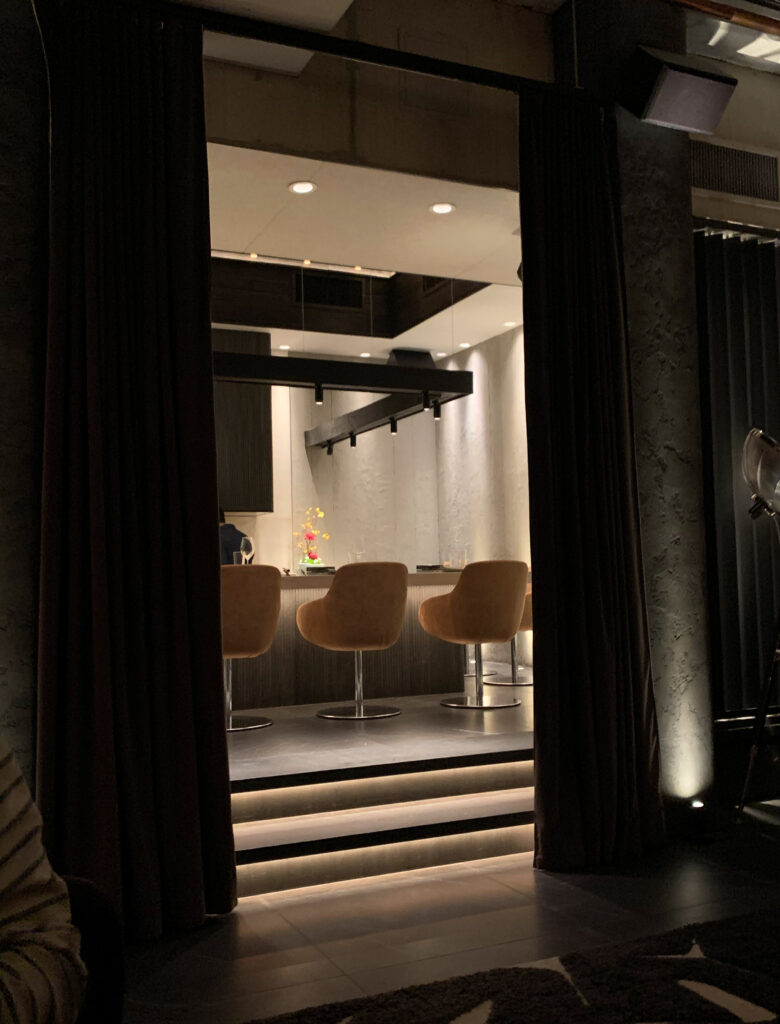
Moving into the dining room proper, The Omakase Room’s interior design shines in its full glory. Kyōten and Mako, depending on each diner’s particular taste, may arguably keep pace with their own, more traditional aesthetics. However, you think LEYE holds an obvious advantage when it comes to creature comforts like seating, chopsticks, glassware, and those much-touted Lazy Susans. When it is time for the meal to start, the lights are dimmed, and an upbeat electropop soundtrack (the same kind played at Aba or the RPMs) takes hold. You get the sensation, perhaps more than any other omakase in Chicago, that you are watching a performance. Yet, the room is engineered in such a way as to allow your focus to fade in and out. The show, in this manner, is staged for your pleasure but does not try to command your full attention. Rather, the evening remains—first and foremost—yours to share with your guests. Any further engagement with the mechanics of the craft is wholly left to your discretion.
The Omakase Room’s front-of-house team, too, is there to conduct your experience with plenty of foresight and an effortlessly soft touch. Certainly, the restaurant enjoys a numerical advantage when it comes to staffing—one that allows each server to pause, probe, and pursue some sincere connection with customers. But LEYE’s ability to train and empower its employees remains the gold standard in Chicago. Everyone working at The Omakase Room—a crew that, importantly, includes Sushi-san’s managers and the concept’s own managing partner—seems genuinely enthused about sharing the experience with guests. The do not set a foot wrong the whole evening or abide a single awkward moment. Instead, they operate with the kind of all-seeing anticipation that makes you forget they are there (at least until it is time to share an intricate description of the wine or sake you are about to drink). The level of service at Chicago’s other omakases may typically be high, but LEYE brings a level of confidence and polish to the equation that simply isn’t matched anywhere else.
As you prepare to take your first bites, the beverage selection beckons. The Omakase Room does not only offer a wider range of pairings (including non-alcoholic) than anyone else, but the constituents—at least as far as the wine aspect goes—are also more smartly chosen and provide greater value than those offered by competitors. The sake list surpasses that of Mako and—while Park’s restaurant beats LEYE’s pricing on one notably expensive bottle—generally maintains the same low markups. The same rings true for The Omakase Room’s wine by the bottle selection. Its chosen producers may not be as unique as Kyōten’s, but they offer a better balance of options at the same appealing prices.
When it is time to eat, Kaze and Kitano introduce themselves with a toast: a gesture that sets the mood and places the chefs somewhere between the stoic character of Park (of Yume) or Park (of Mako) and the ostentatious quality of Otto Phan or Philip Frankland Lee. LEYE’s senior itamae are friendly and funny while remaining unflappable and totally devoted to serving their guests. They are always curious to know how their food is perceived (without any trace of ego) and quick to offer thoughtful extras (like an additional piece of toast to enjoy with your “Otoro Tartare”). Kaze and Kitano also describe their various ingredients well. You would maybe like to see a bit more storytelling at times (or some better way of distinguishing various unfamiliar fish from each other), but they do a far better job of educating guests than the chefs at Yume or Mako. You would also like to note Kitano’s penchant for physical comedy and the degree of intention that guides his gestures behind the counter. As the “secondary” or “supporting” chef (and the one that seems less comfortable speaking English), he still offers a performance that is more natural and engrossing than either of the Parks.
When it comes to the sushi itself, Kaze and Kitano possess a style that is less strict and traditional than Yume, Takeya, or Mako while showing more restraint than a place like Sushi by Scratch. The chefs make use of wild fish from the Toyosu Market but do not claim any particular fidelity to the edomae school. Instead, their nigiri is characterized by the careful application of interesting toppings like liver, tamago crumbs, banana pepper, motoyaki sauce, shiitake butter, truffle vinaigrette, and caviar (both “fresh” and dried). These elements, while novel, still generally retain some connection to Japanese cookery. They allow the chefs to complement their fish with more assertive, appealing flavors that enhance the enjoyment of nigiri for those who do not (yet) fetishize purity. The menu, meanwhile, changes a fair amount (with about a third of the pieces being different between each visit). Half the menu—comprising many of omakase’s most coveted bites—does not seem to change at all. However, these expressions of “Uni,” “Hamachi Toro,” “Kani Temaki,” “Akami,” and “Chutoro Tataki” rank among the best in the city and do seem worth preserving in the chefs’ arsenal.
Other touches, like the pickled ginger and freshly grated wasabi, meet the standard of The Omakase Room’s rivals. However, dishes like the “Otoro Tartare” and “Uni Ice Cream” work to infuse the fringes of the menu with a degree of luxury that cannot be found elsewhere. Ultimately, these preparations did not blow you away, but you think they will put smiles on most guests’ faces while also pleasing the conspicuous consumption crowd. Further, while not executed perfectly, they are far from seeming cynical or sloppy in their use of totemic luxury ingredients. Rather, LEYE wants its patrons to feel especially spoiled compared to any other omakase in town. At the cost of offering courses that are a bit more distinctive, The Omakase Room succeeds: its best pieces (“Hamachi Toro” and “Chutoro Tataki”) achieve higher peaks of pleasure than anything you have ever been served at Yume, Takeya, or Mako.
With all of this in mind (not least of which the concept’s premium price point), The Omakase Room has clearly catapulted itself to the upper stratum of its genre. You are even comfortable terming the restaurant the second best of its kind in Chicago. However, your highest rating eludes it for a few key reasons.
First, as a late entrant into the high-end omakase game, LEYE must be judged more harshly than its rivals: mostly independent business owners of relatively miniscule size. The hospitality group has woven together elements like the lounge (seen at Sushi Suite), the “Otoro Tartare” (taken from Masa), the “Uni Ice Cream” (a recipe that has been around for at least a decade), and the interesting toppings (a gimmick you largely associate with lower expressions of the craft) that are largely derivative (or, at least, unoriginal). They have combined them with a slick setting, some wonderful service, and a couple unique touches like Lazy Susans and an opening sake toast. But your expectation was that The Omakase Room would be a very good example of the form, and the restaurant has indeed met those expectations without blowing you away.
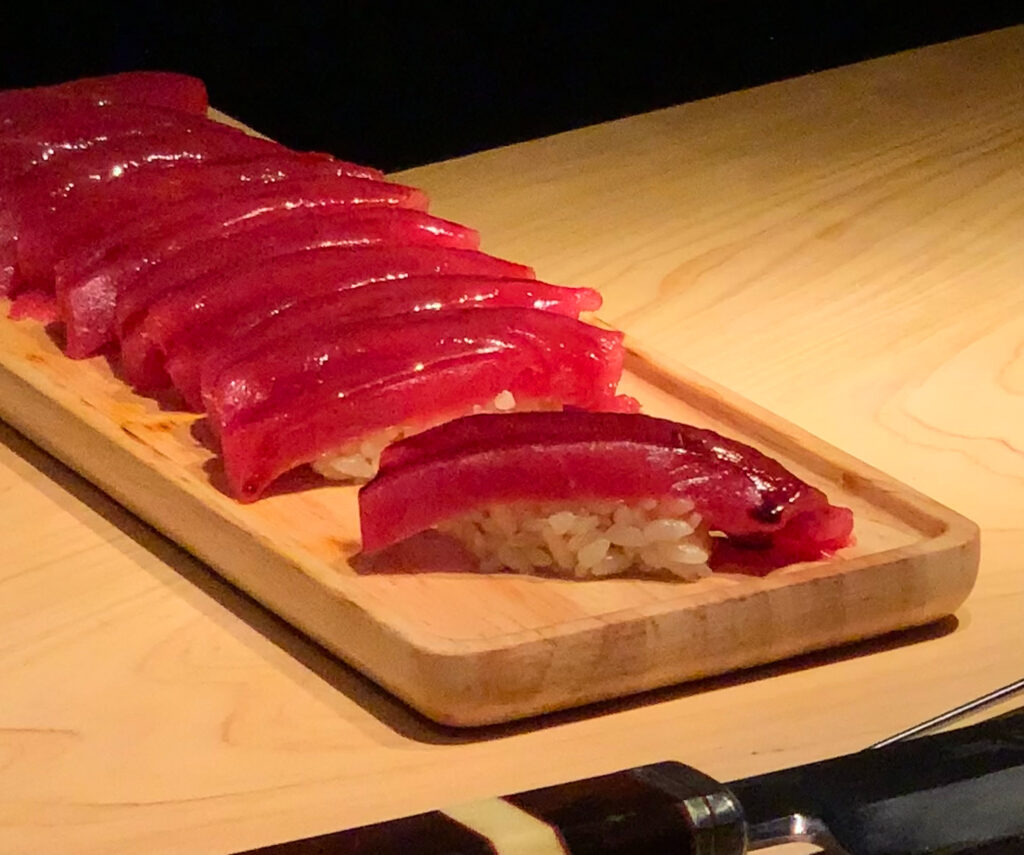
Namely, the insistence on mass-producing nigiri for the sake of efficiency is a big letdown. This decision totally discounts the textural nuance that freshly formed, properly warmed rice can display. It transforms the grains into mere onlookers—sticky, interchangeable pedestals for fish—rather than a key player in best expressing the nuances of each coveted ingredient. You get it: Yume and Mako and everybody else in town (save for Kyōten) do the same thing. Michelin has already demonstrated they do not care (though perhaps inspectors in a more major city would). The Omakase Room will earn a star (and wholly deserve it).
But it is hard to escape the feeling that LEYE is playing down to Chicagoans because they know most of the population will not notice they are shirking one of the most important dimensions of the craft. Instead, the hospitality group sees a gap in the market and money to be made. All it takes are some nice trappings, a friendly attitude, and a good dose of luxury to surpass the competition. Yet you cannot say The Omakase Room is really advancing sushi appreciation at a technical level. Yes, the concept will succeed in getting people through the door who would struggle at some of the city’s more stark, silent counters. It will help cultivate a basic level of appreciation that will, perhaps, lead to increased patronage of other establishments (present and future). However, it is not truly aiming to offer “the best omakase in Chicago”—the rice precludes that. It is looking to offer the best overall experience with sushi that is good (or luxurious) enough to impress Yume or Mako patrons because that’s where the money is.
You really do think that Kaze and Kitano are kind and talented craftsmen. They make you comfortable, and their counter is sincerely one of the most enjoyable to sit at in Chicago. However, as mature “master” sushi chefs, the two are totally settled in their style. They serve an ever-evolving array of fresh fish with a range of interesting toppings and a keen—if not dogmatic—sense of Japanese tradition. They are not looking to interrogate certain fundamentals regarding how to age or score their seafood. They are not, given their restaurant’s target demographic, going to work with polarizing delicacies like milt. There is a certain safety (a lucrative one) to the way they work. That is a very good thing for entry-level customers but vexing for those who have been to the mountaintop. Why would anyone who has been to Masa want to eat a clearly inferior version of his signature dish? How could anyone who has indulged in Manhattan or Ginza’s finest tuna stomach seeing it topped so aggressively?
The point here is not, once more, to gloat that a Chicago omakase cannot measure up to some cherished meal in a more major market. Rather, it is to affirm that participating in the “arms race” of offering luxurious—rather than singular, idiosyncratic—sushi is a losing game. A great omakase should express some personal vision of how to handle fish and rice (not to mention which sort of product to handle in the first place). It should be defined by small, unique details rather than explosions of umami drawn from mushrooms or butter. You may have enjoyed The Omakase Room’s tuna pieces, but its tricks are destined to become boring. Its tricks stand in the way of developing a more distinctive and valuable (at a national level) approach to the craft. That can only occur when chefs focus on the fundamentals of sourcing, aging, slicing, and forming fish onto rice (one at a time!) for guests. Kaze and Kitano, perhaps, are victims of working so long in a city that did not desire anything more than interesting toppings.
When it comes to the experiential aspect of the meal, you will admit that the Disneyfied LEYE corporate style is not something to take for granted. In its highest expressions—like L2O, Tru, and Everest—it could feel quite magical. Even today, it offers an enviable guarantee that you—and just about anyone—are going to have a good evening. You have praised The Omakase Room’s front-of-house staff both mechanically and for their sincerity. Their enthusiasm for the concept—which, in its intimacy, must be the most exciting in the group to work at—is totally canny.
Kaze and Kitano, too, are humble and very easy to get along with. They put on a show that is infinitely more interesting than what goes on at Yume or Mako. The Omakase Room’s chefs do not abide by the pretense that itamae must be serious. Their informal tone, the shared sake toast, the humor, the gentle education in the genre they provide, some flashes of salesmanship (affirming how good a certain ingredient is), and a genuine desire to please make what B.K. and Sangtae Park seem stiff. Of course, the quiet craftsman act can be quite thrilling to watch when you truly feel you have an audience with a master. Spotting an obvious shortfall in their approach (like the mass formation of the rice and fish) totally spoils that emotion.
This is to say, Kaze and Kitano entertain you well enough to more adeptly gloss over how they have compromised on pursuing the ultimate expression of their craft. By not taking themselves seriously (quite the opposite), they become instantly relatable (and thus, from your more critical perspective, forgiveable). They are not touting “the best omakase in Chicago” (though certainly pursuing it), but devoting themselves to “demystifying” omakase for the good of the city’s diners. Kaze and Kitano play the roles they have been given beautifully, fulfilling exactly how LEYE has branded the space. The chefs, no doubt, draw on decades of serving sushi to Windy City denizens. They show bursts of personality (like the Swatch and sets of beads that adorn Kaze’s wrists), but these roles are still a corporate construction. They are essential collaborators in a larger project titled The Omakase Room that has many other moving parts. Ultimately, you can feel how this inhibits the sort of connection you might possibly make.
Mako, with an errant chef, feels rather impersonal to you. Yume, however, puts forth that feeling of a chef-owner—always present when the restaurant is open and accompanied by his wife—who is welcoming you to step into his entire life. This sense of intimacy excuses some of his seriousness behind the counter. Otto Phan, at Kyōten, operates on an even smaller scale (assisted by his loyal factotum) with an edge that is quite abrasive to some. The thought that a chef may be prone to spoil a nearly $500 per person meal with a few careless (even if wrongly interpreted words) is hard to stomach. But, upon reflection, it is really rather funny. The popular consciousness loves its shouty chefs, especially when Phan is never crude but only arrogant and opinionated. Your interactions with the chef of Kyōten are raw like the fish and can strike you—when he offers the kind of insight that no “respected professional” ever would dare reveal—with the same intensity as a perfectly aged piece of tuna.
Yes, The Omakase Room just feels a bit contrived when there is another restaurant in town that—without the backing of a massive hospitality group—offers bolder, more adventurous sushi from a chef who pulls no punches as he pushes the limits of his craft and invites guests to get to know the real him. Kyōten, surely, is not for everyone: it takes time (if it ever happens) to come to prize depth and dynamism over the many comforts the make a dinner (shared with dear guests) a magnificent social occasion. With The Omakase Room, LEYE has undoubtedly cornered this segment of the market and put places like Sushi Suite and Sushi Scratch to Shame. This advantage, combined with great food, drink, and service, surpasses (as you have already said) Yume and Mako too.
Nonetheless, this is not the Lettuce Entertain You—as one wannabee critic contrived it—of Everest, L2O, and Tru. There is no risk here, no effort to pull Chicagoans by the scruff of the neck—ready or not—toward an expression of omakase that is truly of a national caliber. LEYE could have tried to lure a young Japanese chef—a bright prospect of impeccable pedigree (à la Nakazawa)—over to helm this concept. Such a move would have been rather disloyal to Kaze, but the group is also clearly scared about dealing with another auteurcheflike Laurent Gras. That, however, is a real risk, and it would lend The Omakase Room the emotional dimension it is lacking. It would also, most certainly, lead to sushi of greater distinction. However, there is still an incredible amount to be proud of here. The Omakase Room offers one of Chicago’s finest experiences with many decadent—if not truly transcendent—bites. You think even a sushi snob could find something to like.


